
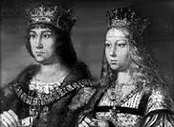





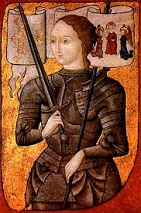



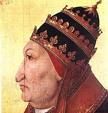
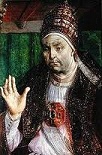





































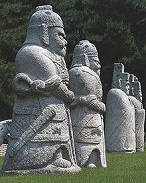





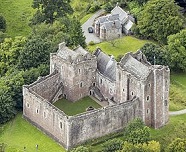
1400 Pop.: London: 50K, Cologne: 30K, Nuremburg: 20K, Lubeck: 20K. By this time voyaging contacts of Hawaii with CE Polynesia (Tahiti, Samoa, Tonga, Cook and Society Islands) end because of loss of some necessary resting atolls, after which pop. growth causes settlement expansion in the arid leeward zones and the upper dry-land forests, while social classes and tribes emerge. The last major plague outbreak in Europe occurs (1347, 1361, 1369, 1371, 1390). Agriculture in Europe begins to slowly recover from the effects of cents. of loss of arable land to floods, famine, plague, and war. Capitalism begins its rise in Europe in Venice, Flanders, and Florence - there's horns everywhere? On Feb. 15 deposed English king Richard II (b. 1367) is murdered while imprisoned in Pontefract Castle, ending the main Plantagenet line (founded 1154), although the cadet branches of Lancaster and York are still kicking (until 1485). In Apr. Byzantine emperor Manuel II begins a 3-year tour of Europe to drum up support, starting with Venice, then Padua, Vicenza, Pavia, and Milan, followed by Paris as a king of Charles VI, then London, where Henry IV is wowed by his regal splendor. On Aug. 21 after failing to show up to answer charges of failing to maintain the peace or resolve the Great (Western) Schism of 1378, good king Wenceslaus, er, not-so-good German king (since 1376), Bohemian king (1378-1419), and HRE (since 1378) Wenceslaus (Wenceslas) (Wenzel) IV (the Drunkard) (the Lazy) of Luxembourg (1361-1419) looks down and is deposed from the German throne by the electors, but never waives his title, and on Aug. 21 Rupert (Ruprecht) (Robert) III of the Palatinate (1352-1410) becomes German Wittelsbach king and uncrowned HRE (until May 18, 1410). In Aug. Henry IV invades Scotland to stop border raids; Scottish king (1390-1406) Robert III (1337-1406) doesn't concede defeat, and it becomes a stalemate. On Sept. 16 Welsh supporters of Richard II rebel against Henry IV in the Owen Glendower (Glyndwr) Revolt (ends 1412), with the rebels rapidly gaining control of large areas of Wales, only to find them difficult to defend sans artillery and ships; in Sept. Welsh gentleman Owen Glendower (1359-1416) is proclaimed prince of Wales, causing Henry IV to move his army into Wales in Oct., but he is outfought and there is another stalemate. On Nov. 28 after killing many rivals and relatives to gain power, Taejong (Yi Bang-won) (1367-1422), 5th son of Taejo becomes king #3 of the Chosun (Joseon) Dynasty (until Sept. 9, 1418), going on to become an effective ruler, promoting commerce, education, and printing, fighting off the Jurchens on the N border and Japanese pirates on the S coast, raising eyebrows with his passion for hunting. Henry IV is in radio hell out of the starting blocks? On Dec. 25 (Xmas) a group of English nobles (barons) backing Richard II hatch a revolt against Henry IV in Windsor, planning to assassinate him and his sons in their sleep at yuletide, but even though the assassins gain entrance to the castle, the intended victims escape, and the conspirators are defeated. The gang's all here? Robert III's son and heir David Stewart, 1st Duke of Rothesay (1378-1402) seizes customs revenue, and begins trying to remove officials loyal to his uncle Robert Stewart, Duke of Albany (1339-1420), turning the latter against him; Rothesay then hooks up with the daughter of the earl of Douglas, causing the earl of March to call in Henry IV of England, who marches to Edinburgh with an army making vague claims to the Scottish throne, then leaves, giving Albany an excuse to begin circulating stories about Rothesay being a power-mad degenerate lecher and Hun. Duke Gian Galeazzo Visconti of Milan takes Assisi, Perugia, and Lucca, spends 300K golden florins to keep the Mincio family from taking Mantua and the Brenta family from taking Padua, and goes after the remaining big jewels of Bologna and Florence - how many lucky numbers separate you from millions? Fresh from the Delhi after a stop in Samarkand to store his loot, Sunni Muslim Mongol conqueror Tamerlane (Timur-i-Lang) (Temur the Lame) (1336-1405) heads toward Egypt on his last great conquest, restoring control of Azerbaijan, then invading Syria and sacking Aleppo. Henry III of Castile sends a fleet that destroys the pirate base of Tetouan (Tétouan) in North Africa (modern-day Morocco). Ho Quy Ly (1336-1407) ends two decades of strife and wars in Vietnam, seizing the throne, although he is not widely accepted. The Nilotic Maasai people migrate S from the lower Nile River valley N of Lake Turkanasa to a long trunk of land stretching from modern-day N Kenya to C Tanzania by the 17th-18th centuries, covering almost the entire Great Rift Valley from Nount Marsabit S to Dodoma, becoming the southernmost Nilotic speakers, living by cattle-raising and becoming known for their throwing clubs (orinka), accurate 100m (70 paces). About this time the Nguni people (Ndebele, Swazi, Xhosa, Zulu tribes) known for their large herds of Nguni cattle, male-dominated clans, and click languages picked up from San hunters migrate S from Sotho-Tswana and Tsonga to the Great Lakes region of C/SE Africa. Early in the cent. a rebellious Bosnian chieftain seizes the Hum region of Bosnia and establishes it as the independent duchy of Herzegovina ("independent duchy"), the name first officially used by the Ottomans in 1454; the capital is Mostar (until 1466). Malay Hindu prince Parameswara (Sansk. "supreme voice") (1344-1414) of Temasek (Singapore) is expelled by pirates from Majapahit, going on to found the Muslim trading kingdom of Melaka (Malacca) on the Malay Peninsula by 1402, and converting to Islam under the name Iskandar Shah, greeting Chinese adm. Cheng Ho in 1409. In this cent. Muslim trading states are established in Luzon and the S Philippines. In this cent. Burgos becomes the commercial center of Castile. In this cent. the Maasai migrate from the lower Nile Valley N of Lake Turkana to Kenya and Tanzania. In this cent. the Am. Great Plains, sparsely inhabited for cents. because of severe drought begin to become inhabited again as the climate begins to return to normal. There are 55 breweries and 86 malt houses in Bohemia. The Egyptians and Persians largely give up brewing of spirits under Muslim influence - except for stomach ulcers? About this time Renaissance Humanism gets off to a fast start, reviving classical learning and speculative inquiry, displacing Scholasticism as W Europe's main philosophy, and taking the monopoly of learning from churchmen, letting laymen into the equation, which soon causes the very basis of Church dogma and tradition to come under the microscope; too bad, by the middle of the cent. the pendulum swings, bringing Witch Mania, which causes thousands of mostly women to be executed until the late 17th cent. In this cent. Evora (Évora) (ancient Ebora) 68 mi. SE of Lisbon becomes the residence of the Portuguese court (until the 17th cent.). The Middle and Upper Mississippi Phases of mound bldg. in North Am. begin. In this cent. Rangitoto Volcano in New Zealand (near modern-day Auckland) is born, destroying a nearby Maori village. Wolves are still attacking Parisians well into this cent.? The Burgundian Era in Western Music begins (ends 1474). The Early Renaissance Period of Art begins (ends 1500). About this time in in Europe high class men and women begin wearing elaborate coiffures, and men curl their beards and form them into living statuary with gum and other goop; English women begin to let their hair hang down the back in curls, although some keep it in a caul or turban - talkin' about my girl? In this cent. a law is passed in Venice requiring gondolas to be painted black - ask Mick Jagger? In this cent. ecclesiastical drama flourishes in Italy. In this cent. the earliest known lit. in the Cornish tongue is written. About this time the English word "akimbo" is coined. In this cent. the Grim Reaper is first mentioned in England. In this cent. the Great Vowel Shift begins (ends 1750), changing the vowel system of Middle English into that of Modern English; long high vowels change to diphthongs, and long mid and low vowels are raised in their tongue positions. In this cent. the English letters U and V (heretofore used interchangeably) begin to diverge, with U becoming the cursive form. The Medieval (Low) Period of Latin (begun 535) ends, and the New (Modern) Latin Period begins, with Renaissance writers returning to classical Ciceronian Latin, making it the internat. language of science, religion, philosophy, lit., and diplomacy (until 1700); after 1700 it is used only by classical scholars and Roman Catholics. The term Hortus conclusus (Lat. "enclosed garden") suddenly appears in poetry and art as a title of the Virgin Mary, taken from Song of Solomon 4:12. The Hope Diamond is mined late in this cent. from the Kistna River in SW India, put in the forehead of an Indian temple idol, then stolen by a Hindu priest, who is caught and tortured to death; by the time it ends up in the Smithsonian in the 20th cent., at least 20 die because of it. In this cent. the Hungarians form the Hussars, a light cavalry named after the Corsairs. In this cent. alchemy becomes the field of choice for swindlers and golddiggers. In this cent. Plough Monday (first Mon. after Twelfth Day or Epiphany) is first mentioned as the start of the English agricultural year, complete with celebrations featuring a plough hauled from house to house in a procession collecting money accompanied by musicians, an old woman called Bessy, and a Fool. Sports: In this cent. the game of Billiards (Fr. "billart" = wooden stick") is first played in N Europe after evolving from a lawn game, hence the wooden table with green cloth; it takes until the end of the 17th cent. to develop a cue stick by turning the big-headed mace backwards? In this cent. card games become popular throughout Europe. Architecture: In this cent. Ballyhack ("Gael. "townland of the stable") Castle in Waterford Harbor in County Wexford, Leinster, Ireland is built by the Normans (Knights Hospitalers?). The Sedlec Church of All Saints in Kutna Hora, Czech. is built on the site of a graveyard where Ottokar II of Bohemia sprinkled dirt from Golgotha in 1278, and it is decorated with bones from the cemetery, bursting with skeletons from the Black Death. Doune CAstle in Stirling, C Scotland 8 mi. NW of Stirling at the confluence of the Teth and Forth Rivers is built by Robert Stewart, Duke of Albany (1340-1420) on lands granted him when he was created earl of Menteith, with a charter sealed in 1381. The Incas begin putting stone-walled terraces (andenes) in the steep slopes of the Andes. Early in this cent. the Church of St. Peter and Church of the Holy Ghost are built in Heidelberg, Germany, capital of the Palatinate, which becomes one of the main strongholds of German Protestantism. Inventions: In this cent. windmills in Europe begin to be used for tasks other than grinding grain, incl. land dranage. In this cent. the baker's mark begins to be used in Europe. In this cent. the Dulcimer is first mentioned. In this cent. Italy and Britain begin issuing the world's first Patents. In this cent. Knitting is allegedly invented in Scotland - eat my kilt? Nonfiction: About this time Medulla Grammatica, a glossary of difficult Latin terms with Anglo-Saxon explanations is pub. In this cent. the grimoire (magician's handbook) Munich Manual of Demonic Magic is written. The oldest surviving copies of Thirteen Treasures of Britain and The Twenty-Four Knights of King Arthur's Court date to about this time. Music: The popular Danish ballad By the Turret Stair is composed: "Run, run, little page, tell your lady fair/ That her lover waits by the turret stair". In this cent. secular Jewish Klezmer music is developed for weddings and celebrations, with lyrics in Yiddish. Plays: This is the English cent. of the morality play, usually anon.; early in the cent. the morality play Castle of Perseverance (1440) is produced; later Hyckescorner is produced, followed late in the cent. by Mankind; the #1 hit is Everyman (1510) (taken from a Dutch source), about Everyman journeying to the Valley of Death and losing all his Material Riches but becoming content with Good Deeds. Births: Spanish bishop of Avila (1449-) Alonso Tostado (Toswtatus Abulensis) (d. 1455); educated at the U. of Salamanca; known as the wonder of the world for his great memory and vast knowledge, causing the phrase "to know more than Tostado" to be coined. Dutch Burgundian (Franco-Flemish) composer Gilles Binchois (de Binche) (de Bins) (d. 1460). English Yorkist leader (chancellor in 1454-9) Richard Neville, 5th Earl of Salisbury, 7th and 4th Baron Montacute (d. 1460) in Raby Castle, Durham; 3rd son of Ralph Neville, 1st Earl of Westmoreland (1364-1425) and 2nd wife Joan Beaufort (1379-1440); husband (1425-) of Alice Montagu (1407-), daughter of Thomas de Montacute, 4th earl of Salisbury (1388-1428); father of Richard Neville, 6th earl of Salisbury and 15th earl of Warwick (1428-71), and George Neville (1432-76). Spanish Franciscan missionary (Canary Islands) (St.) Didacus of Alcala (Alcalá) (Diego de San Nicolas) (d. 1463) in San Nicolas del Puerto, Seville; feast day: Nov. 7/13. Greek Byzantine historian Doukas (Dukas) (Lat. "dux" = leader) (d. 1463). German printer Johann Fust (d. 1466). Italian (Venetian) painter Jacopo (Iacopo) Bellini (d. 1470) in Venice; father of Gentile Bellini (1427-1507) and Giovanni Bellini (1428-1516). Hindu sage Ramananda (d. 1470). Greek ecumenical patriarch of Constantinople (1454-64) Gennadius II Scholarius (d. 1473) in Constantinople; big fan of Aristotle, and enemy of Plato fan Gemistus Pletho. Ottoman historian Ashikpashazade (Ashik Pasha-Zade) ("son of Ashik Pasha") (d. 1484) in Amasya; great-grandson of mystic poet dervish Ashiq Pasha (1272-1333). Deaths: Scottish nobleman Archibald "Black Douglas, 3rd earl of Douglas (b. 1328) in Threave Castle. Chinese novelist Luo Guanzhong (b. 1330); leaves Romance of the Three Kingdoms (800K words, 120 chapters), set in the Three Kingdoms (Cao Wei, Shu Han, Eastern Wu) era of 169-280 C.E., covering 1K dramatic chars, becoming the Shakespeare of Chinese lit.; also leaves (with Shi Naian) Outlaws of the Marsh (Water Margin), becoming the first two of the Four Great Classical Novels of China along with "Journey to the West" and "Dream of the Red Chamber". French chronicler-traveler Jean Froissart (b. 1337); leaves Froissart's Chroniques (Chronique de France, d'Angleterre, d'Ecosse et d'Espagne) (Chronicles of France, England, Scotland and Spain) (1.5M words), covering from the deposition of Edward II in 1326 to 1400, becoming the chief description of the chivalric culture of 14th cent. England-France and the Hundred Years' War; incl. personal accounts of the 1367 baptism of Richard II in Bordeaux, the 1380 coronation of Charles V in Rheims, the 1386 preparations for the invasion of England in Sluys, the 1389 marriage of Duke John of Berry and Jeanne of Boulogue in Riom, and the 1389 joyous entry of French Queen Isabeau of Bavaria to Paris; too bad, they are filled with errors; he has "marvelous little sympathy" for the "villain churls" (Sir Walter Scott); first known mention of the verge escapement for clocks. English "Poet of the Dawn", "Father of English Poetry" Geoffrey Chaucer (b. 1343) on Oct. 25 in London (murdered by Archbishop Thomas Arundel's men?); first lit. figure buried in Westminster Abbey, where he lived in some apts., and the first in Poet's Corner; leaves the unfinished Rime of Sir Thopas, a burlesque ridiculing medieval romances, and his magnum opus The Canterbury Tales (17K lines, 40K words), making Midland English respectable after recasting the former Anglo-Saxon dog vocabulary with Continental touches and creating English versification; contains only 24 of 120 planned short stories from an ensemble of 30 characters (two each on the way to Canterbury from London, two on the way back, with the winner to get a free supper): the Knight, the Nun's Priest, the Pardoner, the Wife of Bath (5 husbands), the Nun, Lawyer, Student, Cook, Merchant, Squire, Physician, and Chaucer himself; "The rotten apple injures its neighbors"; "Whan that Aprille with his shoures soote/ The droghte of Marche hath perced to the roote,/ And bathed every veyne in swich licour"; coins the term "mind's eye" in The Man of Law's Tale. English royal mistress (of Edward III) Alice Perrers (b. 1348). English king (1377-99) (deposed) Richard II (b. 1367) on Feb. 15 in Pontefract Castle (murdered); the last Plantagenet king (ruled since 1154); a hole is left in his tomb so that people could touch his royal head, and in 1776 somebody steals his jawbone?

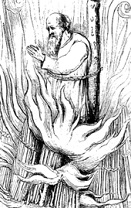


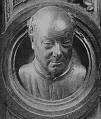

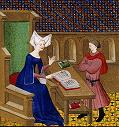

1401 Henry IV gives his 13-y.-o. son Prince Henry (b. 1387) the dirty job of defeating Owen Glendower in North Wales; Sir Henry "Harry "Hotspur" Percy (1364-1403), son of Sir Henry "Hotspur" Percy, 1st earl of Northumberland (1341-1408) (descendant of Henry III) is assigned as his guardian, but he resigns in June after getting pissed-off about not being paid. So you're a tick? Light the wick? Early in the year to bolster his hold on the throne, English king (since Sept. 30, 1399) Henry IV (1367-1413) sides with the bishops' persecution of the Lollards, beginning with the no-shades-of-grey act of Parliament titled De Haeretico Comburendo ("On the Burning of the Heretic"), providing for the burning of heretics (them), starting with Norfolk priest Sir William Sawtrey, who is carbureted on the herestick in Mar.; "Divers false and perverse people of a certain new sect...they make and write books, they do wickedly instruct and inform people... and commit subversion of the said catholic faith"; "That this wicked sect, preachings, doctrines, and opinions, should from henceforth cease and be utterly destroyed..."; "That all and singular having such books or any writings of such wicked doctrine and opinions, shall really with effect deliver or cause to be delivered all such books and writings to the diocesan of the same place within forty days from the time of the proclamation of this ordinance and statute... And if any person... such books in the form aforesaid do not deliver, then the diocesan of the same place in his diocese such person or persons in this behalf defamed or evidently suspected and every of them may by the authority of the said ordinance and statute cause to be arrested" and "be burnt, that such punishment may strike fear into the minds of others..."; repealed in 1559 and Mar. 1677. One Muslim keeps another Muslim from finally taking the thousand-year Christian stronghold of Constantinople, I guess Allah is schizo? Just as Beyazid I is about to take Constantinople, which is defended by foreign troops under Hungarian king (since 1387) Sigismund I (1368-1437), Tamerlane sacks and burns Damascus after exacting a large tribute from its residents, then slaughters most of them, causing Beyazid to end the siege early next year to defend his country; after deporting thousands of artisans and religious scholars to Samarkand, leaving the Syrian economy in the timid lane, he sacks Baghdad. Duke Gian Galeazzo Visconti of Milan routs Elector Rupert III, who is in the pay of the Florentines, then closes in for the final kill on Florence. Witowt (Witold) (Vytautas) the Great (1350-1430) is finally recognized by Ladislaus II of Poland as grand duke of Lithuania (until 1430) under his suzerainty. Malwa in India proclaims independence. Scottish queen Annabella Drummond (b. 1350) dies at Scone, giving Duke Robert Stewart of Albany an opening to get his nephew and enemy Duke David Stewart of Rothesay arrested by his own household retainers at St. Andrews and removed from office right before his commission as lt. of Scotland is due to expire early next year; he then gets him chained in the dungeon of his Falkland Palace and starved to death. Speaking of smelling the roses, Italian brain babe Christine de Pizan (1363-1434) gets in a 2-year debate on the lit. merits of Jean de Meun's The Romance of the Rose, starting by dissing him for depicting women as foul-mouthed sluts and ending up dissing all unjust slander of women in lit. texts, making her into a Euro champ of feminism in a chastity belt world. Lorenzo Ghiberti (1378-1455) wins an art competition in Florence to build the first set of bronze doors for the baptistery of the Florence Cathedral (scenes from the New Testament), with Brunelleschi coming in #2, making him a big man, setting up a large workshop that goes on to train Donatello (1386-1466), Masolino (1383-1447), Michelozzo (1391-1472), Paolo Uccello (1397-1475), and Antonio Pollaiuolo (1429-98), and rediscovers the ancient Roman lost-wax casting (cire perdue) technique. Architecture: The Gothic Seville Cathedral, largest in Spain is begun (consecrated in 1507, finished in 1528), passing Hagia Sophia as the world's largest cathedral, also the world's largest Gothic church and world's largest cathedral. Births: Japanese emperor #101 (1412-28) Shoko (Mihito) (d. 1428) on May 12; eldest son of Go-Komatsu (1377-1433); name comes from Shotoku (#48) + Konin (#49). English "Kiss Me Kate" queen consort (1420-2) Catherine of Valois (d. 1437) on Oct. 27 in Paris; daughter of Charles VI of France and Isabella of Bavaria-Ingolstadt; wife (1420-2) of Henry V. Italian duke of Milan (1450-66) Francesco I Sforza (d. 1466) on July 23 in San Miniato, Tuscany; illegitimate son of Count Giacomuzzo Sforza (1369-1424) and Lucia da Torsano; brother of Alessandro Sforza (1409-73); husband (1441-) of Bianca Maria Visconti (1425-68); father of Galeazzo Maria Sforza (1444-76) and Lodovico Sforza (1451-1508). Italian artist Masaccio (Ital. "Sloppy Tom") (d. 1428); first artist to apply the laws of perspective - however sloppily? Bavarian frustrated countess Jacqueline of Hainaut (d. 1436); daughter of William II and Margaret of Burgundy (daughter of Duke Philip the Bold); wife (1422-) of duke Humprhrey of Gloucester (1390-1447). French duke of Bourbon (1434-56) Charles I (d. 1456); husband (1425-) of Agnes of Burgundy (1407-76) (daughter of John the Fearless); father of John II (1426-88). German #1 philosopher-astronomer-mathematician and cardinal (1448-) Nicholas of Cusa (Cusanus) (Kues) (Johann Krebs) (Hannan Cribtz) (d. 1464) in Kues; educated at the U. of Padua; junks Aristotle and his static limited cosmos in favor of Democritus and Lucretius, and lays the intellectual foundation for Copernicanism and Calculus, claiming that the Universe is infinite and has no center, and that Earth is just another star, with no celestial body or orbit being perfect (circular or spherical), developing the concepts of relative motion and the infinitesimal; invents eyeglasses with concave lenses to correct myopia. Deaths: Islamic legal scholar Muhammad ibn Arafa al-Warghami (b. 1316) in Tunis; revived the Maliki school of Islamic law. Scottish explorer Henry Sinclair, earl of Orkney (b. 1345). Scottish queen Annabella Drummond at Scone; buried in Dunfermline. Norse pirate Klaus Stortebeker (b. ?) in Hamburg (executed).

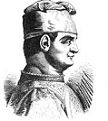

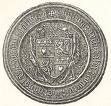


1402 The plague hits Iceland, killing half its pop. On Mar. 26 David Stewart, 1st duke of Rothesay (b. 1378), heir to the Scottish throne since 1390 starves to death in the duke of Albany's dungeon in Falkland Castle, and after Albany gets the support of Archibald, 4th earl of Douglas (justiciar of Scotland S of the Forth River), his daddy, aged infirm king Robert III signs an official statement that his son died "by divine providence and not otherwise", and that all murmuring against Albany and Douglas must cease; Albany is appointed the king's lt. for two years, and approves Douglas' demand for war with the stankin' English. On June 26 wannabe Lombard king Duke Gian Galeazzo Visconti (b. 1351) defeats Bologna at the Battle of Casalecchio, then comes down with the plague and dies on Sept. 3 while sieging his big dream Florence, saving it from Visconti control while leaving a top collection of stolen mss. from his conquests; his cruel 13-y.-o. son Giovanni (Gian) Maria Visconti (1388-1412) (known for keeping dogs trained to kill and eat men) becomes duke #2 of Milan (until May 16 1412), while his 10-y.-o. brother Filippo Maria Visconti (1392-1447) waits in the wings; Galeazzo's generals now split up his duchy, bringing a period of anarchy, and undoing all of Galeazzo's work; meanwhile, just when it looks like Italy is going Visconti, the Medici Family begins its dazzling ascent in Flor Flor Florence, as self-made man Giovanni di Bicci de' Medici (1360-1429) begins plotting to put his man into the papal chair, and by 1737 four Medicis have made it. On July 20 Tamerlane defeats the Ottomans at the Battle of Ankara (Angora) at the Cubuk Field and captures Beyazid I and his son Musa, exhibiting Beyazid in a cage; the growth of the Ottoman Empire is temporarily halted, and it nearly collapses (lucky that Lame Tim only has a few years left?); happy Byzantine emperor Manuel II Palaeologus, who just toured Europe trying to get help in vain now enjoys 20 years of peace by playing the Turks off against the Mongols; in Dec. after virtually destroying Sardis, Tamerlane captures Smyrna from the Knights of Rhodes (held since 1344) after which the sultan of Egypt sends an offer of submission. On Aug. 15 Henry III of Castile and John I of Portugal sign a peace treaty. On Sept. 14 English hotshot Sir Henry "Harry Hotspur" Percy (1364-1403), in command of the Welsh border wins a humbling V over the Scots at the Battle of Homildon (Humbleton) Hill in Northumberland W of the town of Wooler, revenging Otterburn, and capturing Scottish leader Archibald, 4th Earl of Douglas (1372-1424), and Murdoch (Murdac) Stewart, 2nd Duke of Albany (1362-1425), son and heir of Robert Stewart, duke of Albany; a bitter quarrel begins between Hotspur and Henry IV when Hotspur refuses to turn Douglas over except in exchange for the ransom of his brother-in-law (nephew of his wife) (would-be king) Edmund de Mortimer, 5th earl of March, who had been captured by the Welsh rebel Owen Glendower; this causes Sir Edmund Mortimer, uncle of the 5th earl of March to turn against Henry IV and enter into an alliance with Glendower, marrying his daughter; meanwhile the duke of Albany gets Robert III stripped of the earldom of Atholl, and gives it to his half-brother Walter Stewart (1360-1437), but the old fart king still has some spunk, and he begins to promote his last remaining son and heir James Stewart, making him earl of Carrick with a special jurisdiction that Albany and Douglas can't touch. Wenceslaus IV is imprisoned and temporarily deposed by his younger brother Sigismund I with the support of the Czech nobility (until 1403). French adventurers Jean de Bethencourt (Béthencourt) (1362-1425) and Gadifer de la Salle (1340-1415) in the name of Henry III of Castile and Leon begin conquering the Canary Islands, which were awarded to them by papal bull by 1344 but claimed and held by Portugal, starting with Lanzarote, followed by Fuerteventura Island in 1405 and El Hierro, with Bethencourt taking the title of king while recognizing Henry III as his overlord; the pissed-off Portuguese will be back in 1425. Malik Sarvar dies, and Ibrahim Shah (-1436) becomes ruler of Jaunpur, going on to become a liberal patron of learning. The False Olaf appears in the Polish village of Grudziadz, claiming to be the late Danish king (1376-87) Olaf II, fooling the townsmen, who give him expensive clothes, make him a seal, and help him write a letter to Queen Margaret, who bites and invites him to Kalmer, escorted by the grandmaster of the Teutonic Knights; too bad, he can't speak Danish, and admits to be a Prussian peasant from Eger, after which he taken to Lund in Scania and burned, after which the Danish nat. council releases a letter affirming the real Olaf's death in 1387. Architecture: Brussels Town Hall in modern-day Belgium is begun. Nonfiction: Pier Paolo Vergerio the Elder (1370-1445), On Good Manners; the first Euro treatise about the proper education of princes? Births: Mexican philosopher-inventor king of Texcoco Nezahualcoyotl ("Coyote Who Fasts") (d. 1472) on Apr. 28; son of Ixtlilxochitli I and Matalcihuatzin (daughter of Huitzilihuitl). English soldier Humphrey Stafford, 1st Duke of Buckingham (d. 1460) on Aug. 15; son of Edmund, 5th earl of Stafford and Anne (daughter of Duke Thomas of Gloucester, son of Edward III); father of Henry Stafford, 2nd duke of Buckingham (1454-83). Deaths: Bulgarian monk Euthymius of Turnovo (b. 1317). Bulgqrian patriarch (1375-93) St. Euthymius of Tarnovo (b. 1325) in Bachkovo Monastery. English duke Edmund of Langley (b. 1341). Italian duke #1 of Milan (1395-1402) Gian Galeazzo Visconti (b. 1351) on Sept. 3 in Castello Melegnano, Pavia (plague). Scottish royal heir David Stewart, 1st duke of Rothesay (b. 1378) on Mar. 26 (starved to death in the dungeon of Falkland Castle).

1403 On Mar. 8 caged sultan (since 1389) Beyazid I the Thunderbolt (b. 1360) commits suicide in Askehir, Turkey, and the Ottoman Interregnum (Triumvirate) begins (ends 1413), as three of his six sons recognize Tamerlane's suzerainty and are installed as local rulers: Suleyman Celebi ("gentleman") (-1419) (eldest son) in N Greece, Bulgaria and Thrace (capital Edirne), Mehmed I Celebi (1389-1421) in Amasya (capital Bursa), and Isa Celebi in Greece and W Anatolia (until 1404); meanwhile remaining sons Musa Celebi (-1413), Kasim, and Mustafa (-1401) are waiting in the wings; after Tamerlane dies in 1405, the brothers begin a battle for sole control of the Ottoman Empire (winner: Mehmed I). On May 21 Henry III of Castile sends ambassadors to Tamerlane (Timur) to discuss a possible alliance against the Ottoman Empire. On July 19 after marrying Mary of Lusignan, daughter of the king of Cyprus in 1401, crowning himself duke of Slavonia, and negotiating a treaty with Venice ceding the island of Corfu in exchange for free passage in the Adriatic Sea, Ladislaus (Lancelot) the Magnanimous of Naples (1377-1414), son of prior Hungarian king Charles II (Charles II of Naples) and Margaret of Durazzo lands in Zadar with the support of Pope Boniface IX with the intention of obtaining the crown of Hungary, but chickens out and returns to Apulia, retaining authority in Zadar; meanwhile he orders the painting of a cycle of the St. Ladislaus legend in the Church of Santa Maria dell'Incoronata in Naples (built in 1352-73) to boost the St. Ladislaus cult (finished 1414). On July 21 after Henry Percy, 1st earl of Northumberland, along with Thomas Percy, 1st Earl of Worcester (1344-1403), and Sir Edmund (de) Mortimer (1376-1409), youngest son of Edmund de Mortimer, 3rd earl of March (great-grandson of Edward III) plot to dethrone Henry IV and put Edmund (de) Mortimer, 5th earl of March (1391-1425) on the throne, and Henry IV anticipates the move, rushing an army assembling for a Scottish campaign west and intercepting Hotspur before he can join Glendower, the close Battle of Shrewsbury in Shrewbury, Shropshire sees his 16-y.-o. son Prince Henry (later Henry V) lead the royal army against the rebellious Percy family and decisively defeat them; Hotspur (b. 1364) is KIA; Worcester is beheaded, but Northumberland, who took no part in the battle is deprived of some of his power and pardoned. In Sept. Lord John of Liechtenstein leads a party of knights that frees Wenceslaus IV from prison in Vienna and gives him refuge in his castle in Moravia near Mikulov. Qara Yuluk Uthman (1389-1435) becomes ruler of the Aq-Qoyunlu (White Sheep) Turkoman confederation based in Diyarbakr (Diyar Bakr) in SE Anatolia on the Tigris River, which later takes advantage of the death of Tamerlane to take the cities of Erzurum and Mardin, giving them control of important trade routes - pay the white sheep or else? Martin I of Aragon rescues Avignon pope Benedict XIII from imprisonment and shelters him in Valencia. Henry IV of England issues an order exempting fishing vessels from prize capture in times of war, signing a treaty with France making it internat. law; in 1521 HRE Charles V and Francis I of France sign a similar treaty. The Doge of Venice imposes a quarantine of 40 days as a safeguard against the plague. Emperor (since 1398) Jianwen (Ming Hui Di) is overthrown by his uncle Yung-lo (Yongle), who becomes Ming emperor #3 Ming Chen Zu (Ch'eng Tsu) (-1424) (until 1424), going on to build the Purple Imperial City on the holy mountain of Wu Dang (Wu-Tang) in NW Hubei Province; sections of the Great Wall of China are rebuilt using sticky rice mixed into slaked lime to make it last longer. Architecture: Lorenzo Ghiberti begins work on the Porches of the Florence Baptistery. The Prater (Lat. "pratum" = meadow) park in Vienna is first mentioned, owned by the HRE and used as a hunting ground from 1560, then opened to the public by HRE Joseph II in 1766. Nonfiction: The Yung Lo Ta Tien (Yongluo Dadien) 22,937-vol. encyclopedia begins compilation; only three copies are made. Births: Greek scholar-monk (metropolitan of Nicaea) (Greek-to-Roman Catholic convert) Johannes (Basilius) (Basilios) Bessarion (d. 1472) on Jan. 2 in Trebizond; student of Gemistus Pletho. French Valois king (1422-61) (crowned 1429) (Joan of Arc's fantasy man?) Charles VII (the Victorious) (the Well-Served) (d. 1461) on Feb. 22 in Paris; 5th son of Charles VI (1368-1422) and Isabelle of Bavaria-Ingolstadt (1371-1435); brother of Catherine of Valois (1401-37), wife of Henry V and mother of Henry VI (1421-71); father (by wife Marie of Anjou) of Charlotte of Savoy (1443-83), wife of Louis XI and mother of Anne of Brittany (1477-1514), wife of HRE Maximilian I, Charles VIII and Louis XII. Ottoman sultan #5 (1421-44, 1446-51) Murad II (d. 1451) in June in Amasya; son of Muhammad I the Restorer (1389-1421); father of Mehmed II (1432-81). English soldier John Beaufort, 1st Duke of Somerset (d. 1444); son of John Beaufort, 1st earl of Somerset (1373-1410), eldest son of John of Gaunt; brother of Edmund Beaufort, 2nd duke of Somerset (1406-55). Deaths: Ottoman sultan #4 (1389-1402) Bayezid I (b. 1360) on Mar. 8 in Askehir, Turkey (suicide). Portuguese author Vasco de Lobeira (b. 1360). English rebel Harry Hotspur (Sir Henry Percy) (b. 1364) (KIA).


1404 On Apr. 27 Philip the Bold (b. 1342) dies, and his able son John I the Fearless (Jean sans Peur) (1371-1419) (who earned his nickname at the 1396 Battle of Nicopolis) becomes duke of Burgundy (until Sept. 10, 1419), continuing father's feud with Duke Louis of Orleans (d. 1407), the dissolute younger brother of increasingly mad Charles VI, who is married to Valentina Visconti of Milan, with both of them attempting to play millionaire and fill the power vaccum; soon after inheriting his title he introdues and/or legalizes hops in the county of Flanders, causing them to ditch gruit, and founds the Order of the Hop. In July Charles VI concludes an alliance with Owen Glendower, recognizing him as the prince of Wales. On Oct. 1 Pope (since 1389) Boniface IX dies, and on Oct. 17 Cosimo de'Migliorati is elected yet-another-old-Italian-guy Pope (#203) Innocent VII (1336-1406); on Oct. 19 Ladislaus the Magnanimous of Naples intervenes in Rome in support of the Colonna family, murdering several members of the Sanseverino family before leaving, then returning next year, accepting the lordship of Rome from some nobles, which pisses-off the pope. In Dec. after returning to Samarkand and preparing for an expedition to China, Tamerlane leaves, directing it from a litter as he lays dying? The English Commons demands that Church property be confiscated and applied to poor relief, but Henry IV opposes them, risking the loss of his Parliamentary support (who hired him?) to get Church backing and develop another leg to stand on? The English Parliament, fearing that alchemists could bring ruin upon the state pass a law declaring the making of gold or silver by alchemy to be a felony - is fool's gold a defense? The U. of Turin is founded when the Lombardy wars interrupt the lectures of some professors and they decide to move somewhere more quiet? Henry Paye is granted a letter of marque by English king Henry IV. The term "brioche" (Fr. "broye" = wooden roller) is first mentioned in France (Normandy?), enriched pain benit (blessed bread). Architecture: Work begins on the N and S cloisters of the Worcester Cathedral in England (ends 1432). Plays: Mao-Tseu, Pi Pa Ki (Story of the Lute). Births: Byzantine emperor (last) Constantine (Konstantinos) XI Dragases Palaeologus (Paleologos) (d. 1453) on Feb. 8 in Constantinople; 8th of 10 children of Manuel II and Helen Dragas, daughter of Serbian prince Dragas of Kumanov; likes to use his mother's name Draga. Italian Renaissance humanist polymath painter, art theorist, and architect (pioneer in perspective) (precursor to Leonardo da Vinci) Leon Battista Alberti (d. 1472) on Feb. 14 in Genoa; student of Gasparinus de Bergamo (1360-1431). French queen consort (1422-63) Marie of Anjou (d. 1463) on Oct. 14 in Abbaye de Chateliers-en-Poitou; daughterof Louis II of Anjou (1377-1417) and Yolande of Aragon (1384-1442) (daughter of John I of Aragon); wife (1422-63) of Charles VII (1403-61) (who prefers to hook up with Agnes Sorel); mother of Louis XI (1423-83). Scottish queen consort (1424-37) Joan Beaufort (d. 1445); daughter of John Beaufort, 1st earl of Somerset (1373-1410) (illegitimate son of John of Gaunt) and Margaret Holland (1385-1439) (daughter of Thomas Holland, son of Joan the Fair Maid of Kent, the granddaughter of Edward I and mother of Richard II). English cardinal (1473-) and archbishop of Canterbury (1454-86) Thomas Bourchier (d. 1486); non-eldest son of William Bourchier, count of Eu (-1420) and Anne of Gloucester (1383-1438) (daughter of Thomas of Woodstock, a descendant of Edward III); educated at Oxford U. Deaths: English bishop William of Wykeham (b. 1320) on Sept. 27. French duke of Burgundy (1363-1404) Philip II the Bold (b. 1342) on Apr. 27 in Halle; the Tomb of Philip II the Bold is sculpted by Claus Sluter and his nephew Claus de Werwe, with help from Jean de Marville. Sardinian judge Eleanor of Arborea (b. 1347) in Oristano; namesake of Eleanora's falcon.





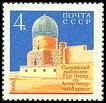


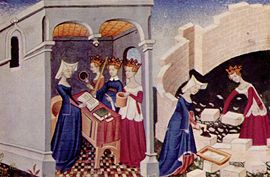
1405 You can conquer, but you can't rule, you lame SOB? On Feb. 18 Tamerlane (b. 1336) dies suddenly in Otrar on the Syr Darya (Jaxartes) River W of Chimkent, 250 mi. N of Samarkand, and is buried at Samarkand in the Gur-e Amir (Tomb of the King); he dies after conquering 2.145M sq. mi. (most in history?) of the Near East, from the Indus River to the Mediterranean Sea, and from the Indian Ocean N to the Aral Sea, killing 17M (5% of world pop.), but leaves no institutional arrangements to keep his empire intact, and lacks the legitimacy of descent from Genghis Khan; the Chinese and Ottomans are saved, and Damascus is soon rebuilt; Shah Rukh (Rokh) (1377-1447) (named after the chess move "check" being made by his daddy when given news of his birth) succeeds him as ruler (until 1447) of the Timurid Mongol Dynasty in Persia and Transoxiana (ends 1506), which begins disintegrating, losing W Iran, Iraq, and E Anatolia to the Aq-Qoyunlu (White Sheep Turks) and Qara-Qoyunlu (Black Sheep Turks), while keeping control of E Iran and Transoxania, and moving the capital from Samarkand to Herat in NW Afghanistan, where he and his wife Jawhar Shad become patrons of the arts, erecting magnificent bdgs. in Herat and Mashhad adorned with exquisite mosaic tilework, and encouraging painting and calligraphy as the empire goes to pot with the Seljuk iqta' system replaced by the suyurghal system, giving too much power to princes. On May 29 after French troops land in Wales to support Owen Glendower, archbishop of York (since Feb.-Mar. 1398) Richard le Scrope (b. 1350) breaks with Henry IV, and Henry Percy, earl of Northumberland raises the northern counties in revolt, the Battle of Shipton Moor near York sees Henry IV's warden of the marshes Ralph Neville, 4th Baron Neville de Raby, 1st Earl of Westmorland (1364-1425) (husband of Henry IV's half-sister Joan Beaufort, daughter of John of Gaunt) defeat the rebels, causing Percy to flee to Scotland, after which the tide turns in Henry IV's favor; on June 8 Scrope is executed in York for his participation in the Northern Rising. On Nov. 17 the Sunni Muslim Sultanate of Sulu is founded in the Sulu Archipelago of Malaysia by Johore-born Sharif ul-Hashim; in 1578 it gains independence from Brunei, going on to expand from W Mindanao to Palawan and the NE side of Borneo to Tepian Durian (modern-day Kalimantari); in 1851 it becomes a protectorate of Spain; in 1903 it becomes a protectorate of the U.S.; in 1915 the sultanate is officially abolished in a treaty with the U.S.; in 1974 Mohammad Mahakuttah Kiram (-1986) becomes the last officially recognized (by Ferdinand Marcosw) sultan of Sulu. Florence buys Pisa to gain direct access to the sea and along with its preeminence in belles arts begins its rise to prominence - the original pisa to go? The Ottomans invade Armenia. Hushang Shah (-1435) becomes Ghuri ruler of Malwa, and fortifies his capital at Mandu above the Narbada River, building the Hindola Mahal, AKA the Swinging Palace (known for sloping sidewalks to accommodate elephants), along with a great mosque. The pesky Mongols out of his hair, Chinese Emperor Yung-lo commissions the Seven Voyages of Cheng Ho in the Indian Ocean (ends 1433) in 317 technologically advanced ships with 37K crew in order to impress neighbors, bring states into vassalage, and get treasure and trade goods (dwarfing anything the Euros can match for the next two cents.), all headed by Chinese Muslim (Hui) royal eunuch adm. Cheng Ho (Zheng He) (1371-1433), accompanied by four officials incl. Ma Huan of Zheng (1380-1460), Fei Xin (Hsin) (1385-1437), Gong Zhen (Kung Chen), and Guo Chongli; the First Voyage of 63 ships with 27K men begins (ends 1407), with the goal not to conquer or trade, but to assert Chinese superiority. Leonardo Bruni (1369-1444) becomes apostolic secy. to the pope, lasting through four popes (until 1414), after which he moves to Florence and writes the first modern history book, about Florence. Pietro Aretino (1492-1556) begins translating the works of Plato into Latin, which causes Neoplatonism to flourish among intellectuals in Florence et al. by the end of the cent. - sixteen degrees of posture? The word "vodka" is first mentioned in Akta Grodzie, an official document of the Polish Palatinate of Sandomierz to mean medicines and cosmetic products; he beverage is called gorzalda (Old Polish "gorzec" = to burn); the first mention of the word "vodka" in Cyrillic appears in 1533, referring to a medicinal drink brought to Kieven Rus from Poland by merchants. Architecture: Bath Abbey in England is begun (until 1499). Nonfiction: Konrad Kyeser von Eichstadt (1366-1405), Bellifortis; about military technology (siege engines), incl. a description of a diving suit, and the first mention of a chastity belt - love is a battlefield? Christine de Pizan (1363-1434), Book of the City of Ladies; women's important contributions to society; The Treasure of the City of Ladies (Book of the Three Virtues); how women can cultivate useful qualities to stop misogyny. Births: Roman Byzantine emperor (last) (1449-53) ("the Marble Emperor") Constantine XI Dragases Palaeologus (Palaiologos) (d. 1453) on Feb. 8 in Constantinople; 8th of 10 children of Manuel II Palaeologus and Helena Dragas, daughter of Constantine Dragas of Serbia. Spanish king of Castile and Leon #4 (1406-54) John (Juan) II (d. 1454) on Mar. 6; son of Henry III the Sufferer of Castile-Leon (1379-1406) and Katherine Plantagenet of Lancaster (1372-1418) (daughter of John of Gaunt and Constance of Castile, daughter of Pedro the Cruel); half-sister of Isabella I of Castile (1451-1504); nephew of of Ferdinand I the Just (1380-1416); maternal great-grandson of Edward III of England. Albanian Christian ruler (1443-68) and nat. hero ("the Dragon of Albania") Skanderbeg (Scanderbeg) (Iskender Beg) (Lord Alexander) (George or Gjergj Kastrioti or Castriota or Castriotes) (d. 1468) on May 6 in Diber. Italian pope (1458-64) and novelist-poet Pius II (Enea Silvio de Piccolomini) (Aeneas Sylvius) (d. 1464) on Oct. 18 in Corsignano (later changed to Pienza in his honor) near Siena; first to write an autobio. while reigning (until ?). German Internat. Gothic painter Stephen Lochner (d. 1452) AKA Master Stefan, Dombild Master (b. 1410) in Meersburg. English "Le Morte d'Arthur" knight-poet ("the Father of Chivalry - Sir Walter Scott) Sir Thomas Malory (d. 1471) in Warwickshire. Deaths: English archbishop of York Richard le Scrope (b. 1350) n June 8 in York (executed). French poet Eustache Deschamps (b. 1346). French countess Margaret III/II of Flanders (b. 1350) on Mar. 16 (21?).





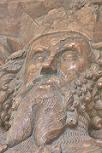


1406 Early in the year Henry Sinclair (St. Clair), 1st Earl of Orkney (1345-1407) (grandfather of Rosslyn Chapel builder William Sinclair, 3rd earl of Orkney) and Sir David Fleming of Biggar and Cumbernauld (-1406) back the cause of 11-y.-o. Scottish heir to the throne prince James Stewart (1394-1437) (later James I) against his younger brother Duke Robert of Albany and the 6th earl of Douglas in Lothian, but a force led by Sir James Douglas "the Gross" of Balvenie (Balveny) (1371-1443) (later 7th earl of Douglas) (2nd son of Archibald Douglas, 3rd earl of Douglas) defeats them, kills Fleming and causes Orkney and James to flee to Bass Rock in the Firth Estuary of the Forth River NE of Edinburgh (a prison island that is also home to the northern gannet), then board a German ship to France; too bad, on Mar. 22 after the duke of Albany tips them off, James is captured by English pirates, and handed over to Henry IV, who orders him held prisoner in the Round Tower in Windsor, where he remains for 18 years to insure the good behavior of the pesky Scots; on Apr. 4 his father king (since 1390) Robert III (b. 1337) of Scotland dies of grief in Rothesay Castle on the Isle of Bute in W Scotland, and leaves him the throne, with Duke Robert of Albany as regent of a caretaker govt. that acknowledges James as king but won't take his orders for fear that he is under English coercion; Bass Rock later becomes a religious retreat - William Wallace rolls over in his five or six graves? On July 15 William the Courteous (b. 1370) dies without heirs, and his three younger brothers agree to partition Inner Austria; the eldest Leopold IV (1371-1411), duke of Further Austria (1391-1402) and Tyrol (since 1396) gives up Tyrol in favor of duke of Further Austria (since 1402) Frederick IV Empty Pockets (1382-1439) (younger son of Leopold III), and holds guardianship over the youngest, Duke Albert V (1397-1439) (archduke of Austria since 1404); Ernest the Iron (1377-1424) becomes duke of Inner Austria (Styria, Carinthia, and Carniola) (until June 10, 1424), getting into a war with Leopold over Albert until May 1409, then becoming uncontested head of the Leopoldian Dynasty when Leopold dies without heir in 1411. On Sept. 16 Moscow metropolitan Cyprian (b. 1336) dies, leaving The Book of Degrees (completed in 1563), grouping Russian monarchs in the order of their generations, and is succeeded by Photius of Kiev (-1431) (a non-Russian speaker) as metropolitan of Moscow, and Isidore of Kiev (1385-1463) as metropolitan of Kiev and All Russia; in 1408 Cyprian's workshop pub. the Trinity Chronicle, glorifying Mosow as the rightful center of Russian Orthodox culture and the Third Rome (heir to Constantinople if/when it falls to the Turks). On Nov. 6 after deposing Ladislaus of Naples as king of Naples on June 18, Pope (since 1404) Innocent VII dies, and on Nov. 30 Angelo Corrario (Correr) is elected Pope (#204) Gregory XII (1327-1415); Raimondo Del Balzo Orsini leads a revolt against Ladislaus, but dies next Jan., after which his wife Mary of Enghlen (1367-1446) continues in his place, successfully defending Taranto against a 2-mo. siege next spring, after which Ladislaus signs a peace treaty with the pope next July, becoming protector of the Papal States, moving to Taranto and marrying her on Apr. 23, 1407. On Dec. 25 king (since Oct. 9, 1390) Henry III the Sufferer (b. 1379) dies in Toledo while preparing a campaign against Granada, and his infant son John (Juan) II (1405-54) becomes Trastamara king of Castile and Leon #4 (until July 20, 1454) under the regency of his mother Catherine of Lancaster (daughter of John of Gaunt) and his uncle Ferdinand I the Just of Aragon (1380-1416) after the latter declines the throne; his 48-year reign is the longest in the history of the Trastamara Dynasty; Castilian poet Inigo Lopez (Íńigo López) de Mendoza y de la Vega, Marquis of Santillana (1398-1450) goes on to thrive during John II's reign, adapting the humanism of Dante Alighieri (1265-1321), Petrarch (1304-74), and Giovanni Boccaccio (1313-75) to the stifling orthodox Roman Catholic atmosphere of Spain. Venice acquires Padua (until 1797), governing it with two Venetian nobles, one military and one civilian, with the Paduans getting to send a noble to Venice to speak for their interests. England's French territories are attacked by Duke Louis of Orleans. Ming Yung-lo sends messengers to Japan, and occupies Vietnam in an attempt to make it a Chinese province (until 1428). Architecture: Gonzaga Fortress in Mantua, Italy (begun in 1395) is finished, complete with jaws-will-drop wall paintings by Andrea Mantegna. Art: The Cheng Hua (Chenghua) Period of Chinese Porcelain begins (ends 1487). Births: Hungarian count Ulrich II of Cilli (Celje) (Cillei) (d. 1456) in Cellje; son of Count Frederick II of Celje and Elizabeth Frankopan. Florentine painter Fra' Filippo (Lippo) Lippi (d. 1469) in Florence; father of painter Filippino Lippi (1457-1504). Italian "On Civic Life" humanist historian Matteo Palmieri (d. 1475) in Florence. Italian Renaissance painter Sano di Pietro (d. 1481). Deaths: Bulgarian monk Cyprian (b. 1330) on Sept. 16 in Moscow. Arab Muslim historian Ibn Khaldun (b. 1332) on Mar. 19 in Cairo, Egypt. Scottish king (1390-1406) Robert III (b. 1337) on Apr. 4 in Rothesay Castle on the Isle of Bute; buried in Paisley Abbey instead of Scone Abbey after he tells the queen that he should be buried in a midden (dungheap) with the epitaph: "Here lies the worst of kings and most wretched of men in the whole kingdom." Austrian duke William the Ambitious (b. 1370) on July 15 in Vienna. Spanish king (1390-1406) Henry III of Castile (b. 1379) on Dec. 25 in Toledo.



1407 The plague returns to London. On Nov. 23 after getting pissed-off at English Queen Isabelle suddenly deciding that blood is thicker than wine and switching to his enemy's side, and despite vowing to their joint uncle Duke John of Berry to reconcile, Duke John the Fearless of Burgundy fearlessly has Duke Louis of Orleans (b. 1372) assassinated on the streets of Paris, calling it a justifiable act of "tyrannicide", and after escaping Paris and fighting off the Orleans party becomes the hero of Paris, gaining control of the French govt., which precipitates the (well-wined?) Burgundian-Armagnac Civil War (ends Sept. 21, 1435) between the pro-English Burgundians (supported by the pop., the U. of Paris, and the Wittelsbachs, and strong in the N and NE) and the anti-English Armagnacs, headed by Bernard VII, Count of Armagnac (1360-1418), future father-in-law of Louis' teeny son and future successor Charles of Valois, Duke of Orleans (1394-1465) (future father of king Louis XII) (supported by the great French nobles, and strong in the S and SE); torn by factional rivalry, the French make a truce with Henry IV, depriving the Welsh of aid. Pissed-off Scotland attacks English garrisons in S Scotland and renews the Auld Alliance with France. Ladislaus of Naples take advantage of whimp Pope Gregory XII and invades the Papal States, conquering Ascoli Piceno and Fermo. China conquers Vietnam again for two decades (until 1428). Cheng Ho returns to China from his first voyage with the prince of Palembang (Sumatra) in chains. Duisburg joins the Hanseatic League. The Merchant Adventurers trading co. is incorporated in England (until 1808) to export cloth to the Netherlands, centered in Bruges; in 1446 it moves its trading center (staple) to Antwerp. Casa di San Giorgio one of the first known public banks is founded in Genoa (until 1805) - how long till the international Jewish bankers get control of everybody's money and take over the world? Italian humanist scholar Gasparinus (Gasparino) de Bergamo (da Barzizza) (Di Pietrobuono) (1360-1431) founds a school in Padua, where he lectures until 1421 on Roman authors incl. Cicero, Seneca, Terence, and Virgil, establishing an allied elementary school whose students incl. Vittorino da Feltre (Ramboldini) (1378-1446), Antonio Beccadelli "Il Panormita" (1394-1471), and Leon Battista Alberti (1404-72). Jopen brand beer is first brewed in Haarlem, Netherlands in modern-day Jopengasse St. Architecture: Work begins on the C tower of York Minster (finished 1423). Bethlehem Hospital (Bedlam) in London becomes a warehouse for the insane. Births: Italian Renaissance humanist scholar-priest (Roman Catholic) Lorenzo Valla (d. 1457) in Rome; student of Johannes Bessarion (1395-1472); exposer of the medieval forgery of the Donation of Constantine. Turkish Sunni Muslim scholar-poet-judge (1st qadi of Istanbul) Khidr Bey (Beg) (d. 1459 (d. 1456?) in Sivrihisar. Deaths: Spanish statesman-writer Don Pero Lopez de Ayala (b. 1332) in Calahorra. English lord Thomas Beauchamp, earl of Warwick (b. 1339). French duke (1392-1407) Louis I of Orleans (b. 1372) on Nov. 23 in Le Marais, Paris (assassinated by 15 masked assassins on orders of Duke John the Fearless of Burgundy).
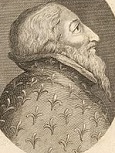

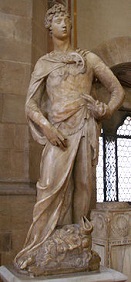

1408 On Feb. 20 Harry Hotspur's father Henry Percy, 1st Earl of Northumberland (b. 1341), warden of the marches (marshal of England), who had invaded England from the N in the expectation of recruiting followers to overthrow Henry IV is defeated and KIA at the Battle of Bramham Moor in Yorkshire by the local levy when he fails to attract enough locals to his cause. On Apr. 25 after sieging Ostia to counter the French party backing Antipope Benedict XIII, and capturing it after bribing papal cmdr. Paolo Orsini, Ladislaus of Naples enters Rome, later capturing Perugia. The U. of Prague is torn apart by the Great Schism after Wenceslaus IV the Drunkard, fearing that Roman pope Gregory XII might interfere in his plans to be crowned HRE orders his prelates and the univ. faculty to maintain strict neutrality between him and Avignon pope Benedict XIII, after which Prague archbishop (1403-11) Zbynek Zajic of Hasenburg (1376-1411) tells him to stuff it and remains faithful to Gregory XII, while Bohemian preacher Jan Hus (1369-1415), leader of the "Czech nation" avows neutrality; too bad, Hus gets into trouble for railing against Church moose hockey such as indulgences, and is defrocked, but the pop. rises to support him; meanwhile a convocation is held in Lucca, Italy to end the Great Schism - this bud's for you, Lucca? Church-approved Dominican missionary (St.) Vicente Ferrer (1350-1419) begins a preaching work (ends 1416) to mass-convert the benighted Jews and Muslims in Spain and Granada, and tens of thousands fall for it; meanwhile in Granada Yusuf III is ordered killed by his brother king Muhammad VII (1370-1408), but is granted his last request of finishing a chess game first, and the monarch dies before the game is finished, allowing him to survive and become sultan Yusuf III (-1417) (until 1417) - the original Bobby Fischer? Cheng Ho embarks on his Second Voyage from China to Ceylon (ends 1412); the Chinese occupy Sri Lanka (Ceylon) (ends 1438). HRE Sigismund I and his 2nd wife Barbara Cilli found the Order of the Dragon for Christian knights opposing the Turks, modeled on the Order of St. George of Hungary, with a logo of a defeated dragon symbolizing defeated heresy. Art: Donatello (1386-1466), Clothed Statue of David (marble sculpture) (1408-9); commissioned to be mounted on top of Florence Cathedral, it proves to small to be seen from the ground, and is taken back to the workshop until 1416, when it is mounted in Palazzo della Signoria; St. John (sculpture) (1408-15). Births: Polish princess Jadwiga of Lithuania (d. 1431) on Apr. 8; daughter of Wladyslaw II Jagiello (1351-1424) and 2nd wife Anna of Celje (1380-1416). Indian mystic saint-composer Sri Tallapaka Annamacharya (d. 1503). Deaths: Korean king #1 (1400-8) Taejo (b. 1335) on May 24 in Changdeok Palace. English lord Henry Percy, 1st earl of Northumberland (b. 1342) on Feb. 20 in Bramham Moore, Yorkshire (KIA).


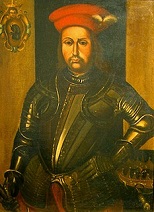


1409 On Jan. 18 after Jan Hus' preaching at the U. of Prague causes an uproar among the Germans in the faculty and student body, causing the Hussites to send Jerome of Prague (1379-1416) to Wenceslaus IV to ask him to change the constitution of the univ., and Poland, Bavaria, and Saxony oppose the the emperor's request to remain neutral between the two rival popes of the Great Schism, Wenceslaus IV issues the Decree of Kutna (Kutná) Hora (Kuttenberg), giving the Czech nation three votes in the elections to the faculty of Prague U. and the other three only one vote each, after which Hus is voted rector of Prague U., causing deposed rector Johannes of Munsterberg and 5K-25K students and profs. to leap and zigzag out and found Leipzig U. in Saxony, which is backed by a bull issued by new Antipope Alexander V on Sept. 9, and later becomes the alma mater of superbrain Gottfried Wilhelm von Leibniz. On Mar. 25 the cardinals of Rome and Avignon meet in the Council of Pisa, called by Rupert III to end the 30-year Great Schism, and depose Roman Pope Gregory XII and Avignon Antipope Benedict XIII, then on June 26 elect compromise candidate Pietro Phillarges (Peter of Candia) as antipope #3 of the Great Schism Antipope Alexander V (1339-1410) (until May 3, 1410); from this year to 1417 there are not one, not two, but three popes, G12, B13, and A5 (sounds like an interesting chess game); Wenceslaus IV and the Hussites approve of the election, but Prague archbishop Zbynek Zjic remains loyal to Gregory XII, and though he had initially supported Jan Hus, he suddenly turns on him and orders him to discontinue preaching from his pulpit at Bethlehem Chapel in Prague, then after Wenceslaus IV pressures him to accept Alexander V, he gets him to condemn Hus in a papal bull on Dec. 20 in exchange for supporting him as da one and only pope. On June 30 the Battle of Sanluri (San Luigi) in Sardinia is a V for Martin the Younger of Sicily over the Sardinians, leading to the loss of independence for pesky Arborea, and recovery of the island by Aragon. On Aug. 14 Teutonic Knights grandmaster (1407-10) Ulrich von Jungingen (1360-1410) declares war on the Polish-Lithuanian state, but offers an armistice from Oct. 8 to June 24, 1410; he dies on July 15, 1410 while trying to attack Vytautas the Great of Lithuania. Edmund de Mortimer, 3rd earl of March dies after being sieged by royal forces under Harry of Monmouth, prince of Wales (future Henry V) in Harlech in Wales; Owen Glendower flees to the Cambrian Mts. - where he always keeps a lucky trilobite in his pocket, or is he just happy to see me? Henry IV finally solidifies his reign at the cost of a physical breakdown; Prince Henry of England begins to work actively in the privy council. In late July after Sienna and Florence along with Cardinal Baldassare Cossa ally against him, and Antipope Alexander V excommunicates him, Louis II of Anjou conquers Naples from Ladislaus of Naples and takes the Neopolitan crown, after which the allies send an army to invade the papal lands under Ladislaus' control and siege Rome, after which papal cmdr. Paolo Orsini defects with 2K men, and the allies go on to capture the Vatican and the Trastevere quarter, while Cardinal Cossa goes to N Italy to obtain more support; meanwhile Venice recovers its territories on the Dalmatian coast after Ladislaus sells the rights for 100K ducats in an attempt to gain their help in his upcoming war against the Repub. of Florence caused by his alliance with their enemy Lord Paolo Guinigi of Lucca, invading Tuscany and capturing Cortona and Elba Island from Gherardo Appiani, after which Florence hires condottiero Braccio da Montone (Andrea Fortebracci) (1368-1424) AKA Braccio Fortebraccio, who defeats Ladislaus and forces him to retreat. Eric of Pomerania forces the German nobles to surrender Flensburg in S Schleswig, but they regroup and try to get it back. Architecture: Ganden Monastery, the first Gelugpa (Gelukpa) (yellow hat) monastery is founded in Tibet by Tsongkhapa; the first Great Prayer Festival is held in Lhasa. Tartar City (Nei Cheng), a square enclosure on the N end inside walled moated Peking is begun (finished 1420), complete with a 15-mi. 40-ft.-high brick-faced earth-concrete wall with nine gates. Gothic-style Hunyad Castle is given to Vajk by Sigismund of Luxemburg, going on to survive to modern times as a tourist attraction. Births: French knight-lover duke of Anjou (1434-80), duke of Lorraine (1431-53), king of Naples and Sicily (1438-42), king of Jerusalem (1438-80), king of Aragon, Valencia, Majorca, and Sardinia (1466-80), Count of Bar, Provence, Piedmont, Guise, and Calabria, king of Hungary "Good King" Rene I of Anjou (d'Anjou) (d. 1480) on Jan. 16 in Angers Castle; 2nd son of Duke Louis II of Anjou (1377-1417) and Yolande of Aragon (1384-1442); father of Iolande de Bar (1428-83) and Margaret of Anjou (1429-82); one of the most powerful men in 15th cent. Europe. Hungarian-Bohemian-German queen Elisabeth (Elizabeth) of Luxembourg (Bohemia) (d. 1442) on Oct. 7 in Visegrad, Hungary; only daughter of HRE Sigismund I (1368-1437) and 2nd wife Barbara of Celje (1390-1451); paternal granddaughter of HRE Charles IV and Elisabeth of Pomerania; wife of HRE Albert II; mother of Ladislaus V Posthumous (1440-57), Duchess Anna of Thuringia (1432-62) and Elisabeth of Poland (1437-1505). Burmese Hanthawaddy king #16 (1471-92) Dhammazedi (d. 1492) in Nov.-Dec.






1410 On May 4 Antipope (since 1409) Alexander V (b. 1339) dies (poisoned?), and on May 17 Cardinal Baldassare Cosa of Naples (a brutal libertine and former pirate who obtains the position through force of arms and who is made a priest one day before his coronation?) is elected antipope #4 of the Great Schism Antipope John XXIII (1370-1419); his bitchin' backer Giovanni di Bicci de' Medici (1360-1429) hits the jackpot, and the Medicis become "God's bankers". On May 18 Rupert III (b. 1352) dies, and Wenceslaus (Wenceslas) (Wenzel) IV (the Drunkard) (the Lazy) of Luxembourg (1361-1419) continues to claim the kingship of Germany, which is contested by his cousin Jobst (Jost) (Jodokus) of Moravia (1351-1411) and his younger brother Sigismund I of Luxemburg (1368-1437), who are both elected. On May 31 Martin I the Elder of Aragon (b. 1356) laughs himself to death, and since he leaves only bastard grandson Count Fadrique of Luna without getting him confirmed as successor, a 2-year interregnum follows. A momentous battle for Eastern Europe? On July 15 a huge Slavic Polish army under king Wladislaw II Jagiello (1351-1434), along with partially-pagan Slavic Lithuanians under grand duke Vytautus (Witowt) the Great (1350-1430), aided by some Tartars defeats and massacres the German Roman Catholic Teutonic Knights at the Battle of Tannenberg (Zalgiris) (Grunwald) and bankrupts them, with the survivors escaping to Marienburg Fortress and holding on; Eastern Europe is saved from Germanization; Samogitia (Zemaitija) ("lowlands") in NW Lithuania becomes the last region in Europe to stay pagan until late in this cent. - and Hollywood casting agents are left to sort it out later? While English king Henry IV is sick, Prince Henry heads the royal council, until he is removed after an argument with his father. On July 16 after supporting them turning on him, Prague archibishop #5 (1403-11) Zbynek Zajic of Hazmburk (Hasenburg) (13671-1411) excommunicates Jan Hus and his followers, and orders their works confiscated and burned at his court, causing Hus to flee a lynch mob, while pro-Hus Prague U. students chant "Illiterate Jajic burns books without knowing what they contain", after which Wenceslaus IV intervenes, ordering him to reverse his edict and replace the burned books, and when Zajic refuses he cuts off his income, then after he still refuses, confiscates all church treasures, after which Wenceslaus IV's brother Sigismund I intervenes and gets them to kiss and make up, after which Zajic gets cold feet and tries to hike to Hungary, falling ill and croaking in Prespurk (Bratislava) next Sept. 28. War breaks out in Holstein, and Eric of Pomerania conquers Als and Aero. The (Kara Koyunlu) (Qara Qoyunlu) (Black Sheep Turks (Turkomans) (1375-1468) under ruler (1388-1420) Abu Nasr Qara Yusuf Nuyan ibn Muhammad begin expanding from the area of Lake Van in E Anatolia (which is so salty that only the darekh herring can survive in it), defeating their former allies the Jalayirids and ending their dynasty, then taking Baghdad, Iran, and Azerbaijan and establishing a dynasty under the Baharlu (Barani) family (until 1467). The old half-forgotten Salic Law, providing for inheritance by daughters in the absence of surviving sons is resurrected by Jean de Montreuil in a treatise against the claims of England's Henry IV to the French throne. Finances are so bad in Portugal that Queen Philippa issues a fiat money in the form of leather tokens as legal tender. Castile captures Antequera from Granada. Good news in the battle against heretics? English Lollard John Budby is burned at the stake. The electorate of Brandenburg, ruled by princes of the houses of Wittelsbach and Luxembourg since 1323 comes up for grabs, and the Palatinate branch of the House of Wittelsbach (founded 1119) begins fracturing into numerous branches, incl. Birkenfeld, Neuberg, Neumarkt, Sulzbach, and Zweibrucken; meanwhile Sigismund of Luxemburg becomes prince-elector of Brandenburg again (until 1415). Inventions: The Astronomical Clock in Prague's Old Town Hall begins tracking the motion of the Sun and Moon. Rudolph of Nuremberg invents wire. Nonfiction: Ptolemy (90-168), Geography; the first trans. appears in Toledo, Spain, reviving the notion that the Earth is spherical - hold onto your hats, cardinals? Art: Guillebert de Mets, Le Roman de Melusine; 16 paintings about the Euro legend of Melusine, a woman who is a fish or serpent from the waist down. Births: French "la contenance angloise" poet Martin le Franc (d. 1461) (b. 1395?) in Normandy; educated at the U. of Paris. German organist (blind) Conrad Paumann (d. 1473) in Nuremberg. Dutch Flemish painter Dieric (Dierik) (Dirk) (Thierry) Bouts (d. 1475) in Haarlem; #2 15th cent. Dutch painter after Jan van Eyck. Scottish nobleman (builder of Rosslyn Chapel) William Sinclair, 1st Earl of Caithness, 3rd Earl of Orkney, Baron of Roslin (d. 1484); son of Henry Sinclair, 2nd earl of Orkney; grandson of Henry Sinclair, 1st earl of Orkney. Deaths: French Hundred Years' War chronicler Jean Froissart of Valenciennes (b. 1337); leaves Froissart's Chronicles. German HRE (1400-10) Rupert III (b. 1352) on May 18 near Oppenheim. Spanish king of Aragon (1396-1410) and Sicily (1409-10) Martin I the Elder (b. 1356) on May 31 in Valdonzella (Barcelona?); dies of indigestion combined with uncontrollable laughter?




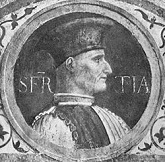



1411 On Feb. 1 after being unable to finish them off, the First Peace of Thorn (Torun) (1466, 1709) is signed between Poland-Lithuania and what's left of the Teutonic Knights, halting the Slavic advance by giving them Samogitia and an indemnity, even though P-L fails to get access to the Baltic. In Mar. a new ban is put on Jan Hus, but he keeps on truckin', preaching the disturbing doctrines of John Wycliffe; meanwhile, Antipope John XXIII tries to finance a war through the wholesale selling of indulgences, and Hus' preaching against it gets the city of Prague declared to be under a special curse from God. On May 19 the Battle of Roccasecc in Lazio, C Italy (birthplace of St. Thomas Aquinas) is a V for the allied army under Muzio Attendolo Sforza (1369-1424) (founder of the Sforza Dynasty) over Ladislaus of Naples, who retreats to a defensive line at San Germano, and signs a peace next June 14, with Antipope John XXIII paying him 75K florins, investing him with the crown of Naples, and names him gonfalonier of the Church; too bad, both renege while jockeying for position. On June 3 Leopold IV (b. 1371) dies without heirs, and his younger brothers divide the inheritance, with Ernest the Iron (1377-1424) receiving Inner Austria incl. Styria, and Frederick IV of the Empty Pockets (1382-1439) receiving Further Austria incl. Tirol; in 1414 Ernest becomes the last duke enthroned according to the traditional Carinthian rite, and the first Hapsburg to call himself archduke (which had been thought up by Rudolf IV); meanwhile Appenzell breaks off from Further Austria and becomes a protectorate of the Swiss Confederacy. On June 5 Ottoman prince Musa, with the help of the Serbs kills Suleiman at Edime, but the Serbs end up backing Musa's brother Mohammad as sultan, and a power struggle ensues. On July 24 a dispute over the earldom of Ross in the Scottish highlands results in the bloody Red Battle of Harlaw between Donald, lord of the Isles and Alexander Stewart, earl of Mar (an unstarved nephew of the duke of Albany); Donald burns Macbeth's old town of Inverness, and it is later rebuilt. After rival king Jobst of Moravia dies, Sigismund I of Luxembourg, son of HRE Charles IV, and brother of deposed HRE Wenceslaus IV is elected German king Sigismund I (1368-1437), with Wenceslaus allowed to keep Bohemia; Sigismund I succeeds the French king as the main protagonist for ending the papal schism, forcing Antipope John XXIII to call the Council of Constance of 1414, with a mission of reforming the Church from head to foot. The Burgundian-Armagnac dispute breaks out into civil war in France. The German nobles retake Flensburg from Eric VII of Denmark. Prince Henry is dismissed from the English Privy Council. Peace between Portugal and Castile ends 26 years of war, but throws the war economy into chaos; the well-read Queen Philippa proposes sending a military expedition to the Muslim kingdom of Fez in order to strike an alliance with Prester John and gain access to the Indian spice trade, and sends spies to North Africa, who discover Timbuktu, the center of importation of Muslim gold. Wallachia becomes a vassal state of the Ottoman Empire. You're a shining star? Ahmad Shah (-1442) becomes Rajput ruler of Gujarat in W India, and builds the capital city of Ahmadabad (Ahmedabad) (modern pop. 1.2M) on the Sabarmati River in Gujarat (290 mi. N of Bombay), complete with the Tin Darwaza (Triple Gateway) and the Indo-Saracenic Great Mosque (Jami Masjid) of Ahmadabad, with 300 elaborately carved pillars, becoming one of India's most magnificent cities. Architecture: London Guildhall (city council hall) in England is begun (finished 1440), becoming the only non-ecclesiastical stone bldg. in London to survive to modern times, becoming the site of the trials of Anne Askew, Lady Jane Grey, Thomas Culpeper, Thomas Cranmer, Roderigo Lopez et al., and the last public appearance of pianist Frederic Chopin on Nov. 16, 1848. Births: Two branches of Edward III converge in one kingmaker? English paper crown king and royal topological branch point Richard Plantagenet, 3rd Duke of York (d. 1460) on Sept. 21; son of Richard of Conisburgh, 3rd earl of Cambridge (1375-1415) (son of Edmund de Langley, 1st duke of York (1341-1402), son of Edward III] and Anne de Mortimer (1390-1411) (daughter of Roger de Mortimer, 4th earl of March (1373-98), (son of Philippa, 5th countess of March and Ulster (1355-82), daughter of Lionel of Antwerp, 1st duke of Clarence (1338-68), son of Edward III); husband of Cecily Neville (1415-95); father of Edward IV (1442-83) and Richard III (1452-85). Spanish poet Juan de Mena (d. 1456) in Cordoba. Islamic Mamluk scholar Abu al-Mahasin Yusuf ibn Taghribirdi (d. 1470) in Egypt. Deaths: Austrian duke Leopold IV (b. 1371) on June 3 in Vienna. Prague archibishop #5 (1403-11) Zbynek Zajic of Hasenburg (b. 1376) on Sept. 28 in Prespurk (Bratislava).
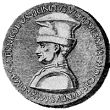



1412 On May 16 strongman Gian Maria Visconti (b. 1388) is assassinated in Milan by Ghibelline partisans, and his cruel ugly brother Filippo Maria Visconti (1392-1447) becomes duke #3 of messed-up Milan (until Aug. 13, 1447), going on to recover his father's Lombard territories incl. Genoa with the help of his condotierri Francesco Bussone, Count of Carmagnola (1382-1432), Niccolo (Niccolň) (1386-1444), and Francesco Sforza (1401-66). On Oct. 28 after both sides in the Flensburg dispute agree to allow Count Ulrich of Mecklenburg to mediate, and he awards the city to Denmark, Queen Margaret (Margreta) I (b. 1353), the "lady king" of Denmark, Norway, and Sweden dies suddenly of plague in Flensburg, and her grandnephew Eric of Pomerania becomes Eric (Erik) VII (1382-1459), sole ruler of those countries (until 1439); meanwhile the fight over Flensburg is back on. The Glyndwr (Glendower) Revolt (begun Sept. 16, 1400) ends with Wales being laid waste and Owen Glendower vanishing after refusing two pardon offers from Henry V; he dies in 1415. The Compromise of Caspe is agreed to, and Martin I's nephew Infante Ferdinand of the Castilian House of Trastamara (regent of Castile since 1406) defeats four rivals to become king Ferdinand I of Antequera "the Just" "the Honest" (1380-1416) of Aragon (until 1416), which incl. Barcelona, Valencia, Cerdanya, Roussilon, Majorca, Sardinia, Corsica, Sicily, and Athens and Neopatria in Greece, reuiniting the house of Aragon with Sicily, which had been separated since 1296; he conquers the Muslim town of Antequera in Granada this year - so all I need now is a bike? Basque whale hunters reach Iceland in their quest for this elusive quarry - call me Ishmael? Emperor (since 1382) Go-Komatsu (b. 1377) abdicates, and his eldest son Shoko (1401-28) becomes Japanese emperor #101 (until Aug. 30, 1428), after which only N court emperors are considered legitimate. Cheng Ho (Zheng He) returns from his 2nd voyage to Ceylon (begun 1408) with the king and royal family in chains, then begins planning his 3rd voyage - rubadubdub, thanks for the grub, yeah God? The Castilian Ghetto Edict makes sure that the perfidious Jewish murderers of Christ among them are thoroughly segregated from the good and innocent Christian sheep. Art: Master of Boucicaut, Portrait of Charles VI the Mad. Donatello (1386-1466), Statues of St. Peter, St. Mark and St. George (1412-6). Births: French holy warrior babe ("the Maid of Orleans") (St.) Joan of Arc (Jeannette or Jehanne d'Arc) (Jeanne Darc) (Joan la Pucelle) (d. 1431) on Jan. 6 in Domremy-la-Pucelle (Champagne). German elector of Saxony (1428-64) Frederick II (the Gentle) (d. 1464) on Aug. 22 in Leipzig; eldest son of Frederick I (1370-1428) and Katharina of Brunswick-Luneburg. Italian anatomist Arculanus (d. 1484). Deaths: Swedish king (1364-89) Albert of Mecklenburg (b. 1338) on Apr. 1 in Mecklenburg. Danish-Norwegian-Swedish queen Margaret of Denmark (b. 1353) in Flensburg (plague). Italian duke of Milan #2 (1402-12) Giovanni Maria Visconti (b. 1388) on May 16 in Milan (assassinated in front of the Church of San Gottaro).




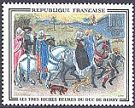
1413 On Feb. 13 the Disputation of Tortosa in Spain opens at the request of Antipope Benedict XIII, pitting Jewish scholars against Christian scholars incl. Joseph Albo (1380-1444) on matters of faith, with the aim of converting the Jews to Christianity by debate - well, later as we are toasting marshmallows we can say we tried? My complaint is I'm so cute but dang have you seen my backstage? On Mar. 20 46-y.-o. English king (since Sept. 30, 1399) Henry IV (b. 1367) dies at Westminster Abbey, and on Mar. 21 his 25-y.-o. son Prince Hal the Lancastrian is crowned Henry V (1386-1422) ("King Harry") of England (the 34th British monarch) (until Aug. 31, 1422); he is crowned on Apr. 9; under his rule England finally becomes a major power, and his court becomes the first to use mainly English; he releases Edmund de Mortimer, 5th earl of March, restores the titles and land of the Percy family, and honorably reburies the 13-y.-o. remains of Richard II; he restrains the use of armorial insignia by knights (until 1483); the Chancery Standard is developed during his reign for his chancery officials to use by the 1430s to replace French. Vive la France? On Apr. 27 Paris is taken over by the butchers' guild, led by skinner Simon Caboche (Lecoustellier), who on May 26 imposes the Ordonnance Cabochienne; the Armagnacs soon regain control and quash all hope for reform. In mid-May Ladislaus of Naples marches N, occupying and sacking Rome on June 8, then marching N to Umbria and N Latium, causing Florence to fold and sign a treaty recognizing his conquest of the papal states; too bad, in July 1414 Ladislaus falls ill, and is forced to return to Naples, dying on Aug. 6, on the 2nd anniv. of his mother's death. On Sept. 23 knight, boon companion to Henry V, and leading Lollard Sir John Oldcastle, Lord Cobham (1378-1417) (the real Falstaff?) is arrested and brought before Lollard-hating Thomas Arundel (1353-1414), archbishop of Canterbury (since 1399) on charges of heresy, and excommunicated; he escapes and goes into hiding in Wales, where he leads a Lollard Uprising. John the Fearless, duke of Burgundy is forced to flee Paris, allowing the Armagnacs to come into power in France. A revolt by Count James II of Urgell against Ferdinand I of Aragon (one of the candidates beat-out for the king job in 1412) is quashed, and the county of Urgell (founded 798) is absorbed by the county of Barcelona. Beyazid I's son Mehmed (Mehmet) I (the Restorer) (Celebi) (1389-1421) defeats and kills his brother Musa outside Constantinople, and emerges as Ottoman sultan #5 (until 1421), setting about restoring Ottoman strength after the Tamerlane era. Thomas a Kempis (1380-1471) is ordained a priest, going on to join the Brethren of the Common Life, a movement stressing the leading of a devout life. Art: Herman Limbourg, Jean Limbourg, and Pol Limbourg, Les Tres Riches Heures du Duc de Berry (The Three Rich Hours of the Duke of Berry) (1413-16); illuminated ms. showing daily life by the Flemish Limbourg brothers, who work in France for insatiable art collector the Duke of Berry from 1380-1416. Births: German Hohenzollern prince-elector #2 of Brandenburg (1440-70) Frederick II "Irontooth" "the Iron" (d. 1471) on Nov. 19 in Tangermunde; son of Frederick I (1371-1440); brother of Albert II Achilles (1414-86). Deaths: Anatolian poet Tajuddin Ibrahim Ahmedi (b. 1334); leaves Iskendername ("Alexander Narrative"), a verse life of Alexander the Great dedicated to Bayezid's son Suleyman. English king Henry IV (b. 1367) on Mar. 20 in Westminster Abbey. Ethiopian king (since 1382) Dawit I.

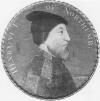



1414 On Mar. 13 Henry Chicheley (Chichele) (1363-1443) is recommended to the pope by Henry V for appointment as archbishop of Canterbury, and he receives the pall without going to Rome on July 24. On Apr. 30 the Leicester Parliament in England meets, passing a law making all Lollards into felons with orders to all justices of the peace to hunt them down and destroy their estates; William Shakespeare's Henry IV Act 1 Scene 2 claims that Henry Chicheley tempts Henry V into conquering France to divert Parliament from disendowing the Church, although it did the opposite and he never attended a session. In Oct. Jan Hus (b. 1369) is lured to his death by Antipope John XXIII to the keep-constant Council of Constance (1414-18), ostensibly to settle "causa unionis, reformationis, fidei", but in fact to try and condemn him for heresy after nearly killing him in a stinking dungeon; the council prohibits the cup to the laity during Communion, and confirms the Conciliar Theory that the authority of a gen. church council is superior to the popes, deposing all three current popes and electing a new one, which ups Sigismund I's capital and makes him the most influential monarch in W Europe; former pirate John XXIII is charged with 70 offenses, incl. piracy, murder, rape, sodomy, and incest, after which 16 "of the most indescribable depravity" are dropped in the interest of public decency?; meanwhile proposals to reform and reorganize the corruption and abuses of the rest of the hierarchy are debated, but never attain majority support, although the need for reform is universally recognized. On Nov. 12 the Disputation of Tortosa ends with no Jewish minds changed, causing the Roman Catholic Church to intensify forceful means of conversion of these stiff-necks to save their souls. After a plot against his life is discovered, Henry V attacks and captures a Lollard group, and has most of them hanged, pushing through anti-Lollard legislation allowing seizure of their books. A peace is declared between the Burgundians and Armagnacs in France, and Henry V takes advantage of the situation to ally himself with Burgundy. Henry Percy (d. 1455), 2nd earl of Northumberland (1393-1455) (son of Hotspur) has his honors and estates restored by Henry V. Joan of Brittany is arrested by her stepson John of Lancaster, 1st Duke of Bedford (1389-1435) (AKA John Plantagenet) (3rd son of Henry IV, brother of Henry V, and uncle of Henry VI), and imprisoned. Ferdinand I of Aragon creates the title of prince of Gerona for the heir to the crown of Aragon. Cologne spews its Jews. Sultan Mahmud Tughlak II dies, ending the Tughlak Dynasty in Delhi (begun 1315), and the Sayyid Dynasty begins in N India (until 1451), reduced to the Jumna Valley with iffy control over the Punjab; the Sayyids claim Arab descent from Prophet Muhammad, but nobody buys it and they can collect their revenues only at swordpoint? Sultan Mehmed I defeats a Karamanid army and recaptures Izmir and other territories from the Karamans, and restores Adrianople's power over the emirs of Anatolia (1414-15). Cheng Ho launches his Third Voyage from China to the Straits of Hormuz in a giant fleet carrying 30K slant-eyed men. The Medicis of Florence become bankers to the papacy (until 1476) - the original credit card trap? The Venetian Memorandum of the power and revenues of the states of Europe is pub. - you won't have to give up your doctor? Coffee is being drunk in Mecca; it later becomes known as a Sufi drink. Architecture: Sultan Mehmed I begins the Green Mosque (Yesil Camii) in Bursa (finished 1424). Births: Italian pope (1471-84) (founder of the Sistine Chapel) Sixtus IV (d. 1484) on July 21 near Savona, Liguria; joins the Franciscan Order, rising to minister gen. in 1464 and cardinal in 1467. German Hohenzolleran prince-elector #3 of Brandenburg (1470-86) Albert (Albrecht) II Achilles (d. 1486) on Nov. 9 in Tangermunde; son of Frederick I (1371-1440); brother of Frederick II (1413-71); father of John II Cicero (1455-99), Frederick I (1460-1536), and Siegmund (1468-95). Gujarat poet-saint Narsi (Narsinh) Mehta (d. 1481) (1409-88?) in Talaja, Gujarat - get his CDs? Persian poet Jami (d. 1492); last great classic poet of Persia? Deaths: English archbishop of Canterbury (1397, 1399-1414) Thomas Arundel (b. 1353) on Feb. 19. Hungarian-Croatian king (1390-1414) and Naples king (1386-1414) Ladislaus the Magnanimous of Naples (b. 1377) on Aug. 6 in Naples (STD?).










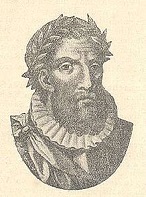

1415 The first documented cases of influenza (flu) appear in Paris - just in time to toughen up the French and allow them to give it to the defenseless Amerindians? On May 29 insufficiently anti-Jewish Antipope (since 1410) John XXIII (b. 1370) is forced to abdicate in favor of Antipope (since 1394) Benedict XIII, who on May 11 issues the bull Etsi Doctoribus Gentium against the Jews, banning the study of the Talmud, instituting forced Christian sermons, and restricting Jewish life completely, provoking mass feigned conversions; meanwhile in 1410-13 St. Andrews U., Scotland's first univ. is founded by Avignon Antipope Benedict XIII for Augstinian clergy. On July 4 Roman Pope (since 1406) Gregory XII (b. 1327) dies in Recanati in C Italy. Don't muss with us Huss? On July 6 Jan Hus (b. 1369) of Bohemia is burned at the stake in Constance (Konstanz) for heresy after HRE Sigismund I of Luxembourg (1368-1437), who had guaranteed him safe conduct signs his death sentence, earning the everlasting hatred of the Bohemians, and making it impossible to rule Bohemia when he takes it over in 1419, spawning the radical communistic anti-scholastic Taborites centered in gold mine-rich Tabor, and the less radical Ultraquists (Lat. "sub utraque specie" = in both kinds), who believe that both the wafer and the cup should be administered during the Eucharist; Sigismund I bans Duke Frederick IV of Austria for siding with Antipope John XXIII at the Council of Constance, causing him to lose the Aargau (old homeland of the Hapsburgs) to the Swiss, although with popular support he keeps Tirol, which he stabilizes by beginning silver mining, moving his court from Merano to Innsbruck. On July 19 (July 9 Old Style) Queen Philippa of Lancaster (b. 1360) dies of plague after making her children promise her on her deathbed to gain access to the Indies), and on July 25 (July 15 Old Style) a fleet of 200 Portuguese vessels carrying 45K men sails for Africa, led by her hubby John I and their sons Prince Duarte, Prince Pedro, and Infant Henrique, AKA Prince Henry the Navigator (1394-1460) (who is wounded), which on Sept. 1 (Aug. 22 Old Style) after an early a.m. surprise attack and only two days of fighting captures the African port of Ceuta (Sabtah) (Seba) off the N coast of Morocco (the Maghrib) from the Moors, becvoming the first European foothold in Africa, giving John I the new title of Lord of Ceuta while spurring a rising of Sufi sheiks in reaction to lead the defense against the *!?*! infidels; a flag of Lisbon with the Portuguese coat of arms added to the center; John I's eldest son Duarte (Edward) I is knighted; the Portuguese retain control until it decides to be controlled by Spain in 1640; Alvaro (Álvaro) Vaz de Almada, 1st Count of Avranches (1390-1449) hoists the new Flag of Ceuta, a flag of Lisbon with the Portuguese coat of arms added to the center; the Portuguese retain control until it decides to be controlled by Spain in 1640; John I's eldest son Duarte (Edward) is knighted; Almada is knighted for his services by Duke Peter of Coimbra, and June 1423 John I appoints him adm. of the sail fleet, outranking the adm. of the galley fleet, after which he is created 1st count of Avranches on Aug. 8, 1444 by Henry VI of England; Moorish POWs soon reveal that they trade salt for gold from Saharan traders, whetting their appetites to become a player - and they owe it all to a woman? On Aug. 11 English king (since Mar. 21, 1413) Henry V of England (1386-1422), with the tacit approval of John the Fearless of Burgundy, and hoping to take advantage of French anarchy reasserts his claims to the French throne, sails from Portsmouth with 10K men, and lays seige to Harfleur, rekindling the Hundred Years War (1337-1453); his brother John of Lancaster, 1st Duke of Bedford (1389-1435) is made lt. of England during his absence; after going up the coast of Normandy (Fecamp, Arques), Henry V goes E into Picardy to Amiens and Peronne, then swings N into Artois, heading for Calais; on Oct. 25 (St. Crispin's Feast Day) (Fri.) with the help of his 6K longbowmen Henry V and his "band of brothers" (Shakespeare) repeats the lesson of Crecy (1346) and wins big against the 30K-man French army hampered by their clunky knights (easy archery targets?) under Charles of Valois, Duke of Orleans (Orléans) (1394-1465) (future mad king Charles VI) and Charles d'Albret (-1415) (constable of France since 1413) at the 4-hour Battle of Agincourt near Arras in Flanders 50 mi. S of Calais (in an area with heavy clay-laced mud), destroying the flower of French knighthood (7K French vs. 100 English KIA?); immortalized in Shakespeare's Henry the V; Duke Charles of Orleans is captured after being discovered under a pile of corpses, incapacitated by his own heavy armor, and is taken to England where he is moved from castle to castle for 24 years with ransom prohibited by Henry V, passing his time by writing hunting and poetry in the ballade and rondeau forms in both French and English incl. Is she not passing fair? (later set to music by Edward Elgar) and "En la foret de longue attente", resulting in 2 vols. of poetry after his 1440 release; the actual battle figures were way more even than the English later claimed?; Charles VII's favorite Georges de la Tremoille (Trémoille) (1382-1446) is captured then soon released, going on to become a main opponent of Joan of Arc and become a royal favorite and grand chamberlain in 1427; the English reconquer Normandy (until 1449), undoing the work of Philip Augustus; Henry V is welcomed at Blackheath; Armagnac leader (constable of France) Bernard VII, Count of Armagnac (1360-1418) becomes virtual ruler of France. German king Sigismund I goes to Perpignan to try to induce Pope Benedict XIII to renounce his claims, and after being paid a king's ransom in gold to become one of the seven electors of the HRE, places the electorate of Brandenburg (capital Berlin) under the rule of Burgrave Frederick VI of Nuremberg, who becomes Frederick I (1371-1440), first prince-elector of Brandenburg (son of Burgrave Frederick V of Nuremberg), becoming the first member of the House of Hohenzollern (not to be confused with the kaput stuffy Hohenstaufens of 1138-1268) to rule the Margraviate of Brandenburg (until 1918); Frederick I begins the task of quelling the turbulent nobles and centralizing the govt., while extending the boundaries; too bad, the ambition of the New Kid on the Block Hohenzollerns puts them on a collision course with the Hapsburgs, which results in a final V in 1871 at the expense of the elimination of Prussia as an independent state. Welsh rebel Owen Glendower is defeated by the English after 16 years of rebellion, but he refuses amnesty, remaining in exile for the rest of his life (dies 1416). Richard, earl of Cambridge (grandson of Edward III through his 5th son Edmund, duke of York) is executed by Henry V for plotting to put Edmund Mortimer, umpteenth earl of March on the throne. The First Ottoman-Venice War begins after Muslim pirates raid the Aegean islands (ends 1416); the Ottomans recapture Kroya and Avlona (modern-day Vlorë) in Albania (1415-17). Aargau NW of Lake Lucerne joins the Swiss Confederation. About this year the Muslim Adal Sultanate (Kingdom of Adal) E of Aksum in the N Horn of Africa (Somalia) is founded by descendants of Abdal of Yemen, with capital moved to in Dakkar in 1433 and Harar in 1520, going on to control large parts of modern-day Somalia, Ethiopia, Djibouti, and Eritrea while giving Christian Ethiopia hell. Italian humanistic scholar Giovanni Francesco Poggio Bracciolini (1380-1459), a papal secy. at Rome from 1403-53 begins digging up lost Latin mss. in various monasteries in France, Switzerland, and Germany (until 1417). Architecture: The 60-ton Beijing Bell is erected in Beijing, China, becoming its most famous. Nonfiction: Anon., Ars Moriendi (The Art of Dying); guidance for clergymen and the dying in their final moments, listing rules for a good (righteous) death incl. repentance of sins, forgiveness of enemies, and acceptance of one's fate. Births: English breed mare ("the Rose of Raby") ("proud Cis") Cecily (Cecylle) Neville, Duchess of York (d. 1495) on May 3 in Raby Castle, Durham; daughter of Ralph Neville, 4th Duke of Neville (1364-1425) and Joan Beaufort, countess of Westmorland (1379-1440), illegitimate daughter of John of Gaunt; wife of Richard Plantagent, 3rd Duke of York (1411-60), with whom she has four sons, incl. Edward IV (1442-83) and Richard III (1452-85). Austrian "AEIOU" Hapsburg archduke, German king (1440-86), and HRE (1452-93) Frederick III (the Peaceful) of Hapsburg (Frederick V of Austria) (Friedrich IV of Germany) (d. 1493) on Sept. 21 in Innsbruck; son of Ernest the Iron of Hapsburg, duke of Styria and Carinthia (1377-1424); brother of archduke Albert VI the Prodigal (1418-63). Flemish painter (in Leuven, 1457-75) Dieric Bouts (d. 1475) in Haarlem; student of Rogier van der Weyden; pioneer of a single vanishing point. Scottish politician James Hamilton, 1st Lord Hamilton, 6th Laird of Cadzow (d. 1479) in Cadzow Castle, south Lanarkshire; son of James Hamilton, 5th Laird of Cadzow and Lord Douglas of Dalkeith; husband of Lady Euphemia Graham, widow of the 5th Earl Douglas; stepfather in law of the 8th Earl Douglas. Greek Byzantine scholar-philosopher John Argyropoulos (d. 1487) in Constantinople; reviver of Greek classical learning and study of Plato in the West (Italy); teacher of Johannes Reuchlin, Guillaume Bude, and Lefevre d'Etaples. English "Brut Chronicles: printer #1 William Caxton (Causton) (d. 1492) (b. 1422?). English noble breed mare Jacquetta of Luxembourg, Duchess of Bedford, Countess Rivers (d. 1472); elder daughter of Peter I, count of Brienne (1390-1433), and Margaret de Baux (Margherita del Balzo of Andria) (1394-1469); mother of Elizabeth Woodville (1437-92), wife of Edward IV. Portuguese explorer Afonso Goncalves Baldaia (d. 1481) in Porto. Deaths: Greek Byzantine statesman Manuel Chrysolorus (b. 1350). Portuguese queen (1387-1415) Philippa of Lancaster (b. 1360) on July 19 Sacavem (plague). Czech religious reformer Jan Huss (b. 1369) on July 6 in Constance (burned at the stake); last words: "In 100 years God will raise up a man whose calls for reform cannot be suppressed"; in 1999 Pope John Paul II expresses "deep regret for the cruel death inflicted" on him, and suggests an inquiry to explore clearing him of heresy: "One pays for confession, for Mass, for the sacrament, for indulgences, for churching a woman, for a blessing, for burials, for funeral services and prayers. The very last penny which an old woman has hidden in her bundle for fear of thieves or robbery will not be spared by the villainous priest."
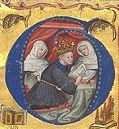


1416 On Apr. 2 Ferdinand I the Just (b. 1380) dies after he justly gets the Council of Counstance to depose antipope Benedict XVIII for refusing to negotiate an end to the 40-y.-o. Great Schism as promised then refusing to abdicate; his son Alfonso V the Magnanimous (1396-1458) (a knight of the Order of the Dragon) becomes king of Aragon, Majorca, Sardinia, and Corsica, and count of Barcelona (until 1458), going on to become one of the key players in the early Renaissance. On May 29 the first war between Venice and the Ottoman empire is won by Doge Pietro Loredano, who defeats the Turks in the Dardanelles at the Mel Gibsonless Battle of Gallipoli and forces a peace treaty in 1419, recognizing Ottoman and Venetian interests in Albania; he helps set the new fashion of the Venetian Portait, a three-quarter view with the gaze displaced, beating them stupid antique profile-only coins - the 15th cent. is where it's at? On May 30 HRE Sigismund I lets Jan Hus follower Jerome of Prague (b. 1379) follow him to the flames for heresy, and allies with Henry V of England; an English fleet commanded by John of Lanaster defeats the French at the mouth of the Seine River. Valais in the Rhone Valley E of Geneva joins the Swiss Confederation. Charismatic preacher-theologian Sheik Bedreddin (1359-1420) leads a revolt against the Ottomans in Anatalia and the European provinces, and is killed after a major military effort. False Mustafa (d. 1422), who claims to be a son of Bayezid I leads another rising against the Ottoman sultan in Byzantium and Walachia, but his forces are defeated and he flees to the Byzantine emperor. A new mediation attempt over Flensburg is made by the Hanseatic Lague, and Denmark pledges the city of Schleswig as security, while the Holsteiners pledge the stronghold of Tonning; too bad, the agreement soon breaks down. Cheng Ho's Chinese fleet reaches Aden. Amadeus VIII gets Savoy elevated into a duchy by HRE Sigismund I. Dutch fishermen are the first to use drift nets. The first law regulating barbers in the practice of surgery is enacted in London - what I want to know is if they could get away with wiping their blades in their buns? After overthrowing the aristocrats and setting up a govt. of the burghers and craftsmen, brewer Johannes Lupi organizes the first brewers' guild in the Baltic Sea port of Danzig, Germany (modern-day Gdansk, Poland), which goes on to become known for the great number and wealth of its members, and their military prowess. The Shoton (Yogurt Feast) in Tibet is first held. Drepung Gomang Monastic U. in Tibet is founded. The complete text of the lost work on rhetoric by Quintilian (35-95), Institutio Oratoria is discovered by Poggio Bracciolini at the St. Gall Monastery - a giant blow for or against democracy? Births: Danish king (1440-8) and Swedish king (1441-8) and Norwegian king (1442-8) Christopher III of Bavaria (d. 1448) on Feb. 26 in Neumarkt in der Oberpfalz; son of Duke John of Pfalz-Neumarkt and Catherine Vratislava (sister of Eric of Pomerania); husband of Dorothea of Brandenburg (1430-95). Italian monk (founder of the Order of Minims) (St.) Francis of Paola (Paula) "the Fire Handler" (d. 1507) on Mar. 27 in Paola. French painter Jean Fouquet (Foucquet) (d. 1480) in Tours; court painter to Charles VII and Louis XI; founder of the French school of painting? - sounds like? Deaths: French royal Duke Jean of Berry (b. 1340) on June 15 in Paris; leaves a huge art collection which is sold to replenish the royal treasury and pay combatants of the 1415 Battle of Agincourt. Welsh rebel Owen Glendower (b. 1359). Spanish king Ferdinand I the Just (b. 1380) on Apr. 2 in Igualada, Catalonia.




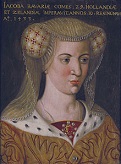
1417 On May 31 Duke William II of Bavaria (b. 1365) dies, and his daughter (by Margaret of Burgundy) Jacqueline of Bavaria-Straubing (1401-36) is passed over for succession to his counties of Hainaut and Zeeland in favor of her uncle (youngest son of Duke Albert I and brother-in-law of John the Fearless of Burgundy) John III (the Pitiless) of Bavaria-Straubing (1374-1425) (first bishop of Liege since 1389, known for hanging rebels from the trees in great numbers), pissing her off and causing her to begin a struggle to get what's coming to her; meanwhile John of Bavaria goes on to hire painter Jan van Eyck (1385-1441), who comes to his court in The Hague in 1422, after which John the Good of Burgundy lures him away. On July 23 Henry V leads an army to the Continent and marches across Normandy in a 3-year victory tour, capturing Caen. Abraham and Martin and John, Medieval Edition? On July 26 the Council of Constance deposes antipope (since 1394) Benedict XIII, ending the Great Schism of the West (begun in 1378); on Nov. 11 Oddone (Ottone) Colonna (Eau de Cologne?) (born in Genazzano near Rome) is elected Pope (#205) Martin V (1368-1431); rockhard lunatic Benedict XIII returns to his rockhard fortress near Valencia, Spain, and holds out as a pretender pope until his death in 1423. I'm your Venus, I'm your Fire of Jordan? On Dec. 14 Sir John Oldcastle (b. 1378), leader of the Lollard religious sect is hanged and burned (alive?) for heresy along with 36 companions; the persecution of Lollards heats up for the next 10 years, driving them underground until the time of Martin Luther. Prince Mircea I the Elder of Wallachia acknowledges Turkish suzerainty in return for a yearly tribute of 3K gold pieces to keep the Ottoman Muslims away. Future Charles VII of France (b. 1403) becomes dauphin of France after the last of his four elder brothers dies: Charles (1386), Charles (1392-1401), Louis (1397-1415), John (1398-1417). Numerous bands of gypsies enter France from NE Europe, and spread into Spain - Sonny and Cher jokes here? Inventions: Printers in Antwerp use movable type. Science: The long-lost full text of Lucretius' De Rerum Natura (60 B.C.E.) is rediscovered in St. Gall Monastery by Italian humanist Gian Francesco Poggio Bracciolini (1380-1459), along with seven orations of Marcus Tullius Cicero, a commentary of Quintus Asconius Pedianus on five speeches of Cicero, and the history of Ammianus Marcellinus. Births: Bavarian duke (1450-79) Ludwig (Louis) IX (the Rich) of Bavaria-Landshut (d. 1479)Sigismondo Pandolfo Malatesta (the Wolf) (d. 1468) on June 19 in Brescia; bastard son of Pandolfo III Malatesta and Antonia Barignani; defeats his rivals for Rimini at age 15. Swiss mystic (St.) Niklaus von Flue (d. 1487) in Unterwalden; feast day: Mar. 21/Sept. 25. Deaths: English nobleman Richard de Vere, earl of Oxford (b. 1385) on Feb. 15. Christian mystic Julian(a) of Norwich (b. 1342); leaves Sixteen Revelations of Divine Love - I got you babe?
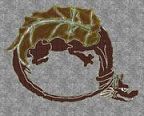



1418 On Jan. 31 prince (since 1386) Mircea cel Batran (Mircea I the Elder) of Wallachia (b. 1355) dies, leaving illegitimate son Vlad III, father of Vlad IV the Impaler hanging around In May Duke John the Fearless of Burgundy returns to Paris, seizes the king, massacres the Armagnacs, and kills Bernard VII, causing dauphin Charles to flee to S France - it was a very good year? In Nov. Henry V begins sieging Rouen (ends Jan.); Sir Thomas Malory (1405-71) fights for Henry V in his conquest of Normandy. The Lam Son Insurrection against the Ming Dynasty begins. The Portuguese, led by Prince Henry the Navigator explore the Madeira Islands this year and next, becoming Henry's first discovery. Mircea the Elder dies, and his son Michael (Mihael I) (-1420) becomes prince of Wallachia (until 1420). Poggio Bracciolini visits England (until 1423). T'aejong dies, and Sejong the Great (1418-50) becomes Yi king of Korea, becoming their most enlightened king. Rich landlord Le Loi (1385-1433) leads Vietnamese forces against the invading Chinese, and defeats them in 1428, becoming emperor of Vietnam in 1428 (until 1433). James I of Scotland sends some of his Scots Guard to Charles VII of France, who settle there and become the Garde Ecossaise (Écossaise) (Fr. "Scottish Guard"), the personal bodyguard of the French kings (until 1830) - the original Beam Me Up Scotty? The Jews are expelled from Trier. Ashikaga shogun Yoshimitsu takes up Japanese noo drama. 10-y.-o. Rene I of Anjou (1409-80) succeeds Nicolas Flamel as grandmaster of the Priory of Sion (until 1480), with his uncle Cardinal Louis of Bar as regent :). Architecture: Gowharshad Agha orders the construction of Gowharshad Mosque in Mashad. Inventions: Helgen become the first pictorial block prints in Europe. Nonfiction: Anon., The Great Book of Lecan; written in Ireland. Nonfiction: Thomas a Kempis (1380-1471), Imitatio Christi (The Imitation of Christ) (1418-27); a self-abusefest for monks who think that the Passion is a Cureall for Booty Night?; biggest bestseller since the Bible. Births: Cyprus king (1432-58) John II/III (d. 1458) on May 16 in Nicosia; last of the line of Raymond of Antioch (1115-49); husband (1435-) of Aimee (Amadea) Palaeologus of Montferrat (1429-40) and (1441-) Helena Palaeologus (1428-58) (daughter of Theodore II Palaeologus). Austrian archduke Albert VI (the Prodigal) (d. 1463) on Dec. 12 in Vienna; son of Duke Ernest the Iron (1377-1424); brother of HRE Frederick III (1415-93). English composer-organist Henry Abyngdon (Habyngton) (d. 1497); first to receive an English musical degree (B. Music from Cambridge). Deaths: French alchemist Nicolas Flamel (b. 1330). Wallachian prince (1386-1418) Mircea I (b. ?) on Jan. 31.

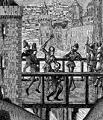




1419 On Jan. 19 after Duke John the Fearless of Burgundy does nothing to prevent it, Henry V of England finishes the capture of Rouen, completing his conquest of all of Normandy except Mount St. Michel by July, opening the way to Paris (which is occupied by Duke John's troops); Norman French who fought against Henry V are severely punished, incl. Alain Blanchard, who hung English POWs from the walls and is summarily executed, and Robert de Livet, canon of Rouen, who excommunicated Henry V and is imprisoned in England for five years; the English occupy Dieppe 33 mi. N of Rouen (until 1435); Henry accuses his stepmother of witchcraft, claiming she caused his father's death, then seizes her money - of course? On July 11 Dauphin Charles parleys with Duke John the Fearless of Burgundy (b. 1371) on the Bridge of Pouilly (Pouilly-le-Fort) near Melun, swearing peace and agreeing to a 2nd parley, which takes place on Sept. 10 on the bridge in Montereau, and ends up as a mortal ambush of the duke. On Aug. 16 Bohemian king (since Nov. 29, 1378) and HRE (1376-1400) Wenceslaus IV the Drunkard (Lazy) (b. 1361) dies, leaving Bohemia in a deep crisis caused by the betrayal of Jan Hus, and guess-who HRE Sigismund I of Luxembourg (1368-1437) succeeds to the throne of Bohemia, being immediately challenged by the growing pissed-off Hussite movement incl. most of the Czech pop. in the Kingdom of Bohemia, whose members hate his huts for what he did to Jan Hus, and on July 30 start the Hussite (Bohemian) Wars (end Jan. 15, 1437), with most of the Czech pop. of the kingdom of Bohemia taking on the Roman Catholic Church and its crusaders, plunging the country into almost 20 years of extreme violence, with hand-held firearms extensively used; Tyn Church (Church of Our Lady Before Tyn) in Prague becomes the Hussite command center; the Hussite Wars hasten the Reformation in Bohemia, while surging Bohemian nationality causes the Bohunks to block any hope of German unification and break off from Germany permanently; meanwhile Sigismund I has trouble getting crowned HRE in Rome, taking until May 31, 1433. In Aug. Henry V reaches the walls of Paris. On Sept. 10 Duke John, who had been wavering in his support of Henry V after seeing him take Rouen and began negotiating with the Armagnacs is assassinated by Dauphin Charles' men during his parley with him at the Bridge of Montereau outside the dauphin's castle, and his son Philip III the Good (1396-1467) succeeds him as duke of Burgundy (until 1467), immediately throwing himself into Henry V's arms at Arras in order to take revenge, and developing a lifelong phobia for bridges; the French court does ditto, entering in a 6-mo. negotiation. Juan II reaches his majority and takes over rule of Castile and Leon. The Madeira (Port. "timber") Islands 250 mi. N of the Canary Islands in SW Portugal are claimed by sailors in the service of Prince Henry the Navigator, becoming the first territorial discovery of the Age of Discovery. Henry V of England imposes rigid legal regulations covering the use of coats of arms to stop court battles, forbidding them unless by right of ancestry or gift from the crown. Architecture: The Doge's Palace in Venice receives a new facade. Florentine architect Filippo Brunelleschi (1377-1446) receives his first commission to build Ospedale degli Innocenti (Hospital of the Innocents) foundling hospital in Florence. Births: Japanese emperor #102 (1428-64) Go-Hanazono (Hikohito) (d. 1471) on July 10; eldest son of prince Fushimo-no-miya Sadafusa (1372-1456) and Sachiko (1390-1448). Dutch reformer-scholar Johann Harmensz Wessel Gansfort (Goesport) (d. 1489) in Groningen; predecessor of Luther. Deaths: Spanish missionary St. Vincent Ferrer (b. 1350) on Apr. 5 in Vannes, Brittany. Korean Chosun Dynasty king #2 (1398-1400) Jeongjong (b. 1357) on Oct. 15. Bohemian king (since 1378), German king (1376-1400) and HRE (1378-1400) Wenceslaus IV the Drunkard (b. 1361) on Aug. 16 in Kunratice (near Prague); dies of a heart attack while hunting. French duke of Burgundy (1404-19) John II the Fearless (b. 1371) on Sept. 10 in Montereau (assassinated).



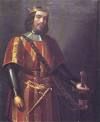

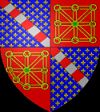

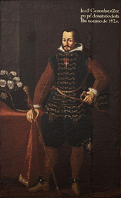
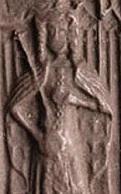


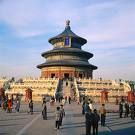
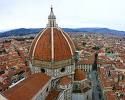
1420 About this decade the Middle English word "infidel" is coined from the Latin "infidelis" (unbelieving). On Feb. 1-14 the Second Coming of Christ is coming, according to Martinek Hauska of Prague, who gains a group of followers and goes on a rampage "purifying the Earth" of false clergymen, holing up in an abandoned fortress called Tabor for decades, until they are finally quashed by the Bohemians in 1452. In Mar. Pope Martin V at the urging of HRE Sigismund I preaches a crusade against the Hussites; in July Roman Catholics led by HRE Sigismund I's secy. (since 1417) Pier Paolo Vergerio the Elder (1370-1445) engage in a disputation with the Hussites in Prague; on Nov. 1 a force of 12K Hussite Bohemian peasants under blind gen. Jan Zizka (Johann Ziska) (1360-1424) of Trocnov defeats Sigismund I's 18K soldiers at the Battle of Vysehrad Castle in Prague, and expels him from Bohemia after he has himself crowned king of Bohemia in Prague. Kiss me, Kate? On May 21 after defeated Duke Philip III the Good of Burgundy aided by French queen Isabelle of Bavaria talk mad Charles VI into it, and French dauphin Charles (known for dressing in red, white, and blue and flying a flag showing a mailed fist clutching a naked sword) is forced to withdraw from battle with Henry V of England and disinherited as illegitimate (which he might be, since Isabelle had a ton of pretty boys), Charles VI, Philip III and Henry V sign the Treaty of Troyes, affirming the 1419 alliance, allowing the English to retain all of their conquests as far as the Loire River and recognizing Henry V as regent of France and Charles VI's heir to the throne of France while holding dauphin Charles responsible for the murder of Philip's father John the Fearless; on June 2 per the treaty Charles VI's daughter Catherine of Valois (1401-37) is married to Henry V; in June-July Henry V sieges and captures Montereau, causing dauphin Charles to flee to the protection of his mother-in-law Yolande of Aragon in the Loire Valley of S France; in Nov. Henry V captures Melun, then returns to England. On Sept. 3 Scottish regent Robert Stewart, duke of Albany (b. 1339) dies at Stirling Castle, and his son (by wife Margaret Graham, Countess of Menteith) Murdoch (Murdac Stewart) (1362-1425) becomes duke of Albany and regent, becoming known for his inability to control his sons. Venice finally subjugates Dalmatia and takes it from Hungary after 300 years (begun 1115). Juan (John) II "the Great" of Aragon (1397-1479), brother of Alfonso V of Aragon marries Navarre heir Blanche of Navarre (1387-1441) (youngest daughter of Sancho VI of Navarre and Sancha of Castile); Joanna II of Naples designates Alfonso V as her heir. Dani II becomes prince of Wallachia (until 1421), going on to trade with his rival Radu II the Bald 5x by 1431 (Radu 4x). Shah Rukh of the Timurids mounts the first of three campaigns (until 1434) against the Black Sheep (Qara-Qoyunlu) Turks in W Iran, successfully keeping them from taking over, and allying himself with their chief rivals the White Sheep (Aq-Qoyunlu) Turks. The Portuguese send Thome (Thomé) Pires to the new Chinese capital of Peking (Beijing). Sugar cane from Sicily is planted in the Madeira (Port. "timber") Islands 330 mi. W of Morocco (along with cows, pigs, and sheep) after Portuguese navigator Joao Concalves Zarco (1390-1471) et al. discovered it the year before, after which slaves are imported from Africa and the Canary Islands and forced to dig 2.1km of irrigation canals, turning Madeira into the #1 sugar producer for Europe within a few decades, with exports of 280 tons of sugar in 1472 peaking, at 2,500 tons in 1506; too bad, one pound of sugar requires 50 pounds of fuel wood, and by 1530 production falls 90% as forests are depleted, and by 1560 wine replaces sugar as Madeira's main export; the genesis of capitalism and the world ecology of capital? Innsbruck on the Inn River 80 mi. S of Munich (on the site of the ancient Roman station of Veldidena) becomes the capital of Tyrol (Tirol). The pesky Jews are expelled from Lyons; Jews remain in France only in Provence and in the possessions of the Holy See; they are also expelled from Vienna; meanwhile Pope Martin V forcibly reinstates the old privileges of the Jews in Rome, and forbids forced baptism of Jewish children under age 12. Prince Henry the Navigator (1394-1460) becomes gov. of the Order of Christ (until 1460); the order traces back to the Knights Templar? By this year the town of Kishinev (Chisinau) (modern-day pop. 532K/685K) on the Byk River (tributary of the Dniester River) 90 mi. NW of Odessa is founded. The English rhyming phrase 30 days hath September, April, June, and November" is first mentioned; in 1562 it appears in Richard Grafton's "Abridgement of the Chronicles of England". Architecture: The Duomo (Cupola) of Florence Cathedral is designed by Filippo Brunelleschi based on the fact that half of an egg shell stands on its own; it takes until 1443 to finish; in 1421 he is issued a 3-year patent for a barge with hoisting gear for carrying marble on the Arno River. When I wear black I don't want flakes but I do want healthy hair? Chinese Ming emperor Yongle founds Dongchang, and moves his capital from Nanjing to Khanbalik, renaming it Peking ("northern capital") (modern-day Beijing), building a wall around the city, and establishing his court S of the old Mongol court; Tartar City in Peking (begun 1409) is completed; the 178-acre Forbidden City (Tzu Chin Ch'eng = "Forbidden City of the Pole Star") in Peking inside the Imperial City (Huang Cheng) is begun; it is surrounded by a 120-ft. moat and pink-washed walls, and contains the imperial palace and bldgs. roofed with yellow porcelain tile, becoming the home of 24 emperors until 1911; the Great Temple of the Dragon (Heaven) is built in a large tree-shaded park in Peking on the E side of the road leading to the main entrance of Tartar City in a 1-mi.-square enclosure, where the emperor worships periodically - I'm the kind of guy who goes to the zoo and wails on the animals? Inventions: About this time Laurens Janszoon Koster (1370-1440) of Haarlem, Netherlands makes the first known printed books after carving letters from bark for his grandchildren and noticing the impressions left in the sand. Science: In this decade future Persian shah (1447-9) Ulugh Beg (1393-1449) founds the Samarkand (Ulugh Beg) Observatory, which has instruments to measure precise star positions (the last great Muslim observatory?), compiling books of trigonometric tables of sine and tangent values accurate to 8 decimal places; Muslim Science remains far ahead of Christendom until about 1600. Births: German printing pioneer Albrecht Pfister (d. 1466). Polish Hussite leader George of Podebrad (Podiebrad) (d. 1471); leader of the Ultraquists (moderate Hussites). Welsh bard Dafydd Nanmor (d. 1485). Italian painter Piero della Francesca (d. 1492). Dutch (Flemish) composer Johannes (Jean de) Ockeghem (Hocquegam) (Okeghem) (Ogkegum) (Okchem) (Hocquegam) (d. 1496) (b. 1410-25). Italian painter Benozzo Gozzoli (d. 1497) in Florence. Spanish Grand Inquisitor (first inquisitor gen.) (1483-) (Dominican monk) (Iron Chef of Roman Catholicism?) Tomas (Tomás) de Torquemada (d. 1498) in Torquemada (Valladolid?); nephew of Cardinal Juan de Torquemada; his grandmother was a converted Jew? - torture de muddah? Scottish poet Robert Henryson (d. 1500). English archbishop of Canterbury (1486-1500) Cardinal John Morton (d. 1500) in Dorset; educated at Balliol College, Oxford U. Italian Venetian doge (1485-1501) Agostino Barbarigo (d. 1501); brother of Marco Barbarigo (1413-86). Deaths: Scottish regent Robert Stewart, duke of Albany (b. 1339) on Sept. 3 in Stirling Castle.

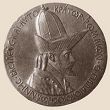


1421 On Feb. 23 Pope Martin V issues a bull reminding Christians that Christianity is derived from Judaism, and warning friars not to incite against the Jews; too bad, next year he withdraws it - what a bunch of bull? In Feb. king (since 1384) Razadarit (b. 1368) dies in a hunting accident, and his son Binnya Dhammaraza (1392-1424) becomes Hanthawaddy king #10 of Burma (until 1424), facing rebellions by his brothers Binnya Ran I and binnya Kyan. On Mar. 8 Cheng Ho (Zheng He) begins his Fifth Voyage from China, scheduled for two years in a fleet of giant 9-masted ships, during which he discovers America? On May 26 sultan (since 1413) Mehmed I the Restorer (b. 1389) dies, and his son Murad II (1403-51) succeeds him as Ottoman sultan #6 (until 1444), returning the Ottoman Empire to the old imperial expansion mode while restoring the recruitment of slaves (devshirme) to counter the political power of Turkish nobles, and basing the Janissary infantry on them. On June 1 the Moravian-Czech Diet of Caslav declares Sigismund I deposed as king of Bohemia, and Lithuanian grand duke Witowt is elected anti-king of Bohemia, sending his nephew Duke Sigismund Korybut (1395-1435) to Bohemia as his vicar; Hussite incursions into Germany begin. On June 10 Henry V sails for France for his last military campaign, and in July-Aug. sieges and captures Dreux, relieves allied forces in Chartres, then sieges Meaux in Oct. (until May 1422). The U. of Paris and the Estates-Gen. approve the Treaty of Troyes; meanwhile, except for a few strongholds only the part of France S of Paris remains loyal to the finless dauphin and refuses to abide by the Treaty of Troyes, causing Henry to drive his forces S across the Loire and begin the conquest of Armagnac territory, which he continues until his death in 1422; the dauphin holes-up in Bourges, gaining the nickname Roi de Bourges; late in the year Henry V, sick from dysentery contracted in the Armagnac campaign returns from Normandy to England, leaving his brother Thomas, duke of Clarence as gov. of Normandy, but the French defeat him, and Henry V dies before he can help. John VIII Palaeologus (Palaiologos) (1392-1448) becomes co-emperor of the Byzantines with his father Manuel II (until 1425). Philip III the Good of Burgundy acquires Namur. The Holsteiners regain Haderslev, Schleswig, and Tonder from Denmark. Giovanni de' Medici is elected gonfaloniere of justice (supreme feudal lord) (godfather?) in Florence, and the de' Medici family controls Florence until 1737, except short interruptions in 1491-7 (Savonarola), 1501-12 (Repub. of Florence) et al. Milan subjugates Genoa. Florence, eager to have permanent sea access buys Livorno (Leghorn) in W Tuscany, and establishes the Consuls of the Sea. The Zuider Zee rises and engulfs 70+ Dutch villages, killing 100K - one of those little history tidbits that makes you believe there is no God? Architecture: The Green Mosque of Mehmed I (begun 1419) in Bursa, Turkey is completed in the last Ottoman capital until the 1453 capture of Constantinople. Inventions: Prince Henry the Navigator (1394-1460), equipped with the Muslim secret weapon of the astrolabe, making his Portuguese fleet the only Euro fleet able to navigate open waters assembles Europe's leading maritime experts in Sagres on Cape St. Vincent, and develops the amazing small, light, 3-masted (square, lateen, or both) Caravel, which can outrun other vessels even when fitted with cannons, and/or carry more cargo, becoming a quantum leap in oceangoing technology, enabling the Portuguese to win the Tour de Lance in colonizing Africa, India, America et al. Births: Spanish king of Navarre-not Charles (Carlos) IV of Navarre, Prince of Viana (d. 1461) (AKA Don Carlos) on May 29; son of John II of Aragon (1397-1479) and Blanche of Navarre (1387-1441); husband (1439-48) of Agnes of Cleves (1373-1448) (daughter of Adolph I of Cleves and Mary of Burgundy, sister of Philip III the Good of Burgundy). English king (1422-71) Henry VI (d. 1471) on Dec. 6 in Windsor Castle, Berkshire; only son of Henry V (1387-1422) and Catherine of Valois (1401-37); father of Edward of Lancaster, prince of Wales (1453-71). French mistress (of Charles VII) Agnes Sorel (d. 1450); first official mistress of a French king. Irish statesman Thomas FitzJohn FitzGerald, 7th Earl of Kildare (d. 1477); son of John "Shaun Cam" Fitzmaurice FitzGerald, 6th Earl of Kildare (-1427); father of "the Great Earl" Gerald FitzGerald, 8th Earl of Kildare (1456-1513). Italian Renaissance humanist and gastronome (Vatican librarian) Bartolomeo Platina (d. 1481) in Piadena (Platina). French statesman and cardinal (1468) Jean Balue (d. 1491) in Angle, Poitou. Deaths: Burmese king (since 1384) Razadarit (b. 1368) in Feb. in Pegu. Ottoman sultan #5 (1413-21) Mehmed I the Restorer (b. 1389) on May 26.



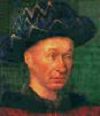

1422 On May 2 after a siege Henry V captures Meaux in France. In June Constantinople is sieged by co-emperor Murad II, and John VIII Palaeologus supervises the defense. On Aug. 31 after designating his able younger brother John of Lancaster, 1st Duke of Bedford (1389-1435) as "protector and defender of the kingdom", 34-y.-o. king (since Mar. 21, 1413) Henry V (b. 1387) dies near Paris of dysentery contracted during the siege of Meaux, his dream of rebuilding the walls of Jerusalem unfulfilled, and 1 mo. too early to become king of France as sickly Charles VI outlives him; on Aug. 31 his 9-mo.-old. only son Henry VI (1421-71) becomes king of England (the 35th British monarch) (until Aug. 31, 1422), and by the terms of the 1420 Treaty of Troyes is now in line for the French throne; John of Lancaster transfers his duties in England to his younger brother Duke Humphrey of Gloucester (1390-1447) (4th son of Henry IV and 1st wife Mary de Bohun), and takes over English affairs in France as regent in the name of Henry VI; meanwhile French breed mare Marie of Anjou (1404-63) (daughter of Louis II of Anjou and Yolande of Aragon) marries French dauphin Charles (later Charles VII) in Bourges, and they go on to have 12 children, incl. Louis XI (b. 1423); meanwhile Jacqueline of Hainaut (1401-36), daughter of Duke William IV of Bavaria (who married her cousin Duke John IV in order to persuade Philip III the Good of Burgundy to help her recover her inheritance of Hainaut, and got an annulment when he refused, then fled to England and got lucky) marries Duke Humphrey of Gloucester, and this time he's game to get a piece of her hiney, er, Hainault; meanwhile English bishop of Winchester (1403-47) Henry Beaufort (1374-1447) (who was offered a cardinal's hat by Pope Martin V, but Henry V wouldn't let him take it, and finally gets one in 1426) begins a war for control of a nearly lawless kingdom dominated by petty nobles via the king's council; eventually the Beauforts, Henry VI's half-uncles, sons of John of Gaunt (born out of wedlock but legitimated by act of Parliament) win, but it takes two decades. On Sept. 27 the Treaty of Lake Melno between the Teutonic Knights, the kingdom of Poland, and the grand duchy of Lithuania resolves the territorial dispute over Samogitia (Zemaitija) ("lowlands") in NW Lithuania, settling the Prussian-Lithuanian border for the next five cents., becoming one of the most stable nat. borders in Europe, surving to modern times as the border between the Repub. of Lithuania and Kaliningrad Oblast in Russia. On Oct. 21 king (since Sept. 16, 1380) Charles VI the Mad (b. 1368) of France dies in Paris, and on Oct. 21 his girlie man son (by wife Isabelle of Bavaria) dauphin Charles claims the throne as French Valois king #5 Charles VII (1403-61) (Le Roi de Bourges) (until July 22, 1461), ruling S France with Armagnac help while waiting for a sign from God as the duke of Bedford's forces, supported by the Burgundians steadily crush him; meanwhile Henry VI is recognized as king of France in English-held N France incl. Paris. The Hussites under Jan Zizka rout HRE Sigismund I again at the Battle of Kutna (Kutná) Hora near Prague. False Mustafa launches another revolt, and Ottoman Sultan Murad II thrusts into Europe, crosses the Hexamillion Wall of Corinth and conquers the Peloponnesus, killing False Mustafa and forcing Byzantine emperor Manuel II Palaeologus to pay tribute for the rest of his life (until 1425). Circassian Al-Ashraf Barsbay 1369(-1438) becomes sultan (emir) #9 of the Mamluk Empire (until 1438), becoming known for not drinking or swearing, and keeping prices low. Lisbon becomes Portugal's seat of govt. HRE envoy Duke Heinrich (Henry) X Rumpold of Silesia (1390-1423) is accepted as arbitrator in the pesky Schleswig Dispute, but dies next Jan. 18 without reaching a settlement, causing HRE Sigismund I to intervene, and rule in 1424 that since the people of Schleswig speak Danish and consider themselves Danes, the territory belongs to Denmark; too bad, the German nobles, led by Count Henry of Holstein refuse to accept the verdict, and start the war up again in 1425 (ends 1432). The town council of Frankfurt in Germany rejects the imperial heretics tax, claiming the sole right to tax their pesky Jews, causing them to be placed under imperial edict and flee until 1424, when the HRE decides the council is right. Ahmad Shah of Gujarat hires 3K foreign mounted archers as ministers, causing the natives to become jealous. The U. of Dole in France is founded by Duke Philip the Good of Burgundy, becoming a student-run univ. on the Bologna model, teaching canon and civil law; in 1678 after conquering the region, Louis XIV moves it to Besancon, where it becomes the U. of France-Comte. Inventions: The first apothecary in Europe is founded in Talinn, Estonia. Art: Masaccio (1401-28), The Virgin Enthroned. Nonfiction: Alain Chartier (1390-1430), Quadrilogue-Invectif; the three orders of the state and France herself discuss the sufferings of the peasants and the abuses of the feudal army, and conclude that France's cause is not yet lost if all parties come together. The Paston Letters (1422-1509), vernacular English correspondence of a middle-class English family begin to be written by anon. Births: Italian humanist duke of Urbino (1474-82) ("the Light of Italy") Federico III da Montefeltro (d. 1482) on June 7 in Castello di Petroia (near Gubbio); father of Guidobaldo I da Montefeltro (1472-1508); friend of Lorenzo de' Medici. Deaths: Scottish chronicler Andrew Wyntoun (b. 1355). French Valois king (1380-1422) Charles VI the Mad (b. 1368) on Oct. 21 in Bois de Vincennes (near Paris) (dysentery). English king (1413-22) Henry V (b. 1387) on Aug. 31 in Bois de Vincennes (near Paris), France; buried in Westminster Abbey. English chronicler Thomas Walsingham of St. Albans (b. ?); leaves Historia Anglicana( Chronica Maiora), covering the years 1272-1422, and pub. in 1574.


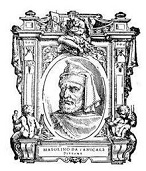

1423 On June 10 Gil Sanchez is elected antipope #5 of the Great Schism Antipope Clement VIII (-1429) (until Nov. 12, 1425) by the diehards of the magic melancholy tear in your eye in Avignon. In Sept. Scottish leaders sign the Treaty of York, settling the S border of Scotland and agreeing to pay 60K marks for the "maintenance" of 29-y.-o. caged king James I of Scotland, and agree to his marriage to Joan Beaufort (daughter of John Beaufort, 1st earl of Somerset, and paternal granddaughter of John of Gaunt), a bodacious babe who wows him so much he that writes the poem The King's Quhair to her, and he is finally released by the English - now that he's irrevocably pussy-whipped? On Sept. 23 the English nobles swear loyalty to infant king Henry VI, and summon Parliament in his name, establishing a regency council incl. Henry Beaufort and Duke John of Beaufort; Duke Humphrey of Gloucester is appointed as protector and defender of the realm and the Church until he comes of age (in 1437), with Beaufort replacing him when personally in England; Henry VI's half-brothers Edmund Tudor, 1st Earl of Richmond (1430-56) (future father of Henry VII) and Jasper Tudor, Earl of Pembroke (1431-95) are given earldoms; meanwhile John of Lancaster reaffirms the 1420 English alliance with Philip III the Good of Burgundy. Joanna II of Naples changes her mind about Alfonso V the Magnanimous being her heir. Byzantine Emperor Manuel II suffers a stroke, and in 1425 retires to a monastery as the monk Matthew, leaving his son John VIII as sole king (until 1448); meanwhile John's brother Andronicus sells Thessalonica (Salonika) to Venice after the Byzantines can't hold it against the Turks, causing Ottoman Sultan Murad II to try harder (1430). English cat-lover Richard "Dick" Whitington (Wittington) (b. 1350) dies after setting out to London with his cat, failing to make a go of it, starting to return, then hearing the Bow Bells of London ringing while climbing Highgate Hill from Archway and becoming lord mayor 4x. The line of Bernhard of Ascania, duke of Saxony becomes extinct, and HRE Sigismund confers the Duchy Saxe-Wittenberg to the margrave of Meissen, of the House of Wettin, who adds it to his vast non-Saxon holdings and begins calling all of it Saxony for prestige. The town of Lodz (pr. WUCH) in Poland is founded (modern-d pop. 687K/1.1M), going on to become Poland's 2nd largest city; it belongs to Russia until 1919. The U. of Besancon (Besançon) is founded in France's watch-clock city. After being invited by the marquis of Mantua to educate his children, Padua-educated Italian humanist scholar Vittorino da Feltre (Ramboldini) (1378-1446) of Venice establishes the House of Joy (La Giancosa or Gioiosa) in Mantua, housed in a palace with beautiful gardens. Architecture: Work begins on the SW tower of Canterbury Cathedral in England. The Dodge's Palace in Venice begins a major enlargement (ends 1438). Inventions: Europeans begin using the Chinese method of block printing. Art: Masolino (1383-1447), St. Julian Deceived by the Devil into Killing His Parents; St. Peter Healing a Cripple and the Raising of Tabitha; first use of a central vanishing point, although credit for discovering it is usually given to Filippo Brunelleschi. Gentile da Fabriano (1378-1427), Adoration of the Magi. Births: Austrian mathematician-astronomer (father of Western observational and mathematical astronomy) Georg von Puerbach (Purbach) (d. 1461) on May 30 in Peuerbach (near Linz); teacher of Johann Muller (Regiomontanus) (1436-76). Italian king of Naples (1458-94) Ferdinand I Ferrante (d. 1494) on June 2 in Aragon, Spain; illegitimate son of Alfonso I of Naples (Alfonso V of Aragon) (1396-1458). Italian painter Andrea del Castagno (d. 1457). French Valois king (1461-83) Louis XI (the Prudent) (the Universal Spider) (the Spider King) (d. 1483) on July 3 in Bourges, Cher; son of Charles VII (1403-61) and Mary of Anjou (1403-63); grandson of Charles VI and Isabeau of Bavaria; brother of Charles de Valois, duc de Berry (1446-72); husband (1436-45) of Margaret Stewart of Scotland (1424-45), and (1451-83) Charlotte of Savoy (1443-82). Deaths: Austrian Minnesinger Hugo von Montfort (b. 1357) on Apr. 4 in Bruck an der Mur. English lord mayor Sir Richard "Dick" Whittington (b. 1358) in Mar. in London; buried in St. Michael Paternoster Royal Church in London; bequeaths his Ł7K fortune to the Charity of Sir Richard Whittington, which is used to rebuild Newgate Prison (forerunner of Old Bailey), repair St. Bartholomew's Hospital, and build London's first public drinking fountains - the cat's in the bag?

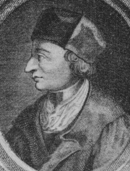

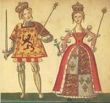
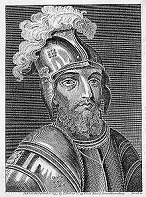

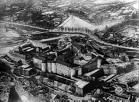

1424 On Jan. 4 Count Giacomuzzo Sforza (b. 1369) drowns in the Pescara River near Aquila, and his bastard son Francesco I Sforza (1401-66) carries on the family name. On Jan. 6 Jan Zizka (b. 1360) defeats the Ultraquist nobles and "Praguers" (Prague militia) at the Battle of Skalice, followed on June 7 at the Battle of Malesov, after which on June 14 a peace is concluded by future Ultraquist archbishop of Prague John of Rokycany (Jan Rokycana) (1396-1471), (who was blamed for the D at Malesov), with the reunited Hussites agreeing to attack Moravia; too bad, on Oct. 11 Zizka dies of plague on the Moravian frontier at Pribyslav after requesting that his skin be used to make drums to lead his troops, who begin calling themselves the Orphans (sirotci) because they lost their father; "The one whom no mortal hand soul could destroy was extinguished by the finger of God." Where the big band used to play? The Scottish king finally gets Beatlemania and becomes an English king clone? On Feb. 2 (Feb. 12 Old Style) 30-y.-o. James I of Scotland (b. 1394) marries his well-connected love bunny Joan Beaufort (1404-45), niece of Duke Thomas of Exeter and Bishop Henry Beaufort at Southwark Cathedral; they have eight children, incl. James II; after a feast given by Henry Beaufort in Winchester Palace, James I returns to Scotland after 18 years as an English hostage, and is crowned at Scone on May 21, ending anarchy and attempting to rule as a European autocrat like Henry V and the French kings from his showcase Linlithgow Palace in West Lothian 15 mi. W of Edinburgh while living a lavish lifestyle, which pisses-off the hillbilly pop. used to laissez faire and heroes who raise up their kilts and moon the enemy?; meanwhile a Scottish force sieges and burns Alnwick Castle. On Aug. 12 Ming emperor (since July 17, 1402) Yongle (b. 1360) dies during a campaign against the Mongols, and on Sept. 7 his eldest son Zhu Gaochi becomes Ming emperor #4 of China Ming Ren Zong (Hongxi) (Chin. "vastly bright") (1378-1425) (until May 29, 1425), trying to relax his father's tight centralized admin. control, causing a period of lethargy during his 1-year reign. On Aug. 17 after launching a campaign against Holland and Zeeland (ends 1413), Duke Philip III the Good of Burgundy, allied with John of Lancaster, duke of Bedford and the earl of Salisbury lead an 8K-10K-man army that soundly defeats a combined Armagnac-Scottish force of 14K-16K at the Battle of Verneuil, with 6K-10K casualties incl. Archibald Douglas, 4th earl of Douglas (b. 1372) (KIA), and John Stewart, 2nd Earl of Buchan (b. 1381) (KIA), helping new king James I consolidate his power by wiping out the rival Douglases and Albany Stewarts; in Oct. Duke Humphrey of Gloucester invades Hainaut to help his wife Jacqueline get it back (ends 1425). King (since 1421) Bnnya Kyan (b. 1392) is poisoned by his brother Binnya Ran I (1395-1446), who becomes Burmese Hanthawaddy king #11 (until 1446). 13-y.-o. illiterate pubescent seamstress Joan of Arc (1412-31), daughter of a prosperous peasant family in Domremy (Domrémy) in E France begins to hear voices from God telling her to kick English butt for her dear dauphin ding ding Charles? The Royal Mines Act is passed, surviving to modern times as the oldest piece of Scottish legislation still in force (until ?). The Jews are expelled from Cologne. The town council of Frankfurt collects all the restrictive regulations on the pesky Jews, and has them read each year in the synagogue. Architecture: Sedan Fortress (Chateau) (Castle) on the Meuse River in the Ardennes between France and the Spanish Netherlands, the most formidable fortress in Europe is begun by Eberhard II von der Mark. Art: Lorenzo Ghibert's Bronze Doors for the San Giovanni Baptistry in Florence are finished after 21 years - name something you make reservations for? Births: Spanish queen of Navarre (1461-4) Blanche II of Navarre (d. 1464) on June 9 in Olite, Navarre; daughter of John II of Aragon (1398-1479) and Blanche I of Navarre (1387-1441); wife (1440-53) of Henry IV of Castile (1425-74). Polish king (1434-44) and Hungarian king (1440-4) (gay?) Wladyslaw (Vladislaus) III of Varna (d. 1444) on Oct. 31; eldest son of Wladyslaw II Jagiello (1351-1434) and Sophia of Halshany (1405-61); brother of Casimir IV Jagiellon (1427-92). Scottish princess and French dauphine (1436-45) Margaret Stewart (d. 1445) on Dec. 25 in Perth; daughter of James I (1394-1437) and Joan Beaufort (1404-45); wife (1436-45) of Louis XI. Deaths: Bohemian Hussite leader Jan Zizka (b. 1360) on Oct. 11 in Pribyslav (plague). Italian condottiero Muzio Attendolo Sforza (b. 1369) on Jan. 4 near Aquila (drowns). Scottish warlord Archibald Douglas, 4th earl of Douglas (b. 1372) in Verneuil-sur-Avre (KIA). Austrian duke (1406-24) Ernest the Iron (b. 1377) on June 10 in Bruck an der Mur. Scottish leader John Stewart, 2nd earl of Buchan (b. 1381) on Aug. 17 in Verneul-sur-Avre (KIA) Burmese king (1421-4) Binnya Dhammaraza (b. 1392) in Pegu.


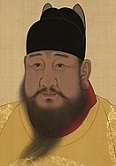




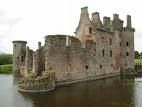
1425 On Jan. 18 Edmund Mortimer, 5th Earl of March (b. 1391), the heir of Lionel, duke of Clarence (3rd son of Edward III) dies of the plague childless, ending the male line of the Mortimers, and Richard Plantagenet, 3rd Duke of York (1411-60), great-grandson of Edward III, husband of Anne, daughter of Roger de Mortimer, 4th earl of March inherits his vast estates in Wales incl. Ludlow plus the earldom of Ulster in Ireland, making him the richest landholder in England; he also inherits his title to the English throne, making him a player in English politics, taking Gloucester's side in the war for domination of infant Henry VI's council - starting over, life has never been this real? On Feb. 27 Grand duke (since May 19, 1389) Vasilii I (b. 1371) dies, and his son Vasilii (Vasily) II (the Dark) (the Blinded) (1415-62) becomes grand duke of Moscow in Russia (until Mar. 27 1462); by now the decay of the Mongols leaves Moscow as the head of all Russian principalities. On May 29 Chinese emperor (since Sept. 7, 1424) Ming Ren Zong (Xuan-de) dies, and is succeeded on June 27 by his eldest son Zhu Zhanji as Ming Xuan Zong (Xuande) (Chin. "proclamation of virtue") (1399-1435), Ming emperor #5 of China (until Jan. 31, 1435). In May James I gets the Scottish parliament to condemn the house of Albany, getting Duke Murdac, two of his sons and his father-in-law Earl Walter of Lennox publicly executed, and sending news that he's now the boss in the land of the kilts; too bad, every time he levies a tax to make a payment on his ransom, he squanders it on his lavish lifestyle instead, pissing-off the tight-fisted Scots?; triangular Caerlaverock Castle in Dumfries and Galloway, S Scotland, owned by the Maxwell clan is used as a prison for Murdac before his trial and execution, becoming known for its "Murdoch's Tower". On July 21 Byzantine emperor (since 1391) Manuel II Palaeologus (b. 1350) dies, and his eldest son (by Helen Dragas) John VIII Palaeologus (Palaiologos) (1392-1448) becomes sole emperor (until Oct. 31, 1448), last one before the fall. On Nov. 12 Bernard Garnier is elected antipope #6 of the Great Schism Antipope Benedict XIV (-1429) in Avignon (until July 26, 1429). Duke Humphrey of Gloucester gives up on his invasion of Hainaut and abandons his wife's cause, makes peace with Philip III the Good of Burgundy and allows him to imprison her in Ghent, after which she escapes but is recaptured. Blanche of Navarre comes into the throne of Navarre, making her husband Juan II the king; the Cortes family refuses to recognize his claim, preferring his infant son Charles (Carlos) IV of Navarre (1421-61), AKA Don Carlos, prince of Viana, starting a power struggle that lasts until the son's death. St. Michael allegedly comes to Joan of Arc and says that she will hear voices sent from God - everybody from Boccaccio on knows that trick? After Jan Zizka (b. 1360) dies, his followers called the Ultraquists (who demand Holy Communion when and where they wish, since John 6:54 says it's the only way to "have life in you") split with the more radical Christian Communist Taborites, based in Tabor in S Bohemia - okay, you've waited long enough? Venice under condottiero Francesco Bussone da Carmagnola (1382-1432) joins Florence against Filippo Maria Visconti of Milan and conquers Brescia and Bergamo. Prince Henry the Navigator wrests the Canary Islands (W limit of the known world) from Castile in order to cut off their trade with W Africa. The Ottomans annex the Turkoman principalities of Aydin, Menteshe, and Teke, regaining control of W Anatolia and the Aegean coast (1425-6). Currency inflation gets so bad (70-to-1) in China that copper coins are introduced. Roman Catholic Louvain (Leuven) U. is founded in Brabant Province, Belgium, becoming Belgium's largest univ.; it is originally housed in the Cloth Workers' Hall (built 1317). Architecture: The cross-shaped Brabantine Gothic-style Church of St. Peter in Louvain (Leuven), Belgium is built, with seven decorated chapels. Music: The Faux Bourdon (Fr. "false bass") music harmonization style is introduced by Guillaume Dufay (1397-1474), founder of the Burgundian School of Music as a way to allegorically express Christ's words "You that have followed me" in the Communion in his Missa Sancti Jacobi, becoming the cool Medieval church music we all hate to love, full of all those "oose" words. Art: Donatello (1386-1466), The Feast of Herod (bronze relief); The Pumpkinhead (Lo Zuccone) (Statue of the Prophet Habakkuk) (marble statue); his favorite, shouting "Speak, damn you, speak!" at it as he is carving it, later swearing by it: "By the faith I place in my Zuccone"; most important marble sculpture of the 15th cent. Poetry: Antonio Beccadelli (-1471), Hermaphroditus; 81 bawdy Latin epigrams. Alain Chartier (1390-1430), La Belle Dame sans Merci ("The beautiful lady without pity"). Births: Spanish king of Castile-Leon (1454-74) Henry (Enrique) IV (the Impotent) (the Spendthrift) (d. 1474) on Jan. 5 in Valladolid; son of John II of Castile (1405-54) and Mary of Aragon (1396-1445) (daughter of Ferdinand I of Aragon). Italian duchess of Milan (1450-68) Bianca Maria Visconti (d. 1468) on Mar. 31 near Settimo Pavese; illegitimate daughter of Filippo Maria Visconti and Agnese del Maino. Scottish leader William Douglas, 8th Earl of Douglas (d. 1452); son of James "the Gross", 7th earl of Douglas (-1442). French humanist publisher Johann Heynlin (d. 1496) in Stein (near Pforzheim), Germany; runs the first printing press in France. German printer Peter Schoeffer (Schöffer) (d. 1503) in Gernsheim; student of Johannes Gutenberg. Deaths: Indian mathematician Madhava of Sangamagrama (b. 1350). Byzantine emperor (1391-1425) Manuel II Palaeologus (b. 1350) on July 21. Scottish nobleman Murdoch Stewart, duke of Albany (b. 1362) on May 24 in Stirling Castle (beheaded along with his two sons); attainted and forfeited of his peerage titles. English heir Edmund de Mortimer, 5th Earl of March (b. 1391) on Jan. 18 in Trim Castle (plague); last of the Mortimer line.
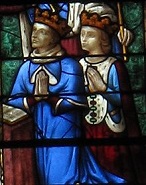

1426 On July 7 after 3K Mamluks, Turks, and Arabs under Tangriver Mohamed and Inal el Kakimi in 180 ships stage a punitive expedition to Cyprus to stop piracy on Muslim shipping, occupying Limassol, the Battle of Chirokitia sees Genoa-born Christian Frankish Cyprus king (since 1398) Janus of Cyprus (1375-1432) captured, after which they occupy and sack Nicosia before the royal family escapes to Kyrenia and are rescued; after being humiliated in Cairo by being forced to ride a donkey and kneel in front of the Mamluk sultan 9x, Janus is released 10 mo. later on condition that he change his ways, recognize the as his overlord, and pay an annual tribute (jizya). In Oct. the insurgents win a big V against the Ming Dynasty at the Battle of Tot Dong and Chuc Dong. The Dano-Hanseatic War begins (ends 1435), with Danish troops recapturing Flensburg (Sleswig) from Holstein, followed next year by the Hanseatic plunder of Bornholm, a failed Holstein-Hanseatic attack on Flensburg, and Danish-Swedish naval forces defeating a Hanseatic fleet in the Oresund. The Hussites overrun the Czech town of Duchcov, home of the Castle of Dux, which Giacomo Casanova later makes famous by spending his last years there. The 3-year Milan-Venice War begins (ends 1429). Architecture: London Guildhall (begun 1411) in England is completed. Art: Jan van Eyck (1390-1441) and Hubert van Eyck (1366-1426), The Ghent Altarpiece (1426-32). Births: Spanish queen of Navarre (1479) Eleanor of Aragon (d. 1479) on Feb. 2 in Olite, Navarre; 3rd and youngest daughter of John II of Aragon (1397-1479) and Blanche I of Navarre (1387-1441). Danish (1448-81), Norwegian (1450-81) and Swedish (1457-64) king Christian I (of Oldenburg) (d. 1481) in Feb. in Oldenburg; son of Count Dietrich of Oldenburg (-1440) and 2nd wife Hedwig (Helvig) of Schleswig-Holstein (Schauenburg); father of King Hans (1455-1513). Scottish leader William Douglas, 6th Earl of Douglas (d. 1440) (b. 1424?); son of Archibald Douglas, 5th earl of Douglas (-1439). French duke of Bourbon (1456-88) John II (the Good) (the Scourge of the English) (d. 1488); son of Charles I of Bourbon (1401-56) and Agnes of Burgundy (1407-76) (daughter of John the Fearless); brother of Charles II (1434-88) and Peter II (1438-1503). Deaths: Flemish painter Hubert van Eyck (b. 1366).
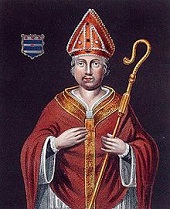

1427 On Oct. 13 Lincoln College (College of the Blessed Mary and All Saints, Lincoln) at Oxford U. is founded 3 by Bishop (1419-) Richard Fleming (1385-1431) of Lincoln to combat the Lollard teachings of John Wycliffe, as "a little college of true students of theology who would defend the mysteries of Scripture against those ignorant laymen who profaned with swinish snouts its most holy pearls"; in 1946 the Mensa high-IQ society is founded there. Philip III the Good conquers Hainaut in Belgium. Bishop-cardinal Henry Beaufort of England becomes papal legate for Germany, Hungary, and Bohemia, remaining active in backstabbing English politics. James I's 4-y.-o. daughter Margaret is betrothed to the French dauphin (future Louis XI); poet Alan Chartier is in the French mission to Scotland. The uninhabited Azores (eyesores?) are discovered by Portuguese mariner Diogo de Silves (de Sevilla); actually, the map was smudged by ink in 1869, and it could be 1432 or 1437. Architecture: Duke Humphrey of Gloucester inherits the royal manor of Greenwich on the Thames River, and next year builds Bella Court, which later becomes Placentia Palace. Syon Abbey in Isleworth, NW London is founded by the Bridgettine Order by Henry V, then completed by his son Henry VI; it is seized by the crown in 1539 and dissolved, then used to imprison Henry VIII's 5th wife Catherine Howard in 1541-2 before her Feb. 1542 execution, then turned into Syon House, home of the Somerset family. Art: Masaccio (1401-28), The Tribute Money. Giovanni di Paolo (1403-82), The Branchini Madonna. Births: Austrian Hapsburg archduke of Austria and Tirol (1446-90) Sigismund (Sigmund) (Siegmund) of Austria (d. 1496) on Oct. 26 in Innsbruck; son of Frederick IV (1382-1439) and Anna of Brunswick; 1st cousin of HRE Frederick III, who creates him archduke in 1477. Polish king (1447-92) and Lithuanian grand duke (1440-92) Casimir (Kazimierz) IV Jagiellon (d. 1492) on Nov. 30 in Cracow; 2nd son of Wladyslaw II Jagiello (1362-1434) and Sophia of Halshany (1405-61); brother of Vladislaus III (1424-44); father of Alexander Jagiellon (1461-1506). Scottisn noblewoman Mary Stewart, Countess of Buchan (d. 1465); 5th daughter of James I and Lady Joan Beaufort; wife of Wolfert VI of Borselen. Italian (Venetian) pageant painter Gentile Bellini (d. 1507) in Venice; son of Jacopo (Iacopo) Bellini (1400-70); brother of Giovanni Bellini (1428-1516); introduces oil painting to Venice. Deaths: Italian artist Gentile da Fabriano (b. 1378).
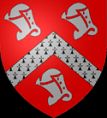

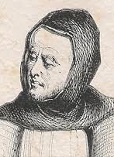

1428 There is a famine followed by riots in Japan over high prices. On July 3 the Treaty (Reconciliation) of Delft between Philip III the Good of Burgundy and house-arrested countess Jacqueline (Jacoba) of Bayern ends hostilities during the Hook and Cod Wars (begun 1350) between the Hooks, supported by England, and the Cods, supported by the county of Flanders, recognizing her as nominal countess of Hainaut, with Philip of Burgundy as admin. and heir; too bad, she isn't done yet? On Aug. 30 emperor (since 1412) Shoko (b. 1401) dies without an heir, causing him to adopt the son of Prince Fushimi-no-miya Sadafusa, who becomes Japanese emperor #102 Go-Hanazono (1419-71) (until 1464). On Oct. 12 the English under the duke of Bedford begin the Siege of Orleans (ends 1429), and the French cause seems lost; just in the dick, er, nick of time, cross-dressing peasant babe Joan of Arc (1412-31) appears on the pubic, er, public scene in the continuing war between England and France (Arc Wars); claiming to be on a mission from God (the Good Side of the Force?), and to see visions (of Obi-Wan or Yoda?) that she will save France, she comes to dauphin Charles' court in the Loire Valley at the castle of Yolande of Aragon, and wows her with her charm and enthusiasm, then outsmarts her inquisitors with cagey answers, after which Yolande talks Charles into allowing her to lead French relief troops to seiged Orleans, wearing white armor; French military cmdr. La Hire (Etienne de Vignolles) (1390-1443) (Fr. "herisson" = hedgehog) becomes her friend and supporter; is this all a cover story for another conspiracy involving Mary Magdalene and the Priory of Sion, with Joan as the new female Messiah, a dummy corporation to fight the male-supremacist Roman Catholic Church? - look at my eyes, I'm a cat? James I of Scotland signs an alliance with France, gives the country lairds representation in parliament to support the crown, and arrests Alexander Macdonald, Lord of the Isles in Inverness for ignoring his instructions, causing the Macdonald clan to begin a revolt. The Uzbek (Uzbeg) Kingdom is founded in Siberia by Abul (Abu'l) Khayir (Khair) (-1468), with a unique language based on a mixture of Persian and Turkish. The Ottomans absorb the principality of Germiyan in SW Anatolia. Vietnam regains its independence from China's Ming Empire, with Le Loi (Le Thai-To) (1385-1433) founding the Le Dynasty (ends 1527), calling the country Dai Viet (Great Viet). The Aztec Empire begins under King Itzcoatl as the Aztecs (Mexica) and their allies seize control of the Valley of Mexico; start of the construction of the Aztec Sun Stone (finished 1479). Welsh soldier Owen Tudor (1385-1461), son of a fugitive Welsh brewer, who got a job as keeper of the queen's household, giving him the big chance to pour on the charm marries Henry V's widow Catherine of Valois, founding the English Tudor Dynasty, later fathering Earl Edmund of Richmond, who marries Beaufort heiress Margaret and has son Henry VII of England; too bad, the English Parliament passes a resolution this year forbidding dowager queens from remarrying without the king's permission, so their marriage isn't legal, but nothing is done, perhaps because they keep it secret? - kiss me Kate, part two? Alfonso V the Magnanimous of Aragon receives a Letter from Yeshaq I of Ethiopia proposing an alliance against the Muslims to be sealed by Infante Don Pedro marrying Yeshaq's daughter; Alfonso sends a party of 13 craftsmen but no Infante, but they perish on the journey, and he sends a letter to Yeshaq's successor Zara Yacob in 1450 which never arrives. The U. of Florence begins to teach Greek and Latin lit. with a special emphasis on history and its bearing on human behavior and morals. Speaking of history and its bearing on human behavior and morals, the bones of John Wycliffe (d. 1384) in Lutterworth, England are disinterred and burned by order of the Council of Constance - too late to file a lawsuit against him? Magdalene College (pr. MOD-lin) is founded at Cambridge U. as a Benedictine whorehouse, er, hostel, eventually (1472-83) called Buckingham College then the College of St. Mary Magdalene in 1542, with the motto "garde ta foy" (guard the faith); Samuel Pepys later becomes an alumnus. Hops are first planted in England, ending the Dutch monopoly on hopped beer. Architecture: The Ca d'Oro (Ital. "golden house") (Palazzo Santa Sofia) is begun on the Grand Canal in Venice for the Contarini family (finished 1430). Births: English Wars of the Roses Yorkist side-switcher ("the Kingmaker") ("Last of the Barons") Richard Neville, 6th Earl of Salisbury and 16th Earl of Warwick (d. 1471) on Nov. 22; son of Richard Neville, 5th earl of Salisbury (1400-60); husband (1449-) of Anne Beauchamp, daughter of the 14th earl of Warwick; brother of George Neville (1432-76) and John Neville, earl of Northumberland (-1471); cousin of Edward IV; father of Anne Neville (1456-85). French Dominican Roman Catholic theologian (Blessed) Alanus (Alan) de Rupe (Alain de la Roche) (d. 1475) in Brittany; teacher of Cornelius Sneek (1455-1534). French noblewoman Iolande de Bar (d. 1483); daughter of Rene I of Anjou (1409-80); wife of Lord Ferri of Sion-Vaudemont; mother of Rene de Bar, duke of Lorraine. Portuguese mad queen Isabella (Isabel) of Portugal (d. 1496); mother of Isabella II the Catholic. Italian (Venetian) artist Giovanni Bellini (d. 1516) in Venice; son of Jacopo (Iacopo) Bellino (1400-70); brother of Gentile Bellini (1427-1507); known for noble form and soft glowing color; teacher of Titian, Il Giorgione et al. Deaths: English soldier Thomas Montacute, 4th earl of Salisbury (b. 1388) on Nov. 3; dies from a cannonball wound received on Oct. 27 at the Siege of Orleans. Italian artist Masaccio (b. 1401). Japanese emperor #101 (1412-28) Shoko (b. 1401) on Aug. 30.

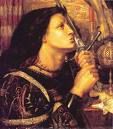
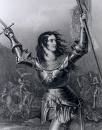



1429 At the start of this year the British control the 100-mi.-wide band of N France centered at Paris incl. Brittany, Normandy, Maine, Alencon, Perche, Valois, and Champagne, and the area around Bordeaux in the SW; Charles VII controls the rest of the S section except Burgundy E of the Loire; by 1477 Burgundy controls the N section incl. Picardy, Artois, Flanders, Brabant and Luxemburg; on Feb. 12 the French are defeated by the English under John of Lancaster in the Battle of the Herrings near Rouvray-Saint-Denis 20 mi. N of Orleans, pushing the Armagnacs back of the Loire (10 mi. S of Orleans) and threatening Orleans, the key to French dauphin Charles' remaining territory; but never fear, La Pucelle is here, and after presenting herself to dauphin Charles in Chinon, cross-dressing wet dream on a mission from God Joan of Arc (1412-31) is allowed to lead an army with the empty title of chef de guerre to relieve Orleans, using Blois (35 mi. SW of Orleans) as HQ; on May 7 the French under the original underwear-on-the-outside Joan of Arc raise the Siege of Orleans, win the Battle of Patay on June 18, and rescue dauphin Charles, escorting him safely across territory held by the stankin' English and Burgundians; on July 17 he is crowned French king Charles VII the Victorious (1403-61) at Rheims (until July 22, 1461), turning the tide; meanwhile on Dec. 6 8-y.-o. Henry VI is crowned king of England at Westminster Abbey; Joan of Arc's success causes Charles VII's favorite Georges de la Tremoille (Trémoille) (1382-1446) and other royal ministers to begin plotting against her. On Feb. 20 (28?) Florentine banking house founder Giovanni de' Medici (b. 1360) dies, and his son Cosimo de' Medici (il Vecchio) (1389-1464) takes control, trying to build on his family's legacy while keeping out of the public eye and out of the way of the Albizzi family that has ruled Florence since 1393. On July 26 Antipope (since 1423) Clement VIII dies, followed on ? by Antipope (since 1425) Benedict XIV, and no new antipope is elected in Avignon. The forces of James I of Scotland kick the butts of the Macdonald clan at the Battle of Lochlaber, but that only makes them madder? Venice seizes Padua, Verona, Vicenza, and other domains left up for grabs by the 1402 death of strongman Gian Galeazzo Visconti of Milan, and ends the Milan-Venice War (begun 1426); Venice reaches the height of its great powah, and by the middle of the cent. begins a long decline caused by Turkish invasions, fights with other Italian states, and the discovery of the sea route around the Cape of Good Hope in 1497-8. The Mamluk sultan issues a decree giving the govt. a monopoly on the pepper trade, followed by sugar, perfumes, and spices, as a last resort to save the sagging economy before currency debasement, which is soon done. Bidarbecomes capital of the Bahmani Dynasty in India, and is rebuilt in the Persian style. The provincial Council of Tortosa does much to remove the evil effects of the Western (Great) Schism of the 14th-15th cents. Vodka is brought to Moscow by foreign visitors, who tout it as a panacea; in 1430 a monk named Isidor of the Chudov Monastery makes the first Russian vodka recipe, which becomes a monopoly of the grand duchy of Moscow. Nonfiction: Alain Chartier (1390-1430), Livre Desperance; attacks the corrupt French nobles and clergy. Poetry: Christine de Pizan (1363-1434), The Tale of Joan of Arc; her last work, celebrating women as military leaders who still defend their sex and don't turn into foul-mouthed sluts. Births: Italian "Battle of the Nudes" artist Antonio del Pollaiuolo (Antonio di Jacopo Pollauolo) (It. "hen coop") (d. 1498) on Jan. 17 in Florence; brother of Piero de Pollaiolo (1443-96); student of Andrea del Castagno. English queen (1445-61, 1470-1) Margaret of Anjou (d. 1482) on Mar. 23 in Lorraine, France; daughter of Duke Rene I the Good of Naples, duke of Anjou (1409-80); queen consort of Henry VI. Italian Renaissance sculptor Mino da Fiesole (di Giovanni) (d. 1484) in Poppi, Tuscany; student of Desiderio da Settignano. Deaths: Italian Medici dynasty founder Giovanni de' Medici (b. 1360) on Feb. 20 (28) in Florence; buried in the Church of San Lorenzo, designed by Brunelleschi.







1430 On Jan. 7 Valois duke of Burgundy (since 1419) Philip III the Good (1396-1467) marries his 3rd wife, good Portuguese princess Isabel of Aviz (1397-1472), only surviving daughter of John I; on Feb. 10 in Bruges he establishes the Order of the Golden Fleece (Toison d'Or), the Burgundian version of the British Order of the Garter to secure allegiance from the nobles of inherited fiefs incl. Hainault, which Hapsburg HRE Maximilian I extends to Austria after becoming the duke of Burgundy in 1477 - a little cross-channel cross-dressing? In Mar. after an 8-year siege (since 1422), the Ottomans reconquer Thessalonica (Salonika) from Venice, and in July the Peace of Lapseki confirms Ottoman control (until 1912), while Murad II recognizes the Venetian possessions in Greece and Albania. Speaking of cross-dressing? On May 14 Joan of Arc arrives in the village of Compiegne, rallying the French pop. and accompanying archbishop Renaud of Reims southward, then returning and fighting the Battle of Compiegne, where she is captured on May 23 in a sally by the Burgundians under Philip III the Good, and 6 mo. later is sold to the English; Philip acquires the Duchy of Brabant (founded 1183), making it part ofthe Burgundian Netherlands. On Oct. 27 Vytautas (Witowt) the Great (b. 1350) dies, and his cousin Svitrigaila (1370-1452) (with a Russian mother) becomes grand duke of Lithuania (until 1432), backed by the Orthodox pop.; meanwhile the Roman Catholic and pagan pop. goes for Sigismund Kestutaitis (1365-1440), and when Svitrigaila proclaims independence from Poland and grants privileges to his Orthodox subjects, Poland declares war and occupies the towns of Podolia, causing him to invite the Teutonic Knights to invade Poland, after which Poland folds and signs an armistice in Lutsk. The Lancastrian Parliament of England passes a law limiting the franchise for elections to forty shilling freeholders to prevent packing, which stays in force until 1832. The tiny (15-3/4 sq. mi.) country of Grand Fenwick is founded in the French Alps by Sir Roger Fenwick - (Leonard Wibberley, In this decade Modern English begins to be heard in the great outdoors? By this year most of the Greek classics have been brought to Italy. Architecture: The Cathedral of Notre Dame at Reims, France (begun 1212) is finished. Twin-towered Borthwick Castle is built in North Middleton, Midlothian, 12 mi. S of Edinburgh, Scotland. Inventions: The Mouse That Roared? 16-ton Mad Marjorie, the first cast-iron gun is introduced into battle; it has a 2-ft. bore and fires a 750 lb. stone ball. After a rope with a cloth proves inadequate, a 6' wooden Tilt Barrier is created for use in jousting tournaments in England. Between 1430-50 Tarot Cards (Egyptian "tar" + "ro" = royal way) come into use in N Italy, a descendant of playing cards that came from Muslim Mamluk Egypt in the late 14th cent., probably via gypsies, and based on the Wheel of Fortune; "Regnabo, Regno, Regnavi, Sum Sine Regno" (I shall reign, I reign, I have reigned, I am without reign"); in the late 18th cent. they begin to be used by occultists for divination and spiritual growth. Nonfiction: Anon., Liber Cure Cocorum; pub. in Lancashire, NW England; contains the first use of the word "haggis" (hagese) to mean sheep offal cooked in its stomach, which is later associated with Scotland. Matteo Palmieri (1406-75), On Civic Life (Della Vita Civile) (4 vols.); how an education in the classics at an early age is essential to make a good citizen who participates in public life like Cicero; set in a country house in Mugello during the 1430 plague, with Agnolo Pandolfini as main speaker; doesn't mention religion, but the Church is getting the BBQ grill ready for a humanist dude like this? Art: Jan van Eyck and his brother Hubert, The Crucifixion and the Last Judgment; achieves an unprecedented luminosity and intensity of color and detail by using oils on wood; The Virgin and Child with Chancellor Rolin (1430-4). Rohan Master, Les Grandes Heures de Rohan (The Rohan Hours) (1430-5); painted by an anon. artist for Yolande of Aragon (1384-42), and filled with cool miniatures portraying the agonies of Christ and grief of his mother Mary. Music: The first Dutch School of Music is founded by Gilles Binchois (de Binche) (de Bins) (1400-60) and Guillaume Dufay (Du Fay) (1397-1474), making Holland the center of European music. Births: Italian diplomat and cardinal (1467) Oliviero Carafa (d. 1511) on Mar. 10 in Naples. Scottish Stewart king (1437-60) James II ("Fiery Face") (d. 1460) on Oct. 16 in Holyrood Abbey; son of James I and Joan Beaufort; a red birthmark covers the left side of his face; twin brother Alexander dies in infancy; has six sisters and no brothers. English soldier John Howard, 1st Duke of Norfolk (AKA Jack of Norfolk) (d. 1485); knighted in 1461, created baron by Henry VI in 1470, then created earl marshal of England by Richard III in 1483. Hungarian gen. Stephen (Istvan) V Bathory of Ecsed (d. 1493); prince of Transylvania (1479-93). Italian Venetian Madonna-loving Renaissance painter Carlo Crivelli (d. 1495) (b. 1435?) in Venice; student of Jacobello del Fiore, and Antonio Vivarini; imprisoned for adultery in 1457-67; known for decoratively punched gilded backgrounds. Italian painter Cosimo (Cosme) Tura (Il Cosme) (d. 1495). English bishop (of Rochester) John Alcock (d. 1500) in Beverley; educated at Cambridge U. Italian Pitti Palace architect-sculptor Luca Fancelli (d. 1502) in Settignano, Florence; student of Filippo Brunellesci (1377-1446). German humanist astronomer Bernard Walther (d. 1504) in Memmingen; student of Regiomontanus at his observatory in Nuremberg; the first to use a clock driven by a hanging weight for the purpose of scientific measurement. French sculptor Michel Colombe (d. 1512) in Bourges. Deaths: Lithuanian grand duke (1401-30) Witowt (Vytautas) the Great (b. 1350) on Oct. 27 in Troki; dies before he can be crowned the first king of Lithuania, all approved and everything? Russian icon painter St. Andrei Rublev (b. 1360) on Jan. 29 in Moscow. French poet Alain Chartier (b. 1390); a story is later told that when Margaret of Scotland comes to France in 1436, she kisses him on the mouth, even though he's the ugliest man in France, because it's "the invaluable mouth from which issued and which left so many witty remarks and virtuous words."




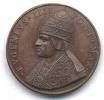
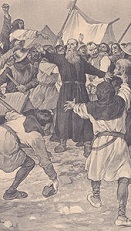




1431 On Feb. 8 Prince Vlad, son of Mircea cel Batran is given the throne of Wallachia by HRE Sigismund I, and inducted into the Order of the Dragon at Brandenburg, becoming Vlad II Dracul (the Dragon) (1390-1447); he has a son this year named Vlad III Dracula the Impaler (Tepes) (1431-76), who is inducted at age 5 and goes on to perfect the dragon arts without the need for Gatorade thirst quencher? On Feb. 20 Pope (since 1417) Martin V (b. 1368) dies from eating too many eels after convoking the Council of Basel (ends 1449) to deal with the pesky Hussites and Ottomans, and on Mar. 3 Gabriello (Gabriele) Condulmaro is elected Pope (#206) Eugene (Eugenius) IV (1388-1447), putting the skids on any plans to make the Church a democracy, establishing that the pope is a higher authority than a council, not vice-versa; his servant Poggius pines over the decay of Rome through the cents. There are Nuts, and There are Planter's Roasted Nuts, or, Scent of a Woman Pt. II, or Do Lobsters Have Feelings, or, When They Come to Call On You and Drag Your Poor Body Down? On May 30 after Henry VI's uncle Duke John of Bedford (uncle of Jacquetta, Duchess of Bedford, mother of Elizabeth Woodville, wife of Edward IV) has French holy warrior babe (St.) Joan of Arc( Jeanne or Jehanne d'Arc) (b. 1412), "the Maid of Orleans" tried by a stacked French ecclesiastical commission and condemned as a heretic for dressing in men's clothes, she is burned at the stake in Rouen's old market square (Place du Vieux Marche), singing out the name of her Lord Jesus; chief judge Bishop Pierre Cauchon (1371-1442) denies her a lawyer and railroads her through the rigged jury of 60 clergy and theologians on the English payroll, then falsifies the trial minutes to cover it up; too bad for Bedford, her martyrdom only fans the flames of French nationalism, and forever afterwards the idea of England trying to rule any part of France gives off bad vibes. On July 1 the Battle of La Higuerela in the grass valley (vega) of the Genil River near Genil sees the forces of Granada Nasdrid Sultan Muhammed IX defeated by Castilian forces of John II led by Alvaro de Luna, after which John II installs Muhammed IX's son Yusuv IV as sultan of Granada. On Aug. 14 the Roman Catholic Crusaders of the HRE under Frederick of Brandenburg and Cardinal Cesarini are crushed by the Taborites and Hussites under Bohemian Taborite ex-Ultraquist priest-gen. Andreas Prokop the Bald (the Great) (the Holy) (the Bald) (the Shaven) (1380-1434) at the Battle of Domazlice. On Dec. 16 Henry VI of England (b. 1421) is crowned king of France at Notre Dame in Paris. Pro-German burghers open the gates of the town of Flensburg in Schleswig, allowing the German army to march in. Angora (Ankara) (ancient Ancyra) (225 ESE of Constantinople) is conquered by the Ottomans, who also demolish the Hexamillion (Gk. "six-mile wall") Wall of Corinth (built in 408-450); it is rebuilt in 1444, breached in 1446 and Oct. 1452, and abandoned after the Ottoman conquest of the Peloponnese in 1460. James I's royal lt. Earl Alexander of Mar is defeated by the Macdonald golden arches clan at the First Battle of Inverlochy Castle (2nd in 1645), causing James I to restore Alexander Macdonald to his lordship of the Isles; meanwhile the Scottish parliament raises another tax to pay the king's ransom, but this time has it kept in a locked box under their control so he can't get at it - and play no-limit credit card Paris Hilton with it? Rene I of Anjou becomes duke of Lorraine (until 1453), adopting the Cross of Lorraine, with two graded or ungrade horizontal bars. Chinese adm. Cheng Ho (Zheng He) (1371-1433) begins his (last) Seventh Voyage from China, reaching 20 states and exacting tribute from 11 of them, incl. Muhammad's holy city of Heavy Mecca (ends 1433). After pressure from Siam, King Pohnea Yat of Cambodia quits Angkor Wat for the new capital city of Phnom Penh ("Penh's Hill") (originally Kronk Chaktomuk, "City of Four Faces) on the Mekong, Tonle Sap, and Bassac Rivers (modern-day pop. 1.5M), switching from rice agriculture to maritime trade, with China granting them commercial initiatives; the religious culture begins shifting from priestly to monastic. The U. of Poitiers is founded in Poitiers, France by Pope Eugene IV and chartered by Charles VII, becoming #2 after the U. of Paris in the 16th cent.; alumni incl. Francis Bacon, Joachim Du Bellay, Rene Descartes, and Francois Rabelais; it is closed during the 1789 French Rev., and reopened in 1796. Nonfiction: John Lydgate (1370-1450), The Fall of Princes (9 vols.) (1431-9); written for his patron Duke Humphrey of Gloucester, based on Boccaccio's "De Casibus Vivorum Illustrium", an encyclopedic account of the falls of great men in history in 36,365 lines of verse. Art: Lucca della Robbia (1399-1482), La Cantoria (The Singing Gallery) (sculpture) (Florence Cathedral) (1431-8); 10 panels of children singing and playing musical instruments to illustrate Psalm 150. Births: Italian duke of Ferrara (1471-1505) ("the North Wind") ("the Diamond") Ercole I d'Este (d. 1505) in Ferrara; father of Alfonso d'Este (1476-1534). Wallachian prince (1448, 1456-62, 1476) Vlad III Dracula (the Impaler) (Tepes) (d. 1476) (b. 1428?) on Nov. (Dec.?) 8 in Sighisoara, Transylvania; 2nd son of Vlad II Dracul (1390-1447) and Princess Cneajna; brother of Mircea II and Radu the Handsome (1437-75); half-brother of Vlad IV the Monk; the Ottomans call him Kazikli Bey ("Impaler Prince"); his daddy is invested into the Order of the Dragon in Nuremberg this year, and he follows at age 5, always displaying the symbol of the dragon when fighting, as if they didn't feel bad enough already?; born in Wallachia, but spends most of his life in exile in Transylvania to the N; after his daddy gives him and Radu to the Ottomans as a hostage, who whip him and instill a lifelong hatred for them, he never forgives daddy?; becomes known for his exaggerated justice and cruel law and order system, loving to have a bad guy's legs attached to horses while a sharpened greased stake is forced through his anus until it comes out of his mouth, and to impale bad guys upside down, and impale infants on their mothers' chests; when he impales them by the thousands, the stakes are laid out in concentric circles with the height of the stake indicating the rank of the victim; likes to stick red hot stakes in the vaginas of adulterous women and cut off their breasts; the entire list of fun and games fills volumes? English noble Edmund Tudor, Earl of Richmond (d. 1456); son of Owen Tudor and Catherine of Valois (widow of Henry V); half-brother of Henry VI; husband of Margaret Beaufort; father of Henry VII (1457-1509). French "Where are the snows of yesteryear?" poet Francois Villon (Francois de Montcorbier) (Francois des Loges) (d. 1463) near Paris; educated at the Sorbonne; assumes the name of his patron Guillaume de Villon, a prof. of canon law who adopted him as a boy. Italian pope (1492-1503) Alexander VI (Rodrigo Lanzol y Borgia) (d. 1503) in Spain; founder of the House of Borgia of transplanted Spaniards in Italy; father of Cesare Borgia and Lucrezia Borgia. Italian painter-engraver ("first great painter of the Italian Renaissance") Andrea Mantegna (d. 1506) in Isola di Carturo (near Vincenza); apprentices under Francesco Squarcione in Padua, and becomes Padua's most famous native since Livy, then in his late twenties moves to Mantua, where he becomes court painter to three gens. of Gonzagas. Scottish statesman and bishop of Aberdeen (founder of the U. of Aberdeen) William Elphinstone (d. 1514) in Glasgow; educated at the U. of Glasgow. Deaths: Italian scholar Gasparinus de Bergamo (b. 1360); leaves Liber Epistolarum (Book of Letters) (Epistolae Gasparini), a Latin grammar and composition book, which becomes the first book printed in France in 1470. English bishop Richard Fleming (b. 1385) on Jan. 25/26 in Sleaford, Lincolnshire. Polish babe Jadwiga of Lithuania (b. 1408) on Dec. 8 (poisoned by stepmother Sophia of Halshany?). French super neckazon babe St. Joan of Arc (b. 1412) on May 30 in Rouen (burned); last words: "Hold the cross high so that I may see it through the flames"; "raised up by power divine" (Shakespeare, "Henry VI Pt. 1"); "the brave Amazon, the shame of the English, the upholder of the throne" (Voltaire).
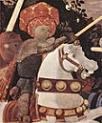
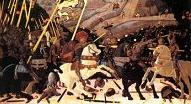

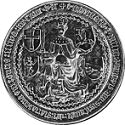


1432 On June 1 the Battle of San Romano sees 6K troops of Florence under condottiero Niccolo (Niccolň) Mauruzi (Maruzzi) da Tolentino (1350-1435) (not to be confused with St. Nicholas of Tolento, who died in 1305) fight the troops of Siena under Francesco Piccinino; after 6-7 hours both sides claim a V, taking 400-600 POWs each; Florentine painter Paolo Uccello (1397-1475) later (1438-40) paints the battle, and makes it look like guess who came out on top? On Nov. 18-19 the Battle of Delebio in the Valtellina is a V for the troops of Duke Filippo Maria Visconti Milan, led by condottiero Niccolo Piccinino (1386-1444) over the papal league forces of Venice. Sigismund I Kestutian (Kestutaitis) (1351-1440) (born pagan then baptized Roman Catholic in 1382) starts a revolt against Svitrigaila (ends 1435), supported by ethnic Lithuanians and Poles, squeezing Big Svit out of Vilnius into Vitebsk. Jacqueline attempts in vain to incite a rebellion in Holland against Philip III the Good, then abdicates her countships for good in favor of Philip next year and croaks in 1436. The Ottomans under Murad II siege Constantinople, and withdraw after a stubborn defense by emperor John VII - brawny is three walls tough? John II (1418-58) becomes king of Cyprus (until 1458). The did-I-say uninhabited Azores are rediscovered (first time 1427) by Portuguese mariner Gonzalo (Gonçalo) Velho Cabral. A Christian rebellion in S Albania begins in the Ottoman-occupied Janina area, led (with secret Venetian help) by Skanderbeg (Scanderbeg) (George Castriotes) (AKA Lord Alexander) (1453-68), who was raised in a Muslim court under the name Iskender Beg, Bey of Dibra (ends 1443). The Schleswig War (begun 1425) is ended with a peace, whereby Eric VII of Denmark recognizes the conquests of the German nobles. Engelbrecht Engelbrechtson begins leading the Swedish lower classes in a revolt against Eric VII. Ponhea (Gam) Yat becomes king of Khmer, with capital city at Angkor Wat. The towns of Berlin and Cölln (Colln) merge. The U. of Caen in Lower Normandy is founded by Henry VI of England. The U. of Leuven (Louvaine) is founded. Births: Portuguese king #12 (1438-81) Afonso (Afonso) V (the African) (d. 1481) on Jan. 15 in Sintra Palace; son of Duarte I (1391-1438); father of Joao II (1455-95). Ottoman Constantinople-conquering sultan #7 (1444-6, 1451-81) Mehmed (Mehmet) II (the Conqueror) (d. 1481) on Mar. 30 in Edirne; son of Murad II (1404-51) and Huma Haturi; father of Bayezid II (1447-1512). Italian "Morgante" poet Luigi Pulci (d. 1484) on Aug. 15 in Florence. English chancellor (1460-7, 1470-1) and archbishop of York (1465-76) George Neville (d. 1476); youngest son of Richard Neville, 5th earl of Salisbury and 14th earl of Warwick (1400-60); brother of Richard Neville, 6th earl of Salisbury and 15th earl of Warwick (1428-71); educated at Balliol College, Oxford U. Italian explorer Alvise Cadamosto (Alvida da Ca'da Mosto) (d. 1483) in Ca'da Mosto, Venice. Japanese samurai warrior-poet (founder of Edo Castle) Ota Dokan Sukenaga (d. 1486). French composer Antoine Busnoys (d. 1492). Japanese hero Hojo Soun (Ise Shinkuro) (d. 1519). Deaths: Jerusalem king (1398-1432) Janus of Cyprus (b. 1375) on June 29 in Nicosia.


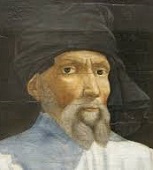
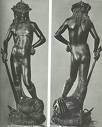
1433 On May 10 Florence is conquered after a 4-year war (begun 1429) with Lucca, and on Sept. 7 he is summoned to the signory (govt.) palace in Florence, where his enemies the Albizzi try to frame him as a scapegoat, and get him imprisoned and sentenced to a 10-year exile; lucky he wasn't just pushed out the window?; Filippo Brunelleschi suspends work on the Duomo. On May 31 after being crowned king of Italy in Milan on Nov. 25, 1431, Sigismund I of Luxemburg (1368-1437) is finally crowned HRE in Rome by the pope (until Dec. 9, 1437), becoming the first HRE to officially adopt the old Roman double-headed eagle as the armorial of the Holy Roman Empire spread the news to the world like a pigeon from hell? On Aug. 14 king (since Apr. 6, 1385) John I (b. 1357) dies of the plague, and his son by Queen Philippa of Portugal Duarte (Edward) I "the Philosopher" "the Eloquent" (1391-1438) becomes king #11 of yellow jacket trap Portugal (until Sept. 9, 1438), going on to summon the Cortes (nat. assembly) 5x to help guide him while financing his brother Henry the Navigator in the maritime exploration of Africa. The Chinese Exploratory Voyages begun in 1405 end with the return of eunuch Chinese adm. Cheng Ho (Zheng He) (1371-1433) f rom his 7th voyage after having gone as far W as America?; China isolates itself from the "backward" outside world, burns all the ships, shipyards, and records, and makes it a crime to go to sea from China in a multi-masted ship - boy do they have a surprise coming from those *!?*! backward barbarians? Philip III the Good finishes conquering Holland and Zeeland, and Zeeeland is ceded to Burgundy by Countess Jacqueline. The Berbers conquer Timbuktu. Le Thai-To dies after setting up a nat. univ. and a Chinese-style exam system and attempting to redistribute land according to the Chinese equal-field system; several short reigns in Vietnam follow, dominated by regents; a tributary mission is sent every three years to the Ming court. Humphrey of Gloucester, brother of Henry V acquires land in Greenwich, and has the Greenwich Royal Park enclosed. King Ponhea Yat abandons Angkor Wat and moves his court to Basan. Inventions: Tibetan saint Thangtong Gyalpo (Chakzampa) (1385-1464) invents the Iron chain suspension bridge, building eight in E Bhutan; the last one is washed away in 2004. Science: German superbrain Nicholas of Cusa (1406-64) proposes the Borda Count as a method for electing Holy Roman emperors, where each candidate is given a point value corresponding to rank by each voter, and the best total wins. Nonfiction: Nicholas of Cusa (1406-64), De Concordantia Catholica; written while attending the Council of Basel. Guo Chongli and Ma Huan, The Overall Survey (Captivating Views) of the Ocean's Shores; the Seven Voyages of Cheng Ho (1371-1433). Pedro, Duke of Coimbra (1492-49), Tratado da Virtuosa Benfeitoria (6 vols.). Art: Jan van Eyck (1390-1441), Man in a Red Turban. Donatello (1386-1466), Nude Statue of David (bronze statue) (begun 1425); first freestanding nude male sculpture made since antiquity, and first unsupported standing bronze work cast during the Renaissance; a nude dangly statue with David sporting a strange gay hairstyle and bonnet; stands in the center of the Medici Palace courtyard until 1440; not really finished until the 1440s? Masolino (1383-1447), Cycle of 300 Famous Historical Figures in the Orsini Palace in Rome (1433-4). Births: French duke of Brittany (1458-88) Francis II (d. 1488) on June 23; son of Count Richard of Etampe; grandson of Duke John V. Italian Neoplatonist philosopher-scholar (trans. of Greek classics esp. Plato into Latin, and founder of the Florentine Academy) Marsilio Ficino (d. 1499) on Oct. 19 in Figline Valdarno, Repub. of Florence. French Valois duke of Burgundy (1467-77) (last) Charles the Bold (Terrible) (d. 1477) on Nov. 21 in Dijon; son of Philip III the Good (1396-1467) and Isabel of Portugal (1397-1471). Hungarian soldier-statesman Laszlo Hunyadi (d. 1457); eldest son of John Hunyadi (1387-1456) and Erzsebet Szilagyi (1410-83); brother of Matthias Corvinus (1443-90). German painter Hans Memling (Memlinc) (d. 1494); grows up in Mainz; studies in Brussels under Rogier van der Weyden (1399-1464), then moves to Bruges. Moldavian Christian prince (1457-1504) Stephen III "the Great" (d. 1504) in Borzesti, Romania; of the house of Musat; son of Bogdan II (1409-51). Italian "Hypnerotomachia Poliphili" Dominican priest-monk Francesco Colonna (d. 1527) (b. 1434?). Deaths: Portuguese king (1383-1433) Joao (John) I the Great (b. 1357) on +Aug. 14 (plague). Chinese adm. Cheng Ho (Zheng He) (b. 1371) in Calicut, India. Japanese Ashikaga pretender emperor #6 (1382-1412) and emperor #100 (1392-1412) Go-Komatsu (b. 1377) on Dec. 1.




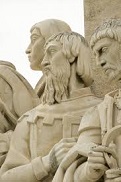



1434 On May 30 Prokop the Great (b. 1380) leads his Taborites at the Battle of Lipany (Lipan) (Cesky Brod) 25 mi. E of Prague, but is defeated and KIA by an army of Ultraquist nobility and Bohemian Roman Catholics called the Bohemian League. On June 1 grand duke (since May 1377) Wladyslaw II Jagiello (AKA Jogaila) (b. 1362) dies, and his 10-y.o. eldest son Wladislaw (Vladislaus) (Vladislav) III (1424-44) becomes king of Poland (until 1444), with Cardinal Zbigniew Olesnicki (1389-1455) as regent (until 1438); too bad, a group of Polish magnates prefer Hohenzollern elector Friedrich (Frederick) II (Iron) (Irontooth) of Brandenburg (1413-71), who was betrothed to Wladyslaw II's daughter Jadwiga of Lithuania (1408-31) until she suddenly died in 1431 (poisoned?) and left him without a pot to piss in legally, but that doesn't stop noble Hussite leader Spytek (Spytko) of Melsztyn (1398-1439) from interrupting the coronation. On June 20 Zara (Zar'a) (Zera) Yaqob (Ya'qob) (Yacob) (Seed of Jacob) (1399-1468) becomes Solomonic emperor of Ethiopia (until 1468), becoming their greatest ruler until Menelik II (1889). Pulling every string he has (incl. the pope), Florentine banker Cosimo di Giovanni de' Medici the Elder (1389-1464) returns to Florence from exile, ousts the Albizzis, and modestly accepts rule of the city (without holding office himself) until his death on Aug 1, 1464, becoming posth. known as "the Father of the Nation", founding the Medici Dynasty; "Political questions are decided at his house... He is king in everything but name" (an admirer); the pope opens a huge credit line with the Medicis, who become the richest house in Europe, resuming their patronage of the arts; hands-on kind of guy Filippo Brunelleschi (1377-1446) resumes work on the dazzling 4M-brick Duomo (begun 1420) with the cool cupola, and completes it without using scaffolding after inventing a reversing screw allowing oxen power to be used; a revolt in Rome causes Pope Eugene IV to flee to Florence, using German superbrain Nicholas of Cusa (1406-64) as his rep. in Germany, causing him to become known as "the Hercules of the Eugenian cause". Engelbrecht Engelbrechtson ravages E and S Sweden, capturing castles and kicking out the bailiffs. Milanese forces under Niccolo Picinino defeat papal forces at Castel Bolognese. Count Amadeus VII of Savoy hands over much of his authority to his son Louis (Ludovico) (Lodovico) I of Savoy (1413-65), and retires to a hermitage, while his son marries Anne de Lusignan (1418-62), heir of Cyprus and Jerusalem, and goes on to bear 19 children, 14 of whom survive their youth, and in 1453 receives the cool Shroud of Turin from Margaret de Charny; he also becomes a probable patron of Leonardo da Vinci. Lithuanian grand prince Sigismund Kestutaitis gives nobles of Eastern Orthodox faith equal rights to Roman Catholic ones, and guarantees that no noble can be imprisoned without a court proceeding. The Khmer royal court moves from Basan to Phnom Penh. The Aztec Triple Alliance of Tenochtitlan (Aztecs), Texcoco, and Tlacopan (Tacuba) is formed, creating the most prosperous urban society in Mesoamerican history; genius-poet-engineer King Nezahualcoyotl (Coyote Who Fasts) (1402-72) of Texcoco (designer of a 9-mi. dam across Lake Texcoco) thrives in his 300-room palace with 40 wives, 60 sons, and 57 daughters, collecting the first zoo in the New World. After sailing from Lagos, Portuguese explorer Gil Eannes (Eanes) (1395-) rounds Cape Bojador (Bulging Cape) S of the Canary Islands on the W coast of Africa (modern-day Mauritania) in a modified fishing barquentine, and discovers the Rio de Ouro (Oro) to the S, bringing back wild roses to Sagres to prove their success, after 10 years of trying and 14th attempts, delighting Prince Henry the Navigator and opening the Portuguese Age of Discovery in Africa; next year he and and Afonso Goncalves Baldaia (1415-81) sail two ships 150 mi. S of the cape, reaching the African coast; the year after that Baldaia sails farther S along the coast of Western Sahara and collects thousands of monk seal skins before becoming the first Euro to cross the Tropic of Cancer and reach Pedra da Gale (Galha Point), becoming the first commercial cargo brought to Europe from West Africa; too bad, failure to find any natives to kidnap causes Prince Henry to not authorize another expedition until 1441 - more big strong Mandingos to kidnap? The town of Wurzburg (Würzburg), Germany bans beer brewing "forever"; too bad, in 1437 the climate of C Europe reverses its warming trend and experiences harsh winters that decimate the vineyards of S Germany, causing wine to have to be imported from Italy, inflating prices, causing beer bootleggers to spring up; it takes until 1642 for brewing to be relegalized. The U. of Catania in Catania, Sicily is founded, becoming the first univ. in Sicily. Inventions: After inventing artistic perspective based on a central vanishing point in 1405-25, Florentine architect Filippo Brunelleschi (1377-1446) pub. Rules of Perspective, getting all the credit for it, although Masolino ("Little Tom") da Panicale (Tommaso di Cristoforo Fini) (1383-1447) was the first to make use of it in a painting in 1423; it takes until Raphael (1483-1520) for all the intricacies to be understood. King Sejong of Korea makes a clepsydra (Gr. "water thief") (water clock), the first publicly-displayed clock; also a bronze sundial. Nonfiction: Gong Zhen, Records of Foreign Countries in the Western Ocean; the Seven Voyages of Cheng Ho (1371-1433). Art: Jan Van Eyck (1390-1441), Arnolfini Wedding Portrait. Births: Scottish queen consort Mary of Guelders (Gueldres) (d. 1463); daughter of duke Arnold of Guelders and Catherine (daughter of Duke Adolph IV of Cleves); niece of Duke Philip III the Good of Burgundy; wife (1449-60) of James II (1430-60); mother of James III (1452-88). French cardinal-archbishop (of Lyons) Charles II of Bourbon (d. 1488) in Chateau de Moulins; son of Charles I of Bourbon (1401-56) and Agnes of Burgundy (1407-76) (daughter of John the Fearless); brother of John II of Bourbon (1426-88) and Peter II of Bourbon (1438-1503). Italian Renaissance poet-humanist Matteo Maria Boiardo, Conte di Scandiano (d. 1494) near Scandiano, Reggio Emilia. German painter-printmaker Michael Wolgemut (d. 1519). Deaths: Lithuanian (1377-1434) and Polish (1386-1434) king Wladyslaw II Jagiello (b. 1351) on May 31/June 1 in Grodek Jagiellonski (Horodok, Ukraine) (near Lwow, Galicia). Italian writer Christine de Pizan (b. 1364) in Venice; leaves 300+ ballads.
1435 - The First Saeculum Year?
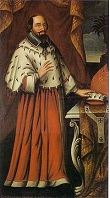

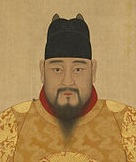
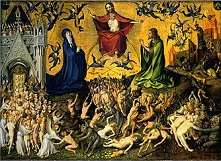
1435 The Cologne Witch Persecution in Germany begins, with 37 executed by 1655, most during the reign (1612-50) of archbishop Ferdinand of Bavaria (1577-1650). According to U.S. historians Robert Strauss and Neil Howe in their 1997 book The Fourth Turning, this is the first of four 80-to-100-year Saeculums, each with four generations, containing a turning point every 20 years or so. On Jan. 31 emperor (since June 27, 1425) Xuande (b. 1399) dies, and his son Yingzong (Zhengtong) ("right governance") (Tianshun) ("obedience to Heaven") (1427-64) becomes Ming emperor #6 of China (until 1449), going on to have an interior Great Wall of China built to make it stronger. On May 11 the Abbot of the Herzogenburg monastery in the Waldvertiel (wooded quarter) in W Lower Austria draws up a deed granting Hannsen Hydler and his wife some property near Raabs on the Thaya River for 40 pounds; by 1702 the name is spelled Hitler (from Heidjer, meaning heathen) - Heil Heathen? In May the Swedish Riksdag (Diet) of 1435, with reps from all four orders meets in Arboga, and caves-in to Engelbrecht Engelbrechtson, electing him regent; the Riksdag continues as an institution for the next four cents. In May the Battle of Gerberoy is a V for the French led by the late Joan of Arc's loyal companion La Hire (Etienne de Vignolles) (1390-1443)) over the English led by John FitzAlan, 14th earl of Arundel, with 1K English casualties vs. zero French casualties, causing L Hire to be made capt.-gen. of Normandy in 1438. On Sept. 1 the Battle of Pabaiskas (Vilkomir) near Ukmerge in Lithuania sees Sigismund Kestutaitis, with the help of the Poles defeat Svitrigaila and his Livonian Order allies, ending their power in Lithuania; Sigismund Korybut dies of his wounds, his followers claiming the Polish poisoned them; Little Svit flees to exile in Wallachia, where he becomes a lowly shepherd; in 1438 Kestutaitis begins negotiations with HRE Albert II in an attempt to loosen ties with Poland, but dies in 1440 before it gets very far. Burgundian duke Philip III the Good tries to conquer Calais (ends 1439) after deserting Henry VI and Joan-burner John of Lancaster, acknowledges dauphin Charles as Charles VII of France, and finally accepts Charles' disavowal of the murder of his father and pledge to punish the true murderers, signing the Peace (Treaty) of Arras; meanwhile on Sept. 14 John of Lancaster (b. 1389) dies in Rouen while negotiating a treaty, and since nobody can take his place, the English cause in France is lost; Dieppe is recaptured from the English, who held it since 1420 - you burned a virgin over your problem with Anglo-Saxon sex what? Joanna II of Naples dies, and Alfonso V (the Magnanimous) (1396-1458) claims the throne, vying with rival Rene of Anjou and occupying Naples. Duke Albert V of Austria awards his sons, AEIOU man Austrian Archduke Frederick V (later HRE Frederick III) (1415-93) and Albert VI (the Prodigal) (1418-63) rule over of Inner Austria (Styria, Carinthia, and Carniola), beginning a long rivalry. Abu Amr Uthman (-1488) becomes Hafsid ruler of Morocco in Ifriqiya in N Africa (until 1488), making vassals of the Zayyanids in W Algeria and the Wattasids in Morocco. The Italian houses in Venice consolidate to form the Guild of Mercury. Inventions: Movable type is used by Dutch printers in Haarlem. Nonfiction: Leon Battista Alberti (1404-72), Della Pictura (On Painting); first book to treat painting as a liberal art as opposed to a mere craft, and the first book illustrating the laws of perspective. Art: Jan Van Eyck (1390-1441), The Virgin of Chancellor Rolin. Stefan Lochner (1409-52), The Last Judgment. Rogier van der Weyden (1399-1464), The Descent from the Cross; St. Luke Drawing a Portrait of the Madonna. Births: Italian sculptor Andrea della Robbia (d. 1525) on Oct. 24 in Florence; son of Marco della Robbia, brother of Luca della Robbia (1399-1482); inherits his uncle Lucca's terra cotta workshop in Florence. Italian Renaissance sculptor Bertoldo di Giovanni (d. 1491) in Florence; pupil of Donatello. Bavarian painter-woodcarver Michael Pacher (d. 1498). Dutch (Flemish) composer Johannes Tinctoris (d. 1511). Deaths: Polish-Lithuanian king Wladyslaw II Jagiello (b. 1362). English Joan-burning duke (of Bedford) John of Lancaster (b. 1389) on Sept. 14 in Rouen. Lithuanian duke Sigismund Korybut (b. 1395) in Sept.; KIA in the Battle of Pabaiskas. Italian breed mare Joanna II of Naples. Azerbaijani scholar-musician-composer Abd al-Qadir al-Maraghi (b. ?); leaves musical compositions that are #1 hits on the Ottoman pop chart - Ottoman Idol? Turkish White Sheep ruler (since 1403) Qara Uthman.


1436 On July 5 the Compacts (Compactata) of Basle (Iglau) are ratified in Jihlava by the estates of Bohemia and Moravia, and ratified by the Council of Basel next Jan. 15, ending the Hussite Wars (begun 1419) between Roman Catholic and Hussite Bohemia, confirming the Hussite denomination, recognizing them as true sons of the Church with the right to the cup in Communion, and creating religious dualism for the first time in Roman Catholic Europe; Sigismund I is acknowledged as king of Bohemia, but dies next Dec. 9 while trying to stir up the Catholics again, allowing the communion under both kinds (the wafer and the cup) is acknowledged as not heretical on Dec. 23 - before they have to prove he isn't? On Sept. 10 an English force under Henry Percy, 2nd earl of Northumberland and George de Dunbar, 11th earl of March is defeated by the Scots under William Douglas, 2nd earl of Angus, warden of the Scottish Marches at the Battle of Piperdean near Cockburnspath, Berwickshire, failing to take back the Castle of Dunbar; meanwhile James I of Scotland launches a campaign to recapture English-held Roxburgh Castle on the English-Scottish border, causing Henry Percy to march to the relief of Roxborough, sieging it and dispersing the Scots under James I after 15 days in the Dirtin Raid after his army proves not too eager to follow a Scottish Longshanks, causing him to flee from the field with them bringing up the rear, causing his expensive Dutch artillery incl. the Lion to be captured; when James I goes to parliament to get more money to renew the campaign, his uncle Earl Walter of Atholl puts up James I's bitter enemy Sir Robert Graham of Kinpunt (Killpont) (1375-1437) (who had been arrested in 1424 as a supporter of Earl Walter of Lennox) to attempting to get the king arrested in Parliament, and when it fizzles the king gets Graham arrested and banished; meanwhile James I, always trying to secure Scottish prestige in Europe arranges the marriage of his gorgeous 12-y.-o. daughter Margaret Stewart (1424-46) to the French dauphin Louis, who is transported to France by Adm. William Sinclair (-1484); too bad, the marriage is unhappy, and she dies before becoming queen, wearing a tight corset to keep from becoming pregnant, but he gets other daughters betrothed to the dukes of Brittany (married 1442) and Austria (married 1449) before his death. HRE Sigismund I confirms the protections of the Jews in Hagenau, but stops the grumbling by prohibiting the sale or lease of houses to new arrivals, while allowing the city to lease them "temporary" housing for exorbitant sums. Italian mendicant friar (St.) Francis of Paola (1416-1507) founds the mendicant Minim Friars, "least of all the faithful". Ashton-under-Lyne on the Tame River (tributary of the Mersey River) 6 mi. E of Manchester becomes a market center. Nonfiction: Fei Xin, The Overall Survey of the Star Raft; the Seven Voyages of Cheng Ho. Poetry: Anon., Libel of English Policie; starts by "exhortynge alle Englande to kepe the see enviroun", and warns of the danger that English abuses in Ireland might let it pass into other hands. Births: German Renaissance mathematician-astronomer and Roman Catholic bishop Regiomontanus (Joannes de Regio Monte) (Johannes Müller von Königsberg) (d. 1476) on June 6 in Unfinden (near Konigsberg), Franconia (modern-day Bavaria); educated at the U. of Leipzig, and U. of Vienna; pupil of Georg von Purbach (1423-61). Italian artist-alchemist Andrea del Verrocchio (Andrea di Michele di Francesco de' Cioni) (d. 1488) in Florence; teacher of Leonardo da Vinci, Perugino, Ghirlandaio, and Sandro Botticelli. Polish-Lithuanian queen consort and breed mare (1454-92) ("Mother of the Jagiellons") Elizabeth of Austria (Hapsburg) (d. 1505) in Vienna; daughter of HRE Albert II (1397-1439) and Elisabeth of Luxembourg (1409-42); grandcaughter of HRE Sigismund I; brother of Ladislaus Posthumous; wife (1454-) of Casimir IV of Poland (1427-92); grows up in the court of HRE Frederick III; mother of Vladislaus II (1456-1516), John I Albert (1459-1501), Alexander (1461-1506), Sigismund I (1467-1548), Frederick (1468-1503), Jadwiga of Bavaria (1457-1502), Sophia of Brandenburg-Ansbach (1464-1512), Anna of Pomerania (1476-1503), Barbara of Saxony (1478-1534), and Elizabeth of Silesia (1481-1517). Spanish Franciscan Complutensian Polyglot Bible statesman-cardinal Francisco (Gonzalo) Jimenez (Ximenes) de Cisneros (d. 1517) in Torrelaguna, Castile; founder of the Complutense U. (U. of Madird). Deaths: Bavarian frustrated countess Jacqueline of Hainaut (b. 1401).
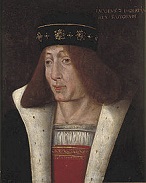







1437 On Jan. 3 Catherine of Valois (b. 1401) dies during childbirth in London, and her son Henry VI (b. 1421) of England is declared of age, but he proves to be a gentle, generous, well-meaning but weak king whom his nobles push around, and is unfit to rule, and the regency council stays in power amid factions and favorites and disorder, while nobles maintain private armed retainers (livery and maintenance) and fight private wars, growing rich with the innovation of sheep farming with enclosures?; the Beauforts make Henry V their puppet, getting Duke Edmund Beaufort of Somerset and his friend the earl of Suffolk promotions in the govt. On Feb. 20 (Lent) after his nearest male relative Robert Stewart, grandson of Earl Walter Stewart of Atholl lets them into his lodgings in the Dominican convent at Perth, Scottish king (since Apr. 4, 1406) James I (b. 1394) is assassinated by Robert Graham and armed servants of Duke Robert Stewart of Albany, incl. Thomas Chambers, Christopher Chambers, and the two Barclay brothers after he tries to squeeze through a sewer tunnel which he had just had blocked to prevent balls from being lost from his tennis court, causing him to become trapped like a rat until he is stabbed to death; Queen (since Feb. 2, 1424) Joan Beaufort (1404-45) is wounded but escapes, sending word to Edinburgh to remove John Spens, a known Atholl man from guardianship of her 6-y.-o. son Duke James of Rothesay and replace him with trusted John Balfour; she then goes on a revenge tour, getting the papal nuncio Bishop Anthony Altani of Urbino to declare her butchered hubby a martyr at his funeral, then have the conspirators tracked down and given the English-style hanging, drawing, and quartering; she becomes regent of Scotland until 1439 for her and James I's birthmarked son James II (Fiery Face) (1430-60), who on Feb. 21 becomes king of Scotland (until Aug. 3, 1460), and is crowned at Holyrood Abbey (where he was born) on Mar. 25, becoming the first Scottish king not crowned at Scone (too close to Perth); the marriage of James I's sister Margaret Stewart to Archibald, 4th earl of Douglas gives the Douglases a claim to the regency, and they begin ruling Scotland out of Edinburgh, with James II's 1st cousin Archibald Douglas, 5th Earl of Douglas (1390-1439) becoming regent of Scotland and its most powerful man (until 1439); meanwhile the Stewart-Douglas rivalry rages on. On Sept. 13-Oct. 19 after Duarte I's brothers Prince Henry the Navigator and Ferdinand the Holy Prince talk him into, against the advice of the pope, Duke Peter of Coimbra, and Infante John, the Battle of Tangier (Siege of Tangiers) is a decisive D for 6K-8K Portuguese after a relief army of 100K Moroccans led by vizier Abu Zakariya Yahya al-Wattasi (-1448) arrives, encircles them, and starves them into submission until Prince Henry signs a treaty giving back the citadel of Ceuta (captured in 1415) and surrendering his brother Prince Ferdinand as a hostage; too bad, he later reneges, and Ferdinand dies in captivity in 1443; the Portuguese unsuccessfully siege the city 3x more in this cent. On Oct. 18 Richard Plantagenet, 3rd duke of York marries Cicely Neville (1415-95), "the Rose of Raby" (daughter of Ralph Neville, 4th Baron Neville), who has four sons, incl. kings Edward IV and Richard III; after a few successes he is replaced by the Earl of Warwick as regent in France (until 1439). In Dec. HRE Sigismund (b. 1368) dies, becoming the last HRE of the Luxembourg Dynasty; before his death he transfers Brandenburg to Frederick I of Hohenzollern (1371-1440), founder of the Hohenzollern Dynasty; he wills his titles of king of Germany, Hungary, and Bohemia to his Hapsburg son-in-law (hubby of his daughter Elizabeth, by 2nd wife Barbara of Cilli) Duke Albert (Albrecht) V of Austria (a descendant of Bela IV of Hungary), who becomes uncrowned HRE Albert II of Hapsburg (1397-1439) (until Oct. 27, 1439) - I can turn into a bat, a butterfly, or a toad, and if you don't come to see me I will haunt you? Byzantine emperor (since 1425) John VIII Palaeologus (Palaiologos) (1392-1448) appoints Latin-speaking theologian Isidore of Kiev (Thessalonica) (1385-1463) as metropolitan of Kiev, Moscow, and all Russia in an attempt to unite the Russian Orthodox Church with the Roman Catholic Church and gain Constantinople's protection against the horrible Ottomans; Russian grand prince Vasily II doesn't accept him, but Isidore of Kiev still manages to talk him into allying with Roman Catholicism to save the Byzantine Empire and the Orthodox Church of Constantinople, and receives funding from him. On Sept. 13-Oct. 19 after Duarte I's brothers Prince Henry the Navigator and Ferdinand the Holy Prince talk him into, against the advice of the pope, Duke Peter of Coimbra, and Infante John, the Battle of Tangier (Siege of Tangiers) is a decisive D for 6K-8K Portuguese after a relief army of 100K Moroccans led by vizier Abu Zakariya Yahya al-Wattasi (-1448) arrives, encircles them, and starves them into submission until Prince Henry signs a treaty giving back the citadel of Ceuta (captured in 1415) and surrendering his brother Prince Ferdinand as a hostage; too bad, he later reneges, and Ferdinand dies in captivity in 1443; the Portuguese unsuccessfully siege the city 3x more in this cent. Transylvanian gov., frontier lord and Hungarian patriot John (Janos) Hunyadi (1387-1456) leads a counteroffensive against the Ottomans (until 1444), and scores his first V over the Turks. Christ's College at Cambridge U. is founded by clergyman William Byngham (Bingham) (1390-1451) as God's House to train grammar school teachers, becoming the first known secondary school training college; in 1505 it is refounded as Christ's College. Inventions: John Dunstable develops counterpoint in musical composition - but that doesn't mean that whites will ever get rhythm? Births: Wallachian prince (1462-75) Radu (the Handsome) (d. 1475); son of Vlad II Dracul (1390-1447); brother of Miracea II (1427-47) and Vlad III Dracula (1431-76). English queen consort (1464-83) Elizabeth Woodville (Wydeville) (Widvile) (d. 1492) on Feb. 3 in Grafton Regis, Northamptonshire; daughter of Richard Woodville, 1st earl Rivers (1405-69) and Jacquetta of Luxembourg (1415-72); granddaughter of Margaret de Baux (1394-1469); maternal descendant of John I of England; wife of Edward IV; mother of the "princes in the Tower" Edward V (1470-83) and Richard of Shrewsbury, duke of York (1473-83). Spanish Jewish statesman-theologian Isaac Ben Judah Abravanel (Abrabanel) (Abarbanel) (d. 1508) in Lisbon; treasurer of Alfonso V of Portugal; expelled from Spain in 1492; father of Judah Abrabanel (Leo Hebraeus) (1460-1535). German meistersinger Hans Folz (d. 1513) in Worms. Deaths: Italian humanist Niccolo Niccoli (b. 1364). German king (1411-37) and HRE (1433-7) Sigismund (b. 1368) on Dec. 9 in Znaim (Znojmo), Bohemia; last Luxembourg HRE. Scottish king (1406-37) James I (b. 1384) on Feb. 20 in Perth (assassinated); buried in the Carthusian Priory near Perth; leaves the poem The Kingis Quair (The King's Book) (the king is what?), about his love for the Dominican nuns of Perth, er, his babe Queen Joan. English queen Catherine of Valois (b. 1401) on Jan. 3 in London (dies during childbirth); buried in Westminster Abbey; her grandson Henry VII destroys her alabaster memorial to coverup his flaky ancestry, and her coffin lid is raised, after which her corpse becomes a tourist attraction, being kissed on Shrove Tuesday, 1669 by Samuel Pepys. Scottish leader William, 2nd earl of Angus (b. ?) in Oct.


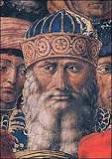



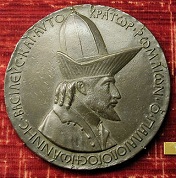


1438 On Jan. 1 Archduke Albert V of Hapsburg (Austria) is crowned king of Hungary and Croatia; on Mar. 18 after Frederick of Brandenburg, candidate of the German reformers withdraws, Albert V, husband of HRE Sigismund I's daughter is magnanimously, er, unanimously elected king Albert II (the Magnanimous) (1397-1439) of Germany (until Oct. 27, 1439) (and of the Romans, although never crowned HRE), founding the Hapsburg (Habsburg) Dynasty of the Holy Roman Empire; in return he has to sign capitulations to the nobles, who are no longer obliged to fight beyond the frontiers; all future HREs except Charles VII and Francis I are Hapsburgs, with those from 1765-1806 being of the House of Hapsburg-Lorraine; rival Wladislaw III of Poland begins a civil war (ends 1439); in June Albert II is crowned king of Bohemia, but is never able to obtain possession of it, fighting the Bohemians and their Polish allies for it. On Feb. 8 Byzantine emperor (125-48) John VIII Palaeologus arrives in Venice with a retinue of 700 incl. Constantinople patriarch Joseph II and 20 metropolitans, plus other big brains incl. Neoplatonist philosopher Gemistus Pletho (Plethon) (Georgius Gemistus) (1355-1452), who advocates a return to the Olympian gods, and his student Johannes (Basilius) (Basilios) Bessarion (1403-72); on Apr. 9 the Ecumenical Council of Ferrara convenes, with the patriarch refusing to kiss the pope's foot and instead bowing and kissing his cheek; John VIII Palaeologus pleads for assistance from the Turks encircling Constantinople, proposing a union of the Greek and Roman Catholic Churches; Pletho goes on to meet with Cosimo de' Medici, who founds the Platonic Academy of Florence under Marsilio Ficino (1433-99), who translates all of Plato's works and other Neoplatonist works by Plotinus et al. into Latin, helping revive Greek learning in W Europe; the academy is dissolved after the 1492 death of Lorenzo de' Medici (b. 1449). In Mar. a 9-year English-Scottish Truce is signed, effective from May 1 of this year until May 1, 1447, with a bipartisan commission of conservators to enforce it - time out from fighting for their free-ee-dom? On Sept. 9 king (since Aug. 14, 1433) Edward (Duarte) I the Philosopher/Eloquent (b. 1391) dies of the plague (grief over his impisoned son Ferdinand?) after appointing his unpopular foreign wife Eleanor of Aragon as regent, who wants his 6-y.-o. son Afonso V to be king instead of the older brothers, causing the burghers assembled by Infante John, Constable of Portugal to appoint Prince Pedro, Duke of Coimbra (b. 1392) as regent instead (until June 6, 1448), and on Sept. 13 his 6-y.-o. son Afonso (Alfonso) V (the African) (1432-81) becomes king #12 of Portugal (until Aug. 28, 1481). The Pragmatic Sanction of Mainz, a preliminary agreement between the papacy and the HRE settles the Holy Roman Empire in the House of Austria, abolishes annates, papal reservations, and provisions, and leaves the German church under imperial and princely control; rescinded in 1516. The Polish parliament in Piotrkow declares 14-y.-o. Wladyslaw III (b. 1421) old enough to assume personal rule, which doesn't satisfy the Polish nobles who didn't want him in the first place. Sultan Murad II leads the Ottomans against Transylvania and Hungary, ravishing them. The Jews are expelled from Augsburg. The Chinese occupation of Sri Lanka ends. Pachacutec ("he who remakes the world") (-1471) becomes king of Cuzco (until 1471), going on to conquer the South Am. continent and found the Inca (Tawantinsuyu) Empire, the largest in pre-Columbian Am. (ends 1533). Mongol Golden Horde Khan Ulugh Mohammed founds the town of Kazan near the Volga and Kazanka Rivers as his capital. All Souls College at Oxford U. is founded by Canterbury archbishop (since 1414) Henry Chichele (Chicheley) (Checheley) (1364-1443), with a warden and 40 fellowships (24 in arts, philosophy, and theology, 16 in civil or canon law) reserved for scholars who must take Holy Orders; Codrington Library is completed in 1751; undergrads are eliminated in the 19th cent. Architecture: The Doge's Palace in Venice (begun in 1309) is completed; the Doge's magnificent state barge is called the Bucentaur. The Jamma Musjid Mosque in Husain, Jaunpur is completed. Art: Pisanello (1395-1455), Portrait Medal of Byzantine Emperor John VIII Palaeologus; first-ever portrait medal, made after attending the Council of Ferrara; great for collectors. Paolo Uccello (1397-1475), The Battle of San Romano (1438-40). Poetry: Alfonso Martinez de Toledo (1398-1470), Libro del Arcipreste de Talavera (El Corbacho), o Reprobacion del Amor Mundano; inspired by Giovanni Boccaccio's "Corbaccio"; argues against sexual lust ("loco amor"), and lampoons women as inferior. Births: French duke of Bourbon (1488-1503) Peter II (d. 1503) on Dec. 1; son of Charles I of Bourbon (1401-56) and Agnes of Burgundy (1407-76) (daughter of John the Fearless); brother of John II (1426-88) and Charles II (1434-88). Deaths: Italian sculptor Jacopo della Quercia (b. 1371). Portuguese king (1433-8) Edward (Duarte) I (b. 1391) on Sept. 13 in Tomar (plague) (heartbreak over his imprisoned son Ferdinand?); leaves a revision of the Portuguese law code unifinished, along with The Loyal Counsellor and Book of Teachings on Riding Well on Every Saddle, becoming one of the oldest medieval manuals on horsemanship incl. jousting. Mamluk ruler (1422-39) Al-Ashraf Barsbay (b. ?).

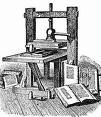

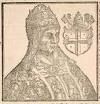



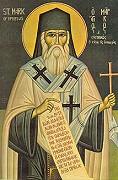
1439 The plague strikes Scotland again. On Jan. 10 after the plague strikes Ferrara, the Ecumenical Council of Florence (begun 1431) continues the Council of Ferrara under the patronage of Cosimo de Medici; on July 6 the Roman Catholic and Eastern Orthodox Churches sign a treaty uniting on paper, with 1-sided terms favoring Rome, in return for Pope Eugene IV calling for a new crusade against the pesky Turks; too bad, when the Byzantine prelates return home, the Orthodox pop. gets pissed-off and either replaces them or makes them repudiate the union; Hesychast metropolitan Manuel Eugenicus (Eugenikos) (St. Mark of Ephesus) (1392-1444) of Ephesus is the lone Orthodox prelate to refuse to sign the union proclamation, making him a hero and getting him canonized in 1456; too bad despite lobbying by metropolitan Isidore of Kiev, the Council of Basel (ends 1449) creates a fresh schism; on Dec. 18 after he gets talked into switching allegiances, Pope Eugene IV makes Johannes (Basilius) (Basilios) Bessarion (1403-72) a cardinal, causing him to remain in Italy, using his knowledge of Greek to collect Greek mss. while promoting humanist studies; too bad, Isidore's flock rejects any union with the Latins, and refuses to let him return, electing a new patriarch of their own; the whole affair ends Moscow's longtime loyalty to Constantinople, and when it falls in 1453 they take it as God's judgment on them, bolstered by the Legend of the White Cowl, which claims that Rome deviated from the true (Orthodox) faith because of "pride and ambition", a nd the New Rome (Constantinople) did ditto, leaving Russia as the Third and Final Rome. On May 4 the Battle of Grotniki near modern-day Nowy Korczyn sees the Hussites under Spytko of Mlesztyn (b. 1398) defeated and killed by Polish forces of Wladislaus III under Hincza of Rogow, ending Hussite influence in Poland. On June 24 Frederick IV of the Empty Pockets (b. 1382) dies, and his son Sigismund of Austria (1427-96) becomes Hapsburg archduke of Austria and Tirol (until 1490), getting into a war with Nicholas of Cusa, bishop of Brixen over the Inn, Isarco, and Pustertal Valleys. On Nov. 5 Duke Amadeus VIII of Savoy is elected antipope #7 of the Great Schism Felix V (1383-1451) in Avignon, becoming their last antipope (until Apr. 7, 1449). Philip III the Good gives up trying to conquer Calais - for good? On Oct. 27 uncrowned HRE Albert II (b. 1397) dies defending Hungary from a Turkish attack, and the magnates of Hungary offer the Hungarian crown to Wladyslaw III of Poland, which pisses-off some Polish magnates, along with Albert II's widow Elisabeth of Bohemia (daughter of HRE Sigismund I), who has the Hungarian crown stolen from its guardians in Visegrad by court lady Helene Kottanerin and secreted in Wiener Neustadt (causing the cross on top to become askew), then begins a civil war (ends 1440) to keep it for her bun-in-the-oven child Ladislaus Posthumous (b. 1440). Erik VII is deposed in Sweden and Denmark and flees, and the Danish council elects his nephew Christopher of Bavaria (son of his sister Catherine and her hubby John, son of HRE Rupert) as Christopher III (1416-48), becoming a puppet of the Hansa towns and renewing their privileges despite protests by Danish burghers; he starts out by buying the loyalty of Count Adolf VIII of Holstein by granting him the entire duchy of Schleswig as a hereditary fief under the Danish crown. Archibald, 5th earl of Douglas dies of the plague, leaving 13-y.-o. William Douglas, 6th Earl of Douglas (1426-40) as his heir, who is too young to be lt.-gen. of Scotland; meanwhile former "King's Quhair" Queen (1424-37) Joan Beaufort (-1445), regent for young James II is arrested after marrying James Stewart, the Black Knight of Lorne (1399-1451) without permission, then released after signing the Appoyntement, giving up all political power, allowing the unlikely combo of new chancellor Lord William Crichton, 1st Lord Crichton (-1454) (son of John de Crichton, who died in 1406), keeper of Edinburgh, and Sir Alexander Livingston of Callendar (-1451) (owner of Stirling Castle) to come to power. The Ottomans conquer Serbia and make the ruler of Bosnia a tributary; the majority of the Christians who embrace Islam come from the Bogomils sect. The heirs to the French throne begin to receive the title of Conte du Dauphine. The Taille, an exceptional direct land tax on French peasants and non-nobles becomes permanent after Charles VII is granted the right to collect taxes to support a standing army, becoming hated by the people. Inventions: Speaking of wizards, about this year German goldsmith Johannes Gutenberg (1398-1468) of Mainz invents a process for mass-producing movable type using a hand mold for a screw-type wooden Printing Press using oil-based ink; the Info. Explosion begins. Poetry: Juan Rodriguez de la Camara (1390-1450), Siervo Libre de Amor; chivalresque romance. Births: Portuguese queen consort of Castile and Leon (1455-74) Joana (Juana) of Portugal (d. 1475) on Mar. 20 in Quinta do Monte Olivete, Almada; daughter of Edward of Portugal (1391-1438) and Eleanor of Aragon (1402-45); wife (1455-) of Henry IV of Castile (annulled); mother of Juana la Beltraneja (1443-92). Italian painter Cosimo di Lorenzo Filippi Rosselli (d. 1507) in Florence; teacher of Piero di Cosmo (1462-1521). German Gothic sculptor Veit Stoss (d. 1533) in Nuremberg; student of Michel Wohlgemuth. Deaths: Austrian duke (1402-39) Frederick IV (b. 1382) on June 24. Scottish leader Archibald, 5th Earl of Douglas (b. 1390) on June 26 (plague); enbombed in St. Bride's Kirk in Douglas, Lanarkshire. German king (1438-9) Albert II of Hapsburg (b. 1397) on Oct. 27 in Neszmely (KIA fighting Turks).








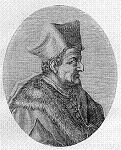







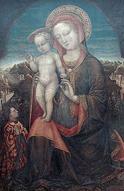

1440 On Jan. 2 after taking advantage of an anti-French revolt in Genoa, Ladislaus of Naples conquers Rome from the allies; on May 16-17 the fleet of Louis II of Anjou is intercepted carrying fresh troops from Provence, and partly destroyed off the Tuscan coast, losing 6K men; Ladislaus' captures Louis II's treasure worth 600K ducats; meanwhile new Pope John XXIII (former Cardinal Baldassare Cossa) proclaims a crusade against Ladislaus and authorizes the sale of indulgences to finance it. On Feb. 22 HRE Albert II's posth. son Ladislaus (Ladislas) (Laszlo) V Posthumous (1440-57), heir to the headship of the House of Hapsburg along with Bohemia, Hungary, and Austria is born in Komarom, Hungary (in modern-day Slovakia), and his mother Elisabeth of Bohemia has him crowned in Szekesfehervar, then makes the mistake of placing him under the guardianship of his 2nd cousin Archduke Frederick V of Styria and Carinthia (Inner Austria), later (1452) known as HRE Frederick III of Hapsburg (1415-93), who imprisons him in Orth Castle and assumes rule of Lower Austria, keeping the tyke out of Bohemia for many years while he plots to grab it all; a handsome amateur astrologer, botanist, and mineralogist, Frederick III is elected king of Germany (until 1493) to succeed Albert II as Friedrich IV; too bad, as a self-proclaimed scientist he is above mundane politics, skips sessions of the Diet, and lets his empire fend for itself against the Turks, later forcing Charles the Bold of Burgundy to marry his daughter Mary of Burgundy to his son Maximilian I (Kaiser Max), causing the Hapsburg star to rise, and giving rise to his motto "Let others wage wars, but you, happy Austria, shall marry" - ask Ahnuld about it? On Mar. 20 Lithuanian grand duke (since 1432) Sigismund Kestutaitis (b. 1351) is killed by supporters of Svitrigaila, allowing him to return to rule Podolia and Volhynia (until 1452). In Mar. Isidore of Kiev pub. an encyclical in Buda calling on all Russian bishops to accept the new union with the Roman Catholic Church struck in the 1439 Councils of Ferrara and Florence, but at the command of grand duke (since 1425) Vasilii II six Russian bishops hold a synod and despose Isidore, after which he is imprisoned, escaping in Sept. 1443 and ending up in Rome. On May 15 Polish king (since 1434) Vladislaus (Wladyslaw) III of Varna (1424-44) becomes king of Hungary and Croatia (until 1444) after winning the 2-year civil war (begun 1438) with Queen Elisabeth with the help of Pope Eugene IV in return for promising a Crusade against the Ottomans, which causes him to neglect his duties as king of Poland; his younger brother Casimir IV Jagiellon becomes grand duke of Lithuania (until 1492). On June 29 (Wed.) the papal army led by Florence under Francesco Sforza defeats Niccolo Piccinino of Milan in the Battle of Anghiari in Anghiari, Arezzo Province, Tuscany; in 1504-5 Leonardo da Vinci paints The Battle of Anghiari, which later becomes "the Lost Leonardo", part of which is preserved in Peter Paul Rubens' 1603 "The Battle of the Standard", copied from a 1558 engraving by Lorenzo Zacchia. In Sept. 24-y.-o. Baron Gilles de Rais (Retz) (Bluebeard) (b. 1404) of Brittany, marshal of France, one-time brother-in-arms of Joan of Arc, and 2nd richest man in France is arrested and charged with sorcery, sacrilege, and ritual murder of 140 young children, with accomplice Francesco Prelati (b. 1415), an Italian magician, in order to gain magical power over his enemies; on Oct. 21 he confesses ("Have I not already told you enough to put 10,000 men to death?"), and is hanged in late Oct.; his castles go to Duke John of Brittany, but his family suffers no disgrace since he confessed, leading some to believe that John was behind the accusations and he confessed to save them? White is right in Scotland too? The original Fat Bastard? On Nov. 24 after extensive plotting by the Crichton-Livingston clique, the Black Dinner in Edinburgh Castle sees the new head of the Black Douglases, 16-y.-o. William Douglas, 6th Earl of Douglas (b. 1424) and his younger brother David Douglas, young sons of the late Scottish lt.-gen. Archibald Douglas, 5th Earl of Douglas (1390-1439), along with Sir Malcolm Fleming of Cumbernauld summarily beheaded on trumped-up charges in the presence of James II after the head of a black bull is brought to the table; James II takes the lordships of Annandale and Bothwell for himself, giving Bothwell Castle in Lanarkshire, and gives the Black Douglas estates to their morbidly obese great-uncle (2nd son of Archibald Douglas, 3rd Earl of Douglas) James "the Gross" Douglas, 1st Earl of Avondale (1371-1443) of Balvenie, who becomes the lucky 7th earl of Douglas, and was in complicity all along, ending the power of the Black Douglases; Gross' sister Margaret Douglas gets the lordship of Galloway. Christopher of Bavaria is crowned Christopher III of Denmark (1416-48), followed by king of Sweden next year, and king of Norway in 1442 (until 1448), beginning a long balance of power struggle between the crown and nobility (ends 1660). The Ottomans under Sultan Murad II unsucessfully siege Belgrade. Duke Charles of Orleans, an English prisoner since Agincourt in 1415 is finally ransomed, and goes on to produce a son who becomes Louis XII. The Praguerie, a revolt of feudal lords against Charles VII of France is supported by Philip III the Bold and the dauphin (later Louis XI); it is quickly suppressed, and the king is lenient towards the nobles; Louis XI is pardoned by his father. Montezuma (Moctezuma) I (1397-1469) succeeds his brother Itzcoatl as ruler of the Aztecs in Tenochtitlan, going on to extend his empire to the Pacific and the Gulf of Mexico, build flood dams, beautify the capital of Tenochtitlan, and promulgate a severe legal code along with improved religious ceremonies. Richard Plantagenet, duke of York returns to France as regent again (until 1445); John Beaufort, 1st duke of Somerset (b. 1403), who wanted it so bad it hurts returns to England and commits suicide in 1444. In this decade Sir Thomas Malory sits in Parliament as a knight. Eton College (School) (King's College of Our Lady of Eton Beside Windsor) is founded in Eaton, near Windsor, Buckinghamshire, England by Henry VI as a charity school to give free education to 70 boys to groom them for King's College (College of St. Nicholas), which he founds next year in Cambridge, with special privileges exempting it from the jurisdiction of Cambridge U., the archbishop of Canterbury, and the bishop of Ely (until 1857); King's College goes on to become "the chief nurse of England's statesmen", graduating 18 British PMs; Eton boys end up wearing a distinctive formal dress with waist-length jacket and top hat; the late Gothic King's College Chapel is built in 1446-1515, with large stained glass windows added in 1531, and an early Renaissance rood screen in 1532-36, containing the world's largest fan-vault, becoming a symbol of the city of Cambridge - I love a boy in a short skirt and a waist-length jacket? The hereditary rank of viscount (below prince, duke, marquess, and earl, but above baron) (prince, duke, marquis, earl, viscount, baron = Pilgrim, do Muslims ever visit Boston?) is created in England; John Beaumont (1409-60) becomes the first recorded viscount in England after being created by Henry VI in 1432. The surname Galway first appears. The word "wizard" first appears in England, meaning wise person. Sports: King James II of Scotland prohibits the playing of the game of Golf in Mar. because he thinks it's too popular? Architecture: The Gothic Ca' d'Oro palace in Venice on the Grand Canal is built, going on to house the Franchetti painting collection incl. works by Titian, Tintoretto, Tiepolo et al. Laurens Janszoon Koster of Haarlem, Netherlands invents the first Movable Type Printing. Playing cards, long painted by hand begin to be colored by stencil in Europe; French playing cards name court cards for famous people from history or mythology, incl. kings (spades = King David, hearts = Charlemagne, diamonds = Julius Caesar, clubs = Alexander the Great). Nonfiction: Juan Rodriguez de la Camara (1390-1450), Cadira de Honor; moralistic treatise. Nicholas of Cusa (1401-64), On Learned Ignorance; it is possible to know God with the divine human mind but only via you know what? Galfridus Grammaticus, Promptorium Parvulorum; the first English-Latin dictionary, containing Latin definitions of English words, based on the 1400 "Medulla Grammatica"; compiled by a Dominican monk in Norfolk, England, and not printed until 1499 by Wynkyn de Worde. The first History Detective? Lorenzo Valla (1407-57), De Falso Credita et Ementita Constantini Donatione Declamatio; exposes the Donation of Constantine (Constitutum Domini Constantini Imperatoris) of Mar. 30 (315/317?), granting to the papacy "the city of Rome, and all the provinces, places and cities of Italy and the western regions" (the Papal States) as a medieval forgery composed in 750-800 C.E., first indirectly mentioned by Pope Hadrian I in 778, and first directly mentioned by Pope Leo IX in 1054. Art: In this decade (1425-30?) Medici-backed Donatello in Florence sculpts his dangly Bronze Statue of David, the first free-standing bronze nude since antiquity, risking trouble with the authorities who prosecute sodomy? Jacopo Bellini (1400-70), Virgin of Humility; favorite of the Prince of Este. Fra Filippo Lippi (1406-69), Madonna and Child - Christ and his mother are now whiter than Cheer? Stefan Lochner (1409-52), Madonna of the Rose Bower (1440-2). Plays: Anon., The Castle of Perserverance (3,649 lines); earliest known full-length vernacular play; incl. a drawing of a theatre in the round. Poetry: Martin le Franc (1410-61), Le Champion des Dames (The Champion of Woman) (1440-2); 24K lines; dedicated to Philip the Good, praising historical women incl. Joan of Arc while attacking govt. corruption and aristocratic hedonistic luxury; illuminated by Peronet Lamy; printed in Lyon in 1485 and Paris 1530; incl. "The Trial of Womankind", "The Conception of Mary". Births: Russian Moscow grand duke (1462-1505) Ivan III Vasilievich (the Great) (d. 1505) on Jan. 22 in Moscow; son of Vasilii (Basil) II; grandfather of Ivan IV the Terrible (1530-84). Hapsburg duke of Austria and king of Bohemia (1440-57) and Hungary (1440-57) Ladislaus (Ladislas) (Laszlo) V Posthumous (d. 1457) on Feb. 22 in Kamarom; posth. only son of Albert II of Hapsburg (1397-1439) and Elisabeth of Bohemia (1409-42) (daughter of HRE Sigismund I); 2nd cousin of HRE Frederick III. Spanish "Stanzas About the Death of My Father" poet Jorge Manrique (d. 1479). Flemish "Portinari Tryptych in Florence" painter Hugo van der Goes (d. 1482) (b. 1430?) in Ghent (Goes) (Zeeland); likes to paint the Holy Family. Scottish "The Wallace" bard Blind Harry (Hary) (the Minstrel) (d. 1492). Swedish regent (1470-97, 1501-3) Sten Sture the Elder (d. 1503); son of Gustav Anundsson and Birgitta Stensdotter Bielke (half-sister of Charles VIII). Hindu poet and religious reformer (St.) Kabir (d. 1518); disciple of Ramanand; urges a compromise between Hinduism and Islam, denounces the cast system, condemns idol worship, and regards Rama as the supreme deity; his followers, called Kabirpanthi go on to found the Sick, er, Sikh religion. Deaths: Lithuanian grand duke (1432-40) Sigismund Kestutaitis (b. 1351) on Mar. 20 in Trakai Peninsula Castle (assassinated). Dutch printer Laurens Koster (b. 1370) (plague). German elector of Brandenburg (1415-71) Frederick I (b. 1371) on Sept. 20 in Cadolzburg Castle, Bavaria.



1441 On Apr. 3 Blanche of Navarre (b. 1387) dies, and her culturny son Charles IV, Prince of Viana (1421-61) (who translates Aristotle's "Ethics" into Spanish and writes a history of the kings of Navarre) is exiled by his father John II (later king of Aragon in 1458), causing him to start a lifelong fruitless civil war to gain the throne; meanwhile his wife (since 1439) Agnes of Cleves (1373-1448) (granddaughter of Philip III the Good of Burgundy) shoots blanks and dies childless in 1448. On June 7 Bordeaux U. in British-owned Aquitaine, France is founded by Pope Eugene IV. On Oct. 31 after Niccolo Piccinino defeats him at Martinengo and forces him to give him the lordship of Piacenza, Francesco Sforza concludes a truce with Duke Filippo Maria Visconti of Milan and marries his daughter (his 2nd wife) Bianca Maria Visconti (1425-68) in Cremona, causing the pope and the king of Naples to quit trusting him and give the command of the papal forces to Piccinino - they're all mercenaries, right? The Crimean Khanate becomes a major power, buffering the Ottoman Empire and the Russians (until 1783). Portuguese explorer Nuno Tristao (Tristăo) (Tristam) sails to Cabo Blanco (Cape Blanc) S of Cape Bojador in West Africa, and finds the first loose African negroes running around without pink slips and dog tags, prompting plans to restart the slave trade; he brings back some Moors, who when they get to Portugal are allowed to return after trading themselves for "black Moors" with kinky hair; Portuguese Order of Christ member Antao Goncalves makes the first European landing on the W coast of Africa at Rio de Oro (Ouro) (Gold River) S of Cape Bojador, then brings the first black African slaves to Europe via the Atlantic Ocean (12 black Muslim Azanaghis) (before this they had all been brought via the Mediterranean, but weren't as good as the ones from the W coast?), which Goncalves gives as a gift to his boss Prince Henry the Navigator - I did what I did before love came to town? The city of Ougadougou (originally Kumbee-Tenga = head war chief's village) on the upper Volta River (modern-day pop. 2.2M/2.5m) becomes capital of the Mossi Kingdoms (Empire) (ends 1896). Political union is lost in the Yucatan among the Mayans. Architecture: God's House in London is founded by rector William Byngham to provide secular studies for schoolteachers. Inventions: The Rain Gauge is invented in Korea. Births: German Saxon elector (1464-86) Ernst (Ernest) (d. 1486) on Mar. 24 in Meissen; 2nd son of Frederick II of Saxony and Margarete of Austria (sister of HRE Frederick III); brother of Albrecht the Bold (1443-1500); founder of the Ernestine line of Saxon princes. Spanish Inquisitor (St.) Pedro de Arbues (Arbués) (d. 1484). Persian courtier-poet Mir Ali Shir Nava'i (d. 1501); translates Persian lit. into Chaghatai Turkish, transforming it into a literary language. Italian painter Luca Signorelli (Luca d'Egidio di Ventura) (d. 1523) in Cortona, Tuscany. Deaths: Spanish queen of Navarre (1425-41) Blanche I of Navarre (b. 1387) on Apr. 1 in Santa Maria la Real de Nieva. Flemish painter Jan van Eyck (b. 1390).



1442 On Mar. 18-25 the Battle of Hermannstadt (Sibiu) (Szeben) sees 10K Hungarian troops under John Hunyadi defeat 25K Ottoman troops under Mesid Bey, becoming Hunyadi's 3rd V after Smederevo in 1437. On Oct. 30 Isabella Stewart (1425-94), daughter of James I of Scotland marries Duke Francis of Brittany. The French take Gascony from England, except for Bordeaux and Bayonne; the English unsuccessfully siege Dieppe. Portuguese Prince Henry the Navigator (1394-1460) bequeaths his gift of African slaves to Pope Eugene IV, who in the bull Illius Qui (Those Who) confers upon him title to all lands E of Cape Blanc, causing Portugal to eagerly go into the African slave trade; meanwhile Alfonso, 1st Duke of Braganza (1377-1461)), 8th count of Barcelos, illegitimate son of Joao I becomes the 1st duke of Braganza in Portugal, founding the House of Braganza (Bragança) (ends 1910). Christopher III of Denmark and Sweden is elected king of Norway, and now rules the big Scandinavian three despite being a Hansa puppet. Enea Silvio de Piccolomini (1405-64), lay member of the Council of Basel is sent to take part in the German Diet in Frankfurt am Main, and becomes HRE Frederick III's poet laureate and private secy., going on to write several works of lit. under name name Aeneas Silvius (Syvlius), incl. the erotic novel Euryalus and Lucretia, or The Story of Two Lovers in the style of Boccaccio until 1446, when he takes holy orders, moving up quick and becoming cardinal and prince of the empire in 1448, and Pope Pius II in 1458. Frederick III orders all the Jews living near the cathedral in Frankfurt resettled after their singing in their synagogue disturbs the Christian services - what a great compromiser? James Douglas, 6th earl of Douglas marries his son Archibald Douglas to the young heiress of the earldom of Moray, ignoring the claim of her elder sister, who is married to James Critchton, son of chancellor (since 1439) William Chrichton; Douglas also arranges the marriage (next year) of his eldest son William Douglas (b. 1425) to Margaret "the fair maid of Galloway", sister of the 6th earl of Douglas, whom he got executed in 1440, then dies, and William Douglas succeeds as 8th earl of Douglas. Edirne becomes the festival city of the Ottoman Empire. Sweden adopts a blue coat of arms with a yellow cross inspired by the 1275 coat of arms of Magnus Birgersson of Denmark, which in 1906 becomes the Swedish flag; in 1992 Kazakhstan adopts a blue flag with yellow insignia. Births: English king #37 (1461-83, except 1470-1) Edward IV, 4th Duke of York (d. 1483) on Apr. 28 in Rouen, Normandy; son of Richard Plantagenet, 3rd duke of York (1411-60) and Cicely Neville, duchess of York (1415-95). Japanese emperor #103 (1464-1500) Go-Tsuchimikado (Fusahito) (d. 1500) on July 3; eldest son of Go-Hanazono (1419-71). Italian celeb mistress (of Pope Alexander VI) Vannozza (Giovanna) dei Cattanei (d. 1518) on July 13 in Mantua; mother of Cesare Borgia (1475-1507), Giovanni Borgia (1474-97), Lucrezia Borgia (1480-1519), Gioffre Borgia (1481-1517), and Ottavio di Croce. English "Trimming Duke" Sir John de la Pole, 2nd Duke of Suffolk, 2nd Marquess of Suffolk, 5th Earl of Suffolk (d. 1491) on Sept. 27; son of William de la Pole, 1st duke of Suffolk (1396-1450) and Alice Chaucer (daughter of Thomas Chaucer). Italian Florentine sculptor-architect Benedetto da Majano (d. 1498) in Majano, Tuscany. Deaths: Islamic Mamluk religious scholar Ahmad al-Maqrizi (b. 1364) in Egypt; leaves History of 15th Cent. Cairo. Spanish princess Yolande of Aragon (b. 1384) on Nov. 14. Scottish lord James "the Gross" Douglas, 7th earl of Douglas (b. ?); entombed in St. Bride's Kirk, Douglas, Lanarkshire, his body being too fat for the prefabbed tomb, requiring his body to be rendered down. Hungarian-Bohemian-German queen Elisabeth of Bohemia (b. 1409) on Dec. 19 in Gyor (Raab).




1443 On Jan. 1 Pope Eugene IV issues an encyclical calling for the faithful to go and defend their Christian brothers in the East against the infidel Muslim Turks in the Crusade of Varna (ends 1444); the response is almost nil, except from Wallachia, Burgundy, Poland-Hungary, and Transylvania (where John Hunyadi has been kicking Turk butt since 1441), who send 25K troops; early in the year John (Janos) Hunyadi "the White Knight" (1387-1456) of Hungary and Vladislaus (Wladyslaw III) (1424-44) of Poland-Hungary lead the Crusaders into S Serbia and capture Nish and Sofia, making Vladislav III a Hungarian nat. hero, but they are finally turned back on Dec. 12 at the Battle of Zlatica; meanwhile Prince Skanderbeg (Scanderbeg) (Iskender Beg) (Lord Alexander) (Georg Kastrioti) (1405-68) sees his chance, revolts, and on Nov. 28 becomes the ruler (prince) of independent Christian Albania (until 1468); the Ottomans lick their wounds over the winter, and by spring decide to call it quits. In June Blessed Ferdinand (b. 1402), prince of Portugal, son of King John I dies in Muslim captivity in Fez, Morocco after trying to recapture Ceuta. Philip III the Good of Burgundy conquers the duchy of Luxembourg. After forming an alliance with Francesco Sforza, Alfonso V of Aragon defeats Rene I the Good of Anjou, and claims the throne of Naples. Tvrtko II dies, and is succeeded by Stephen (Stjepan) Tomas Kotromanic (-1461) as king of Bosnia (until 1461). Duke Frederick V's imprisoned ward Ladislaus V Posthumous (b. 1440) is recognized as king of Bohemia by the Bohemian diet; too bad, he isn't freed until 1452 or crowned until 1453. I-am-the-most-amazing-man Scottish chancellor (since 1439) William Crichton is created Lord Crichton of Sanquhar by Parliament, and makes a load of dough from a loan to James II in 1450, allowing him to build up his cool Crichton Castle in Midlothian S of Edinburgh at the head of the Tyne River. The English issue an order on quarantine and cleansing to prevent the spread of plague - only a century late? Copenhagen (modern pop. 1M) becomes the capital of Denmark. The fishing village of Pusan in (South) Korea is opened to Japanese trade (modern pop. 4M) - you invited them or they invited themselves? Architecture: Brunelleschi finishes the Duomo (Cupola) of Florence Cathedral (begun 1420). The Church of St. John the Baptist in Cardiff, Wales (severely damaged in the Owen Glendower revolt) is rebuilt. Inventions: Hunmin Chong-um (Hunminjeongeum) (Correct Sounds to Teach the People), a document describing the new Hangul Korean writing system invented by King Sejong is pub. in Chinese. Art: Donatello (1386-1466), Gen. Gattamelata (1443-53) (sculpture) (Padua). Births: German Saxon elector Albrecht (Albert) (the Bold) (the Courageous) (d. 1500) on Jan. 27 in Grimma; youngest son of Frederick II the Gentle (1412-64) and Margarete of Austria (sister of HRE Frederick III); brother of Duke Ernst (1441-1486); member of the Order of the Golden Fleece. Bohemian king (1469-90) and Austrian duke (1487-90) and king of Hungary and Croatia (1458-90) Matthias Corvinus I (the Just) (d. 1490) on Feb. 23 in Kolozsvar (Cluj-Napoca, Romania); son of John Hunyadi (1387-1456) and Erzsebet Szilagyi (1410-83); brother of Laszlo Hunyadi (1431-57); he never called himself Corvinus, which was coined by biographer Antonio Bonfini (1434-1503) who claims he descends from the ancient Roman Corvini gens. Spanish nobleman-stud Beltran (Beltrán) de la Cueva y Alfonso de Mercado, 1st Duke of Albuquerque (d. 1492) in Ubeda; court favorite of Henry IV; created duke in 1463; husband of Mencia, niece of Cardinal Mendoza; rumored father of Juana la Beltrana (1462-1530) by Henry's 2nd wife Princess Joan of Portugal (1439-75). Italian painter Piero del Pollaiolo (It. "hen coop") (Benci) (d. 1496) in Florence; brother of Antonio del Pollaiolo (1429-98). Italian sculptor-architect Giuliano da Sangallo (d. 1516) in Florence; brother of Antonio da Sangallo the Elder (1453-1534); father of Francesco da Sangallo (1494-1576); favorite of Lorenzo de' Medici; influenced by Leon Battista Alberti and Filippo Brunelleschi; influences Raphael and Leonardo da Vinci. English soldier Thomas Howard, 2nd Duke of Norfolk, 1st Earl of Surrey (d. 1524); son of John Howard (1430-85); father of Thomas Howard, 3rd duke of Norfolk (1473-1554) and Elizabeth Howard (-1538). Deaths: English archbishop Henry Chichele (b. 1363) on Apr. 12. Scottish nobleman James Douglas, 7th earl of Douglas (b. 1371) on Mar. 24. French officer La Hire (b. 190) on Jan. 11 in Montauban; his face is later used for the Jack of Hearts on French playing cards; his name becomes a name for a choleric dispositin.



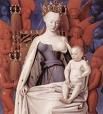

1444 On June 12 Vladislaus (Wladyslaw) III of Poland-Hungary signs a 10-year truce with Sultan (since 1421) Murad II (1403-51) in Adrianople, restoring the kingdom of Serbia in return for recognizing Ottoman suzerainty in Bulgaria and Wallachia, then reneges when a Crusader army organized by the pope, Hungary, and Venice arrives from Venice on Aug. 4 and joins their crusade into Bulgaria, hoping to kick the Turks out of Europe; in Aug. Murad II concludes a peace treaty with the principality of Karaman, freeing him from his main adversary in the E so that he can kick Crusader butt in the west; in Aug. Murad II resigns and retires to Bursa in favor of his 12-y.-o. son Mehmed (Mehmet) (Mohammed) II (the Conqueror) (1432-81), who becomes Ottoman sultan #7, but the Janissaries don't cotton to him and want his daddy to return to the throne, which he does in May 1446; meanwhile, when he hears about the approaching Crusaders, daddy gathers an army, and on Nov. 10 his forces varnish the sorry-ass Wallachians, the Poles under still green 20-y.-o. Vladislaus (Wladyslaw) III (1424-44), and the Hungarians under John (Janos) Hunyadi "the White Knight" (1387-1456) at the Battle of Varna, in E Bulgaria near the Black Sea, with 10K Crusaders KIA, plus more from frostbite; Vladislaus III (b. 1424) is KIA, causing him to become known as Vladislaus III of Varna, leaving no wife or kids, causing a 3-year interregnum in Poland, while in Hungary his kiddie former rival Ladislaus Posthumus is elected king by the Hungarian nobles, who send a deputation to Vienna to ask Duke Frederick V for his release, which he refuses, causing the appointment of John Hunyadi as his regent in Hungary (until 1452) and George of Podebrady as his regent in Bohemia; Vlad II Dracul gives his sons Mircea I, Radu the Handsome, and Vlad III to the sultan as hostages (until 1447); the overwhelming V ends the Crusade promised by the West after the Act of Union in 1439, and frees the Turks to conquer Constantinople and E Europe for decades; Vladislaus III really survives, and becomes the father of Christopher Columbus? On Oct. 15 after driving Francesco Sforza from the Marche in E Italy, and being defeated at Montelauro, then being recalled to Milan by duke Filippo Maria Visconti, allowing Sforza to finish off his army in his absence, lame half-pint super-soldier Niccolo Piccinino (b. 1386) dies of grief and wounds in Milan. Taking advantage of the Crusader diversion, Prince Skanderbeg (1405-68) forms an alliance of Albanian princes, which successfully counters 13 Ottoman invasions over the next 20 years. Cardinal Henry Beaufort's man William de la Pole, 1st Earl of Suffolk (1396-1450) wins control of the council, and gets Duke Humphrey of Gloucester ousted; he secures a 2-year truce with the French in return for a marriage between Henry VI and Margaret of Anjou, niece of Charles VII's queen, and becomes known as Jack Napes (tame ape), although he gets a promotion to marquess and later duke, because of his badge consisting of a clog and chain such as is used to keep apes in captivity; too bad, a secret clause in the marriage agreement gives Normandy back to France. Agnes Sorel (1422-50) is the first mistress of the king of France to be publicly acknowledged as such - don't you worry about a thing? Humphrey Stafford (1402-60), great-grandson of Edward III and warden of the Cinque Ports becomes the first duke of Buckingham - you don't lindsay? Nuno Tristao reaches the Senegal River. The Siamese capture Angkor Wat. Architecture: Cosimo de' Medici founds the Biblioteca Medicea Laurenziana in Florence. Births: Italian duke of Milan (1466-76) Galeazzo Maria Sforza (d. 1476) on Jan. 24 in Milan; son of Francesco Sforza (1401-66) and Bianca Maria Visconti (1425-68). German "De Inventione Dialectica" humanist scholar-diplomat-organist Rudolf (Rudolph) Agricola (AKA Phrisius) (d. 1485) on Feb. 17 in Baflo (near Groningen); educated at the U. of Erfurt and U. of Louvain; one of the first scholars N of the Alps to learn Greek; known for his polished Latin, and for learning Hebrew. Italian High Renaissance architect Donato Bramante (d'Augnolo) (Lazzari) (Donato [di] Pascuccio d'Antonio) (d. 1514) in Fermignano (near Urbino) pupil of Piero della Francesca and Mantegna. Spanish grammarian-lexicographer Antonio de Nebrija (Lebrija) (Elio Antonio Martinez de Jarava) (d. 1522); big man in the Christian humanities-loving court of Ferdinand and Isabella. German artist Thomas Burgkmair (d. 1523) in Augsburg; father of Hans Burgkmair the Elder (1473-1531). Italian psychic Milo Giacomo Rambaldi (d. 1496) :) Deaths: Italian condottiero Niccolo Piccinino (b. 1386) on Oct. 15 in Milan (dies of grief and wounds received fighting Francesco Sforza). English soldier John Beaufort, 1st duke of Somerset (b. 1403) (suicide). Italian humanist historian Leonardo Bruni (b. 1369) on Mar. 9 in Florence; leaves History of the Florentine People (12 vols.), dividing history into Antiquity, Middle Ages, and Modern, becoming the first modern history book?; pub. in Strasbourg in 1610. Dutch painter Robert Campin (b. 1375) on Apr. 26. Greek Orthodox theologian St. Mark of Ephesus (Manuel Eugenicus) (b. 1392) on June 23 in Constantinople. Polish king (1434-44) and Hungarian king (1440-4) Vladislaus III of Varna (b. 1424) on Nov. 10 in Varna (KIA).



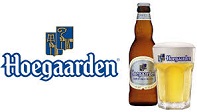
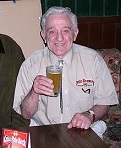
1445 The plague strikes England again - it doesn't matter, they passed a law? On May 19 after he decrees that taxes from Medina del Campo will be paid to him instead of John II of Aragon, supporters of John II of Castile, incl. Baron Alvaro de Luna defeat rebel nobles in the First Battle of Olmedo outside Olmedo, Castile. On Aug. 16 Margaret Stewart (b. 1424), wife (since 1436) of French dauphin Louis (future Louis XI), who wore a tight corset in a vain attempt to prevent pregnancy, and who was plagued by scurrilous gossip from her hubby's friends (since he detests her for being a favorite of his hated daddy Charles VII) dies in childbirth, her last words being "Fie on life! Speak no more of it to me". Reneging on his promise (arranged by the king's uncle Duke Humphrey of Gloucester) to marry the daughter of the earl of Armagnac (close relative of French king Charles VII), to insure peace Henry VI (b. 1421) of England marries Margaret of Anjou (1430-82), daughter of "Good King" Rene I of Anjou (1409-80), king (since 1435) of Naples, which is arranged by Gloucester's rival the earl of Suffolk, whom the king elevates to duke as a reward, even though Suffolk is in love with her himself and arranges the marriage so he can keep her close and play both ends against the middle; Rene receives full control over the duchies of Maine and Anjou in an unusual reverse dowry, which incenses Gloucester; she dominates the king, and works hand in hand with Suffolk and the duke of Somerset to run the kingdom, while Suffolk hopes to control her, the king, and the throne of England; see Shakespeare's "King Henry VI", Pts. 1-3 for a dramatized version. The town of Duisburg repels an attack by the archbishop of Cologne. Antao Goncalves of Portugal visits the Bay of Arguin and contracts with Muslim merchant Ahude Meymam to purchase 10 black slaves, along with some gold dust and ostrich eggs, becoming the first recorded purchase of West Africans by Europeans in West Africa? Venetian explorer Ca'da Mosto discovers the Gambia River in West Africa, going approximately 150 mi. into the interior. Portuguese explorer Dinis Dias (Diniz Diaz), who was of retirement age but decided "he was unwilling to let himself grow soft in the well-being of repose" discovers and rounds Cape Verde (800km S of Cap Blanc) the westernmost point of Africa, and increases the Portuguese trade with West Africa; he misses the Cape Verdes Islands. The first mention of beer brewing in the village of Hoegaarden near Tienen in Flanders, which becomes known for its mainly wheat White beer (Witbier), with coriander and orange peel added as flavorings; too bad, the last white beer brewery closes in 1957, but in 1966 local milkman Pierre Celis (1925-2011) opens a new one in his hay loft using Laraha (Curacao orange peel); in 1985 after a fire it is acquired by Interbrew, which merges in 2004 with AmBev of Brazil, becoming InBev, acquiring Anheuser-Busch in 2008 to become AB InBev; it is traditionally served in a hexagonal glass with a slice of lemon. Art: Italian Florentine painter Andrea del Castagno (1423-57) begins painting his Christ Frescoes. Poetry: Juan Rodriguez de la Camara (1390-1450), Triunfo de la Donas (Triumph of the Women); gives 40 feminist arguments to refute the 1438 "Corbacho" of Alfonso Martinez de Toledo. Births: Italian philosopher-poet (trans. of the Corpus Hermeticum) Lodovico Lazzarelli (d. 1500) on Feb. 4 in San Severino Marche. Italian Renaissance painter Sandro Botticelli ("Little Barrels") (Alessandro di Mariano dei Vanni Filipepi) (d. 1510) on Mar. 1 in Florence; his brother Antonio beats gold leaf; pupil of Fra Filippo Lippi, Mantegna, and Verrocchio. Italian architect-sculptor Gian Giacomo Quadri (Dolcebuono) (d. 1504) in Lugano. Egyptian Shaf'i Sunni scholar Imam Jalaluddin al-Suyuti (d. 1505) in Cairo; student of Jalaluddin al-Mahalli (1389-1459). French historian-diplomat ("the French Machiavelli") Philippe de Comines (Commines) (d. 1509). Italian Franciscan monk (prof. of sacred theology in Venice) ("the Father of Accounting and Bookkeeping") Luca Bartolomeo di Pacioli (Paciolo) (d. 1517) in Borgo Santo Sepolcro, Tuscany; math teacher of Leonardo da Vinci. Italian Umbrian School painter Fiorenzo di Lorenzo (d. 1525). Italian humanist statesman Pier Paolo Vergerio the Elder (b. 1370) on July 8 in Buda, Hungary; "The catastrophe of 1405 ruined Vergerio's career as a humanist" (Hans Baron). Deaths: Scottish queen (1424-37) Joan Beaufort (b. 1404) on July 15. Scottish-born French dauphine Margaret Stewart (b. 1424) on Aug. 16 in Chalons-sur-Marne, Marne (dies during childbirth).

1446 In Jan. Alfonso V of Portugal (b. 1432) attains the age of majority, but decides to keep Pedro as regent - because he's an African? In May Murad II reascends the Ottoman throne after his 14-y.-o. son Mehmed II proves too young to rule; the Turks take Corinth, expanding into C Greece. French dauphin Louis conspires against his father Charles VII's mistress Agnes Sorel and Pierre de Breze, and is exiled to the Dauphine, which he governs himself. Sigismund of Austria (1427-96) (1st cousin of HRE Frederick III) becomes Hapsburg duke of Austria and Tirol (until 1490). King (since 1424) Binnya Ran I (b. 1395) dies, and his nephew (adopted son) Binnya Waru (1418-51) becomes Burmese Hanthawaddy king #12 (until May 30, 1451), becoming known for traveling around his kingdom disguised as a commoner and dispensing strict disciplinary justice. A Jew named zum Buchsbaum is murdered in Frankfurt, and the town council secy. records it along with three Christian crosses, and the notations "God be praised" (Te Deum laudamus) and "Christ is risen" (Crist ist entstanden). Muzaffar Syah (Raja Kassim) (-1456) becomes the ruler #5 of Melaka (Malaysia) (until 1456), immediately facing a land attack by Siam, which is met by gen. Bendahara Paduka Raja Tun Perak (-1498), causing him to become military CIC. Guinea-Bissau on the W coast of Africa is discovered by Portuguese explorer Nuno Tristao. Gavle (Gävle) receives a charter from Christopher of Bavaria, becming the oldest city in Norrland (Northern Lands). Architecture: Genoa, Italy-born architect-artst Leon Battista Alberti (1404-72), Italy's first true choosing-you-is-a-no-brainer Renaissance universal man receives his first architectural commission for the facade of the Rucellai Palace in Florence, getting him appointed as architectural advisor to Pope Nicholas V, going on to work on several projects at the Vatican. I have senior moments but my skin shouldn't? French-style Rosslyn (Roslin) (Rose Line) Chapel (AKA the Cathedral of Codes and the Bible in Stone) 7 mi. S of Edinburgh on the N-S meridian that runs through King Arthur's Glastonbury is begun (finished in the 1480s) by up-and-coming William Sinclair (St. Clair), 1st Earl of Caithness (1410-84), son of Henry Sinclair, 2nd earl of Orkney (1375-1422) (protector of James I), who is created the first lord St. Clair in 1449, lord chancellor of England in 1454-6, followed by 3rd earl of Orkney in 1455-1470; it ends up with a carved coded interior that conspiracy theorists and Knights Templar junkies just love? King's College Chapel at Cambridge U. is begun (ends 1515). Al Bidya Mosque in Fujairah, Oman is built. Nonfiction: In the 9th lunar month King Sejong of Korea pub. Hunminjeongeum, describing his cool new alphabetic writing system for Korean. Births: French royal heir Charles de Valois, Duc de Berry (d. 1472) on Dec. 26 in Tours; son of Charles VII (1403-61) and Marie of Anjou (1404-63); brother of Louis XI (1423-63). Italian painter Francesco di Giovanni Botticini (d. 1498) in Florence; many of his works end up being attributed to Botticelli until Am. art historian Bernard Berenson (1865-1959) straightens it out? Franco-Flemish composer (greatest in Europe?) Alexander Agricola (d. 1506). Italian Umbrian School painter Il Perugino (Pietro Perugino) (Pietro Vannucci) (Pier Della Pieve) (d. 1523) in Citta della Pieve, Umbria; pupil of Andrea del Verrochio, Fiorenzo di Lorenzo, and Piero della Francesco; teacher of Raphael; known for his Madonna and his spacious landscape backgrounds bathed in fresh golden light. Deaths: Queen consort of Naples (1406-14) Mary of Enghien (b. 1367) on May 9. Italian architect Filippo Brunelleschi (b. 1377). Italian scholar Vittorino da Feltre (b. 1378) on Feb. 2 in Mantua. French grand chamberlain Georges de la Tremoille (b. 1382) on May 6. Italian poet Leonardo Giustiniani (b. 1388). Burmese king (1424-46) Binnya Ran I (b. 1395) in Pegu.


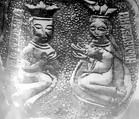
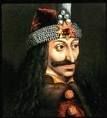


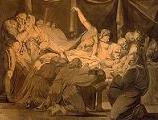
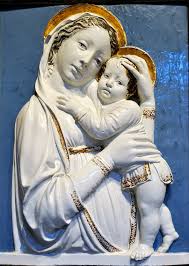
1447 On Feb. 23 Pope (since 1431) Eugene IV (b. 1388) dies, and on Mar. 6 Tommaso Parentucelli is elected Pope (#208) Nicholas V (1397-1455) (two nickels make a dime?); a bibliophile and humanist (fan of ancient pagan works, causing him to hire hundreds of scholars and copyists, creating a mini-Renaissance until the advent of printing), in 1451 he founds the Vatican Library; he also promptly begins improving Rome's streets, water supply, etc., making it magnificent to impress the little people and discourage any more antipopes from even thinking about it?; he begins replacing Constantine's Basilica (4th cent.) with St. Peter's Basilica, which ends up taking 20 more popes to complete (until 1784) - was he a neat freak? On Mar. 12 Shah Rukh (b. 1377) dies during a journey, and his mathematician-astronomer son Ulugh Beg (Mohammad Taregh bin Sharokh) (1393-1449) becomes Timurid shah of Persia (until 1449). On June 25 after a 3-year interregnum Casimir (Kazimierz) IV Jagiellon (1427-92) (grand duke of Lithuania since June 29, 1440) succeeds his brother Wladyslaw III as king of Poland (until June 7, 1492). On Aug. 13 Duke Filippo Maria Visconti (b. 1392) dies without heirs, ending the Visconti Dynasty in Milan (begun 1277); the Ambrosian Repub. takes over Milan (until 1450), with his flip-flopping son-in-law Francesco Sforza fighting it on his way to mastery of Milan. In Dec. Vlad II Dracul (b. 1390) is killed by the Turks along with his son Mircea I (b. 1427) (who is buried alive), and his other hostage sons Radu the Handsome and Vlad III are released, although Radu prefers to stay with the Turks and become a Muslim (becoming a lover of future sultan Mehmed II?); Vlad III Tepes (the Impaler) Dracula (1431-76) claims the throne of Wallachia, while John Hunyadi puts his own candidate on the throne. Scanderbeg defeats Murad II, gaining independence for India, Persia and Afghanistan. Duke Humphrey of Gloucester, rival of the Beaufort clan in England is arrested on trumped-up treason charges, and dies in confinement five days later (murdered in his sleep?); this incident and their other failures render Suffolk (Jack Napes) and Somerset unpopular, even as they gain ascendancy in the council; Richard Plantagenet, duke of York is now the natural heir to the throne as long as mad King Henry VI remains childless; meanwhile Margaret of Anjou gains complete control over the weak-minded king and the govt. Safavid Sufi leader #4 Shaykh Junayd (1430-60) is deposed by his uncle Ja'far, and goes into exile in Syria and E Anatolia (until 1459), where he builds a following who considers him divine, enters into an alliance with White Sheep Turk ruler Uzun Hasan, marries his sister, and begins a holy war against the Christians in Georgia. John II the Great of Aragon marries 2nd wife Juana Enriquez of Castile, who goes on to bear Ferdinand II of Aragon (of screw-u-Columbus fame) and consider his son (by his 1st wife Blanche I of Navarre) Prince Charles of Viana an obstacle. The first Jewish community in Lutsk, Ukraine is mentioned. Palermo U. in Italy is founded. The city council of Munich, Bavaria, Germany issues an ordinance requiring beer brewers to use only water, barley, and hops. Inventions: Music is first printed from engraved plates, which becomes the std. until 1860, when offset lithography is used. Art: Luca della Robbia (1399-1482), The Genoa Madonna (sculpture). Births: Ottoman sultan #8 (1481-1512) Bayezid (Bajazet) II (the Just) (d. 1512) on Dec. 3 in Dimetoka (modern-day Didymoteicho or Twin Walls), Thrace; son of Mehmed II (1432-81) and Gulbahar Khatun (Greek Orthodox); brother of Cem (1459-95); father of Selim I (1465-1520). Bavarian duke (1465-1508) Albert (Albrecht) IV the Wise (d. 1508) on Dec. 15 in Munich; son of Duke Albert III (1401-60) and Anna of Brunswick-Grubenhagen-Einbeck; younger brother of Duke John IV (1437-63). Italian mystic nun (St.) Catherine of Genoa (d. 1510); known for her visions of Purgatory. Italian early Renaissance architect-sculptor Giovanni Antonio Amadeo (d. 1522) in Pavia. Deaths: English bishop-cardinal Henry Beaufort (b. 1374) on Apr. 11; offers Death the whole English treasury on his deathbed in exchange for living longer?; in Henry VI, Pt. II, Act 3, Scene 3, Shakespeare portrays him as riddled with guilt over the death of Duke Humphrey of Gloucester, with Warwick uttering the soundbyte: "See how the pangs of death do make him grin"; John Reynolds (1788) and Henry Fuseli (1808) later paint the scene. Persian Timurid Shah Rukh (b. 1377) on Mar. 12. Florentine painter Masolino da Panicale (b. 1383). English prince Duke Henry of Gloucester (b. 1390) on Feb. 23; donates 279 classical mss. to Oxford, becoming the nucleus of its library. Wallachian prince Vlad II Dracul (b. 1390) in Dec. Italian Milan duke #2 (1412-47) Filippo Maria Visconti (b. 1392) on Aug. 13.




1448 By this year approx. 1K black Africans have been carried to Portugal or its newly-acquired Atlantic islands Azores and Madeira. Instead of discovering America, the dumb Danes fight over the scraps in the Baltic? On Jan. 6 Chistopher III of Bavaria (b. 1416) dies, and on June 20 the Swedish nat. assembly elects Karl Knutsson Bonde as king Charles VIII (1409-70) of Sweden and Norway (until 1457), ending the Kalmar Union with Denmark; the Danish council elects Duke Adolf of Schleswig-Holstein (1401-59), but he declines since he's an ancient 47-y.-o., and his nephew Count Christian of Oldenburg (son of his sister Hedwig) is elected as Christian I (1426-81) of Denmark in Copenhagen after he promises never to unite S Jutland (Schleswig-Holstein) with Denmark, and puts all real power in the hands of his council, then does ditto to get the crown of Norway; he marries Christopher III's widow Dorothea of Brandenburg (1430-95) to make it nice and cozy; meanwhile King Kong, er, Karl tries to secure the throne of Norway, but is ousted by King Christian - Bonde, Knutsson Bonde? On ? sultan Murad II defeats Albanian chief Scanderbeg, then defeats the Hungarians under Janos Hunyadi again on Oct. 17-19 at the Second Battle of Kosovo; the Ottoman path to Constantinople is now clear, and the Balkans better get used to mosques? The Anglo-Scottish War is renewed: the earl of Northumberland invades Scotland and burns and sacks Dumfries; in revenge the Scots under Douglas burn Alnwick; Northumberland invades again and is defeated on Oct. 23 at the Battle of the River Sark (Lochmaben Stone) near Gretna Green in Annandale, and his son Henry is captured; Lancaster and York form two rival groups in England. On Oct. 31 pale and disillusioned John VIII Palaeologus (b. 1392) dies childless, and after a dispute Sultan Murad II chooses his younger brother Constantine (Konstantinos) XI Dragases Palaeologus (Paleologos) (1404-53) to be the last Byzantine emperor (although he doesn't know it yet), and he is crowned next Jan. 6 (until May 29, 1453), entering isolated Constantinople on Mar. 12; his appointment as Roman consul #? is the last in a chain stretching back 1957 years; the Ottomans now slobber over Constantinople, the gateway to Europe, while the emperor vainly tries to get help from his uncaring Western Christian bro's. The French take Maine from the English, and set their sights on Normandy - no, not that? Polish nobleman George of Podebrad (Podiebrad) (Podebrady) (1420-71) seizes Prague, and becomes head of the Hussites, trying to get young king Ladislas Posthumous out of the hands of Frederick III and into Prague. Vlad III Dracula takes the throne of Wallachia with the help of the Turks, but the Saxons depose him and reinstall his brother Vladislav II. Hercegovina separates from Bosnia under King Herceg Stefan. The Concordat of Vienna is signed, a cynical compromise whereby Pope Nicholas V gives the support of the papacy to HRE Frederick III in return for a guarantee of the fidelity of the Germans to Rome; too bad, Freddy surrenders the liberty of the German church gained in the Council of Basel, pissing off the German princes; he also loses his authority in Switzerland. Brainy Mongol ruler Ulugh Beg (b. 1393) stinks himself by massacring the pop. of Herat after defeating Mirza Ala-u-dowleh, causing a backlash resulting in his own son beheading him next year. The Moscow and Kiev churches begin to separate, the former going with the Eastern Orthodox Church and the latter with the Roman Catholic Church. Rene I of Anjou refounds the Order of the Crescent (Ordre du Croissant) (founded in 1268 by Charles I of Naples and Sicily) to revive Louis IX's Order of the Ship and the Double Crescent, inducting Francesco Sforza, the comte de Lenoncourt, Lord Ferri of Sion-Vaudemont (husband of his daughter Iolande de Bar) et al.; too bad, the pope suppresses it. Danish nobleman Vallarte, who had joined the court of Portugal's Prince Henry the Navigator becomes the first N European on record to sail to West Africa, obtaining gold dust from traders; too bad, he is captured and killed off Goree. Henry VI's wife Queen Margaret of Anjou refounds St. Bernard's College (established two years earlier by her husband) as the Queen's College of St. Margaret and St. Bernard; it is later refounded by Edward IV's wife Elizabeth Woodville as Queen's College. Architecture: The pointed Gothic-style Hotel de Ville (Fr. "City Hall") in Louvain, Belgium on the Dyle River 18 mi. E of Brussels is begun (finished 1463). The Franciscan Muckross Abbey of Killarney in SW Ireland in County Kerry between Lough Leane and Lough Torc is built by Donal McCarthy Mor, going on to be raided by marauders several times before being persecuted by Cromwellian troops under Lord Ludlow, leaving it roofless with a large yew tree in the C courtyard surrounded by a vaulted cloister. Inventions: The Morris Dance in England is first mentioned. Nonfiction: Giovanni Leardo, Map of the Known World. Andreas Walsperger, Map of the World. Poetry Martin le Franc (1410-61), L'Estrif de Fortune et Vertu (1447-8); a debate between Fortune and Virtue. Births: Italian king of Naples (1494-5) Alfonso II (d'Aragon) (d. 1495) on Nov. 4 in Naples; eldest son of Ferdinand I (1423-94) and 1st wife Isabel de Claremont (-1465); cousin of Ferdinand II of Naples; pupil of humanist Giovanni Pontano. German artist Fritz Herlen (d. 1491) in Ulm. German "Virgin in the Rose Arbor" Renaissance engraver-painter Martin Schongauer (d. 1491) in Colmar, Alsace. English prelate-statesman (founder of Corpus Christi, Oxford) Richard Foxe (Fox) (d. 1528). Deaths: Indian mystic poet-saint Kabir (b. 1398). Danish-Swedish king Christopher III of Bavaria (b. 1416) on Jan. 6 in Helsingborg.





1449 On Mar. 24 the English in Normandy, commanded by Edmund Beaufort, duke of Somerset break their truce with France and capture and sack Fougeres, then are sorely pressed by the French, losing battle after battle, being beaten completely next year; the English public blame Somerset for losing their precious French possessions won in 1415, esp. Normandy, and want his head. On Apr. 1 the Treaty of Brussels is signed, and 18-y.-o. James II of Scotland (b. 1430), who begins to rule for himself, marries well-connected Mary of Guelders (Gueldres) (1434-63), daughter of Duke Arnold of Guelders and niece of rich Duke Philip the Good of Burgundy; Scots are now well fu, er, married into Euro nobility, with James' deceased sister Margaret Stewart (1424-45) once married to French dauphin Louis, his sister Isabella Stewart (1425-94) to Duke Francis of Brittany, his daughter Eleanor Stewart (1433-80) to Archduke Sigismund of Austria, and his sister Mary Stewart, Countess of Buchan (1427-65) to Wolfaert VI of Borselen, lord of Veere; the Scots now have access to trade and financing from the Low Countries, as well as Burgundian artillery pieces; although Philip the Good promises a Ł30K dowry for Mary, he also demands an upfront Ł5K tocher from James, while he pays in installments, causing James to have to get creative and get the Livingston clan forfeited next Jan. for financial misconduct as comptroller, cashing in on their estates and sharing some of the loot with William, 8th earl of Douglas. On Apr. 7 Antipope (since 1439) Felix V dies, and the Avignon antipope biz dies out; Pope Nicholas V is the last pope to have an Avignon antipope ruling simultaneously. On May 20 after Afonso V the African (1438-81) reaches majority and comes under the influence of his uncle Afonso I, 1st Duke of Braganza (1377-1461), dismissing his regency (begun 1439), reversing his acts, and dismissing his apointees, boxing him into a corner, Portuguese infanta Prince Pedro, Duke of Coimbra (b. 1392) rebels, and is KIA along with his protege Alvaro (Álvaro) Vaz de Almada, 1st Count of Avranches (b. 1390) in the Battle of Alfarrobeira near Alverca do Ribatejo in Vialonganear Lisbon; Afonso V assumes the rulership of Portugal as his uncle's puppet. On Sept. 8 Chinese emperor (since 1436) Ming Ying Zong is captured in battle by Esen Tayisi (-1455), chief of the Oirat Mongol 4-tribe confederation at the Battle of Tumu Fortress in Hebei, and after Chinese defense minister and gen. Yu Qian (1398-1457) stops the Mongols 50 mi. from Beijing, the emperor's younger brother Zhu Qiyu becomes Ming emperor #7 of China Ming Tai Tsung (Dai Zong) (Ching Ti) (Jingtai) (1428-57) (until 1457). In the fall wannabe duke Francesco Sforza (son-in-law of Duke Filippo Maria Visconti of Milan) begins sieging "his" Milan (until 1450). Richard Plantagenet, duke of York arrives in Ireland as viceroy (lt.), and wins the support of English colonists and natives. The Council of Basel (begun 1439) ends with the Byzantines out of luck and on their own to face the Muslim Turks. The Worshipful Co. of Girdlers in London receives a royal charter. Inventions: Henry VI issues a patent for making stained glass to John of Utynam to put in Eaton Boys' School, becoming the first English patent; it has a 20-year life. Births: Italian godfather Lorenzo de Pierfrancesco (the Magnificent) de' Medici (d. 1492) on Jan. 1 in Florence; turns his hometown of Florence into a treasure house of the arts. Italian Florentine painter Domenico di Tomaso Bigordi Ghirlandaio (Ghirlandajo) (d. 1494) on Jan. 11. English War of the Roses malmsey wine flip-flopper George Plantagenet, Duke of Clarence (d. 1478) on Oct. 21 in Dublin; 3rd son of Richard Plantagenet, 3rd duke of York and Cecily Neville; brother of Edward IV and Richard III. Italian humanist printer (inventor of italic typeface and the semicolon) Aldus Manutius the Elder (Aldo Manuzio) (Teobaldo Mannucci) (d. 1515) in Sermoneta (Bassiano); father of Paulus Manutius (1512-74). Deaths: Portuguese military hero Alvaro Vaz de Almada, 1st count of Avranches (b. 1390) on May 20 near Alverca do Ribatejo (KIA in the Battle of Alfarobbeira). Portuguese prince Peter, duke of Coimbra (b. 1392) on May 20 near Alverca do Ribatejo (KIA in the Battle of Alfarrobeira). Mongol astronomer Ulugh Beg (b. 1393) on Oct. 27 en route to Mecca (beheaded by his eldest son 'Abd al-Latif); leaves books of trigonometric tables of sine and tangent values accurate to 8 decimal places.







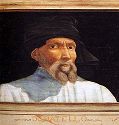





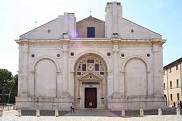
1450 The decade when rich Christian Euros looked like turbaned Muslims? In this decade recovery from the plague years leads to conspicuous luxury and fashion in Europe; the chaperon evolves into a fashion statement, the bigger the bourrelet, the higher your rank?; political parties identify themselves by their colors; by the end of the cent. it is kaput except for ceremonial use, incl. the white cappuccino to go with the brown robes of the Capuchin friars; "Little Red Riding Hood" wears a chaperon rouge; a chaperon is placed over a falcon's head to keep it from seeing something tempting and flying away, causing the word to be used for escorts of ladies; meanwhile tapestries become popular as a protection against the plague, which is thought to be airborne, giving work to artists. On Jan. 28 Henry VI's favorite royal councilor Jack Napes (b. 1396) (real name William de la Pole, 1st Duke of Suffolk), derisively nicknamed "jackanapes" because after rising from the merchant class to become a nouveau riche noble, he adopted a coat of arms featuring a collar and chain, associated with monkeys) is arrested and imprisoned in the Tower of London for the loss of Normandy caused by his 1444 marriage negotiations over Henry VI and Margaret of Anjou, then banished for five years, but on May 2 his ship is intercepted en route to England, and he is beheaded and his body thrown overboard; his enemy Richard Plantagenet, 3rd duke of York is suspected. On Feb. 9 after accompanying him on an expedition against the English in Jumieges, Normandy, Charles VII's 28-y.-o. hot mistress Agnes Sorel (b. 1421) gets a "flux of the stomach" and dies (future king Louis XI is suspected of poisoning her); the enemies of Charles VII's chief of finances Jacques Coeur (1395-1456) (known for pumping up trade between France and the Levant) spread rumors that he poisoned her, getting him arrested next year to get rid of him; in 2005 French scientist Philippe Charlier examines her remains and finds evidence of mercury poisoning, which possibly came from her cosmetics. In Feb. after the Venetian Repub. is blamed for a famine, a revolt in Milan kills the Venetian ambassador; in Mar. Francesco I Sforza (1401-66) and his wife Bianca Maria Visconti (1425-68) are invited in by the senate, ending the Ambrosian Repub. (begun 1447), becoming duke #3 of Milan by popular acclaim, the first duke of Milan whose title is awarded by the citizens, arriving on Mar. 22 (Mar. 25) at the Duomo on horses after refusing the triumphal wagon as a "kings' superstition", founding the Sforza Dynasty in Milan (ends 1500) and becoming good buddies with Cosimo de' Medici of Florence, going on to become the first Euro ruler to develop a foreign policy based on the balance of power concept; the HRE never officially invests him, but other Italian states gradually recognize him, and in 1494 the HRE invests his son; to foster peace, he creates the Triple Alliance with Naples and with Cosimo de' Medici of Florence, and becomes a patron of humanists Francesco Filelfo (1398-1481) et al. as well as learned Greeks, making sure his son Galeazzo Maria Sforza and daughter Ipplita Sforza grow up as well-educated humanists; too bad, Galeazzo turns out to be a bad apple? In the winter after changing the period of the Jubilee from 33 to 50 years, Pope Nicholas V (1397-1455) holds one (ends 1451); 200 pilgrims get trampled at the bridge of Castel Sant'Angelo; the Unwalling of the Holy Door takes place this year; the offerings of the pilgrims fill Rome's coffers, which the learned pope uses mainly to further culture and learning? The Swedish-Danish nat. assembly meets in Halmstad, and Christian I of Denmark and King Karl Knutsson of Sweden agree to restore the Kalmar Union, but only after one of them dies; on Aug. 2 Christian I is crowned king of Norway in Trondheim - didn't I already do this in Copenhagen? The French reconquer Normandy from the English, causing the public to turn on Edmund Beaufort, 2nd Duke of Somerset (1406-55) for his ruinous polices that are causing England to lose its French possessions, causing him to be accused of treason while Henry VI tries to protect him through defeat after defeat; Parliament impeaches his ally the earl of Suffolk, but Henry will not permit him to be tried, and banishes him from England for five years, but the fickle finger of fate intervenes, and his ship is seized by pirates as he tries to cross the Channel, and he is beheaded; in May Jack Cade's Rebellion against weak unpopular Henry VI sees 30K men from Kent and Sussex incl. many respectable small landowners led by Irishman Jack Cade (1420-50) march on London demanding govt. reforms and the restoration of Richard Plantagenet, 3rd Duke of York (1411-60) (lt. of France and Ireland) (Shakespeare claims that Richard, now heading an English army in Ireland hired Cade to lead the revolt so that he could personally intervene, quell the rebellion and triumphantly take the throne by force); the rebels' stated aims are reform of the Beaufort-dominated govt. and a change of ministers; the lords of the council raise an army against them, which mutinies, causing the king to flee from London while the rebels invade the city without opposition on July 3, marching across Deptford Bridge with 46K, hunting down ministers and wreaking vengeance; when they execute a man for being able to read and write ("The first thing we do, let's kill all the lawyers", cries Dick the Butcher in Shakespeare's King Henry VI, Pt. 2, 4.2.74, meaning those who can read and write), then turn into pillagers, the citizens of London expel them, and an army led by the duke of Buckingham cruelly defeats them on July 12 in the Harvest of Heads; Jack Cade is killed; England is now on the verge of civil war, with Duke Richard of York waiting in the wings; he returns to England from Ireland with his army, and forces the king to admit him to his council, with the avowed purpose of reforming the govt. and ousting the hated duke of Somerset, but the king and queen side with the latter, and civil war is on. The Ottomans capture the region around Sarajevo, Bosnia. The Austrians and Hungarians estates demand the release of Ladislaus Posthumous, but HRE Frederick III ignores them. Ming Ying Zong is released by the Mongols, but his younger brother continues as emperor Ming Tai Tsung, and he is given the title of "grand emperor" and put out to pasture; Ming Tai Tsung goes on to repair the Grand Canal and the dykes on the Yellow River, ruling through minister Yu Qian. Sejong dies, and Munjong II (-1452) becomes Yi king of Korea. About this time the Incas subdue the Indians of Chimu in N Peru, and build the "Lost City of the Incas", Machu Picchu (Quechua "Old Peak") (7,875 ft. alt.) in the Urubamba Valley 50 mi. NW of Cuzco, with the cool Temple of the Sun, Room of the Three Windows, and Intihuatana (Quechua "Sun Tier") Temple situated at the NSEW alignnment point of the nearby mountains; after the Spaniards conquer the Incas, the city is overgrown with jungle and lost until 1911; about this time the Incas attempt to invade Chile across the Atacama Desert, but are stopped at the Maule River. The city of Cajamarca (Kashamarka) (Quechua "town of thorns") (alt. 8,900 ft./2750m) (modern-daypop. 226K) is founded in the Mashcon River Valley in the the highlands of N Peru by the Incas, becoming the scene of the Battle of Cajamarca on Nov. 16, 1532, in which a Spanish force of 168 led by cruel conquistador Francisco Pizarro defeats Incan emperor Atahualpa and his 3K-8K retinue, going on to be colonized by the Spanish, becoming Peru's 13th largest city. The Creeks of Alabama and Georgia migrate to North Carolina, forcing the Siouan farmers out for a hundred years. About this time the Hohokam Indians inhabit Agua Caliente, near Tucson, Ariz. About this time the Hausa Empire in C Africa in modern-day NW Nigeria flourishes; the Hausa language becomes the lingua franca of W and C Africa; "Sannu" = hello. About this time the first substantiated evidence of coffee drinking is in the Sufi monasteries of Yemen. At the Council of Debre Mitmaq in Tegulet, Ethiopia, the Egyptians are convinced by emperor Zara Yaqob to accept the religious views of long-gone Ethiopian religious leader Ewostatewos (1273-1352) that the Sabbath should be celebrated on both Saturday (for the Old Testament) and Sunday (for the New Testament); meanwhile Zara Yaqob sends a diplomatic mission to Europe, led by Pietro Rombulo of Sicily, who visits Pope Nicholas V and Alfonso V of Aragon - this is where the ideas that blacks are lazy comes from? Lyons (Lyon), France becomes a great center of silk production. Glasgow, Scotland is made a regality. In this half-cent. early Modern English begins, turning into Modern English by the mid-18th cent. In this half-cent. after the English are driven out of Bordeaux, Irish mercenary ? Hennessey stays and begins producing cognac; the modern-day Hennessy cognac distillery is founde in 1765 by Richard Hennessy. In this half-cent. the term "House of Commons" comes into use in England. By this time the learned in Europe consider the Earth to be a flat disk surrounded by impenetrable oceans, with Jerusalem at the center of all nations and paradise somewhere in the Far East? In this decade doing busts become popular for starving artists as a source of income. Envision your possibilities? About this time codpieces (scrotum pieces) come into style in Europe, flourishing for the next cent., incl. in Shakespeare's time; originally a piece of cloth to cover the newfangled slits placed in men's pants for easy urination? - didn't he die from too much portly cod? In this half-cent. German replaces Latin as the language of official documents in the chanceries of Saxony and Thuringia (only a cent. behind Bavaria?), incl. Meissen and the univs. of Leipzig and Wittenberg. Mocha (Makha) in SW Arabia becomes the main port for coffee export. Architecture: Italy's first true choosing-you-is-a-no-brainer Renaissance universal man Leon Battista Alberti (1404-72) decides to go into architecture, and is commissioned by getting him appointed as architectural advisor to Pope Nicholas V, going on to work on several projects at the Vatican; in 1450 he is commissioned by Sigismondo Pandolfo Malatestiano (1417-68) AKA the Wolf of Rimini to turn the Gothic Church of San Francesco in Rimini into the crypto-pagan Tempio Malatestiano memorial chapel as a tribute to his 3rd wife Isotta degli Atti, becoming the first church to use the Roman triumphal arch (finished 1461). Inventions: The handle-operated Barrel (Street) Organ is invented in the Netherlands. Pumpernickel Bread is first baked in Osnabrueck, Westphalia, Germany. Nonfiction: Abramelin (Abra-Melin) (Abraham of Worms) (1362-1458), The Book of Abramelin; written in this decade; a grimoire (magician's handbook). Early in this decade (sometime between this year and 1455 - traditional date Feb. 23, 1455) Johannes Gutenberg (1398-1468) begins printing the 1,282-page 2-vol. 42-line Latin Mazarin (Mainz) Bible in Mainz (financed by goldsmith Johannes Fust), becoming the first major book printed from movable type in Europe; 180 copies are printed; another one with 36 lines per page is later printed; by modern times only 48 42-line Bibles exist, of which 12 are in Germany and 11 in the U.S.; it uses Black Letter (Gothic) Type, which spreads throughout Europe until the more graceful Roman Type (Caroline Miniscule) supplants it except in Bibles, prayer books, and proclamations. Art: Fra Angelico (1387-1455), The Annunciation. Paolo Uccello (1397-1475), Portrait of a Lady. Rogier van der Weyden (1399-64), Christ's Deposition in the Tomb; The Last Judgment; Philip the Good, Duke of Burgundy; an unusually large bourrelet hanging over his shoulder shows him to be one hip fashionista? Births: Croatian humanist poet Marko Marulic (d. 1524) on Aug. 18 in Split. Italian painter Ercole de'Roberti (Ferrarese) (da Ferrara) (d. 1496). Italian explorer John Cabot (Giovanni Caboto) (d. 1498); grows up in Venice; discoverer of the coast of North Am. (1497) while in England's service. Portuguese navigator-explorer Bartholomeu (Bartolomeo) (Bartholomew) Dias (Diaz) (d. 1500); first white European to round the Cape of Good Hope (1486). Portuguese explorer Gaspar Corte Real (d. 1501); brother of Miguel Corte Real (1451-1511). Dutch composer Jacob (Jakob) Obrecht (d. 1505). French Roman Catholic priest-chronicler Johann (Johannes) Burchard (Burchart) (Burkhart) (d 1506) in Niederhaslach (modern-day Bas-Rhin), Alsace. Portuguese viceroy #1 of Portuguese India adm. Dom Francisco de Almeida (d. 1510) in Lisbon. Portuguese navigator-cartographer Juan de la Cosa (the Biscayan) (d. 1510) in Santona, Cantabria. Dutch "Temptation of St. Anthony" painter Hieronymus Bosch (Jheonimus Anthonissen van Aken) (d. 1516) in 'sHertogenbosch (Bois-le-Duc), Brabant; known for triptychs full of fantasy people, animals, demons etc. German-Dutch composer Heinrich Isaac (Isaak) (d. 1517) in Flanders. Spanish courtier-ambassador (to the dukes of Burgundy) Don Diego de Guevara (d. 1520) in Escalante (near Santander); son of Ladron de Guevara; younger brother of Ladron de Guevara; cousin of Antonio de Guevara (1481-1545). French-Flemish #1 composer (the Beethoven of his day) Josquin des Pres (Prez) (Josquinus Pratensis) (Josken van de Velde) (d. 1521) in Conde-sur-L'Escaut, Hainaut; first master of the High Renaissance polyphonic music style. Austrian composer-lutenist Hans Judenkunig (Judenkünig) (d. 1526). German grandmaster of the Livonian Order (1494-1535) Wolter (Walter) von Plettenberg (d. 1535) in Welver, Westphalia. Indian Bishnoi (29ers) sect founder Guru "Jambhoji" Jambheshwar (d. ?) in Marwar, India. Deaths: Spanish poet Juan Rodriguez de la Camara (b. 1390) in San Antonio de Herbon Franciscan Monastery near Padron. Italian painter Pisanello (b. 1395) in Naples. English royal councilor Jack Napes (William de la Pole, 1st duke of Suffolk) (b. 1396) on May 2 in the English Channel (murdered); becomes the subject of the folk ballad Six Dukes Went a-Fishing. French royal bimbo (mistress of Charles VII) Agnes Sorel (b. 1423) (poisoned).



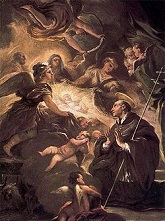
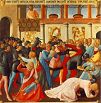
1451 On Feb. 3 sultan (since 1421, except 1444-6) Murad II (b. 1404) dies, and on Feb. 18 19-y.-o. Mehmed (Mohammed) II (the Conqueror) (1432-81) reascends the throne as Ottoman sultan #7 (until 1481), swearing on the Quran to the Byzantine embassy that he will respect their territorial integrity; having a lot to prove, he vigorously expands the family domain in Europe and Anatolia, earning the title of Conqueror (Fatih); remembering how the nobles kept him down, he works to centralize the state and make himself absolute ruler, confiscating property of leading Turkish families, promoting his devshirme (slave) elite, establishing the office of grand vizier, and becoming the first Ottoman ruler to codify state legislation in two major codes (kanunnames); too bad, sin is in, and he spends too much, debases the currency, increases taxes and causes economic discontent? On Feb. 14 28-y.-o. French dauphin Louis (future Louis XI) marries 8-y.-o. politically strategic Charlotte of Savoy (1443-83), daughter of Duke Louis of Savoy and Anne of Cyprus, whom he abandons the moment he makes king in 1461. On May 30 king (since 1446) Binnya Waru (b. 1418) is assassinated by his 1st cousin Binnya Kyan (1420-53), who becomes Burmese Hanthawaddy king #13 (until June 1453). In Oct. Bogdan II, ruler of Moldavia since 1449 is assassinated at a wedding by his brother (bastard son of Alexander the Good) Petru III Aron (-1467); Bogdan II's son Stephen II barely escapes, and flees to Transylvania, placing himself at the mercy of Janos Hunyadi; a civil war begins for control of Moldavia between Petru Aron and Alexandrel, nephew of Alexander the Good (ends Apr. 1457). James II of Scotland takes advantage of the absence of William, 8th earl of Douglas in Rome for the papal jubilee, during which time James' aunt Margaret, widow of Archibald, 5th earl of Douglas dies, allowing him to seize the disputed earldom of Wigtown, which James I had granted to her for life, leaving the dispute hanging; when the earl returns, he pulls off a crypto power play and ceremonially surrenders it to the king in parliament, who regrants it to him reluctantly in Oct. - your ass is grass now? Bordeaux and Bayonne, the last English strongholds in Gascony are captured by the French, leaving only Calais in English hands as their last possession in France; too bad, the citizens of Bordeaux consider themselves English and send messengers begging Henry VI to recapture the province - discount rates at the Hotel de Guise? A proposal is made in the English Parliament to make popular Richard Plantagenet, duke of York heir to the crown, but it is rejected and the proposer imprisoned - back to the drawing boards? The Scandinavian sound in the Baltic is opened to the English. Afghan Pashtun warlord Bahlul Khan Lodi (-1489) topples the say-ya-did Sayyids in Delhi, and founds the Lodi Dynasty (ends 1526). The U. of Glasgow in Scotland is founded under a papal bull of Pope Nicholas V. After Pope Nicholas V unites the diocese of Castello with the patriarchate of Grade, and moves the patriarchate to Venice, bishop of Castello (since 1433) (St.) Lawrence Giustiani (1381-1456) becomes the first patriarch of Venice (until Jan. 8, 1456), helping the panicked citizens deal with the 1453 Fall of Constantinople. Margaret O'Conor Faly (nee O'Carroll), who takes bards under her special care holds a feast in Killeigh, Leix, at which 2.7K poets, musicians, and antiquarians are royally entertained. Architecture: The Vatican Library in Rome is founded by bibliophile Pope Nicholas V for the "common convenience of the learned". Art: Fra Angelico (1387-1455), The Massacre of the Innocents (1451-3). Novels: Giovanni Francesco Poggio Bracciolini (1380-1459), Liber Facetiarum (Book of Humor); 273 bawdy tales satirizing monks and clergy; big hit throughout Europe; incl. the Dead Fly Joke. Births: Chinese #1 eunuch minister Liu Jin (d. 1510) on Feb. 28 in Xingping, Shaanxi Province. Spanish queen of Castile and Leon (1474-1504) Isabella I (the Catholic) of Castile and Leon (d. 1504) on Apr. 22 in Madrigal de las Altas Torres; daughter of John II (1405-54); half-sister of Henry VI of Castile (1425-74); wife (1469-1504) of Ferdinand II of Aragon (1452-1516); mother of Catherine of Aragon (1485-1536) and Joanna the Mad (1479-1555). French duke of Lorraine (1473-1508) and count of Guise (1504-8) Rene II d'Anjou (d. 1508) on May 2 in Angers; son of Count Frederick of Vaudemont and Yolande of Lorraine; nephew of John of Vaudemont; maternal grandson of Rene I of Anjou. Italian/Spanish/? explorer(discoverer of America for the Europeans) (converted or secret Jew?) ("Admiral of the Ocean Sea") ("Iberia's Pilot") Christopher Columbus (Cristobal Colon) (Christophorus Columbus) (Lat. "Christ-bearing dove of peace") (d. 1506) on Aug. 25-Oct. 31 in Genoa (Calvi, Corsica?); son of Domingo Pontevedra (a weaver) and Susanna Fontanarossa (Fonerosa); father of Diego Colon (1474-1526) and Ferdinand Columbus (1488-1539); moves to Portugal in 1476; a blonde from a Jewish family (Cohen?) that converted or pretended to convert to Christianity?; really on a Mission: Impossible to discover a new safe base for Jews after they are expelled from Spain by Isabella and Ferdinand, playing the cool trick of having anti-Semitic Roman Catholic rulers finance it? Uzbek ruler (khan) (1500-10) Muhammad Shaybani ("Shibagh" = wormwood/obsidien) Khan (Abu'l-Fath Muhammad) (d. 1510); descendant of Genghis Khan. Portuguese explorer Miguel Corte Real (d. 1511) (1448-1502?); brother of Gaspar Corte Real (1450-1501). Ottoman adm. Kemal Reis (Ahmed Kemaleddin) (d. 1511) in Gallipoli; paternal uncle of Piri Reis (-1555). Deaths: English clergyman William Byngham (b. 1390) on Nov. 17. Ottoman sultan #6 (1421-44, 1446-51) Murad II (b. 1404) on Feb. 3 in Edirne. Burmese king (1446-51) Binnya Waru (b. 1418) on May 30 in Pegu (assassinated).







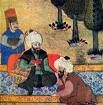


1452 In Feb. after finding out that his rival William Douglas, 8th Earl of Douglas (b. 1425), head of the most powerful aristocratic family in Scotland had formed an alliance with "Tiger Earl" Alexander Lindsay, 4th Earl of Crawford (-1453) and John Macdonald (John of Islay), Earl of Ross (1434-1503) (4th and last lord of the Isles), and had used the title "earl of Wigtown" on a charter, pissed-off "Fiery Face" James II of Scotland summons Douglas to Stirling with a promise of safe conduct, then on Feb. 22 on the 2nd day of discussions stabs him in the neck twice at dinner, and has his attendants finish him off and throw him out a window with 26 stab wounds; open warfare with the feudal family of the Douglases in SW Scotland begins, headed by his pissed-off brother and successor James Douglas, 9th Earl of Douglas (1426-88), who arrives at Stirling with 600 men and burns it after finding the king gone for only a couple of days; preggers Queen Mary is sent to the palace of St. Andrews bishop (since 1441) James Kennedy (1408-65), where she gives birth to future king James III ("son of Fiery Face") in May; in Aug. after the king ravages the lands of Douglas and James Hamilton, 1st Lord Hamilton, an accord is reached at Douglas Castle that is set to last until 1455. On Mar. 19 37-y.-o. German Hapsburg King Frederick III, archduke of Austria, duke of Styria, Carinthia and Carniola, and king of Rome is finally crowned HRE Frederick (Friedrich) III (1415-93) by Pope Nicholas V three days after marrying 18-y.-o. infanta Eleanor (Leonor) of Portugal (1434-67) (whose large dowry pays off his debts and cements his grate wealth and powah), becoming the last HRE crowned in Rome by the pope; his motto is the anagram AEIOU ("Austria Est Imperare Orbi Universo") (Austria is the Ruler of the World) (It is Austria's Destiny to Rule the World), which he has inscribed on all his possessions (and his 22-inch biceps?); too bad, 40 years later Columbus discovers the New World, and the Austrians don't get any, causing W Europe to pass them by, their big biceps shrinking to toothpicks like a shrunken balloon, and by the 20th cent. they are down to a cute little tourist trap with the Von Trapp Singers and Do-Re-Mi-Fa-So-La-Ti-Do? No wonder their #1 guy of the 20th cent. Ahnuld emigrates to the U.S. to become a Hollywood star and marry into the Kennedy clan? In Apr.-Aug. sultan Mehmed II builds the Rumeli Hisar, AKA the Bogasz-Kesen ("Throat-Cutter"), a network of forts on the Euro side of the Bosphorus designed to cut off all traffic with the Black Sea in conjunction with the Anadolu Hisar on the Asian side, (built by Beyazid I) unless they pay heavy tolls; in Dec. a Venetian ship attempts to run through and is captured and its 30-man crew executed; Constantinople is now cut off and its days are numbered. On June 18 after requests by Afonso V of Portugal, Pope Nicholas V issues the bull Dum Diversas, authorizing him to conquer and subdue diverse dumb Saracens and pagans and consign them to indefinite slavery, launching the West African slave trade; it is really just a call for another Crusade against the Muslims, and isn't about African slavery?; Pope Calixtus III renews it in his 1456 bull "Etsi Cuncti", Pope Sixtus IV renews it again in 1481, and Pope Leo X ditto in his 1514 bull "Precelse Denotionis". In June the Scottish parliament exonerates James II, and he begins a summer campaign in S Scotland to root out Douglas supporters, but his ruthlessness backfires, alienating many, causing his counsellors to talk him into signing an agreement with James, 9th earl of Douglas on Aug. 28 at Douglas Castle in Lanarkshire, followed by a bond of manrent at Lanark next Jan. 16, which gives James times to plot the final destruction of the pesky Black Douglases. On Oct. 17 John Talbot, 1st Earl of Shrewsbury (1384-1453) lands near Bordeaux with a 3K-man army, causing the citizens of Bordeaux to kick out the French garrison and open the gates to them, after which most of Gascony joins them, causing Charles VII of France to spend the winter gathering his armies to kick them back over the Channel. On Dec. 12 desperate Emperor Constantine XI vainly declares the Greek Orthodox Church united with the Roman Catholic Church in an attempt to get Western military help for the looming Ottoman invasion of Constantinople, which they yawn off; Greek-born ecumenical Cardinal Isidore of Kiev (1385-1463) is sent from Rome by Pope Nicholas V with 200 soldiers, becoming the last diplomat of the Holy See to visit Constantinople until Francesco Lardone in 1959, leading 300 Byzantine clergy in a vain celebration of the reunion. The Austrian-Hungarian estates form the Mailberg Confederation under Count Ulrich II of Cilli (Celje) (1406-56) (cousin of his mother), and free Ladislaus V Posthumous (b. 1440) by force, with Cilli becoming his guardian and regent, virtually ruling Hungary; meanwhile George of Podebrad, champion of the Compactata is elected gov. (regent) of Bohemia by the Bohemian Diet, and crushes the radical wing of the Hussites by capturing Tabor, then works to reconcile Hussites and Roman Catholics. Duke Richard Plantagenet of York raises an army and marches to London, meeting Henry VI's army at Blackheath, but a battle is avoided when the king promises to dismiss the pesky duke of Somerset (of the house of Lancaster); the king later reneges on his promise, claiming that he is being more than fair because he is not punishing York as Somerset urges him to do. Borso, Marquis d'Este, papal vicar of Ferrara acquires the title of Duke of Modena and Reggio from HRE Frederick III. Juana Enriqueze of Castile, 2nd wife of John II the Great of Aragon starts a civil war in Navarre, and even though weak king John II of Castile back him up, Prince Charles of Viana is defeated and taken prisoner, then released after promising not to take his the title of king of Navarre, which he flees to exile in Naples with Alfonso V the Magnanimous of Aragon. Munjong II dies, and infant Tanjong (-1455) becomes Yi king of Korea. Uzun Hasan (Hassan) (1423-78) becomes ruler of the Aq-Qoyunlu (White Sheep) Turks based in Diyarbakr (until 1478), going on to rule in Iraq, W Iran, Turkey, Azerbaijan, and Armenia, with the Otttomans on his W and the Golden Horde on his N. Helsingor (Helsingör) (Elsinore) on the E coast of Denmark 28 mi. N of Copenhagen is accorded the privileges of a town, later becoming famous as the Elsinore in Shakespeare's "Hamlet"; Frederick II later builds Kronborg Castle there. Cardinal Nicholas of Kues visits Frankfurt and talks the town council into enforcing the Jewish dress code requiring males to wear yellow rings on their sleeves and women to wear a blue veil; they humor him for awhile then let it drop. Art: Lorenzo Ghiberti (1378-1455), Gates of Paradise at the Florence Baptistery (begun 1425). Piero della Francesca (1420-92), Murals at St. Francesco Church in Arezzo (1452-66). Births: Spanish Castilian king (1474-1504) and king of Aragon and Sicily (1479-1516) and king of Naples (1504-16) Ferdinand V of Castile (II of Aragon and Sicily) (III of Naples) (the Catholic) (d. 1516) on Mar. 10; son of John II of Aragon (1397-79) and 2nd wife Juana Enriquez (1425-68); husband (1469-1504) of Isabella I of Castile (1451-1504)- I get around, round, round, round, I get around? Italian supergenius artist-architect-engineer (lefty) (gay) (vegetarian) (cross-eyed) ("the Tuscan Giant") ("the Ultimate Renaissance Man") Leonardo da Vinci (d. 1519) on Apr. 15 in Vinci (near Florence); illegitimate son of Ser Piero and a peasant girl named Catarina; inventor of the scissors?; 30-year lover (1490-1520) of Gian Giacomo Caprotti (1480-1524). Scottish Stewart king (1460-88) ("son of Fiery Face") James III (d. 1488) in May (July 10, 1451?) in St. Andrews; son of James II (1430-60) and Mary of Gueldres (1434-63); brother of Duke Alexander of Albany (-1485), Earl John of Mar, and Earl Thomas of Arran. Italian duke of Milan (1494-1508) Ludovico (Lodovico) Sforza (Il Moro) (the Moor) (d. 1508) on July 27 in Vigevano, Lombardy; 2nd son of Francesco Sforza (1401-66); brother of Galeazzo Maria Sforza; husband (1491-7) of Beatrice d'Este (1475-97); Leonardo da Vinci's patron; known for dark (Moorish) complexion (either that or because his crest contains a mulberry or moro tree). Italian Dominican reformer and preacher Girolamo Savonarola (d. 1498) on Sept. 21 in Ferrara - Leonardo da Vinci and Savonarola, is that like Tweedle-dum and Tweedle-dee? English king (1483-5) (hunchbacked cripple?) Richard III (Crookback), Duke of Gloucester (d. 1485) on Oct. 2 in Fotheringay Castle, Northamptonshire; youngest son and 11th child of Richard Plantagenet, 3rd duke of York (1411-60) and Cicily Neville (1415-95); brother of Edward IV (1442-83); last king of the House of York, and last Plantagenet king. Portuguese explorer Diogo Cao (Diego Cam) (d. 1486) in Vila Real. Italian "Raccolta Miscomini" feminist playwright (Roman Catholic) Antonia Tanini Pulci (d. 1501) (1454?) in Florence. Deaths: Greek Plato junkie Gemistus Pletho (b. 1355) in Mistra; in 1466 his remains are stolen by his disciples and moved to Rimini "so that the great teacher may be among free men". Lithuanian grand duke (1430-2) Svitrigaila (b. 1370) on Feb. 10; leaves Podolia and Volynia to Lithuania in his will. German painter Stephen Lochner (b. 1405) in Cologne (d. 1451?).


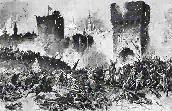
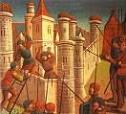

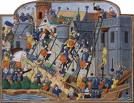

1453 On Jan. 29 a relief force of two ships from Genoa with 700 men arrives in Constantinople, and its capt. Giovanni Giustiniani Longo from Chios is made cmdr. of Constantinople's defenses; on Feb. 26 (night) 700 Italians flee on seven ships, after which the city gates are closed and a giant chain strung across the Golden Horn. I didn't have sex with that woman, though I wanted to? In the spring Charles VII begins advancing toward Bordeaux along three routes with three armies, and the lead army sieges Castillon, causing the earl of Shrewsbury (who received another 3K English troops, for a total of 6K) to try and relieve it, causing French artillery master Jean Bureau (-1463) to go on the defensive, encircling his camp with a ditch and palisade manned by 300 cannon; on July 17 they meet at the Battle of Castillon (first Euro battle where cannons are a major factor in deciding the outcome), and the frisky Brits stumble into thousands of archers and the 300 cannon, decimating them, after which a Breton force under the duke of Brittany charges the English right flank and causes them to flee; Shrewbury's horse is killed by a cannon ball, trapping the dude, and a French archer finishes him off with an axe, causing the English to surrender the last outpost in Aquitaine to the French on Oct. 19, ending the Hundred Years' War (begun May 24, 1337) after 116 years, 1 mo. and 21 days; England loses all possessions in France except for the city of Calais; meanwhile Henry VI has son Edward Plantagenet of Westminster, Duke of Lancaster (1453-71), depriving Richard Plantagenet, duke of York of his hope of succeeding to the throne peacefully, but then Richard gets lucky and Henry goes insane, and Richard becomes protector; meanwhile Henry's wife Margaret actively champions the House of Lancaster and her son against the duke of York and his sons, hopping up the War of the Roses; by now French and English nat. identities have hardened into two different molds? On Apr. 6 after assembling in Jan. on the plains of Adrianople and then reducing every city in their way, 150K Muslims, Janissaries, and Dervishes (incl. some Christians who wanted to get in on the loot) under 21-y.-o. whodya-wanna-call Ottoman Sultan (since 1451) Mehmed (Mehmet) (Mohammed) II (the Conqueror) (1432-81), the Saddam Hussein and Osama bin Laden of the 15th cent. begin the 54-day Final Siege of Constantinople (founded 330 C.E.), defended by 7K Christian knights; the sultan does the traditional Islamic thing of offering the emperor a chance to surrender in exchange for their lives, but he refuses, preferring to fight rather than switch, after which the artillery immediately begins bombarding the city with 70 cannons, incl. a 27-ft.-long 762m (30 in.) 35-ton bronze Shock'em Allah called the Great Turkish Bombard (Dardanalles Gun) (Basilic) (Sahi) (Muhammad's Gun) (designed by Hungarian engineer Urban), which lobs 1.2K-lb. balls up to 1 mi. at the key St. Romanus Gate; on Apr. 12 the 200-ship Ottoman fleet under Bulgarian renegade adm. Suleiman Baltoghlu arrives from Gallipoli, sealing the city off by sea completely; on Apr. 18 (night) the first assault by thousands of mad mullahs is repelled; on Apr. 20 (morning) four large vessels loaded with provisions (four Genoese and one Greek) arrive, and the lame Ottoman fleet fights them all day but fails to stop them from entering the city, pissing-off the sultan, who orders adm. Baltoghlu executed and replaced by Hamza Bey, then has half of his ships pulled on wooden platforms along a greased log roadway he previously constructed by the neutral Genoese colony of Pera across from Constantinople, then launched in the Golden Horn; Muslim assaults on May 7 and May 12 are repelled; by mid-May the Venetian Senate is still debating whether to send aid, and on May 23 a fast ship sent out in early May to greet the expected fleet returns with bad news; on May 22 a lunar eclipse freaks the superstitious Christians, who believe a prophesy that the city can't be taken under a full moon; on May 23 a thunderstorm freaks them more, followed by a strange ghost light surrounding the dome of the Hagia Sophia, which they interpret as the Holy Ghost abandoning it, which doesn't stop hundreds of refugees from crowding in; a captured Muslim engineer is made to talk and give info. allowing the Christians to locate and destroy the Muslim tunnels, buying time; on May 25 the sultan's advisers tell him to raise the siege before the Euros arrive and get them surrounded, but they don't call him the Conqueror for nothing, so he plans an all-out final assault; on May 28 the doomed Christians, sensing the end stage a holy procession, holding the last Christian service in Hagia Sophia, reconciling themselves to dying for their faith; on May 28-29 (Mon.-Tues.) at midnight the final siege begins; although the Christians repel wave after wave, things go bad when their cmdr. Giovanni Giustianini Longo gets wounded, and instead of standing his post orders that he be taken back through the gates to the city, causing the rest of the Genoese to think the gate has been breached, causing them to rush back to it, leaving the emperor and his Greek troops to face the Janissaries alone, after which they are KIA; after the 60-ft.-wide 20-ft.-deep moat and three sets of walls and towers (the inner two walls having 96 towers each) are breached, the city surrenders, after which the Allahu Akbars rape and massacre the helpless don't-say-dhimmi pop., chaining the rest to sell them into slavery (lucky non-white infidel beasts get to do unspeakable things to our white Christian wimmen, incl. gasp, nuns, and after 9/11, we're next?), leaving only 50K after being stopped after 24 hours by Mehmed II, who weeps after viewing the destruction, and utters the immortal soundbyte: "What a city we have given over to plunder and destruction", then awards himself the title of Caesar; Greek-born ecumenical Cardinal Isidore of Kiev (1385-1463) dresses a corpse up in his robes and watches the Turks cut off its head and parade it through the streets, then manages to get shipped to Asia Minor as a slave, later buying his freedom and returning to Rome, adopting the Latin Rite and becoming bishop of Sabina, and later Latin patriarch of Constantinople and archbishop of Cyprus sans jurisdiction, later making the mistake of returning to Moscow and holding a Latin Rite, which gets him imprisoned again; a legion of Cretans manning three towers near the entrance to the Golden Horde holds out and are given safe passage; the Ottoman sailors abandon their ships to rush into the city and get their share, allowing several Christian ships loaded with refugees to escape, incl. Giustianini, who dies a few days later in Chios; after the sultan heads into the city straight to it and personally breaks the altar, Hagia Sophia is turned into a mosque, and the Christian icons plastered over; last Byzantine emperor (since 1448) Constantine XI Palaeologus (Palaiologis) (b. 1405) dies defending the walls, and they stick his head on a pike; on Sept. 30 with infallible timing Pope Nicholas V issues a call for a new Crusade (first time the printing press is used to issue papal appeals?); the loss of Constantinople solidifies Europe around Rome, removing the age-old obstacle to uniting it religiously, while an Islamic prophesy makes the Muslims believe they will conquer Rome next; a major drive to repopulate Istanbul (Turk. "in the city or downtown") (Gr. "eis ten polin" = "into the city") begins, with the 60-alleyway Grand Bazaar (largest enclosed market in the world) built in 1455-61, turning it into the showpiece of the Middle East, with 400K pop. before 1800, about 45% Christian and Jewish; the Muslim Turks are now on the frontier of Germany, and put Venice on the defensive over her eastern colonies for the next 250 years; the Muslims set up a paper mill in Constantinople - how long until a Turk founds Atlantic Records and catapults Ray Charles and the Rolling Stones to stardom? In June after murdering his rivals, king (since 1451) Binnya Khan (b. 1420) is assassinated by his first cousin (son of Binnya Ran I) Leik Munhtaw (-1454), only remaining male descendant of King Razadarit, who becomes Burmese and goes on to murder all remaining male rivals. On Oct. 13 English Lancastrian royal heir Edward of Lancaster, Prince of Wales and Duke of Lancaster (1453-71), only son of Henry VI and Margaret of Anjou is born, throwing a monkey wrench in the plans of Duke Richard of York (father of Richard III and Edward IV) to inherit the throne, fueling the upcoming Wars of the Roses, and making for some great Shakespeare?; since daddy Henry VI is insane while he's in the oven, Richard tries spreading rumors that the kid is the result of an affair with some unnamed lover, but it doesn't go over? On Oct. 28 13-y.-o. Ladislaus Posthumus (1440-57) is finally crowned as king of Bohemia and moves to Prague, but dies in 1457 before governing his realms. Mongolia converts to Buddhism. The Jews are expelled from Breslau. The English Parliament recognizes the breakdown of the system of trial by jury, and sanctions the king's council (star chamber, since it sits in a palace chamber with a starred ceiling) to exercise jurisdiction in criminal cases of violence and riot; unfortunately, great lords brought before it often are treated with kid gloves? Jacques Coeur is sentenced for the poisoning of the king's mistress after an unfair trial. The Bohemian Brethren of Prague, composed of what's left of the Hussites settle on the borders of Silesia and Moravia (until 1722). Nothing is all bad? The fall of Constantinople to the Turks causes a large number of Greek scholars to flee to Italy, where they pump up the Renaissance in classical learning; it also leads to renewed efforts to find new westward routes to India and China across the Atlantic as the Ottomans are in a position to close overland trade routes to the Silk Road; after taking over Constantinople, the Muslims find lots of star and crescent flags, and adopt them as their symbol since Sultan Othman I allegedly had a dream of a crescent moon growing until it filled the world, even though Richard I Lionheart had used the symbol in the late 12th cent. when kicking Muslim butt for Christ. The Byzantine Period of the Greek Language ends, and the Modern Period of the Greek Language begins. The S Balkan region (from the Peloponnesus to the Danube River, incl. Albania, Constantinople, Thessaloniki, Thrace, N Greece and Macedonia, Serbia, and Moesia) begins to be called Rumelia (Rumeli) (Turkish "Land of the Romans") as the Muslim Ottomans conquer it from the Christians, who are all Romans as far as they are concerned; up till now they called it Anatolia Rumelia. The Shroud of Christ is sold by Marguerite de Charny to Duke Louis I of Savoy, who moves it to Chambery, France (until 1578); it was really such a poor fake that it disappears for 50 years until Leonardo da Vinci (1452-1519) can be hired to produce the modern good one, based on his own portrait? Nonfiction: Battista Alberti (1404-72), De Re Aedificatoria (On the Art of Building) (10 vols.) (1443-52); dedicated to Pope Nicholas V in 1452, starting out as a trans. of Vitrivius then going on to establish architecture as an intellectual mathematically-based field; in 1485 it becomes the first printed book of architecture, followed in 1486 by the first printed ed. of Vitruvius. Nicholas of Cusa (1406-64), De Pace Fidei (On the Peace of Faith); written after the fall of Constantinople; describes a meeting in heaven where all faiths, incl. Islam agree that there can be one faith with different rites, although Christianity is the most accurate, and Judaism is excluded. Poetry: Martin Le Franc, Le Champion des Dames (The Defender of Ladies); contains the first known image of a witch flying on a broomstick. Music: Conrad Paumann (1410-73), Fundamentum Organisandi (Fundamentals of Organ Playing); a collection of organ music and dances, becoming the earliest music for 2-hand keyboard to survive to modern times. Births: Spanish gen. ("The Great Captain") ("Father of Trench Wafare") Gonzalo Fernandez de Cordoba, Duke of Terranova and Santangelo (d. 1515) on Sept. 1 in Montilla (near Cordoba). English Lancastrian royal heir Edward of Lancaster, Prince of Wales and Duke of Lancaster (d. 1471) on Oct. 13 in Westminster Palace; only son of Henry VI and Margaret of Anjou. Italian co-ruler (with Lorenzo the Magnificent) of Florence Giuliano de' Medici (d. 1478); 2nd son of Piero de' Medici the Gouty. Portuguese explorer gen. Alfonso (Afonso) de Albuquerque (d. 1515) in Alhandra. Italian Florentine architect Antonio da Sangallo the Elder (d. 1534) in Florence; brother of Giuliano da Sangallo (1443-1516). Deaths: English composer John Dunstable (b. 1390) on Dec. 24. Byzantine emperor (last) (1449-53) Constantine XI Palaeologus (b. 1405) on May 29 in Constantinople, er, Istanbul (KIA).


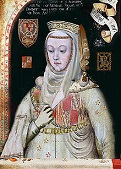
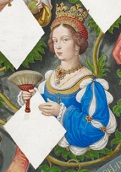
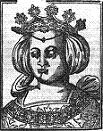
1454 A famine decimates the Mexica (Aztec) people in their year of 1-Rabbit. In Jan. Sultan Mehmed II reinstalls the Greek Orthodox Church in Constantinople with all its privileges, while banning all Roman Catholic orgs. from his empire; in Mar. Gennadius II Scholarius (1400-73), who was taken POW by the Turks last year is made ecumenical patriarch of Constantinople (until 1464) by Mehmed II in order to pacify the remaining Christians, whose blood still stinks Constantinople up, beginning a custom of investing each patriarch with a diploma (berat) spelling out his rights and duties as ethnarch (civil head of Orthodox Christians); he gets pissed-off at the treatment of Christians and tries to resign several times before finally doing it? In Jan. after 7 mo. in power, king (since 1453) Leik Munhtaw (b. ?) is assassinated by his palace ministers, leaving no male heir, causing them to choose his daughter Shin Sawbu (Binnya Thau) (1394-1471), who becomes Burmese Hanthawaddy king #15 (until 1471), ruling from the Shwedagon Pagoda in Dagon. On Feb. 17 duke of Burgundy (1419-67) Philip III the Good (1396-1460) holds the magnificent Feast of the Oath of the Pheasant (Banquet du Voeu du Faisan) in Lille to launch a Crusade against the pesky Turks, after which he leaves on Mar. 24 to visit the Reichstag in Regensburg to discuss plans with HRE Frederick III; on Oct. 15-28 the Diet of Frankfurt is held, chaired by Aeneas Silvius, with 68-y.-o. St. John Capistran (b. 1386) sent by Pope Calixtus III to preach a crusade to aid the Hungarians against the pesky Turks, to start next year; too bad, Pope Nicholas V dies next Mar., throwing a monkey wrench into the plans. On Mar. 10 Casimir IV of Poland marries Elizabeth of Austria (Habsburg) (1436-1505), daughter of HRE Albert II, and one of three surviving grandchildren of HRE Sigismund I (giving her claims to Bohemia and Hungary), who becomes known as the "Mother of the Jagiellons", giving birth to six sons and seven daughters by 1483, incl. four kings, Vladislaus II (1456-1516), John I Albert (1459-1501), Alexander (1461-1506), Sigismund I (1467-1548), a cardinal, Frederick (1468-1503) and five princesses, Jadwiga of Bavaria (1457-1502), Sophia of Brandenburg-Ansbach (1464-1512), Anna of Pomerania (1476-1503), Barbara of Saxony (1478-1534), and Elizabeth of Silesia (1481-1517), further helped by the childlessness of her brother Ladislaus Posthumous. On Mar. 27 after Henry VI of England has an attack of the hereditary madness that plagues the House of Valois, Duke Richard of York is appointed protector of England and regent, with Henry's son Edward named Prince of Wales; Richard makes good use of his new power to imprison the duke of Somerset, but the king recovers from his madness around Christmas and wants to rule again, removing York from his office and restoring Somerset to power; Queen Margaret seeks to be rid of the Yorkists now that she has produced an heir. On Apr. 9 Cosimo de' Medici of Venice and Francesco I Sforza of Milan sign the Peace of Lodi in Lombardy on the banks of the Adda River, ending their long feud and setting permanent boundaries along the Adda River, setting up the principle of a balance of power in N Italy (until 1494), and shutting smaller states like Genoa and the houses of Savoy, Este, and Gonzaga out; on Aug. 30 Milan, Venice, and Florence sign a related agreement in Venice, pledging mutual non-aggression, causing Naples to soon join in. On Apr. 23 survivor Thomas Bourchier (1404-86) becomes archbishop of Canterbury (until 1486), going on to be appointed lord chancellor next Mar., and live through the Wars of the Roses playing both sides, crowning Edward IV, Richard III and Henry VII. On July 20 king (since Dec. 25, 1406) John (Juan) II (b. 1405) dies after a 48-year reign, during which he spent most of his time in amusements while forcing Jews to wear distinctive clothing and keeping them out of the govt., but otherwise letting his kingdom slide, and is succeeded by his equally weak son Henry (Enrique) IV (the Impotent) (the Spendthrift) (1425-74) as Trastamara king of Castile and Leon #5 (until Dec. 11, 1474), who follows daddy's example and lets his kingdom continue its decline and decentralization; his 1st wife (since 1440) Blanca (Blanche) II of Navarre (1424-64), whom he divorced after 13 years of marriage in 1453 after having her examined to prove that she's still a virgin while he gets the hos of Segovia to testify that he's not impotent, and sends home (after which her family imprisons her, and she mysteriously dies in 1464) out of the way, he marries Portuguese infanta Juana (Joanna) of Portugal (1439-75) (son of King Duarte of Portugal and Eleanor of Aragon) next year. Thomas FitzJohn FitzGerald, 7th Earl of Kildare (1421-77), cousin of Thomas FitzGerald, 7th Earl of Desmond is appointed lord justice of Ireland (reappointed in 1461-70), followed in 1455 by deputy lord lt. of Ireland, and in 1463-8 by lord chancellor of Ireland, given the right by Edward IV to use the title and receive the salary for life; in 1462 he becomes justiciar of Ireland, getting an Irish parliament assembled in Drogheda 4x, with the one in 1460 given legislative independence; the cousins become leaders of the home rule party, pissing-off the English in the Pale, who plot to get them executed. Mehmet II begins campaigning in Greece and the Balkans (ends 1459), capturing S Serbia (1454-5); Wallachia becomes part of Turkey. The Prussian Revolt (Thirteen Years War) (ends 1466) sees the Prussian nobles and townfolk revolt against the oppressive German Teutonic Knight rulers with the support of Casimir IV Jagiellon of Poland, who captures the seaport of Elbing. Johann Gutenberg begins producing indulgences bearing printed data - the first holy funny money? The remaining Greeks in Constantinople incl. the patriarch hole up in the Phanar (Fenar) (Fener) (Turk. "lantern") neighborhood midway up the Golden Horn, known for a columnar monument topped with a lantern; the Phanar Greek Orthodox College in Constantinople is founded, becoming the oldest Greek Orthodox school in the city to survive to modern times; in 1881-3 the Red Castle is built at a cost of 17,210 Ottoman gold pounds, becoming the "5th largest castle in Europe" because of its shape. German rabbi Isaac Zarfati writes a letter to his fellow Jews, extolling the virtues of Turkey and holding it out as a Promised Land, with the soundbytes "O Israel, wherefore sleepest thou? Arise, and leave this accursed land forever"; "I proclaim to you that Turkey is a land wherein nothing is lacking, and where, if you will, all shall yet be well with you. The way to the Holy Land lies open to you through Turkey. Is it not better for you to live under Moslems than under Christians? Here every man may dwell at peace under his own vine and fig tree. Here you are allowed to wear the most precious garments. In Christendom, on the contrary, ye dare not even venture to clothe your children in red or in blue, according to your taste, without exposing them to insult of being beaten black and blue, or kicked red and green, and therefore are ye condemned to go about meanly clad in sad-colored rainment."; in 1553 Portuguese Jew Samuel Usque (1500-55) calls Turkey "a broad and spacious sea which God opened with the rod of His mercy as He opened the Red Sea at the time of Exodus... Here the games of liberty are always open for the observance of Judaism"; too bad, after arriving with their Euro educations and riches, but losing heir trading connections with Europe, their descendants progressively poorer and begin to be systematically downgraded to the usual vermin by the hate of Allah and Muhammad, so that by the end of the 19th cent. they are more than eager to leave? Births: Italian navigator and continental name-giver Amerigo Vespucci (d. 1512) on Mar. 9 in Florence. Italian Renaissance scholar Poliziano (Politian) (Angelus/Agnolo Ambrogini) on July 14 in Montepulciano, Tuscany. Italian queen of Cyprus (last) (1474-89) Caterina (Catherine) Cornaro (d. 1510) on Nov. 25 in Venice. Italian astronomer Domenico Maria Novara (d. 1504) in Ferrara; prof. of astronomy at Bologna and teacher of Copernicus. Dutch (Flemish) priest-reformer Jan Standonck (d. 1504) in Mechlin, Austrian Netherlands; educated at the Brothers of the Common Life and Leuven U. and U. of Paris. Italian Renaissance painter Pinturicchio (Pintoricchio) (Bernardino di Betto) (d. 1513) in Perugia; asst. of Perugino. Deaths: Spanish king (1406-54) John II of Castile (b. 1405) on July 20.



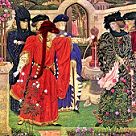

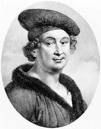



1455 On Jan. 8 Pope Nicholas V provides formal legitimization for Portugal's overseas conquests in the papal bull Romanus Pontifex, written to Afonso V, giving Portugal the primary right over other Christian nations to enslave non-Christian peoples on newly discovered lands in specific regions, creating the Roman Catholic Doctrine of Discovery, with the soundbyte: "We bestow suitable favors and special graces on those Catholic kings and princes... athletes and intrepid champions of the Christian faith... to invade, search out, capture, vanquish, and subdue all Saracens and pagans whatsoever, and other enemies of Christ wheresoever placed, and... to reduce their persons to perpetual slavery, and to apply and appropriate... possessions and goods, and to convert them to... their use and profit"; it also grants exclusive trading rights between Morocco and the Indies to the Portuguese; he later extends it to all territories Portugal takes in the future - the Christian counter-jihad is on? In Feb. Henry VI recovers, and his Henry VI's wife Margaret of Anjou alienates Duke Richard Plantagenet of York, getting his protectorship revoked, beginning the 30-year Wars of the Roses on May 22 (until June 16, 1487) (32 days 3 weeks 4 days) between two rival branches of the House of Plantagenet, the white rose Yorkists (supporters of Richard) and the red rose Lancastrians (supporters of Henry VI and his wife) (the bloody red rose of Lancaster and the white peppermint pattie of York?); according to Shakespeare's Henry VI Pt. 2, it all started when Richard Plantagenet, 3rd duke of York and his enemy Edmund Beaufort, 2nd Duke of Somerset pluck white and red roses in the Temple Garden, then everybody chose sides and plucks theirs accordingly; "Shall send between the red rose and the white/ A thousand souls to death and deadly night" (Act II, Scene IV). On Mar. 24 Pope (since 1447) Nicholas V (b. 1397) dies, and on Apr. 8 Alfonso de Borgia (Boria) is elected Pope (#209) Calixtus (Callistus) III (1378-1458) (first Borgia pope), immediately calling for a new Crusade; too bad, on Mar. 24 Bishop Rudolf von Deipholz of Utrecht also dies, causing Philip III the Good to drop his plans for a Crusade in favor of gaining control of Utrecht, and everybody else to drop out since he is the main man; when he finally secures Utrecht in Oct. 1456, the French dauphin (future Louis XI) asks for asylum, causing him to keep the Crusade on hold despite pleas from the pope. In Mar. the Red Douglases, led by its first chief George Douglas, 4th Earl of Angus (1429-62) join the army of James II against the Black Douglases, led by James, 9th earl of Douglas, and siege his main base at Abercorn Castle in West Lothian; after James Hamilton, 1st Lord Hamilton (1415-79), at the urging of his uncle James Livington, 1st Lord Livingston (-1467) defects and joins James II's side, earl Douglas rushes to England to drum up support, after which Abercorn Castle is razed; on May 1 the rest of the Black Douglases, incl. Earl Douglas' three brothers are defeated at the Battle of Arkinholm near Langholm; on May 18 James Douglas' twin brother Archibald Douglas, Earl of Moray (b. 1426), is killed; his other brother Hugh Douglas, Earl of Ormonde is captured and executed; the last brother John Douglas, Lord of Balvenie (1433-1463) escapes to England; in June Threave Castle on an island in the River Dee in Galloway, their last fortress is bombarded into submission, and the Scottish parliament forfeits all their property, causing the pesky Black Douglases to become kaput, centralizing the Scottish monarchy; not trusting the king too far, the Act of Annexation requires the Douglas lands to be used to generate income and not squandered in patronage; James II then decides it's time to replenish the higher nobility and creates the earldoms of Argyll, Erroll (1453), Marischal, Morton, and Rothes, plus a number of propertyless titles of "lords of parliament"; he then takes advantage of the War of the Roses in England to raid Berwick. On May 22 Richard Plantagenet, 3rd duke of York, backed by the earl of Warwick and his father defeat the queen's forces led by Edmund Beaufort, 2nd Duke of Somerset at the First Battle of St. Albans, and Somerset is killed by York's 3rd son Richard (later Richard III), causing the king and queen to flee to London; Duke Richard follows them there and sits on the throne in the house of Parliament, causing the king to confront him, but then backs down with a compromise whereby he will retain his crown for life, but upon his death York's four sons will inherit the crown instead of his own son Edward Lancaster, prince of Wales; the king then goes insane again and Duke Richard becomes protector again on Nov. 19 - get in the back door, I think we can make this work? On July 8 the Prinzenraub (Stealing of the Princes) sees little brother princes Elector Ernst of Saxony (1441-86) and Duke Albert III (the Bold) of Saxony (1443-1500) kidnapped by Kunz von Kauffungen (Kaufungen) from the Altenburger Schloss, but they escape after manly knight Ahnuld, er, Albert shows his stuff. Jacques Coeur escapes to Rome, and dies the next year while leading a papal fleet against the Ottomans. Margaret Beaufort, countess of Richmond and Derby (daughter of John Beaufort, 1st duke of Somerset) marries Edmund Tudor, Earl of Richmond (1431-56) (son of Owen Tudor); in 1457 the have a son Henry Tudor, who becomes English King Henry VII in 1485. Charles VII, the king she had crowned and who had summarily abandoned her finally reopens the 24-y.-o. (1431) case of Joan of Arc, and appoints three bishops to rehear the case, allowing her family to introduce new evidence, and the original verdict is annulled, condemning the "atrocious miscarriage of justice"; the papal appellate court condemns her original trial and shreds a copy of the trial document; she is canonized in 1920, becoming the first (only) person in history to be condemned as a heretic and later sainted. Tanjong dies, and Sejong the Great's 2nd son grand prince Suyang becomes Sejo (1417-68), Yi king #7 of Korea ( until1468). French Sorbonne student Francois Villon (1431-63) kills a priest in a street brawl and is sentenced to banishment, but gets the sentence rescinded on the grounds of self-defense, then helps steal 500 crowns from the chapel of the College de Navarre in Paris, flees to Angers in W France, is tried in absentia, and banished again, wandering through France until 1461. The uninhabited Cape Verde Islands 400 mi. W of Cape Vert, Senegal are discovered by Alvise Cadamosto (Alvide da Ca'da Mosto) (1432-83), a Venetian in the service of Portuguese Prince Henry, who goes on to explore most of Cape Vert (home of modern-day Dakar), the Senegal and Gambia Rivers (until 1457) - if only they had kept going west? Architecture: Palazzo Venezia in Rome's Piazzo Venezia is built for Cardinal Pietro Barbo, and later is made famous as Mussolini's favorite place from which to address huge crowds. The Old Palace (Eski Saray) is built in Constantople as the imperial official residence (until 1465). Inventions: Cast-iron pipe is invented in the Castle of Dillenburgh in Germany - should be dildoburgh? Art: Andrea Mantegna (1431-1506), St. James and St. Christopher (Eremitani Chapel, Padua); destroyed by a bomb in WWII. Rogier van der Weyden (1399-1464), Portrait of Francesco d'Este. Births: German humanist Hebrew scholar Johann Reuchlin (AKA Capnion) (d. 1522) on Jan. 29 in Pforzheim (Black Forest); uncle of Protestant Reformation leader Melanchthon (1497-1560). Danish (1481-1513), Norwegian (1483-1513), and Swedish (1497-1501) king Hans (Johannes) (John) (d. 1513) on Feb. 2; son of Christian I (1426-81) and Dorothea of Brandenburg (1430-95). Portuguese king #13 (1481-95) Joao (John) II (the Perfect Prince) (d. 1495) on Mar. 3 in Lisbon; son of Alfonso V (1432-81). German Hohenzollern prince-elector #4 of Brandenbug (1486-99) John II Cicero (d. 1499) on Aug. 2 in Ansbach; eldest son of Albert III Achilles (1414-86) and Margaret of Baden; father of Joachim I Nestor (1484-1535). Bavarian duke (last duke of Landshut) George "the Rich" (d. 1503) on Aug. 15 in Wittelsbach; son of Louis IX the Rich (1417-79) and Amalia of Saxony. English Lancastrian traitor Henry Stafford, 2nd Duke of Buckingham (d. 1483) on Sept. 4; son of Humphrey Stafford, 1st duke of Buckingham (1402-60); father of Edward Stafford, 3rd Duke of Buckingham (1478-1521). English patriarch John Spencer (d. 1522); knighted in 1519; father of Sir William Spencer (1496-1532); grandfather of Sir John Spencer (1524-86). Italian wood engraver (inventor of the chiaroscuro woodcut) Ugo da Carpi (d. 1523) (d. 1532?). French humanist theologian (Roman Catholic) Jacques Lefevre d'Etaples (Jacques Lefčvre d'Étaples) (d. 1536) in Etaples, Picardy; educated at the U. of Paris; teacher of William Farel (1489-1565). Deaths: Dutch printer Laurens Janszoon Koster (b. 1370). Italian sculptor Lorenzo Ghiberti (b. 1378). Italian painter Fra Angelico (b. 1387). Spanish bishop Alonso Tostado (b. 1400) in Avila; leaves commentaries on the Bible that influence Don Isaac Abravanel (1437-1508); his complete works in 13 vols. are pub. in Venice in 1507 and 1547, and a more complete ed. in 24 vols. is pub in 1615, and a yet more complete ed. in 27 vols. in 1728; his sepulchre in Avila Cathedral is carved by Vasco de la Zarza (-1524) in 1518.


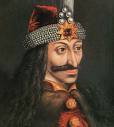




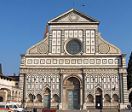
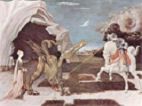
1456 On Feb. 25 Henry VI recovers again, and again dismisses Duke Richard of York as Protector, and his better half the queen rules things again; York's 3rd son Richard, not content to wait for Henry VI's death, plots with his father to break his vow and seize the throne, but the queen is onto it and raises an army. On Apr. 8 in a bid to get Crusader protection, Hungarian king Matthias Corvinus deposes Serbian despot (since 1427) George (Durad) Brankovic (b. 1377) (whose income from the gold-silver mines in Novo Brdo makes him the richest monarch in Europe) in favor of Stephen (Stjepan) Tomasevic (-1463), Roman Catholic son of Bosnian king Stephen (Stjepan) Tomas Kotromanic; too bad, it backfires when many Serbs join the Turks rather than kiss the pope's butt, and Serbia begins to disintegrate; on Dec. 24 (Xmas Eve) Brankovic is killed in a quarrel with Belgrade gov. Szilagyi, and is succeeded as despot of Serbia by his 3rd son Lazar II Brankovic (1421-58) (until Feb. 20, 1458), who next year Lazar gives an oath of subservience to Mehmed II in order to prevent an invasion. On July 4 the Siege of Belgrade by the Ottomans under Mehmed II begins as the first step toward taking the kingdom of Hungary; on July 22 the Christians, led by Italian Franciscan soldier-priest "athlete of Christ" (St.) John of Capistrano (b. 1386) and Hungarian gen. John (Janos) Hunyadi (b. 1387) relieve the seige in a surprise counterattack, defeating the Turkish fleet then invading the Turkish camp and wounding Mehmed II, causing the Ottomans to retreat, staving off Ottoman conquest of Hungary for 70 years, and becoming known as the battle that decided the fate of Christendom; on Aug. 11 big hero John Hunyadi (b. 1387) dies of plague, followed by Capistrano (b. 1386) on Oct. 23, who campaigned successfully along with Nicholas of Cusa for full observance of the decree of the 1215 Fourth Lateran Council requiring Jews and Muslims to wear special markings (usually yellow circles) on their clothing, based on what Muslim lands did to them. The Drakulya did many curious and terrible things year? On Aug. 22 Vlad III Dracula (1431-76), who had fought with Hunyadi recaptures the throne of Wallachia with the help of his old enemies the Saxons, and kills Vladislav II, and in Sept. he takes an oath to Hungarian king Matthias Corvinus (son of Janos Hunyadi) and another to Turkish sultan Mehmed II, going on to strengthen the country while practicing his too-cruel-to-be-kind tough love form of absolute-honesty-required justice, with capital at Targoviste ("marketplace") on the right bank of the Ialomita River, having convicts roasted alive and/or flayed, and infants impaled on their mothers' breasts; meanwhile Mehmed II continues the conquest of Serbia, extending the Ottoman empire to the Danube by 1459. On Oct. 11 William Waynflete (1398-1486), bishop of Winchester (since 1447) becomes lord chancellor of England (until 1460), going on to try and condemn his deacon Reginald Pecock (1395-1460) next year for heresy for preaching the use of reason instead of authority, and burn his books not him - typical example of why W Europe is the good part and E Europe the butthole? In Oct. Count Ulrich II of Cilli (b. 1406) is appointed lt. of Hungary by young king Ladislas V Posthumous at the Diet of Futtak, and is then assassinated in Belgrade on Nov. 9 by John Hunyadi's eldest son Laszlo Hunyadi (1433-57) in revenge for a previous assassination attempt on his daddy, causing the Cilli (Celje) line to become bloomin'-onion kaput; Ladislaus V has Laszlo beheaded next Mar. 16, which pisses off the Hungarian pop. and causes him to flee to Prague again. On Dec. 4 Charles I (b. 1401) dies, and his son John II (1426-88) becomes duke of Bourbon and Auvergne (until 1488), getting appointed constable of France in 1483. Casimir IV of Poland goes to war against the Teutonic Knights in Prussia. Rodrigo Borgia becomes a cardinal at the age of 25. The dauphin Louis is exiled again to the court of Philip III the Good of Burgundy (ends 1461). Scotland raids the Isle of Man. The Crusader seaport of Brindisi in S Italy is destroyed by an earthquake. Architecture: Duka Francesco I Sforza of Milan founds Ospedale Maggiore (Big Hospital) (Ca' Granda), AKA Ca' Granda (Big House), the largest community hospital of the 15th cent. AKA the Policlinico of Milan. Leon Battista Alberti begins the facade of Santa Maria Novella, the first great basilica in Florence (finished 1470); his masterpiece? Art: Paolo Uccello (1397-1475), St. George and the Dragon; looks more like a whimpy wyvern? Poetry: Francois Villon (1431-63), Le Petit Testament (The Legacy); 40 stanzas. Births: Bohemian king (1471-1516) and Hungarian-Croatian king (1490-1516) Vladislaus (Ladislav) (Ladislas) (Uadislas) (Ulaszlo) II Jagiello (d. 1516) on Mar. 1 in Cracow; son of Casimir IV of Poland-Lithuania and Elizabeth of Bohemia, daughter of Albert II of Germany; maternal nephew of Ladislaus Posthumous of Hungary. English queen (1483-5) Anne Neville (d. 1485) on June 11 in Warwick Castle; daughter of Richard Neville, 6th earl of Salisbury and 15th earl of Warwick (1427-81); wife (1470-1) of Edward of Lancaster, prince of Wales (1453-71). Scottish queen Margaret of Denmark (d. 1486) on June 23 in Denmark; daughter of Christian I (1426-81) and Dorothea of Brandenburg (1430-95); wife (1469-) of James III (1451-88); mother of James IV (1473-1513). Irish lord deputy of Ireland (1477-94, 1496-1513) Gerald FitzGerald, 8th Earl of Kildare (d. 1513) (AKA Garret the Great Earl) in Maynooth, County Kildare; son of Thomas FitzGerald, 7th Earl of Kildare, and Jane FitzGerald, daughter of "Usurper" James FitzGerald, 6th Earl of Desmond; father of Young Gerald FitzGerald, 9th Earl of Kildare (1487-1534), father of Thomas FitzGerald, 10th Earl of Kildare (1513-37). Deaths: Italian patriarch #1 of Venice (1451-6) St. Lawrence Giustiniani (b. 1381) on Jan. 8 in Venice; canonized on Oct. 16, 1690 by Pope Alexander VIII. Italian Franciscan St. John of Capistrano (b. 1386) on Oct. 23 in Ilok, Croatia. Hungarian Christian leader Janos Hunyadi (b. 1387) on Aug. 11 in Belgrade (plague). French merchant Jacques Coeur (b. 1395) on Nov. 25 in Chios, Greece. French duke of Bourbon (1434-56) Charles I (b. 1401) on Dec. 4 in Chateau de Moulins. Hungarian nobleman Ulrich II of Celje (b. 1406) on Nov. 9 (assassinated). Spanish poet Juan de Mena (b. 1411) in Torrelaguna. English noble Edmund Tudor, earl of Richmond (b. 1431) on Nov. 1; dies with Henry VII in his wife's womb.
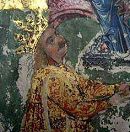





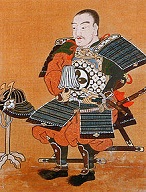

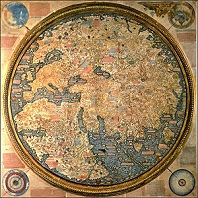
1457 On Mar. 14 Ming Tai Tsung (Zhu Qiyu) (b. 1428) dies, and his elder brother Ming Ying Zong recovers the Chinese throne (until 1464), soon having pesky minister Yu Qian executed, turning him into a folk hero. In Mar. a Great Pacification is held in St. Paul's Cathedral in London - what war of the roses? On Apr. 12 after receiving 6K horsemen from Vlad III Dracula, Bogdan II's son Stephen defeats Petru Aron at the Battle of Doljesti, followed on Apr. 14 by the Battle of Orbic, after which Petru flees to Poland, while Stephen is crowned prince Stephen III the Great (1433-1504) of Moldavia, going on to win 34 of 36 battles against the Ottomans while maintaining Moldavia's independence from Hungary and Poland. On Nov. 23 Ladislaus V Posthumous (b. 1440) dies childless suddenly in Prague of leukemia while preparing to wed French king Charles VII's son Magdalena, although the pop. believes he is poisoned; happy HRE Frederick III inherits Upper and Lower Austria (N and S of the Enns River), giving his Hapsburg brother Albert VI the Prodigal (1418-63) Upper Austria (above the Enns River) (capital Linz) (the smaller part) next year, which pisses him off, causing him to siege Frederick in the Vienna Hofburg then take over Lower Austria (below the Enns River) in 1462; meanwhile Frederick III tries to secure the kingships of Bohemia and Hungary. Pope Callistus III summons an assembly of the princes of Europe to devise measures against the inroads of Islam. After letting his troops pillage Scania, Karl VIII of Sweden is driven out by a Church-backed peasant revolt, and flees to Gdansk, and on July 3 Christian I of Denmark and Norway is crowned king of Sweden in Uppsala, even though the real power remains in the hands of the Stures family (Sten, Svante and Sten the Younger); meanwhile Duke Adolf of Schleswig-Holstein (b. 1401) dies, and the gentry elect Christian I as his successor, although they charge him for it, causing him to have to raise taxes; meanwhile Christian continues the bad habit of letting the German Hansa towns use him for a doormat? The Teutonic Knight fortress of Malbork Castle is seized, becoming the residence of the Polish kings. William O'Kelly finishes recapturing all the territory that had been taken during the Norman invasions; part of a gen. trend among Gaelic lords. The Moravian Church (Church of the Brethren) (Unity of the Brethren) (Herrnhuters), claiming to descend from the ancient Unitas Fratrum (Bohemian Brethren) (Herrnhuters) is founded in Bohemia by Peter Chelcicky (Chelchich) (-1460), spurred by the writings of John Wycliffe (1324-84) and Jan Hus (1373-1415); members lay aside class distinctions and abstain from oaths and military service. Sports: Golf is banned in Scotland by King Jacob II and the Scottish Parliament because it interferes with archery, a vital sport for defense, not to mention sword practice; "futeball" is also banned. Architecture: The Renaissance Facade of the Oratoro di San Bernardino in Perugia, Italy is begun (finished 1461). Edo (Chiyoda) Castle is built by samurai warrior-poet Ota Dokan Sukenaga (1432-86) in the Edo clan town of Edo in SE Honshu Island, Japan; in 1603 Shogun Tokugawa Ieyasu makes it his HQ; in the 18th cent. the pop. tops 1M; in 1868 Emperor Meiji moves his capital there from Kyoto, renaming it Tokyo ("eastern capital"), renaming Edo Castle to Tokei Castle then Tokyo Castle, then Palace Castle, which is destroyed on the night of May 24/25, 1945 by an Allied firebombing raid, after which in 1948 the new Tokyo Imperial Palace is built. Inventions: Tight-fusted Mainz moneylender Johann Fust (1400-66), who repossessed the press and types of Johann Gutenberg becomes the first to print in colors using red, blue, and black inks, printing the first dated book, a great psalter. Science: Portuguese king Afonso V commissions Italian cartographer Fra Mauro (-1464) (a Camaldolese monk from Murano Island near Venice) to make the 2mx2m Fra Mauro World Map of Africa, Asia, and Europe, which is finished on Apr. 24, 1459, and sent to his uncle Prince Henry the Navigator along with a letter encouraging funding of new explorations, becoming the best map to date by the Euro world, ending Bible-based geography and launching scientific geography; claims that the Earth is spherical with a diam. of 22.5K-24K mi. (34.5-43.1km) (true value 24,860 mi. = 40,008km; the first mention of Java in a Euro map; show the Cape of Diab as the southernmost point of Africa; no mention of America, only Greenland (Grolanda). Nonfiction: Georg Puerbach (1423-61), Pro Pluribus Annis (Vienna); the first printed almanac. Births: English Tudor king #1 (1485-1509) Henry VII Tudor (d. 1509) on Jan. 28 in Pembroke Castle, Wales; only son of Edmund Tudor, 1st earl of Richmond (1431-56) and Margaret Beaufort (1443-1509), great-granddaughter of John of Gaunt and 3rd wife Catherine Swynford; head of the house of Lancaster 1471-; husband (1486-1503) of Elizabeth of York (1466-1503); father of Arthur Tudor (1486-1502), Margaret Tudor (1489-1541), Henry Tudor (Henry VIII) (1491-1547), and Mary Tudor (1495-1533). Italian "Decades", "De Orbe Novo" historian (of Spain) Peter Martyr d'Anghiera (d. 1526) on Feb. 2 in Arona (near Anghiera). French heiress (of the cent.?) Mary of Burgundy (d. 1482); daughter of Charles the Bold. Italian Florentine painter Filippino Lippi (d. 1504); son of painter Fra Filippo Lippi (1406-69). German "Ship of Fools" humanist satirist Sebastian Brant (Brandt) (d. 1521) in Strasbourg; studies at the U. of Basel, then becomes town clerk in Strasbourg in 1501 after pub. his big bestseller in 1494. Deaths: Italian humanist scholar Lorenzo Valla (b. 1407) on Aug. 1 in Rome. Italian non-PC painter Andrea del Castagno (b. 1423). Hungarian soldier-statesman Laszlo Hunyadi (b. 1433) on Mar. 16 (beheaded). Hungarian-Bohemian king Ladislaus IV Posthumus (b. 1440) on Nov. 23 in Prague (leukemia).



 ii
ii



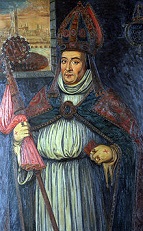


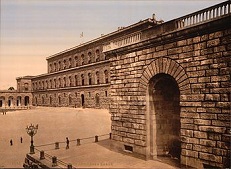
1458 On Jan. 1 Frederick II the Gentle of Saxony founds an annual trade fair in Leipzig with an imperial privilege; in 1507 HRE Maximilian II makes them into imperial fairs (Reichsmussen), banning any other fairs within a 15-mi. radius, making nearby towns depending on Leipzig; in 1523 the Welser family of Augsburg build shops there, followed by the Fugger (pr. FOO-guh) family, and by the 18th cent. Leipzig becomes "the marketplace of Europe", a center for trade from England to Poland. On Jan. 23 after HRE Frederick III is unable to secure the kingships of Hungary and Bohemia, John Hunyadi's son Matthias Corvinus (1443-90) is elected king of Hungary and Croatia (until Apr. 6, 1490); on Mar. 2 Ultraquist (moderate Hussite) leader George of Podebrad (Podiebrad) (Podebrady) (1420-71) is crowned king of Bohemia (until Mar. 22, 1471) in Prague, trying to pursue a middle course of conciliation with the Roman Catholic Church (which considers him a heretic?), going on to persecute the puritanical anti-papist quasi-democratic Bohemian Brotherhood. On Feb. 20 Lazar II Brankovic (b. 1421) dies, and is succeeded as despot of Serbia (Rascia) by his blind older brother Stefan III Brankovic (1417-76), giving Stephen Tomasevic of Bosnia the idea of invading, capturing Srebrenica and other Serbian towns. On June 27 Alfonso V the Magnanimous of Aragon (Alfonso I of Naples) (b. 1396) is KIA in battle against Genoa, and his brother John (Juan) II the Great (Faithless) (1398-1479) becomes king of Aragon (until Jan. 20, 1479), while his illegitimate son Ferdinand I Ferrante (1423-94) becomes king of Sicily and Naples (until 1494) after his legitimate son Prince Charles of Viana declines the titles, tries to marry a Castilian princes, and is thrown in prison by his daddy; Pope Calixtus III refuses to recognize Ferdinand III on account of his illegitimacy. On July 28 king (since 1432) John II (b 1418) dies, and his eldest daughter Charlotte de Lusignan (1444-87) becomes queen of Cyprus (until 1463), but her illegitimate half-brother (by Marietta de Patras) James II the Bastard de Lusignan (1438-73) (archbishop of Nicosia since 1455) vies for the throne, blockading her and her hubby in their castle in Kyrena from 1460-3. On Aug. 6 Pope (since 1455) Calixtus III (b. 1378) dies, and on Aug. 19 Enea (Aeneas) Silvio (Silvo) (Silvius) (Sylvius) de' Piccolomini is elected Pope (#210) Pius II (1405-64), becoming the first pope to write an autobio.; before taking holy orders in 1446 he had been a well-known author of erotic lit., incl. the erotic novel Euryalus and Lucretia, or The Story of Two Lovers in the style of Boccaccio (1313-75), and had fathered a dozen illegitimate children before becoming pope; an advocate of a Crusade against the Turks since 1453, he has trouble pushing it off on Louis XI of France and others until 1464, when he croaks at the wrong moment; in ? he pub. De Europa, in which he claims that geese come from wooden structures underneath the sea; during the conclave Aeneas Sylvius tells Cardinal Giovanni Castiglione "What is our Italy without the bishop of Rome? We have lost the empire, but we still have the apostolic see." In Aug. Florentine gonfalonier (head magistrate) Luca Pitti (1398-1472) stages a coup in the name of old fart Cosimo de' Medici, ruling in his name until his 1464 death and getting wealthy, commissioning Filippo Brunelleschi's pupil Luca Fancelli (1430-1502) to design the Roman aqueduct-style Pitti Palace (Palazzo Pitti), ordering the windows to be made as big as the doors of his rival's Medici Palace on the Via Larga, with an internal courtyard big enough to contain the whole palace; it is still unfinished at Pitti's death in 1472, and in 1549 it is sold by his descendant Buonaccorso Pitti to Eleonor of Toledo (Leonor Alvarez de Toledo y Osorio) (1522-62), wife of Cosimo I de'Medici, who has it doubled in size and adds the Vasari Corridor above the Ponte Vecchio through the Uffizi Gallery to the Palazzo Vecchio, which remains their official residence, after which Eleonora's son Francesco I and his wife Johanna of Austria make it their principal residence and home of the Medici art collection; the Boboli Gardens at the rear are landscaped by Niccolo Tribolo and Bartolommeo Ammanati, featuring an amphitheatre where Terence's "Andria" debuts in 1476; it remains the principal Medici residence until the death of the last male Medici heir in 1737. On Dec. 26 duke (since Sept. 22, 1457) Arthur III (b. 1393) dies, and his nephew (son of Count Richard of Etampes) Francis II (1433-88) becomes duke of Brittany (until Sept. 9, 1488). After the two Byzantine rulers of the Morea (Peloponnese) begin fighting and fail to pay their tributes to Sultan Mehmed II, the Ottomans intervene, invade Athens, and sack the Sackropolis, er, Acropolis, then annex the whole peninsula by 1460; a mosque is built on the Acropolis, and the Erechtheum on the Acropolis is turned into a harem (until 1833) - erect, yes? Prince Henry the Navigator of Portugal crusades in Morocco. The Black Sheep (Qara-Qoyunlu) Turks take advantage of a Timurid succession struggle to briefly occupy the Timurid capital of Herat, overextending themselves. Mahmud Begarha (Two Forts) (-1511) becomes sultan of Gujarat (until 1511), bring it to its height of wealth and powah. Magdalen College (pr. MOD-lin) in Oxford, England is founded by Winchester bishop (1447-86) William Waynflete (Patten) (1398-1486); it is called Magdalen Hall until 1458; its boys' choir becomes a keeper, as does its deer park next to the Cherwell River. Nonfiction: Alphonso de Spina (-1491), Fortalitium Fidei; a treatise by a Spanish Franciscan converted Jew against enemies of the Church, first used in 1461 by the Inquisition against Jews, becoming part of their manual. Births: Italian poet Jacopo Sannazaro (d. 1530) on July 28 in Naples. Polish-Lithuanian prince (St.) Casimir Jagiellon (d. 1484) on Oct. 3 in Wawel Palace, Krakow; 2nd son of Casimir IV (1427-92) and Elisabeth of Austria (-1505); grandson of Albert II of Germany (1397-1439); feast day: Mar. 4. Deaths: Spanish poet-historian Perez de Guzman (b. 1376). Spanish poet Marques de Santillana (b. 1389). Spanish king Alfonso V the Magnanimous of Aragon (Alfonso I of Naples) (b. 1396) on June 27. Spanish poet Inigo Lopez de Mendoza (b. 1398) on Mar. 25. Cyprus king (1432-58) John II (b. 1418) on July 28 in Nicosia.

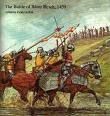

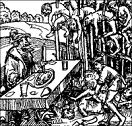
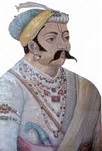

1459 On Mar. 25 (Easter) 28-y.-o. Vlad III Dracula gets even for their killing of his father and brother Mircea by inviting the boyars involved along with their families to an Easter feast, then arresting them, impaling the aged on stakes, and forcing the rest to march 50 mi. to Poenari without rest and build him a fortress high in the mountains over the Arges River that becomes known as Castle Dracula (Poienari Fortress); on Aug. 24 (St. Bartholomew's Day) Dracula impales 30K merchants and officials (mostly Saxons, who are parasites, right?) in Brasov, Transylvania for defying his authority, feasting among the forest of stakes while an executioner (his chef?) dissects some fresh bodies, earning him the name Vlad the Impaler - that's why I don't eat shrimp? On Apr. 1 Stephen Tomasevic marries Lazar II's Byzantine princess widow Helena Palaiologina (1428-58) in Smederevo (on the right bank of the Danube River 25 mi. downstream from Belgrade), deposing blind Stefan Brankovic; too bad, on June 20 the Ottomans capture Smederevo and annex Serbia except for Belgrade (which is captured by Suleiman I the Magnificent in 1521), causing them to flee to Bosnia, where, under papal pressure to get Western aid against the Turks, Tomasevic orders the Bosnian clergy to accept Roman Catholicism or leave, causing the majority to convert and the rest to accept asylum from Herceg Stefan of Hercegovina; the Ottomans establish the Pashaluk of Belgrade (Sanjak of Smederevo) in C Serbia, with admin. center at Smederevo. On June 1 a gen. conference in Mantua to plan a new Crusade called by Pope Pius II is a bust at first as nobody turns up, until reps. from Burgundy finally arrive in Sept.; after they declare war against the Turks next Jan., Mehmed II responds with a threat to capture Rome and behead Philip III the Good of Burgundy. On Sept. 23 after mad king Henvy VI finally alienates the Nevilles, and James Tuchet, 5th Baron Audley, 2nd Baron Tuchet (b. 1398) is sent to arrest Duke Richard of York's chancellor (since 1454) Richard Neville, 5th Earl of Salisbury and 15th Earl of Warwick (1400-60), the Battle of Blore Heath in Staffordshire is a blorey V for the White Rose Yorkists; Tuchet is KIA; too bad, on Oct. 11 after an army led by Henry IV is advancing toward him, the Battle of Ludford Bridge (Ludlow) sees Sir Andrew Trollope (-1461) defect at the last minute from Richard's side with 600 troops overnight, compelling him to flee to France with his sons and supporters (until 1460); in Nov. the Coventry Parliament attaints them, along with all Yorkists; under threat of arrest in England, Edward III's great-grandson Richard Plantagenet, 3rd Duke of York (1411-60) flees to Ireland, and persuades the Irish parliament to pass a declaration of independence stating that Ireland is "corporate of itself" and that "henceforth no person or persons being in the said land of Ireland shall be, by any command given or made under any other seal than the said seal of the said land, compelled to answer to any appeal or any other matter out of the said land"; later Irish lord deputy (1477-94, 1496-1513) Gerald FitzGerald, 8th Earl of Kildare (1456-1513) (AKA Garret the Great Earl) refuses Edward IV's order to annul it, and it is not done until 1495 - you wanted to play god, game over, my friend? HRE Frederick III is elected ruler of Hungary. Stephen III of Moldava invades Poland to search for his bad uncle Petru Aron, but the Poles stop him, and he signs a treaty where he recognizes Casimir IV Jagiellon as his suzerain, in return for which Petru is barred from entering Moldavia. The Ottomans finish conquering Greece - Alexander the Great rolls over in his grave? The Wa Ci sue Ming Ying for peace. The city of Jodhpur in Mandore in modern-day Rajasthan, India (modern-day pop. 1.0M/1.4M) is founded by Rao Jodha (1416-89). Architecture: The Dakhil Darwaza (Gateway) in Gaur (Gour) (Gauda) (Lakhnauti), India, capital of Bengal is begun (finished 1474). Nonfiction: Jalal ad-Din al-Mahalli, Tasfir al-Jalalayn (Arab. "Tasfir of the Twin Jalals"); popular 1-vol. exegesis of the Quran; completed by his student Jalaluddin Al-Suyuti (1445-1505) in 1505. Art: Giovanni Bellini (1428-1516), Agony in the Garden; his brother-in-law Andrea Mantegna paints Agony in the Garden. Andrea Mantegna (1431-1506), Cardinal Ludovico Mezzarota. Births: Austrian organist-composer Paul Hofhaimer (d. 1537) on Jan. 25 in Radstadt (near Salzburg). German humanist scholar-poet ("Erzhumanist") Conradus Celtis (Conrad Celtes) (d. 1508) on Feb. 1. in Wipfeld (near Schweinfurt), Lower Franconia; first to teach the history of the world as a whole. Austrian Hapsburg king (1486-1519) and HRE (1508-19) ("the Last Knight") Maximilian I "Kaiser Max" of Austria (Hapsburg) (d. 1519) on Mar. 22 in Wiener Neustadt; son of HRE Frederick III and Eleanor of Portugal; husband (1477-) of Mary of Burgundy, daughter of Charles the Bold of Burgundy; the real founder of the Hapsburg Empire, who not only marries into the Netherlands and parts of France, but marries his son Philip into Spain, and his grandson Ferdinand into Bohemia and Hungary, leading to the saying: "Let others wage wars, but you, happy Austria, shall marry". German navigator-geographer (for Portugal) Martin Behaim (d. 1507) on Oct. 6 in Nuremberg (Bohemia?). Ottoman pretender sultan Cem (Jem) (Zizim) (d. 1495) on Dec. 22 in Edirne; Serbian mother; 3rd son of Mehmed II; younger half-brother of Bayezid II; half-uncle of Selim I. Polish king (1492-1501) Jan I Olbracht (d. 1501) on Dec. 27. English viceroy to Ireland (1494-) Sir Edward Poynings (d. 1521). German ("the Original Meet the Fuggers") financier Jakob Fugger (d. 1525) of Augsburg; head of the Fugger financial empire in Germany, which is instrumental in promoting Martin Luther. Italian painter Lorenzo di Credi (d. 1537) in Florence. Deaths: Italian Humanist historian Giovanni Francesco Poggio Bracciolini (b. 1380) on Oct. 10 in Florence; leaves History of Florence from 1350-1455 (10 vols.) (in the style of Livy). Danish-Swedish-Norwegian king Erik of Pomerania (b. 1382) on May 3. Turkish scholar Khidr Bey (b. 1407) in Connstantinople.











1460 About this year the Sporer (Spörer) Minimum begins (ends 1550), a 90-year span of low solar activity first proposed in 1976 by John A. Eddy based on analysis of C-14 in tree rings, and named for German astronomer Gustav Sporer. On Mar. 5 after Duke Adolf of Schleswig-Holstein died last year without heirs, and his nephew (son of his sister), Danish king (1448-81), Norwegian king (1450-81), and Swedish king (1457-64) Christian I (1426-81) of Oldenburg calls the nobles of Schleswig-Holstein to Ribe (Ripen), they elect him duke of the German province of Holstein, and duke of the Danish province of Schleswig (first succession in the female line); in return, he issues the Treaty of Ribe (Ripen), promising that Schleswig and Holstein will be forever undivided and autonomous under the crown of Denmark, which can never annex them, and that only his male heirs will be eligible for election as duke; since Schleswig is already a fief under the Danish crown, the Danish king becomes his own vassal?; from now on Schleswig is excluded from Danish laws, allowing German administrators to begin moving into S Schleswig, followed by German settlers, confusing things more. Fiery face gets fire in the face? In the summer the Scots siege English-held Roxburgh Castle on the Scottish border; too bad, on Aug. 3 29-y.-o. Scottish king (since Feb. 21, 1437) "Fiery Face" James II (b. 1430) (the original Flying Tomato?) is hoist by his own petard, i.e., killed by his own siege gun, the Mons Meg (acquired from Philip the Good of Burgundy in 1457) after it explodes and a metal fragment severs his thigh and he dies of shock and blood loss (*!?! blasted newfangled devices?); "Red" Douglas, 4th earl of Angus is also wounded; on Aug. 10 after the queen races with him from Hume Castle to Roxburgh to encourage the disenhearted army, James II's 8-y.-o. son James III (1452-88) is crowned king of Scotland (until June 11, 1488) at Kelso Abbey by Red Douglas, with James II's widow Mary of Guelders (Gueldres) (1434-63) appointed as regent; he goes on to become the first Renaissance monarch in Scotland, not really, he proves ineffective and unpopular, and gets too chummy with England; Roxburgh is then taken by storm and raised, and no English POWS are taken. In June Richard Plantagenet, 3rd Duke of York (1411-60) and his Yorkists leave France, land in Sandwich, Kent on June 26, raise an army and enter London on July 2 and siege the Tower, then send an army under the Duke of Buckingham and "kingmaker" Richard Neville, 6th Earl of Salisbury and 16th Earl of Warwick (1428-71), eldest son of Richard Neville, 5th Earl of Salisbury and 14th Earl of Warwick (1400-60) to meet Henry VI on July 10 at the Battle of Northampton; after treachery by Lord Grey of Ruthven, the Yorkists kill Buckingham, capture Henry VI and take him back to London, where they force him to acknowledge Richard Plantagenet as heir to the throne (bypassing Henry's son Edward), and he names Richard Neville as chamberlain of England, and his youngest son George Neville (1432-76) as chancellor (until 1467); too bad, Queen Margaret of Anjou isn't amused about her son being bypassed, and raises an army in Scotland against him. On Dec. 25 Pope Pius II excommunicates Sigismondo Malatesta (1417-68) of Rimini, accusing him of incest, sodomy et al. as well as treachery against Duke Federico da Montefeltro of Urbino over Siena, soiling his rep. for cents.; papal forces then begin a siege on his territories (ends 1463), leaving him only Rimini and a 5-mi. buffer zone. On Dec. 30 the Wars of the Roses sees a Lancastrian V at the Battle of Wakefield on Wakefield Green near Sandal Castle; badly outnumbered Richard of Plantagenet, 3rd duke of York (b. 1411) is KIA, and his head is proudly displayed on the city walls of York wearing a paper crown; Richard's son Edmund is KIA, a nd another son Rutland is killed by Lord Clifford while fleeing; the earl of Salisbury is taken to Pontefract and beheaded; Warwick escapes, and with Richard's three remaining sons Edward, George (duke of Clarence), and Richard (two kings out of three ain't bad?) continue the Yorkist cause, keeping Henry VI in captivity in the Tower as insurance - violin crescendo please? Thurgau (Thurgovie) S of Lake Constance joins the Swiss Confederation. In this decade the Gaelic kingdom of Tyroconnell (Gael. "land of Conaill") is established by the O'Donnell (O Domhnall) Dynasty of the Northern Ui Neill, with capital at Donegal; the O'Donnell kings of Tyrconnell become known as the Fisher-Kings for their export of fish for wine in La Rochelle, W France; it is disestablished in 1607. It's kind of relaxing to get some fresh mountain air? Wallachian prince Vlad III Dracula (1431-76), who stopped paying tribute to the Ottomans last year makes an alliance with Matthias Corvinus of Hungary, pissing off the sultan, who tries to remove him and fails, pissing off Dracula, who plans a revenge tour, impaling 10K at the same time in Sibiu, Transylvania; meanwhile sultan Mehmed II conquers Patrasso and the Morea (Arcadia), the last Greek stronghold in the Peloponnesus, extending the Ottoman empire to the Aegean; Thomas Paleologos, last ruler of the Morea brings the alleged skull of St. Andrew from Patras to Rome; the (Famous) Klephts (Gr. "robbers"), Greek patriots fleeing into the massy mountains of Macedonia and N Greece after the Ottomans conquer Greece begin a 4-cent. guerrilla war, developing their own culture and lit. incl. cool ballads. Archduke Sigismund of Austria stinks himself up by imprisoning his rival Nicholas of Cusa, causing Pope Pius II to excommunicate him and place an interdict on his lands. Persian Safavid Sufi leader Shaykh Junayd dies, leaving his son Shaykh Haydar (-1488) ("lion") to carry on his holy war against the Christians in Georgia as new head of the Safavid order, based in Ardabil, which sends out Qizilbash (Red Head) recruits (based on a distinctive headgear invented by Haydar) to preach a message of revolution; Haydar marries a daughter of White Sheep ruler Uzun Hazan, but falls out with his successor Ya'qub (1481-90). Le Thanh-Tong (1442-97) becomes Le emperor of Vietnam, instituting reforms in land distribution and spiffing up the bureaucracy. Hans Rosenplut (Ger. "fly catcher") becomes one of the first mastersingers of Nuremberg. In 1460-1520 the Grands Rhetoriqueurs (Rhétoriqueurs) group of poets flourish in N France, Flanders, and the duchy of Burgundy, combining stilted language with the allegorical manner of the 15th cent. and the most complicated artificial forms of the ballade and rondeau, producing ostentatious poetry with extremely rich rhyme schemes that experiments with assonance and puns, alternation between masculine and feminine thymes (ending in a mute 'e'), and typography and graphic use of letters incl. verbal rebuses; leaders incl. Georges Chastellain (1415-74), Jean Marot (Jehan Desmaretz) (1463-1526), Jean Meschinot (1420-91), Jean Robertet, Guillaume Cretin (Crétin) (1460-1525), Jean Lemaire de Belges (1473-1525), Jean Bouchet (1476-1555), Andre (André) de La Vigne, Octavien de Saint-Gelais (1468-1502), Jean d'Auton, and Pierre Gringore (1475-1538). Mystishchi NE of Moscow on the Yauza River is founded, named after the duty paid by commercial ships to be hauled overland from the Yauza to Klyazama Rivers. Dominican Alanus de Rupe (1428-75) invents the myth of the Rosary of St. Dominic, backdating it to the year 1214. The U. of Glasgow is moved from its original site on Rottenrow to High Street until 1870, when it moves to Gilmore Hill. Scottish queen Mary of Guelders founds Trinity College Church in Edinburgh in memory of her hubby James II. Paduan painter Andrea Mantegna (1431-1506) moves to the fortified city of Mantua in N Italy (38 mi. N of Modena) on two islands formed by the Minco, and spends the rest of his life as court painter to three gens. of the ruling Gonzaga family, decorating Gonzaga Fortress with his paintings and making copper engravings. After being sent by Cosimo de'Medici of Florence to scour Euro monasteries in the Byzantine Empire for lost ancient mss., monk Leonardo da Pistoia (Leonaro Alberti de Candi) finds the 2nd cent. Corpus Hermeticum and gives it to Marsilio Ficino (1433-99) to be translated, reintroducing Hermeticism to the West. Architecture: The Greek Parthenon (built in 438 B.C.E.) is turned from a Christian church (since 426 C.E.) into a Muslim mosque. Art: Dirk Bouts (1410-75), Virgin (Madonna) and Child. Francesco Squarcione (1397-1468), Virgin and Child; his only signed painting, other than an altarpiece in Padua. Rogier van der Weyden (1399-1464), Descent from the Cross. Births: French gen. Louis II de La Tremoille (Trémoille) (Trimouille) (d. 1525) on Sept. 29 in Thouars. Italian painter Giovanni Donato da Montorfano (d. 1503) in Milan. German gothic sculptor Adam Kraft (Krafft) (d. 1508) in Nuremberg. Spanish gov. of Hispaniola (1502-9) Nicolas de Ovando y Caceres (Nicolás de Ovando y Cáceres) (d. 1518) in Castile; member of the Military Order of Alcantara. Scottish poet and Franciscan friar William Dunbar (d. 1520) in East Lothian; educated at St. Andrews U. Spanish conquistador-explorer Juan Ponce de Leon (León) (d. 1521) (b. 1474?) in Santervas de Campos, Castile; father of Juan Ponce de Leon II (1524-91). French regent Anne of Beaujeu (d. 1522); sister of Charles VIII of France; wife of Pierre de Bourbon. German sculptor Adolf Daucher (d. 1523). French artist Gerard David (d. 1523). Portuguese navigator-explorer Vasco da Gama, 1st Count of Vidigueira (d. 1524) in Sines (Vidigueira?), Alentejo; created count in 1499, becoming the first Portuguese count not born with royal blood. English humanist physician Thomas Linacre (Lynaker) (d. 1524) in Brampton, Chesterfield, Derbyshire; physician to Henry VII and Henry VIII, tutor to Princess Mary, and founder and pres. #1 of the College of Physicians. Italian Renaissance painter Vittore Carpaccio (d. 1526) in Venice; known for his pageant paintings. Spanish conquistador Rodrigo de Bastidas (d. 1527) in Triana, Seville. Portuguese diplomat-explorer Pero (Pedro) da Covilha (d. 1527) in Covilha, Beira. Spanish military engineer Pedro Navarro, Count of Oliveto (d. 1528) in Garde, Roncal, Navarre. English Renaissance humanist poet-dramatist-satirist John Skelton (d. 1529) in Norfolk. German sculptor Peter Vischer the Elder (d. 1529) in Nuremberg; son of sculptor Hermann Vischer the Elder (-1487). Italian "Anatomia Carpi" (Bolognese) physician-anatomist Jacopo (Giacomo) Berengario da Carpi (Carpus) (d. 1530) in Carpi, Modena; educated at the U. of Bologna. Lithuanian hetman (1497-1530) (Orthodox Catholic) Konstanty Iwanowicz Ostrogski (d. 1530); of Slavonic descent; speaks Ruthenian, father of the Belarusian language. Spanish politician-gen. Fadrique Alvarez de Toledo y Enriquez, 2nd Duke of Alba (d. 1531); eldest son of Garcia Alvarez de Toledo, 1st duke of Alba and Maria Enriquez de Quinonex. German Gothic sculptor Tilman Riemenschneider (d. 1531) in Heiligenstadt im Eichsfield, Thuringia. Italian Renaissance painter Lorenzo Costa (d. 1535) in Ferrara. Portuguese explorer Tristao da Cunha (Tristao d'Acunha) (d. 1540). Portuguese physician-writer (Jewish) Judah Abrabanel (Abarbanel) (Abravanel) (Leo Hebraeus) (Lepne Ebro) (d. 1535) in Lisbon; son of Isaac Abrabanel (1437-1508); court physician to Hernandez Gonzalo de Cordoba. Deaths: Italian humanist Guarino da Verona (b. 1374). Portuguese prince Henry the Navigator (b. 1394) on Nov. 13 in Sagres, Algarve. Dutch-Burgundian composer Gilles Binchois (b. 1400) on Sept. 20. English Yorkist leader Richard Neville, 5th earl of Salisbury (b. 1400) on Dec. 31 (KIA in the Battle of Wakefield). English Yorkist leader Humphrey Stafford, 1st duke of Buckingham (b. 1402) in July (KIA in the Battle of Northampton). English wannabe king Richard Plantagenet, 3rd duke of York (b. 1411) on Dec. 30 (KIA in the Battle of Wakefield). Scottish king (1437-60) "Fiery Face" James II (b. 1430) on Aug. 3 in Roxburgh Castle (fire in the face?). Bohemian religious reformer Peter of Chelchich (b. ?); founder of the Bohemian Brotherhood, which rejects subordination to Rome.


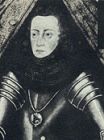
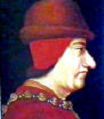
1461 In the winter of 1460/1 Vlad III Dracula crosses the Danube River and devastates the area between Serbia and the Black Sea, killing 20K, causing Sultan Mehmed II to plan a final invasion to kick his butt. On Feb. 2 a Yorkist army led by 19-y.-o. Edward Plantagenet, 4th duke of York, earl of Cambridge, and earl of Ulster, eldest son of deceased Duke Richard of York routs a Lancastrian army under the earls of Pembroke and Wiltshire at the Battle of Mortimer's Cross in Herfordshire; on Feb. 2 Catherine of Valois' secret hubby Owen Tudor (b. 1384) (founder of the Tudor Dynasty) is captured and beheaded on High St. in Hereford, expecting a reprieve because of his royal bed partner until the last moment, when he utters the soundbyte: "The head which used to lie in Queen Catherine's lap will now lie in the executioner's basket"; on Feb. 17 the Second Battle of St. Albans is a D for the Yorkists under Edward and Warwick, and Henry VI is freed, but the Lancastrians are not strong enough to take London, so they turn N, allowing the Yorkists to regroup, getting the Londoners to admit him to London; on Mar. 29 (Palm Sun.) the two rival kings meet at the Battle of Towton near York, and the Yorkists, led by the Earl of Warwick win after the biggest slaughter in English battlefield history; the first use of firearms on a British battlefield?; on June 28 Edward (who claimed to reign since Mar. 4) is crowned Edward IV (1442-83) (the 36th British monarch) (until Oct. 3, 1470) after Parliament deposes Henry VI on ?, declares the three Lancastrian kings usurpers, and Henry VI, his wife, son, and chief adherents traitors, and exiles him and his queen to Scotland; the Lancastrian Dynasty is supplanted by the York Dynasty; Edward IV closes a session of Commons with a speech of thanks, becoming the first time an English king addresses them; Edward IV creates his brother George as George Plantagenet, 1st Duke of Clarence (1449-78), and his other (youngest) brother Richard (future Richard III) as Richard Plantagenet, Duke of Gloucester (1452-85); Edward IV's cousin Richard Neville, 6th Earl of Salisbury and 16th Earl of Warwick (1428-71) is now the wealthiest and most powerful man in England, dictating much of his policy to the king and becoming virtual ruler (until 1464), later switching sides and becoming known as the kingmaker. In Mar. Scottish queen Mary of Gueldres secures the cession of Berwick to Scotland in return for sheltering fugitive Lancastrian king Henry VI and his queen Margaret of Anjou, although she switches to the Yorkist side. On July 22 Joan of Arc-aided king (since 1429) Charles VII the Victorious (b. 1403) dies, and his feeble, ungainly son Louis XI (the Spider) (1423-83) becomes Valois king #6 of France (until Aug. 30, 1483), perfecting Charles V's govt. system while traveling throughout his kingdom, his wimpy bod and bourgeois habits fooling people into underestimating this well-educated and brilliant diplomat who spins endless political webs, becoming France's last medieval king and the first Renaissance monarch; he immediately abandons his 18-y.-o wife Charlotte of Savoy in Burgundy (where they had lived in exile), leaving her to live off of Isabella of Bourbon; Flanders-born Tristan l'Hermite (-1478) becomes provost of the marshals of the king's household, giving him enormous power, causing him to later become a popular figure for novels and plays incl. Victor Hugo's "The Hunchback of Notre Dame", Sir Walter Scott's "Quentin Durward", Justin Huntly McCarthy's play "If I Were King", and Rudolf Friml's "The Vagabond King". On Sept. 23 after an insurrection by the Catalonians in his support, which forces John II of Aragon to release his son Prince Charles IV of Viana (b. 1421) from prison and finally recognize him as heir of Navarre as well as make him gov. of Catalonia in June, he dies within 3 mo. in Barcelona, causing a suspicion of poison by his mean stepmother Juana Enriquez of Castile (who has her son Ferdinand V waiting in the wings), triggering a series of revolts by his adherents in Catalonia; he had been betrothed to Catherine of Portugal, daughter of Duarte I. The Mainz Diocesan (Mainzer) Feud (Baden-Palatine War) begins when Adolf II of Nassau (1423-75) is declared archbishop of Mainz by Pope Pius II even though he lost an election in 1459 to Theodoric (Diether) of Isenburg-Budingen (1412-82), and the latter's followers won't accept him; Adolph Hitler, er, of Nassau wins next Oct. 28 after killing 400 and causing another 400 to flee (incl. Johannes Gutenberg), then revokes the imperial city status of Mainz; go figure, he recommends Theodoric as his successor - no wonder Germans go for Protestantism later? Ottoman Sultan Mehmed II conquers Anatolia as far as the Euphrates, incl. the Jandarid principality of Kastamonu and the last Byzantine possessions around Trebizond (Trabzon), incl. the Greek isle of Lesbos from the Genoese, where Byzantine historian Doukas lives, and where super Turkish adm. Barbarossa Hayreddin is later fathered by one of the Turkish knights, Yakup Aga; the Ottomans gain control of the Black Sea coast, but meet stiff resistance from the Mamlukes of Syria and White Sheep Turkmen of Iran - Muslims have a thing with colorful names? Hugh Roe O'Donnell (Aodh Ruadh mac Néill Gairbh Ó Domhnaill) (-1505) becomes king of Tyrconnell in Ulster, Ireland (until 1505); in 1468 guns are used for the first time in Ireland by his troops; the reigns of he and his son Hugh Duff O'Donnell become known as the golden age of the O'Donnells. Leonardo da Vinci becomes a pupil of Andrea del Verrocchio. French poet Francois Villon is arrested by order of the bishop of Orleans and imprisoned in Meung on the Loire River, then saved from the gallows after a few mo. by a gen. amnesty proclaimed by Louis XI in honor of his accession; he then vows to go straight and settles in Paris until Nov. 1462, when he is imprisoned in the Chatelet for theft, released, rearrested for a brawl, sentenced to death, jailed for more than a year, his sentence commuted to banishment from Paris, then in 1463 just disappears, becoming a legend, next popping up in Nevada in the 1961 Bonanza TV series episode The Frenchman? Architecture: The facade of the Oratorio di San Bernardino in Perugia (begun 1457) is finished. The Royal Library of France (Bibliotheque Nationale de France) is founded by Louis XI; in 1534 Francis I transfers it to Fontainebleau. Science: Regiomontanus retranslates Ptolemy's Almagest from Arabic to Latin; it is later used by Copernicus to refute Ptolemy. Poetry: Francois Villon (1431-63), Le Grand Testament (1461-2); his masterpiece?; 173 stanzas, incl. a bunch of rondeaux. Births: Lithuanian grand duke (1492-1506) and Polish king (1501-6) Alexander Jagiellon (d. 1506) on Aug. 5 in Krakow; 4th son of Casimir IV Jagiellon (1427-92). Spanish explorer (cmdr. of the Nińa) Vicente Yanez Pinzon (Vicente Yáńez Pinzón) (d. 1515) in Palos de la Frontera, Castile; youngest son of Martin Pinzon and Mayor Vicente; brother of Martin Alonzo Pinzon (1441-93). Italian jurist Alessandro Alessandri (d. 1523) in Naples. Deaths: Portuguese House of Braganza founder Afonso I, 1st Duke of Braganza (b. 1377) on Dec. 15 in Chaves, Tras-os-Montes. Welsh Tudor Dynasty founder Owen Tudor (b. 1385) on Feb. 2 near Wigmore, Herfordshire (executed); last words: "The head which used to lie in Queen Catherine's lap will now lie in the executioner's basket". French king (1422-61) Charles VII the Victorious (b. 1403) on July 22 in Mehun-sur-Yevre. French poet Martin le Franc (b. 1410). Austrian astronomer (prof. at Vienna) George von Peuerbach (b. 1423) on Apr. 8 in Vienna. Spanish loser Charles IV of Navarre (b. 1426) on Sept. 23 in Barcelona (poisoned?).
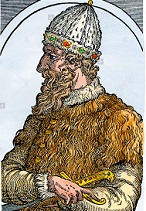
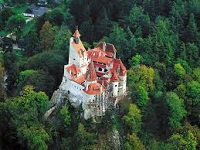
1462 On Mar. 27 grand duke (since Feb. 27, 1425) Vasilii (Basil) II (b. 1415) dies, and on Apr. 5 his son Ivan III Vasilievich (the Great) (1440-1505) becomes grand duke (prince) of Moscow in Russia, going on to unify the principalities of Russia around the nat. capital of Moscow and become Russia's first tsar (czar) (caesar); meanwhile serfs fleeing his oppression head to the Don River basin, becoming known as Cossacks. In the spring 90K Ottomans under Sultan Mehmed II invade Moldavia to finish off Vlad III Dracula, and run into 20K Turkish POWs being you-know-whated (impaled) outside his capital of Targoviste, capturing it on June 4, causing Dracula to resort to guerrilla war, sneaking into the Turkish camp on the night of June 16-17 in the Night Attack at Targoviste and trying to assassinate the sultan; after the sight of the horrible stake loads makes Mehmed too, er, II sick, he installs Vlad's younger half-brother Radu III the Handsome (cel Frumos)(1437-75) (who converts to Islam under the name Radu Bey) as prince, gains the support of the nobles (who know they are on the stake list anyway), then returns to Constantinople with his 3x-bigger army, leaving the job to Radu, who forces him to flee to guess where, Transylvania, after which his noble Transylvanian wife commits suicide during the seige of Dracula's Poienari Castle, throwing herself off a tower into a tributary of the Arges River later called Raul Doamnei (Lady's River) rather than be captured; in Aug.-Sept. as the Turks are closing in, Dracula sneaks out of his castle via an underground passage, then seeks help from Hungarian king Matthias Corvinus to reclaim his Wallachian throne, which is granted in 1476 after imprisoning him in Bran Castle in S Transylvania for 2 mo., followed by Buda, Hungary for 12 years (until 1474) to think about it (a deal with Mehmed II); actually he's only imprisoned until 1466, then converts (feigns conversion?) from Orthodox to Roman Catholicism and marries Matthias' cousin Ilona Szilagy (Jusztina Szilagyi de Horogszeg) (1454-97) and has two sons, Vlad Dracula IV and ?, who dies at a young age; meanwhile his son (by the 1st wife) Mihnea cel Rau (the Evil) (-1510) goes on to become prince of Wallachia in 1508-9 - you know your father doesn't approve of your dental plan? On Aug. 20 Castile takes Gibraltar from the Moors (who held it since 1333), this time for keeps; the 8th siege by either side since 1309. On Sept. 17 the Battle of Swiecin (Zarnowiec) is a V for the Poles under Piotr Dunin (1415-84) over the Teutonic army under Fritz von Raveneck. Archduke Albert VI sieges his brother HRE Frederick III in Vienna, then takes over Lower Austria. Pope Pius II abolishes the Hussite Compacta, and organizes a grand alliance with Burgundy, Venice, and Hungary to go on Crusade against the Turks. The Chimu-Inca War in Peru begins (ends 1476). Portuguese settlers found a settlement in the Cape Verde Islands off the W coast of Africa 400 mi. W of Dakar, Senegal, which they call Ribeira Grande, becoming the first permanent Euro settlement in the African tropics; Portuguese explorer Pedro de Sintra explores inland from Freetown Habor, naming the surrounding hill formation Serra de Leao (Sierra Leone) (Lion Mts.), AKA Sierra Leone, then goes on to explore the Benin Empire; in 1495 a fort and trading post are built in Freetown Harbor by Portuguese traders, which becomes a trading center for African slaves. The Jews of Frankfurt are walled-up in the Judengass, er, Judengasse ghetto, allowing the pop. to zoom from 260 in 1543 to 2.7K in 1613, causing the town council to set a pop. limit of 500 families in 1616, plus only 12 weddings per year. The Platonic Academy of Florence is founded in the Medici villa in Careggi, with Marsilio Ficino (1433-99) as headmaster #1 - why don't you just call it neo-paganism? The Worshipful Co. of Tallow Chandlers livery co. is founded in London by makers of cheap (animal fat) candles. The first cartoons were woodcut illustrations in Biblia Pauperum (Paupers' Bibles) in Bamberg, Germany by printing pioneer Albrecht Pfister (1420-66). Nonfiction: Johannes Fust acquires Gutenberg's workshop and prints a 48-line Bible. Art: Dirk Bouts (1410-75), Unknown Man. Births: German "Steganographia" polymath humanist Benedictine abbot Johannes Trithemius (Johann Heidenberg) (d. 1516) on Feb. 1 in Trittenheim, Trier; educated at the U. of Heidelberg; teacher of Heinrich Cornelius Agrippa (1486-1535) and Paracelsus (1403-1541). French Valois-Orleans king (1498-1515) and duke of Orleans (1465-1515) ("Father of the People") Louis XII (d. 1515) on June 27 in Blois; son of Duke Charles of Orleans (1394-1465) and Marie of Cleves (1426-87). Italian physician-philosopher (founder of the Aristotelean-Averroistic School) Pietro Pomponazzi (Petrus Pomponatius) (d. 1525) on Sept. 16 in Mantua; educated at the U. of Padua. German mathematician Johann Widmann (d. 1498). English soldier Edmund Dudley (d. 1510); father, by Elizabeth (daughter of Edward Grey, viscount Lisle) of John Dudley, earl of Warwick and duke of Northumberland (1502-53). Italian Renaissance painter Piero di Cosimo (Lorenzo) (d. 1521) in Florence; pupil of Cosimo di Lorenzo Filippi Rosselli (1439-1507). English dramatist Henry Medwall (d. 1522). Spanish (Castilian) princess Juana (Joanna) (the Beltraneja) (d. 1530); daughter of Princess Joana (1439-75) and Henry IV (1425-74); nicknamed Beltraneja from rumors that her really daddy is Castilian nobleman Beltran de La Cueva (1443-92).


1463 In the spring the Ottoman Muslims under Mehmed II invade Bosnia, killing Catholic king Stefan Tomasevic and capturing the country (until 1878); on May 28 Mehmed II grants the Ahdname (Charter) of Milodraz to the Bosnian Fransciscans in which he regulates their relationship with the Roman Catholic Church represented by the Bosnian custos Andjeo (Angel) Zvizdovic; Mehmet II erases all evidence of Bosnian statehood, destroying all 500 of its castles and forts and executing its nobility, then later importing elite Sephardic Jews after they are expelled from Spain in 1492, who convert to Islam in exchange for titles of nobility (bey and agha); Sarajevo (Turk. "saray" = palace) (modern-day pop. 275K/395K) on the Miljacka River in the Sarajevo Valley of the Dinaric Alps is founded by the Ottomans, becoming the capital of Bosnia and Herzegovina; Mehmed II's Bosnian conquests scare the Venetians into taking him on to protect their Aegean and Adriatic coastal possessions, and they begin the First Ottoman-Venetian War (ends 1479), seizing Morea (Peloponnesus), while the Hungarians retake Bosnia, only to see the Muslims retake it next year. To keep his scholarly brain around, fellow humanist Aeneas Silvius Piccolomini (Pope Pius II since 1458) gets Greek-born Cardinal Johannes (Basilius) (Basilios) (Viovanni) Bessarion (Bessarione) (1403-72) appointed Latin patriarch of Constantinople, and in Apr. he becomes dean of the Sacred College of Cardinals. In the summer after Bishop James Kennedy of St. Andrews puts Queen Mary of Gueldres up to it, a Scottish force unsuccessfully sieges Norham Castle, stronghold of the bishops of Durham; Mary dies in Dec., and Kennedy becomes guardian of 11-y.-o. James III, and switches Scottish policy to Pro-French and pro-Lancastrian, onl to see the Yorkists come out on top next year. HRE Frederick III recognizes Matthias Corvinus as king of Hungary, and in return the latter recognizes the Hapsburg claims to succession; meanwhile on Dec. 2 Frederick's brother Albert VI the Prodigal dies childless, allowing him to regain control of Lower Austria and unite it with Upper Austria; too bad, he stays above mere politics and lets the Bohemians and Hungarians plot to pick Austria apart without hindrance? Thomas FitzJames FitzGerald, 7th Earl of Desmond (-1468) becomes lord deputy of Ireland for the Duke of Clarence, founding the College of Youghal in 1464, becoming known for defending the native Irish against the cruelty of English law; too bad, in 1467 he is accused by his enemies of treason and extortion, and condemned at a parliament in Drogheda along with Thomas FitzGerald, 7th Earl of Kildare, who escapes to England while he is beheaded on Feb. 14, 1468, shocking the Irish people ("slain by the swords of the wicked, or may I say a martyr)", after which Kildare gets Edward IV to revoke their attainder; meanwhile in 1467 their worst enemy John Tiptoff, 1st Earl of Worcester (1427-70) (who conspired to get Desmond executed?) is appointed by Edward IV as lord deputy of Ireland in Desmond's place, becoming known as "the Butcher of England" for his ruthlessness and cruelty to the Irish. Muhammad III of Bidar (1454-82) conquers Konkan and Telingana in the Deccan of India to both coasts. Monte de Pieta in Orvieto, Italy begins the innovative practice of loaning money to poor people at low interest to undercut Jewish moneylenders. The U. of Bourges in France is founded by Louis XI, later producing John Calvin, Jacques Amyot, and Theodore de Beza; closed during the French Rev. (1789). The U. of Padua establishes a chair in Greek, starting with Demetrius Chalcondyles, a protege of Johannes Bessarion, who becomes the teacher of Thomas Linacre (physician of Sir Thomas More and Desiderius Erasmus), and leaves in 1473 to succeed John Argyropoulos (1415-87) (teacher of Johannes Reuchlin, Guillaume Bude, and Lefevre d'Etaples) in Florence; in 1473 Marcus Musurus ("greatest Hellenist of the Renaissance") succeeds to the Greek chair in Padua, becoming the teacher of Desiderius Erasmus. Architecture: The Mosque of Sultan Mehmed II the Conqueror in Constantinople is begun (finished 1470). The pointed Gothic Hotel de Ville in Louvain, Belgium (begun 1448) is completed. Nonfiction: Marsilio Ficino completes the first complete trans. of Plato's writings into Latin. Ulrich Zell (d. 1507) becomes the first printer in Cologne. Births: German Saxon elector (1486-1525) Frederick III (the Wise) (d. 1525) on Jan. 17 in Torgau; son of Ernst of Saxony (1441-86); big defender of the Protestant Reformation. Italian humanist philosopher Count Giovanni Pico della (de) Mirandola (d. 1494) on Feb. 24 near Ferrara; educated at the U. of Bologna. Italian anatomist Alexander Achillini (d. 1512); discoverer of Wharton's duct (entry of the bile duct into the duodenum), and the hammer and anvil bones of the middle ear. French poet Jean Marot (Jehan Desmaretz) (d. 1526) in Mathieu (near Caen); official poet of Louis XII and Francis I; father of Clement Marot (1496-1544). English churchman-diplomat Thomas Magnus (d. 1550). Deaths: Greek metropolitan Isidore of Kiev (b. 1385) on Apr. 27 in Rome. Spanish Franciscan missionary St. Didacus of Alcala (b. 14500) on Nov. 12 in Alcala de Henares; canonized in 1488 by Pope Sixtus V. Byzantine historian Doukas (b. 1400); leaves History, covering the years 1341-1462 incl. the 1389 Battle of Kosovo, the 1453 fall of Constantinople, and the 1462 capture of Lesbos. French queen (1422-63) Marie of Anjou (b. 1404) on Nov. 29 near Saint-Maxent, Deux-Sevres. Austrian archduke Albert VI (b. 1418) on Dec. 2. French poet Francois Villon (b. 1431); leaves Codicile (ballads), Le Jargon (ballads), Dialogue (between Mallepaye, AKA Pinchpenny and Baillavent, AKA Wastrel), The Free Archer (Le Franc Archier) (monologue). Scottish queen Mary of Guelders (b. 1434) on Dec. 1.








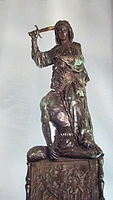
1464 On Feb. 23 Louis XI visits Philip III the Good of Burgundy in Lille to talk him out of going on the long-awaited Crusade against the Turks in order to stay and arrange a truce between France and England, and to back France if England wants war, with the promise of 10K French troops for a Crusade later; meanwhile on Apr. 20 and May 4 82 volunteers leave Ghent dressed in black with Crusader crosses on their chests and silver Gs on their backs, set sail from Sluis on May 21, and reach Marseille, only to learn of the death of Pope Pius II on Aug. 14 and turn back. On Feb. 23 emperor (since 1457) Yingzong (b. 1427) dies, and on Feb. 28 his eldest son becomes Chenghua ("accomplished change") (Zhu Jianshen) (1447-87), Ming emperor #8 of China (until Sept. 9, 1487), going on to let the eunuchs run all over him, increasing their numbers to 10K and taking over the palace admin. - where did all those balls go? On Apr. 25 after Margaret of Anjou invades England from Scotland with a Yorkist army, takes several castles, and is joined by Somerset and the Percies, she is defeated at the Battle of Hedgeley Moor S of Wooler in Northumberland by the Earl of Warwick's brother John Neville, 1st Marquess of Montagu (1431-71), who kills Sir Ralph Percy. On May 15 the Lancastrians are decisively defeated by the Yorkists, led by John Neville at the Battle of Hexham, for which he is created earl of Northumberland in 1467, resigning in 1469 in favor of restoring the Percies and receiving the title marquis of Montagu instead. On Aug. 1 Cosimo I de' Medici Vecchio (b. 1389) dies, and Florence declares him Pater Patriae (father of his country); his semi-invalid arthritic son Piero di Cosimo "the Gouty" (il Gottoso) (1416-69) takes over Florence (until Dec. 2, 1469). On Aug. 11 Nicholas of Cusa (b. 1401) dies in exile in Italy a few days after his enemy Archduke Sigismund finally capitulates and surrenders in order to receive a papal pardon. On Aug. 14 Pope (since 1458) Pius II (b. 1405) dies of fever in Ancona while sailing to the East still trying to organize a Crusade, and on Aug. 30 Pietro Barbo is elected Pope (#211) Paul II (1417-71), and all plans for a Crusade are dropped and never renewed. On Aug. 21 emperor (since 1428) Go-Hanazono (b. 1419) abdicates, and his eldest son Go-Tsuchimikado (1442-1500) becomes Japanese emperor #103 (until Oct. 21, 1500). On Sept. 7 Frederick II the Gentle (b. 1412) dies, and his two sons Ernest of Saxony (1441-86) and Albrecht III the Bold (1443-1500) decide to split Saxony, with Albrecht becoming duke and Ernst becoming elector. The earl of Warwick proposes a marriage between Edward IV and Bona of Savoy, Duchess of Milan (1449-1503), sister-in-law of Louis XI of France in order to ally the two countries and end the Lancastrian threat forever, and she accepts, then learns that in the meantime Edward IV has pulled a boner and in Apr. secretly married his candy britches dream girl (a commoner) Elizabeth Woodville (1437-92) (Lady Elizabeth Grey), recent widow (with two children) of the Lancastrian Sir John Grey of Groby (who died in battle in 1461), who was crowned queen in May; worse, she is the daughter of Richard Woodville (Lord Rivers), a Lancastrian; the new queen has 11 brothers and sisters, many of them married into the families of great nobles, creating a new nobility which weakens Warwick's influence with the king and making him jealous, while causing Edward's popularity with the older nobles to tank until Henry VI's 1471 death shuts them all up; to multiply Warwick's troubles, she later gives Edward 10 royal rugrats; meanwhile, despite Lady Bona's attempts to turn him against Edward, Louis XI sees the light and drops his support of his kinswoman, deposed Queen Margaret of Anjou, and seeks an alliance with Edward, which is welcomed by Warwick. An uprising in Sweden against Christian I Denmark kicks him out and invites exiled Karl Knutsson back. Sonni (Sunni) Ali Ber (-1492) becomes king #1 of the Songhai (Songhay) Empire in W Sudan incl. the Timbuktu-Gao region, with Gao as the capital, which grows too big to manage before being conquered by the Askiya Dynasty in 1493, and by Morocco in 1591. Louis XI France establishes a royal postal service. George Neville, brother of the earl of Warwick, who had been rapidly promoted from chancellor of Oxford U. in 1453 to bishop of Exeter in 1458 to English chancellor in 1460 is appointed archbishop of York. Inventions: Printing crosses the Alps to Italy. Art: Dirk Bouts (1410-75), The Last Supper (1464-7) (Church of St. Pierre, Louvain); first Flemish Last Supper painting; shows understanding of Italian linear perspective. Donatello (1386-1466), Judith and Holofernes (sculpture) (1457-64); one of the first Renaissance sculptures to be conceived in the round. Births: Spanish conquistador Diego de Nicuesa (d. 1511). Japanese emperor #104 (1500-26) Go-Kashiwabara (Katsuhito) (d. 1526) on Nov. 19; eldest son of Go-Tsuchimikado (1442-1500). Deaths: Italian godfather Cosimo I de' Medici the Elder (b. 1389) on Aug. 1 in Careggi - worrying about Jesus' parable about the rich man, camel and a needle? Flemish (Dutch) painter Rogier van der Weyden (b. 1399). German superbrain philosopher cardinal Nicholas of Cusa (b. 1401) on Aug. 11 in Todi, Umbria, Italy (in exile); leaves De Docta Ignoratia (Of Learned Ignorance), De Visione Dei (On the Vision of God), On Conjectures, Cribatio Alchorani (Sifting the Quran). Italian pope (1458-64) Pius II (b. 1405) on Aug. 14 in Ancona (fever). German elector Frederick II the Gentle of Saxony (b. 1412) on Sept. 7 in Leipzig. Spanish barren queen of Navarre (1461-4) Blanche II of Navarre (b. 1424) on Dec. 2 in Orthez, France (poisoned).



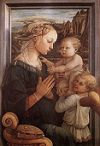
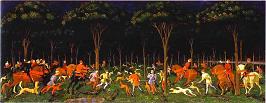
1465 On Mar. 15 English chancellor George Neville becomes archbishop of York (until 1476); in Sept. his enthronement in Cawood Castle shows off his family's grate wealth and powah, with 2.5K attending, incl. his family's 28 peers, 59 knights, 10 abbots, and 10 bishops, consuming 4K pigeons, 4K crays, 4K mallard and teal ducks, 4K cold and 1.5K hot venison pies, 4K dishes of jelly, 4K baked tarts, 2K hot custards, 2K pigs, 2K chickens, 1K sheep, 1K capons, 1K egrets, 500 stags, bucks and roes, 500 partridges, 400 plovers, 400 woodcocks, 304 calves, 204 cranes, 204 kids, 204 bitterns, 200 pheasants, 104 peacocks, 100 curlews, 200 dozen ruffs, 100 dozen quails, 400 swans, 400 herons, 113 oxen and 6 wild bulls, 608 pikes and bream, 12 porpoises and seals, 300 tuns of ale, 100 tuns of wine, etc. etc., not counting dessert - try singing that? On May 24 Bishop James Kennedy of Scotland dies, and a truce with England is negotiated; on Nov. 4 after 3.3K gold florins are paid by proctor Ricardo de Ricasolis of Florence, Pope Paul II makes his 30-y.-o. nephew Patrick Graham (1435-78) (bishop of Brechin since 1463) the bishop of St. Andrews, stirring resentment from his youth and inexperience and obvious nepotism. In Oct. after Louis XI's attempt to curb the power of the great nobles of Burgundy and Brittany and centralize his authority arouses the League of the Public Weal, headed by Charles the Bold and backed by Duke Francis II of Brittany, Louis grants the rebels' demands in the Treaty of Conflans and the Oct. 29 Treaty of Saint-Maur-des-Fosses. Ex-king Henry VI is captured and put in the Tower - out of sight, out of mind? Pope Paul II denounces the 1430s Council of Basel and the Compactata, excommunicates and deposes Hussite Bohemian King George of Podebrad, and enlists the aid of the HRE and King Matthias Corvinus of Hungary against him, causing the Roman Catholic nobles of Bohemia to elect Matthias as king, and a civil war to begin. New Catholic bishop (of Evreux) Jean Balue (1421-91) is appointed by Louis XI as his chief minister, getting a cardinal's hat in 1468. The Irish parliament passes an act requiring every Irishman living in the Pale to dress and shave like the English, and take an English surname such as a color, trade, or name of a town, else forfeit his goods; another act forbids fishing in Irish seas to prevent it from enriching the Irish people; another permits decapitating thieves found robbing "or going or coming anywhere" unless they have an Englishman in their company, with the mayor of the nearest town to pay head money. A Jewish pogrom in Fez, Morocco kills thousands, leaving only 11 alive. Sports: Edward IV passes an edict forbidding "hustling of stones" and other bowling-like sports. Architecture: The main part of the 700K-sq.-meter Topkapi (New) Palace (Yeni Saray) in Constantinople is finished, replacing the 1455 Old Palace (Eski Saray), becoming the official imperial Ottoman residence until the 19th cent. Inventions: The first printed music appears in ?. Printer Johann Fust of Mainz first uses Greek type. Art: Fra Filippo Lippi (1406-69), Madonna with Child and Two Angels. Antonio de Pollaiuolo, Battle of the Nudes (engraving) (1465-70). Paolo Uccello (1397-1475), The Hunt in the Forest (1465-70); uses Battista Alberti's method of perspective construction. Nonfiction: Maestro Martino de Rossi, The Art of Cooking; by the chef of the papal camerlengo (chamberlain), the patriarch of Aquileia; makes him the Western world's first celebrity chef?, marking the transition from medieval to Renaissance cuisine. Births: Italian mathematician Scipione del Ferro (d. 1526) on Feb. 6 in Bologna. Ottoman sultan #9 (1512-20) Selim (Arab. "peace") I (the Grim) (the Brave) (d. 1520) on Oct. 10 in Amasya; son of Bayezid II (1447-1512); father of Suleiman I (1494-1566). Spanish conquistador Alonso de Ojeda (Alonzo de Hojeda) (d. 1515) in Cuenca; starts out poor, then goes on Columbus' 2nd Voyage in 1493, accompanies Amerigo Vespucci in 1499, and makes money selling slaves. German painter Hans Holbein the Elder (d. 1524) in Augsburg, Bavaria; father of Hans Holbein the Younger (1497-1543). Spanish conquistador Diego Velazquez de Cuellar (Diego Velázquez de Cuéllar) (d. 1524) in Cuellar, Segovia, Castile. German painter Matthias Grunewald (d. 1528) in Aschaffenburg; court painter to Cardinal Albert of Brandenburg, elector of Mainz; known for paintings of the agony of Christ. Scottish philosopher-historian Hector Boece (Boyce) (Boise) (d. 1536) (AKA Hector Boecius or Boethius) in Dundee, Angus; educated at the U. of Paris. Russian abbot Philotheos (Philotheus) (Filofei)) of Pskov (d. 1542). Ottoman adm.-hero Piri Reis (d. 1554). Deaths: French poet Charles, duke of Orleans (b. 1391). Scottish noblewoman Mary Stewart, countess of Buchan (b. 1427) in the Netherlands. Scottish bishop (of St. Andrews) James Kennedy (b. ?) on May 24. Moroccan Marinid Sufi Berber leader (one of the seven saints of Marrakesh) Muhammad al-Jazuli (b. ?); leaves Dala'il al-Khayrat (Waymarks of Benefits) (prayer book).


1466 On July 9 the Boyds of Kilmarnock, Kennedy clan rivals led by Robert, 1st Lord Boyd (-1470) and his younger brother Sir Alexander Boyd of Drumcol (1420-69) take custody of 14-y.-o. James III while out hunting near Linlithgow; Alexander then ditches Robert, becoming virtual ruler of Scotland (until 1469), getting his son Thomas Boyd created earl of Arran and married to James III's elder Mary, and his daughter Elizabeth Boyd married to Archibald Douglas, 5th earl of Angus, and putting himself in the office of chamberlain. In Aug. assassins almost kill Florence godfather Piero the Gouty, but his sons Lorenzo and Giuliano foil them, then seek to ally with military families outside Florence so it won't happen again. On Oct. 19 the Second Peace of Thorn (Torun) ends the Prussian Revolt (begun 1454), and establishes peace between Poland and the Teutonic Knights in Poland's favor, ending the German advance into Poland until the 18th cent. partitions; Poland secures West Prussia (Danzig, Kulm, Marienwerder, Thorn, Ermeland), Pomerania, and other territories (incl. Grodek); East Prussia is cut off from the rest of Germany, and Poland secures access to the sea; the Teutonic Knights retain East Prussia, with Konigsberg as capital, but it along with Brandenburg and Memel (modern-day Klaipeda, Lithuania) are held as Polish fiefs; the Teutonic Order is opened to Polish members, and begins its final slide - there goes the neighborhood? On Mar. 8 popular duke (since 1450) Francesco I Forza (b. 1401) dies, and his humanist-miseducated son Galeazzo Maria Sforza (1444-76) becomes too-cruel-to-be-kind-but-able-duke of Milan (until 1476), going on to become a patron of music, building up a chapel with one of the top musical ensembles in Europe, then stinking himself up with his horrible cruelty, having a man nailed alive to his coffin, starving a priest to death, and making a poacher swallow his catch (a hare) intact to kill him. Mehmed II occupies part of Albania (until 1468). Nonfiction: Johann Mentel prints the first German Bible in Strasbourg. Births: English queen consort (1486-1503) Elizabeth of York (d. 1503) on Feb. 11 in Westminster; eldest child of Edward IV (1442-83) and Elizabeth Woodville (1437-92); sister of Edward V (1470-83); niece of Richard of Gloucester (Richard III) (1452-85); wife (1486-1503) of Henry VII (1457-1509); mother of Arthur Tudor (1486-1502), Margaret Tudor (1489-1541), Henry Tudor (Henry VIII) (1491-1547), and Mary Tudor (1495-1533). Italian ruler of Mantua (1484-1519) Francesco II (IV) Gonzaga, Marquess of Mantua (d. 1519) on Aug. 10; son of Marquis Federico I Gonzaga (1444-84); father of Francesco II Gonzaga (1466-1519). Dutch "The Praise of Folly" Renaissance humanist Roman Catholic priest-scholar-theologian ("Prince of the Humanists") ("Crowning Glory of the Christian Humanists") Desiderius Erasmus (Lat. "beloved longing") Roterodamus (of Rotterdam) (Gerrit Gerritszoon) (d. 1536) on Oct. 27/28 in Rotterdam; educated at College de Montaigu, and U. of Turin; founder of Humanism, first Humanist to earn a living by writing, and first scholar to divide the Bible into verses; illegitimate son of Margaret (-1483), daughter of a physician; educated by the Brethren of the Common Life and at the U. of Paris; becomes an Augustinian priest in 1492; helps launch the Protestant Reformation but never joins it. Italian Venetian politician-diarist Marino Sanuto (Marin Sanudo) the Younger (d. 1536) on May 22 in Venice. Deaths: Italian sculptor Donatello (b. 1386) on Dec. 13. German pub. Johann Fust (b. 1400) in Mainz. Italian duke of Milan (1450-66) Francesco I Sforza (b. 1401) on Mar. 8 in Milan. German printer Albrecht Pfister (b. 1420) in Bamberg.

1467 In Mar. the Onin War (ends 1477) in Japan begin as the 260 daimyos come unglued, and Japan descends into sengoku jidai (gen. warfare) for 10 years. On June 15 Philip III the Good (b. 1396) dies, and his son Charles the Bold (1433-77) becomes the last reigning duke (Jan. 5, 1477) of (not Bar, not Berry, but) Burgundy, which controls the Low Countries and other territories as well, and is a rival to Louis XI of France; the Cent Nouvelles Nouvelles (Hundred New Short Stories), a collection of bawdy stories exchanged by Philip III the Good and his courtiers is left to posterity, and ed. by Antoine de la Sale (1385-1461), becoming the first work of lit. prose in French; Charles the Bold forms a new league against Louis XI with Francis II of Brittany and Edward IV of England, which incl. the marriage of Edward IV's sister Margaret to Charles; Francis II invades Normandy; the earl of Warwick balks at the betrayal of Louis XI, switches sides, allies with Lancastrian Queen Margaret, and retires to his estates to nurse plans for a rebellion. On Dec. 15 the Battle of Baia in Romania is a big D for the Hungarians under Matthias Corvinus against the Moldavians under Stephen III the Great, after which the Hungarians give up on subduing them. Casimir IV calls the first Polish Diet - high cholesterol? Karl Knutsson is recrowned king of Sweden, pissing-off Christian I of Denmark, who confiscates the estates of the Thott family in Gothland and Scania, coincidentally helping him pay the loans on Schleswig-Holstein. The White Sheep (Aq-Qoyunlu) under Uzun Hasan defeat their Tabriz-based rivals the Black Sheep (Qara-Qoyunlu) under Sultan (since 1437) Jahan Shah (b. 1397), who is KIA in Tabriz, ending the Baharlu (Barani) Black Sheep Dynasty; the White Sheep go on to occupy Iraq and W Iran. The Turks conquer Hum, and rename it Hercegovina (Herzegovina) - it's here, go find it? The weakening Hanseatic League breaks out into rivalry between Cologne and the Westphalian towns on one side and Danzig and the Prussian towns on the other. The Moravian Synod picks three elders, a bishop, and two presbyters by lot, and receives ordination from Waldensian bishop Stephen. Sports: The Scottish Parliament decrees that "fute-ball and golfe not to be used". Inventions: The first cast iron Hand Grenades appear in Europe. Music: Anon., William Tell (1467-76); the first ballad about the Swiss nat. hero. Births: Polish king and grand duke of Lithuania (1506-48) Sigismund (Zygmunt) I Stary (the Old) (d. 1548) on Jan. 1 in Kozienice; son of Casimir IV Jagiellon and Elisabeth of Austria Hapsburg; brother of John I Albert (1459-1501) and Alexander Jagiellon (1461-1506). French #1 scholar Guillaume Bude (Budé) (Budaeus) (d. 1540) on Jan. 26 in Paris; royal librarian under Francis I. English Renaissance humanist churchman (dean of St. Paul's from 1505) John Colet (d. 1519) on in Jan. in London; eldest son of Sir Henry Colet (lord mayor of London); educated at Magdalen College, Oxford U. Italian Lombard painter Giovanni Antonio Beltraffio (Boltraffio) (d. 1516) in Milan; pupil of Leonardo da Vinci, later causing experts to confuse their paintings. Portuguese navigator-explorer (discoverer of Brazil) Pedro Alvares (Álvares) (Alvarez) Cabral (d. 1520) (b. 1468?) in Belmonte. Spanish gen. Ramon Folc de Cardona i Anglesola, Count of Oliveto (d. 1522) in Bellpui, Aragon. Italian sculptor Andrea Contucci dal Monte Sansovino (d. 1529) in Monte San Savino (near Arezzo); pupil of Antonio Pollaiuolo; teacher of Jacopo Sansovino. Scottish philosopher-historian-theologian John Major (Mair) (Joannes Majoris) (Haddingtonus Scotus) (d. 1550) in Gleghornie (near North Berwick); grows up in Haddington, East Lothian; educated at the U. of Paris. Deaths: French duke of Burgundy (1419-67) Philip III the Good (b. 1396) on June 15 in Bruges, Flanders.
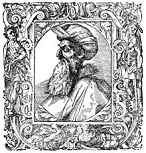

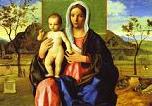

1468 On Jan. 17 Albanian hero Scanderbeg (b. 1405) dies, after which the Ottomans move in on Albania and force the pop. to convert to Grand Slam Islam, causing many Christian (mainly Greek Orthodox) Albanians and Arvanites (Albanian-speaking Greeks) to settle in S Italy, becoming known as the Abereshe (Arberesh); the mother of U.S. entertainer Regis Philbin (1931-) is an Abereshe? Louis XI invades and subdues Brittany, and forces Francis II to sign the Peace of Ancenis; taken POW by Duke Charles the Bold of Burgundy at Peronne, Louis XI is forced to sign a treaty with him; meanwhile Edward IV of England is kept busy repressing Lancastrian plots stirred up by Louis XI, while the earl of Warwick plots to dethrone him. 14-y.-o. Ferdinand II of Aragon (the Catholic) (b. 1452) is crowned king of Sicily, and spends his teens fighting in the Castilian wars. Sonni Ali, ruler of Songhai in Africa captures Timbuktu. Sejo dies, and Yejong II (d. 1469) becomes Yi king of Korea. Abu'l Khair dies, and his grandson Muhammad Shaybani (1451-1510) becomes ruler (khan) of the Uzbeks (Uzbegs). Circassian ex-slave Qaitbay (Al-Ashraf Sayf ad-Din Q'ait Bay) (1416-96) becomes sultan #18 of the sagging Mamluk empire (until 1496), going on to stabilize the economy, consolidate the N boundary with the Ottoman Empire, and become a great patron of art and architecture, fighting 16 military campaigns while building spectacular projects in Mecca, Medina, Jerusalem, Damascus, Aleppo, Cairo, and Alexandria, becoming infamous for building a fortress on the remains of the Lighthouse of Alexandria in 1480. The Ottomans conquer the principality of Karaman in C Anatolia, and for many years pretenders to the throne stage revolts - you think I kara, man? Christian I of Denmark calls the first-ever assembly of the estates of the realm; the Treaty of Denmark betrothes James III of Scotland to Margaret of Denmark, daughter of Christian I of Denmark and Norway; Scotland acquires the earldom of Orkney and lordship of Shetland from Norway as her dowry after the poor king can't pay the cash, then annexes them in 1472. Edward IV seeks to increase the number of cases of riot and violence brought before the court of star chamber. The bishopric of Vienna is established. The seaport of Anfa (Casablanca) in Morocco is destroyed by 10K Portuguese on 50 ships as a reprisal for piracy; they destroy it again in 1515. Dirk Bouts (1410-75) becomes the town painter of Louvain in C Belgium. Two men are called before the Archduchess Mechthild in Rotenburg, Germany for stealing the butcher's Rottweiler dog. Architecture: Andrea del Verrocchio makes a famous candelabra for the town hall of Florence, which ends up in Amsterdam and survives to modern times. The Cathedral of St. Elizabeth in Kosice, Slovakia (begun 1270) is finished. Art: Giovanni Bellini (1428-1516), Madonna and Child. Births: English grammarian (first headmaster of St. Paul's School, London) William Lily (Lilye) (d. 1522) in Odiham, Hampshire; educated at the U. of Oxford; first to teach Greek in London. Italian pope (1534-49) Paul III (Alessandro Farnese) (d. 1549); brother of Pope Alexander VI's mistress Giulia Farnese. Italian (Genoese) adm.-statesman Andrea Doria (d. 1560) in Oneglia. Deaths: Italian painter Francesco Squarcione (b. 1397) in Padua. German Great Man Who Invented Printing (And Made Bill Gates Possible) Johannes Gutenberg (b. 1398) on Feb. 3 in Mainz. Ethiopian emperor (1434-68) Zara Yaqob (b. 1399). Albanian anti-Ottoman resistance leader Prince Scanderbeg (b. 1405) on Jan. 17. Italian ruler Sigismondo Malatesta (b. 1417) on Oct. 7 in Rimini; dies after fighting for Venice against the Ottomans in the Peloponnesus in 1464-6, rejecting Pope Paul II's offer of Spoleto and Camerino in return for Rimini, then plotting to murder him and losing his nerve. Italian duchess of Milan (1450-68) Bianca Maria Visconti (b. 1425) on Oct. 28 in Cremona.










1469 On Mar. 20 the Battle of Nibley Green in Gloucestershire is a V for William Berkeley, 2nd Baron Berkeley over Thomas Talbot, 2nd Viscunt Lisle, becoming the last battle in England fought entirely between private armies. On Apr. 23 after getting canned last year by Charles the Bold, Louis XI's minister-cardinal Jean Balue (1421-91) is thrown in prison for 11 years after secret correspondence intriguing against him is found; after Pope Sixtus IV intervenes, he is freed in 1480 and moves to Rome. In July 17-y.-o. James III of Scotland marries Margaret Oldenburg of Denmark (1456-86), daughter of Christian I of Denmark at Holyrood Abbey, then assumes rule, canning the Boyds and forfeiting their property, having Alexander Boyd executed while Robert and Thomas flee; during his reign he coins silver groats portraying him as an emperor wearing a closed-arch imperial crown, becoming the first example of Renaissance coinage portraiture N of the Alps - SEIOU? On Oct. 19 after Pope Paul II grants a special dispensation because they're 2nd cousins (via John I of Castile), the long longed-for union of the Roman Catholic Spanish kingdoms of Aragon and Castile is effected by the marriage in Valladolid of Ferdinand II of Aragon and Sicily (1452-1516) to Isabella I of Castile (1451-1504), who become known as the Catholic Monarchs, bitter foes of heretics, Muslims, and Jews; Valladolid in NC Spain at the confluence of the Pisuerga and Esgueva Rivers replaces Burgos (capital of Castile and Leon since 1035) as the capital and residence of the kings of Spain until 1561, when it is destroyed by fire, and Philip II moves it to his hometown of Madrid - the original Bridge to Terebithia? The reason that Hannibal the Cannibal goes for babes named Clarice? Lorenzo the Magnificent de' Medici (1449-92) marries Clarice Orsini (1453-87), daughter of a Roman baron, becoming the first princely marriage of the Medici family and giving them big muscle; a few weeks later his daddy Piero dies, and Lorenzo becomes ruler of Florence, along with his brother Giuliano (d. 1478), turning it into a treasure house of the arts while fighting the rival (#2 but with a more noble lineage?) Pazzi banking family of Tuscany, marginalizing them and causing them to want to take matters into their own hands? In defiance of his brother Edward IV of England, George Plantagent, Duke of Clarence (1449-78) marries Isabel Neville (1451-76), daughter of kingmaker Richard Neville, 16th earl of Warwick; claiming only to be trying to restore his lost influence over the king and scotch the Woodvilles, Warwick joins with Clarence in a surprise attack, and defeats the king at the Battle of Edgcote (Northants), capturing him and executing some Woodvilles; Warwick then foments a pro-Henry Percy uprising in Northumberland by mystery man Robin of Redesdale in Yorkshire, which is soon scotched by Warwick's brother John Neville, and is forced by public opinion to release the king, turning his attention to problems in Scotland, while the pissed-off king now begins plotting his overthrow; meanwhile John Neville switches to the Lancastrian side after the earldom of Northumberland is restored to Henry Percy. Having conquered Moravia, Silesia and Lusatia, Matthias Corvinus has himself crowned king of Bohemia, but the Bohemian Diet doesn't recognize him. Denmark cedes Orkney and Shetland to Scotland. Yejong II dies, and next year Songjong II (-1494) becomes Yi king of Korea (until 1494). The Timurids attempt to take Azerbaijan from the White Turks, who defeat them and capture and kill Timurid ruler Abu Sa'id; Husayn Bayqara (1438-1506) becomes the last ruler of Timur's once great Timurid Empire, ruling from Tabriz in E Iran, which he makes into a cultural mecca, nurturing miniature painter Bihzad (Behzad) of Herat, who creates masterpieces incl. Iskander and the Seven Sages. Mahmud I of Gujarat conquers Girnar and Kathiawar this year and next. Archduke Sigismund of Austria sells his lands on the Rhine River and in Alsace to Duke Charles of Burgundy to stop designs on them by the Swiss Confederacy, buying them back in 1474 after signing a peace treaty with them in Konstanz. The French Order of the Star (founded 1351) is replaced by the Order of St. Michael (ends 1830). German-born Johann Heynlin (1425-96) builds the first printing press in France in the Sorbonne, Paris this year, and next, and in 1470 pub. his first book, Epistolae Gasparini by Gasparinus de Bergamo. Science: Pliny the Elder (23-79), Historia Naturalis; the first scientific book to be printed in the Wild Wild West, one year after Johannes Gutenberg (b. 1398) dies, and only 993 years after the fall of the Roman Empire in 476 C.E. - introducing scrubbing bubbles toilet cleaning gel, eeeeuuuw? Art: Dirk Bouts (1410-75), Altarpiece of the Holy Sacrament; five panels on Biblical themes (Church of St. Peter's, Louvain). Jorg Syrlin the Elder, Choir Stalls in the Cathedral of Ulm (1469-74) (wood sculptures). Births: Italian Roman Catholic cardinal (1517-34) Thomas Cajetan (Gaetanus) (Thomas or Tommaso de Vio) (Jacopo Vio) (d. 1534) on Feb. 20 in Gaeta, Naples. Burmese Hanthawaddy king #17 (1492-1526) Binnya Ran II (d. 1526) in Feb. in Pegu. Italian king of Naples (1495-6) Ferdinand (Ferrante) II (d. 1496) on Aug. 26; son of Alphonso II (1448-95); grandson of Ferdinand I (1423-94). Italian "The Prince" Renaissance writer-statesman Niccolo (Niccolň) di Bernardo dei Machiavelli (d. 1527) on May 3 in Florence. Portuguese king #14 (1495-1521) Emanuel (Manuel) I (the Great) (the Fortunate) (d. 1521) on May 31 in Alcochete; 1st cousin of Joao II (1455-95); husband (1497-) of Isabella of Asturias (1470-98), (1500-) her sister Maria of Aragon (1482-1517), and (1518-) Eleanor of Austria (1498-1558) (sister of HRE Charles V); father of Joao III (1502-57) and Isabella of Portugal (1503-39); father of Joao III (1502-57) and Henry I (1512-80); fortunate to rule during the golden age of New World looting? Italian sculptor (in Spain) Domenico Fancelli (d. 1519) in Settignano. Spanish playwright-poet-composer ("Father of Spanish Drama") Juan del Encina (d. 1529) in Encinas (near Salamanca). English Roman Catholic cardinal-martyr (St.) John Fisher (d. 1535) in Beverley (near Hull); educated at Cambridge U.; founder of St. John's College, Cambridge U; feast day: June 22/July 6. Indian Sikhism founder Shri Guru Nanak Dev Ji (d. 1539) in Nankana Sahib, Punjab (modern-day Pakistan); founder and first of 10 gurus of Sikhism, a blend of Bakhti Hinduism and Islamic Sufism that loves its "Om", with the motto "Devotion of thought and excellence of conduct as the first of duties". Deaths: Italian noble Margaret de Baux (b. 1394) on Nov. 15. Aztec emperor (1440-69) Montezuma I (b. 1397). Italian Florentine painter Fra Filippo Lippi (b. 1406) on Oct. 9 in Spoleto.




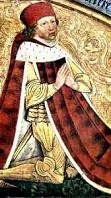



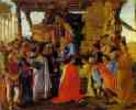

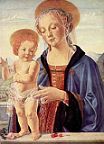


1470 Between this year and 1700, a total of 8,888 witches are tried in the Swiss Confederation, and 5,417 executed. On Mar. 12 after English king (since 1461) Edward IV, 4th Duke of York (1442-83) declares his cousin, kingmaker Richard Neville, 6th Earl of Salisbury and 15th Earl of Warwick (1428-71) a traitor, and gets some of the Lancastrians to switch sides, he defeats him and his turncoat brother George Plantagenet, 1st Duke of Clarence, 1st Earl of Salisbury, 1st Earl of Warwick (1449-78) at the Battle of Empingham (Lose-Coat Field); kingmaker and Clarence flee to France and make up with exiled Queen Margaret at Louis XI's urging, then stir up a Lancastrian revolt, and return to England in Sept. and defeat Edward IV on Sept. 13 at the Battle of ?, and Edward IV flees to Burgundy to seek help from his brother-in-law Charles the Bold (Shakespeare claims that kingmaker sneaks into Edward IV's camp and captures him, thus avoiding a bloody battle, then turns him over to his brother George Neville, archbishop of York for safekeeping, but the latter keeps him under too light a guard, allowing Edward's youngest brother, crippled Richard of Plantagenet, duke of Gloucester to free him); kingmaker has weak-minded Henry VI freed from the Tower, returning to power on Oct. 9 after kingmaker proclaims him king, which is how he gets the name kingmaker, duh?; Henry VI now reigns while kingmaker rules for the next 6 mo., making his side-switching younger brother George Neville (1432-76), archbishop of York (1465-76) (chancellor in 1460-7) (who took an oath of allegiance to Edward IV) chancellor of England again (until 1471); the exiled Yorkist kingy-queeny having nothing else to do in Burgundy, they have son Edward V on Nov. 1; on Dec. 13 Henry VI's pride-and-joy son and heir Edward of Lancaster, Prince of Wales (1453-71) is married to kingmaker's daughter Anne Neville (1456-85), causing the duke of Clarence to finally see the light and switch sides back to his brother Edward IV? - I had to get back to me? On July 12 the Ottomans under Mehmed II the Conqueror take the city of Negroponte (Chalkis) on Euboea Island, the main Venetian naval base in the Aegean Sea. Swedish king Carl VIII Knutsson dies, and Sten Sture the Elder (1440-1503) (a distant kinsman of the later Sten Sture the Younger) takes charge as regent (until 1497, then 1501-3), gaining the support of Stockholm and the other towns, promising the reforms of Engelbrecht and working to get the crown; Christian I of Denmark sees his chance, and invades with 70 ships and 3K men, and on Oct. 10 the Battle of Brunkeberg outside Scotland, results in a bad defeat, causing him to resort to peace talks which promise his reinstatement as king of Sweden, but never deliver, Sten Sture being elected regent by the Swedish nat. assembly. Hohenzollern Brandenburg elector #2 (since 1440) Frederick II (b. 1413) abdicates in favor of his younger brother Albert (Albrecht) Achilles, who becomes Albert III (1414-86) (until Mar. 11, 1486). Ivan III of Moscow launches a war against the repub. of Novgorod (ends 1478). Pope Paul II changes the Jubilee Period from 50 to 25 years - is that like giving yourself a pay raise? Rodrigo Borgia (1431-1503) (future Pope Alexander VI) meets hot Roman lady Vannozza (Giovanna) dei Catanei (1442-1518), who go on to have some little rugrats, incl. the supermodel of the cent. Lucrezia Borgia (b. 1480). The Incas capture Quito, and dominate Ecuador-Bolivia until 1532. Princess Juana of Portugal popularizes the farthingale wide-hipped skirt - in the days before Weight Watchers? The first printed book in France is made for the umpteenth-grandson of Charlemagne on the first French printing press, set up at the Sorbonne in Paris. Chancery Standard comes into vogue in London, launching Early Modern English (ends 1550). Sports: Compulsory archery practice is renewed in England, with hazel, ash, and laburnum wood allowed for practice bows because of the yew wood shortage. Architecture: The Mosque of Mehmed II the Conqueror (begun 1463) in Constantinople is finished. The Gothic-style Stiftskirche in Stuttgart, Germany is built by Peter von Koblenz. Art: Sandro Botticelli (1445-1510), Adoration of the Magi (1470-5). Carlo Crivelli (1430-95), St. George and the Dragon. Sano di Pietro (1406-81), The Massacre of the Innocents. Ercole de'Roberti, St. Jerome in the Wilderness. Martin Schongauer (1448-91), The Man of Sorrows (copper engraving); one of the first German painters to work extensively as an engraver, influencing Albrecht Durer et al. Andrea del Verrocchio (1436-88), Madonna and Child. Plays: Anon., Apu Ollantay; Peruvian Incan drama; recorded in 1770 by Dr. Valez in Cuba. Poetry: Anon., Maitre Pathelin; the first French farce about lawyer Maitre Pathelin and his wife Guillemette; coins the term "patheliner", meaning to malinger. Births: Italian scholar-poet and cardinal (1539-) Pietro Bembo (d. 1547) on May 20 in Venice; creator of the classic Petrarch-imitating style known as bembism. French Valois king (1483-98) Charles VIII (the Affable) (d. 1498) on June 30 in Amboise; only surviving son of Louis XI (1423-83) and 2nd wife Charlotte of Savoy (1443-83); one of his feet has six toes, causing him to wear square-toed shoes. Chinese Ming emperor #9 (1487-1505) Hongzhi ("great government") (Zhu Youcheng) (d. 1505) on Juy 30; son of Chenghua (1447-87); husband of empress Xiaochengjing. English smothered king (1483) Edward V (d. 1483) on Nov. 2 in Westminster Abbey, London; eldest son of Edward IV (1442-83) and Elizabeth Woodville (1437-92); brother of Richard of Shrewsbury, duke of York (1473-83). Dutch humanist Jeroen van Busleyden (Hieronymus Buslidius) (d. 1517) in Arlon; friend of Erasmus. Italian humanist scholar-grammarian Cosentius (Aulo Giano Parrasio) (Aulus Janus Parrhasius) (d. 1522) in Cosenza, Calabria. German humanist Willibald Pirckheimer (d. 1530) on Dec. 5 in Eichstatt. Moldavian prince (1504-17) Bogdan III the One-Eyed (d. 1517 in Husi; son of Stefan cel Mare and Doamna Maria Voichita. Italian poet and cardinal Bernardo Dovizi da Bibbiena (d. 1520). German cartographer (coiner of the term America) Martin Waldseemuller (Waldseemüller) (d. 1520). in Wolfenweiler; educated at the U. of Freiburg. Chinese artist Tang Yin (d. 1523). German physician Eucharius Rosslin (Rösslin) (d. 1526) in Freiburg?; father of Eucharius Rossling the Younger. Spanish adventurer Panfilo de Narvaez (Pánfilo de Narváez) (d. 1528). Lithuanian marshal prince (Roman Catholic) Michael (Mikhail) Lvovich Glinski (Glinsky) (d. 1534); of Tartar extraction; mother is daughter of Ruthenian noble Ivan Esmanovich, a Jewish convert to Orthodox Christianity; uncle of Ivan the Terrible. Portuguese poet-actor ("the Troubadour") ("Founder of Portuguese Drama") Gil Vicente (d. 1536) in Lisbon; known for his autos (religious mysteries). Portuguese explorer Pedro Mascarenhas (d. 1555). Italian monk Maxim Grek (Maxim the Greek) (Michael Trivolis) (d. 1556); educated in Florence; converts to Orthodox Greek and settles in Mt. Athos, then Russia. English Tudor historian Polydore Vergil (Castellensis) (d. 1557) in Urbino, Italy; educated at the U. of Bologna. Deaths: Spanish poet Alfonso Martinez de Toledo (b. 1398). Italian painter Jacopo (Iacopo) Bellini (b. 1400). Hindu sage Ramananda (b. 1400). Muslim Mamluk scholar Abu al-Mahasin Yusuf ibn Taghribirdi (b. 1411).
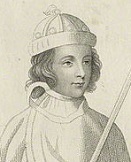





1471 On Mar. 14 after gaining Burgundian aid, Edward IV of England and his brother Duke Richard of Gloucester (future Richard III) return from the Netherlands, joining their prodigal brother Duke George of Clarence; on Apr. 14 (Easter Sun.) the Battle of Barnet is a big V for Edward IV's Yorkists against Henry VI's Lancastrians, led by Richard Neville, 15th earl of Warwick (b. 1428), who is KIA along with his brother John Neville, earl of Northumberland after the heavy fog confuses his own troops and they attack each other; archbishop George Neville switches to the winning side again and turns Henry VI and himself in, and they are imprisoned together in the Tower of London, after which George is soon pardoned, then arrested again for treason next Apr. 25, and imprisoned in Hammes Castle near Calais until Nov. 1474, a broken man, croaking on June 8, 1476; pissed-off Queen Margaret then brings in an army from France led by Edmund Beaufort, 4th Duke of Somerset (b. 1438), but on May 4 Edward IV's Yorkists bury her French tewk at the Battle of Tewkesbury in Gloucester in a battle of Prince Edward vs. King Edward; Margaret is captured, and her 18-y.-o. great white hope son Edward of Lancaster, Prince of Wales (1453-71) is butchered (by all three sons of York, according to Shakespeare), becoming the first (only?) prince of Wales to die in battle; on May 6 the duke of Somerset and other Lancastrian nobes are beheaded after a trial presided over by Edward IV's brother Duke Richard of Gloucester, who is also constable of England; on May 21 Henry VI (b. 1421) is killed in the Tower of London with a heavy blow to the back of the head, causing his hair to mat against his skull; the Lancastrian line is ended, the male line of the Beauforts is extinct, and the only remaining rep. of the Lancastrian claim is 14-y.-o. Henry Tudor, earl of Richmond (future Henry VII) (son of Margaret Beaufort, a direct descendant of John of Gaunt), who flees to Brittany; the remoteness of his claim allows Edward IV to feel safe from another Lancastrian revolt, and the rest of his reign is popular and peaceful. On July 26 Pope (since 1464) Paul II (b. 1417) dies, and on Aug. 9 Francesco della Rovere is elected Pope (#212) Sixtus IV (1414-84), the first of six grossly immoral popes (6-4/5/6?) whose escapades trigger the Protestant Reformation; he fathers six illegitimate sons, one with his sister, and later unleashes the Spanish Inquisition; he issues a bull banning nosepicking under pain of eternal damnation, and goes on to try to make the papacy a family business. On Aug. 22 after King George of Bohemia dies, and the widow of George Podebrady nominates him, 15-y.-o. Vladislav (Ladislas) (Uladislaus) II Jagiello (1456-1516), son of Casimir IV of Poland is elected king of Bohemia, becoming dominated by his advisors, who help him fight the challenge of Matthias Corvinus (ends 1479). On Dec. 21 Portuguese explorers Joao de Santarem (Santarém) and Pedro (Pero) Escolar discover Mina (Elmina) (S coast of South Ghana 7.5 mi. W of Cape Coast) on the Gold Coast in West Africa, stretching from Cape Three Points to the Volta (Port. for bending or turning) River, and set up a trading station, becoming the first Euro settlement in West Africa; they go on to discover Annobon next Jan. 1 and Principe on Jan. 17, 1472. Austria gains the seaport of Fiume (Rijeka) in Yugoslavia (until 1779). Borso d'Este is granted the title of Duke of Ferrara from Pope Paul II. Sten Sture the Younger expels Christian I of Denmark from Sweden. James III of Scotland proposes an expedition of 60K men to invade Brittany, annex Gueldres, then acquire Saintonage from the French, but the plans are scrapped when his subjects balk at the expense. The Portuguese capture Tangiers. The armies of the Vietnamese Le Dynasty under Emperor Le Thanh-Tong conquer the kingdom of Champa in N Vietnam (founded in 2nd cent. C.E.). Queen (since 1454) Shin Sawbu (b. 1394) dies, and her ex-Buddhist monk son-in-law Dhammazedi (1409-92) becomes Hanthawaddy king #16 of Burma (until 1492), becoming the greatest Burmese king, enjoying a peaceful reign during which his kingdom becomes a center of Theravada Buddhism, with strong ties to Ceylon, sending missionaries throughout Burma. The Worshipful Co. of Dyers in England is founded, sharing with the Worshipful Co. of Vinters the right to keep swans in the Thames River and participate in swan-upping. Science: German astronomer Regiomontanus (Johannes Muller von Konigsberg) (Johannes Müller von Königsberg) (1436-76), pupil of Austrian astronomer Georg von Puerbach (Purbach) (1423-61) sets up the Nuremberg Observatory, becoming the first European observatory. Nonfiction: Marsilio Ficino (tr.), Corpus Hermeticum. The first complete Bible in Italian, by Camaldolese monk Niccolo Malerbi (Malermi) (1422-81) is printed in Venice after spending only 8 mo. doing the trans. work, becoming the first printed Bible in Italian to achieve significant circulation. Art: Pinturicchio (1454-1513), The Crucifixion with St. Jerome and St. Christopher. Music: Jacob Obrecht (1450-1505), St. Matthew Passion. Births: German "Praying Hands", "Knight, Death and the Devil" #1 painter-engraver Albrecht Durer (Dürer) (d. 1528) on May 21 in Nuremberg; father is a goldsmith; studies under German painter Michel Wohlgemuth; friend of Erasmus and Melanchthon. German Catholic Saxon duke (1500-39) George the Bearded (d. 1539) on Aug. 27 in Meissen; eldest son of Duke Albert (1443-1500) and Sidonie Podiebrad; brother of Henry IV the Pious (1473-1541); known for his excellent education for a prince; member of the Order of the Golden Fleece. Danish-Norwegian-Swedish king (1426-81) Frederick I (d. 1533) on Oct. 7 in Haderslevhus; son of Christian I and Dorothea of Brandenburg (1430-95). Spanish explorer (conqueror of the Incas) Francisco Pizarro Gonzalez, 1st Marques de los Atabillos (d. 1541) in Trujillo, Extremadura; illegitimate son of Gonzalo Pizarro Rodriguez de Aguilar Sr. (1446-1522) and Francisca Gonzalez Mateos of Trujillo. Italian Renaissance painter Gaudenzio Ferrari (d. 1546) in Valduggia, Piedmont; pupil of Girolamo Giovenone and Stefano Scotto; #1 master of the Lombard School; known for his heads and draperies. Deaths: German mystic Thomas a Kempis (b. 1380) on July 25 in Zwolle, Utrecht. Portuguese explorer Joao Goncalves Zarco (b. 1390) on Nov. 21 in Funchal. Italian scholar Antonio Beccadelli (b. 1394) in Jan. in Naples; leaves The Sayings and Deeds of King Alfonso V of Aragon. Czech Hussite theologian John of Rokycany (b. 1396) on Feb. 21 in Prague. German elector (1440-70) of Brandenburg Frederick II (b. 1413) on Feb. 10 in Neustadt an der Aisch. Japanese emperor #102 (1428-64) Go-Hanazono (b. 1419) on Jan. 18. English king (1421-71) Henry VI (b. 1421) on May 21 in the Tower of London (murdered). English kingmaker Richard Neville, 15th Earl of Warwick (b. 1428) on Apr. 14 (KIA at the Battle of Barnet). English prince of Wales Edward of Lancaster (b. 1453) on May 4 in Tewkesbury (KIA). Indian ruler #9 (1438-71) Pachacutec (b. ?). English kingmaker's brother John Neville, earl of Northumberland (b. ?) on Apr. 14 (KIA at the Battle of Barnet).

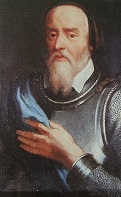

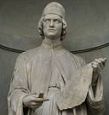
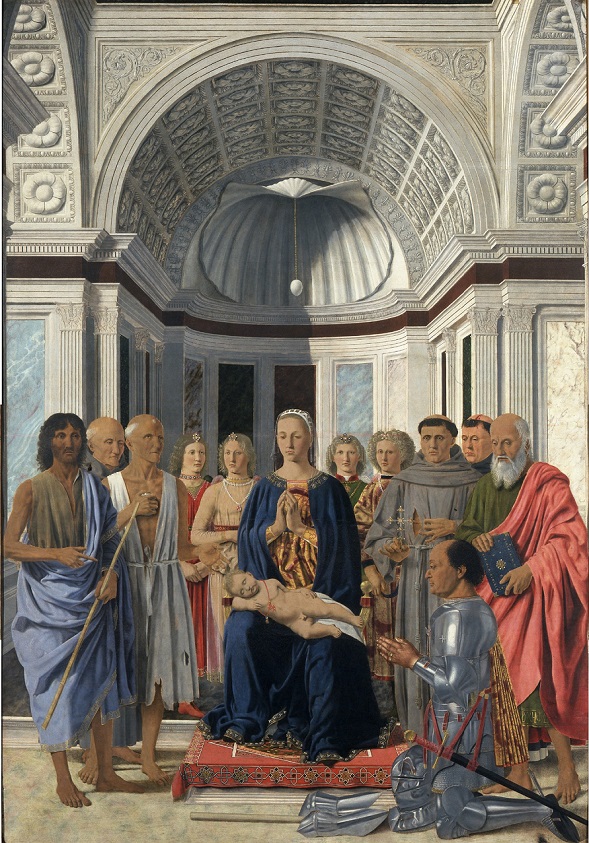

1472 In Apr. Duke Richard of Gloucester marries Anne Neville, widow of Edward, prince of Wales and daughter of the super-rich but dead earl of Warwick, whose remaining property now goes to the royal house; meanwhile Margaret Beaufort marries Thomas, Lord Stanley, the king's councillor and steward of the household. On Aug. 17 Pope Sixtus IV issues a bull raising St. Andrews in Scotland to the status of an archbishopric with metropolitan authority over the other 12 Scottish bishops in an effort to counter the efforts of James III to limit papal control over finances, but the plan backfires as the Scottish bishops turn on archbishop Patrick Graham and he is sacked in 1478 after the pope abandons him. Russian grand prince (since 1462) Ivan III of Moscow marries Sophia Palaeologus, niece of late Byzantine emperor Constantine XI Palaeologus (who fell in 1453 on the walls of Constantinople), establishing himself as the protector of the Orthodox Christian Church, adding the double-headed eagle of the ancient Roman, Byzantine, and Holy Roman emperors to his personal coat of arms, and proceeding to set himself up as tsar (czar) (caesar) (although he doesn't officially call himself that?), with a regime modeled on the autocratic Byzantines with its own Russian code of law, drastically curtailing the Russian aristocrats, who have to kiss his hiney and call him Ivan III the Great; meanwhile after being put up to it by Ivan's enemy grand duke Casimir IV of Lithuania, Akhmat, khan of the Golden Horde attacks Ivan's principality and destroys the city of Aleksin. The Eastern Orthodox Church repudiates the 1438 Council of Florence, finalizing the Great Schism with the Roman Catholic Church. Portuguese capt. Ruy de Sequiero visits Lagos, Nigeria (Port. "lagos" = lakes), and receives from the king of Benin royal permission to trade for gold, ivory, and slaves. The Wattasid Dynasty in Morocco is founded (ends 1554) by tribal groups who had acted as regents to the Marinid sultans since 1428. James III gets the Danish and Norwegian fiefs of the Orkney Isles, Hebrides, and Shetland Isles annexed to the crown of Scotland; William Sinclair (d. 1484) gets Ravenscraig in Fife in exchange for Orkney, and becomes the 1st earl of Caithness. HRE Frederick III confirms the lordship of Christian I of Denmark over Dithmarschen, and elevates Holstein as a duchy, incl. Ditchmarschen and Stormarn. The Statute of Westminster requires every ship entering an English port to bring four bowstaves for every tun of cargo; Richard III later increases it to 10 per tun, causing S German and Austrian monarchs to begin setting up yew wood monopolies. The Portuguese discover Cameroon, naming it after the giant shrimp (Port. camaroes) they find there. The Portuguese push past the equator, and Fernando Po (Póo) (Fernao do Po) discovers Fernando Po Island in the Bight of Biafra on the W coast of Africa, becoming strategically important as an entry port to the diseased "White Man's Grave" of the African equatorial zone. Danish navigator Dietrich Pining claims to discover Newfoundland this year. The Monte dei Paschi in Siena, Italy begins taking deposits and making loans, becoming the world's oldest bank surviving to modern times. The first formal patent of appointment of an attorney general is issued in England. The U. of Munich (originally U. of Ingolstadt) in Ingolstadt, Germany is founded by Duke (since 1450) Ludwig IX the Rich of Bavaria-Landshut (1417-79), modeled after the U. of Vienna, with the goal the propagation of the Christian faith; in May 1800 it is moved to Landshut by Maximilian I of Bavaria, who in 1802 renames it Ludwig Maximilian U. by Maximilian I of Bavaria; in 1826 it is moved to Munich by Ludwig I. Pope Sixtus IV approves the celebration of the Dodecaorton (Twelve Feasts), incl. the Feast of the Virgin Mary's Presentation in the Temple, in which 3-y.-o. Mary allegedly dances on the 3rd step of the Temple of Jerusalem. Architecture: Leone Battista Alberti (b. 1404) dies on Apr. 25 in Rome, having designed the exterior of the Church of Sant'Andrea in Mantua (begun 1470). The Church of Santa Maria del Popolo in N Rome (founded 1099) is rebuilt (finished 1477). Science: German astronomer Regiomontanus (1436-76) measures the angular diam. of comets in Nuremberg in Jan., and helps pub. Theoricae Novae Planetarum by George Puerbach in Nuremberg, which features diagrams of the system of solid spheres. Art: Piero della Francesca (1415-92), The Brera Madonna (Brera Altarpiece) (Montefeltro Altarpiece) (Pala di Brera) (1472-4); house in the Pinacoteca di Brera in Milan after being deposited by Napoleon; features an ostrich egg representing the Creation hanging from a shell semidome. Hans Memling (1430-94), The Last Judgment (altarpiece) (Danzig). Leonardo da Vinci (1452-1519), The Annunciation. Poetry: Dante's Divine Comedy is first printed in Foligno. Births: French viceroy of Naples (1501-3) Louis d'Armagnac, Duke of Nemours (d. 1503) in Normandy. Italian duke of Urbino (1482-1508) Guidobaldo (Guido Ubaldo) I da Montefeltro (d. 1508) on Jan. 17 in Gubbio; son of Federico II da Montefeltro (1422-82); uncle of Francesco Maria I della Rovere (1490-1538). Italian Florentine Renaissance painter Fra Bartolommeo (di Pagholo) (Baccio della Porta) (d. 1517) on Mar. 28 in Savignano di Prato, Tuscany; his nickname comes from living near the gate (porta) of San Pier Gattolini; pupil of Cosimo Rosselli; introduces the lay-figure with joints. Chinese idealist Confucian philosopher Wang Yang-ming (d. 1529). German painter Lucas Cranach (Sunder) the Elder (Lucas Maler) (d. 1553) in Kronach, Upper Franconia (S Germany). English royal administator Thomas Mildmay of Chelmsford (d. 1567); father of Sir Walter Mildmay (1522-89). Deaths: Italian architect-sculptor Michelozzo (b. 1391) in Florence. Greek scholar-cardinal Johannes (Basilius) Bessarion (b. 1395); dies from vexation after an insult by Louis XI while on an embassy to France; leaves In Calumniatorem Platonis (4 vols.), attempting to reconcile Plato and Aristotle; his collection of Greek 600 mss., given to the senate of Venice in 1468 is used to found the Library of St. Mark (Biblioteca Marciana) in Venice. Italian banker Luca Pitti (b. 1398). Mexican king Nezahualcoyotl (b. 1402) on June 4. Greek scholar Johannes Bessarion (b. 1403) on Nov. 18 in Ravenna, Italy. Italian Renaissance man Leon Battista Alberti (b. 1404) in Apr. 25 in Rome. French king Louis XI's brother Charles de Valois, duc de Berry (d. 1446) on May 24 in Bordeaux (TB and VD contracted from his mistress Colette de Chambres, whose jealous hubby Louis d'Amboise, viscount of Thouars fed infected fish to); dies without heirs.


1473 On July 10 king (since 1463) James II the Bastard (b. 1438) dies in Famagusta, and his infant son James becomes king of Cyprus (until 1474). On Aug. 11 the Battle of Bashkent sees the White Sheep (Aq-Qoyunlu) Turks under Uzun Hasan (allied with the Venetians to counter the Ottomans, which later hurts his prestige) march into E Anatolia and get decisively defeated by the Ottomans, then withdraw from the Ottoman-Venetian War. Duke Albrecht Achilles declares the indivisibility of the electorates of Brandenburg. The Siamese sack Phnom Penh. The original Meet the Fuggers? The Fuggers of Augsburg begin business dealings with the Habsburgs. Dutch #1 scholar Johann Wessel Gansfort (Goesport) (1419-89) visits Pope Sixtus IV in Rome, and when told he could have one wish, he asks for a Greek and Hebrew Bible from the Vatican Library, which the pope grants after remarking that he should have asked for a bishopric, showing that he didn't 'get' that Wessel was an early Protestant, condemning the sale of indulgences and questioning papal infallibility, but not loudly enough to get condemned as a heretic? The Moscow Grand Duchy imposes a monopoly on vodka production and sales - drink up and pay your liquor taxes? St. Catherine's College (originally Katharine Hall until 1860) at Cambridge U. is founded, receiving a charter from Edward IV in 1475. The town of Basildon in Essex, England near London is founded. Architecture: James III of Scotland begins Holyrood Palace (Holyroodhouse) on the site of the 1128 Holy Rood (Holyrood) Abbey in Edinburgh (finished 1513). St. George's Chapel in Windsor, England is begun (finished 1519). Science: Avicenna's 11th cent. "Canon of Medicine" (Al-Quanun) is trans. into Latin, dominating Euro medicine until the 17th cent. Nonfiction: Regiomontanus (Johann Muller) (1436-76), Ephemerides ab Anno; an almanac for 1475-1505, used by Columbus. Art: Martin Schongauer (1448-91), Virgin in the Rose Arbor. Leonardo da Vinci (1452-1519), Arno Valley; the Arno River with the Castle of Montelupo in the background; his first dated work (Aug. 5); contains proof that he's ambidextrous. Births: Polish #1 astronomer (founder of the Heliocentric Planetary Theory) Nicolaus (Nicolas) Copernicus (Lat. "copper worker") (d. 1543) on Feb. 19 in Torun (Thorn) - his portrait bears a striking resemblance to Hollywood actor Danny Kaye? German Protestant Wettin duke of Saxony (1539-41) Henry IV the Pious (d. 1541) on Mar. 16 in Dresden; 2nd son of Duke Albert (1443-1500) and Sidonie Podiebrad of Bohemia; brother of George the Bearded (1471-1539); father of Augustus I (1526-86). Scottish king (1488-1513) James IV (d. 1513) on Mar. 17 in Stirling Castle; son of bi James "Sauchieburn" III (1460-88) and Margaret of Denmar (1456-86); husband of Henry VIII's sister Margaret Tudor (1489-1541); father of James V (1512-42). Cyprus king (1473-4) James II (Jacques III de Lusignan) (d. 1474) on July 10; only child of James II (1438-73) and Catherine Comaro (1454-1510). English Roman Catholic martyr Margaret Pole, 8th Countess of Salisbury (d. 1541) on Aug. 14 in Somerset; daughter of George Plantagenet, 1st duke of Clarence (1449-78); wife of Sir Richard Pole (1462-1505); mother of Cardinal Reginald Pole (1500-58). English smothered heir Richard Plantagenet of Shrewsbury, 1st Duke of York and 1st Duke of Norfolk (d. 1483) on Aug. 17 in Shrewsbury, Shropshire; 6th child and 2nd son of Edward IV (1442-83) and Elizabeth Woodville (1437-92); brother of Edward V (1470-83). French military hero Pierre Terrail, Chevalier (Signeur) de Bayard (d. 1524) in Chateau Bayard; the last medieval knight, AKA "chevalier sans peur et sans reproche" (fearless and irreproachable knight). German painter-printmaker Hans Burgkmair the Elder (d. 1531) in Augsburg; son of Thomas Burgkmair (1444-1523); father of Hans Burkmair the Younger (1500-59); pupil of Martin Schongauer (1448-91). Scottish archbishop James Beaton (d. 1539) in Fife; uncle of Cardinal David Beaton (1494-1546); educated at St. Andrews U. English soldier-politician (Roman Catholic) Thomas Howard, 3rd Duke of Norfolk and 2nd Earl of Surrey (d. 1554); son of Thomas Howard, 2nd duke of Norfolk and 1st earl of Surrey (1443-1524); father of poet Henry Howard, earl of Surrey (1516-47) and William Howard, 1st baron of Effingham (1520-73); grandfather of Catholic martyr Thomas Howard, 4th duke of Norfolk (1536-72). Danish marshal (1554-67) Otte Krumpen (d. 1569) brother of Stygge Krumpen (1485-1551). Deaths: Greek patriarch (1454-64) Gennadius II Scholarius (b. 1400). German organist Conrad Paumann (b. 1410) on Jan. 24 in Munich.










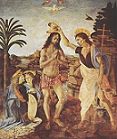
1474 On Aug. 25 infant king (since July 10, 1473) James III (b. 1473) dies under suspicious circumstances, and on Aug. 26 her mother Caterina (Catherine) Cornaro (1454-1510) becomes queen of Cyprus (until Feb. 26, 1489), watching the weakened kingdom become controlled by Venetian merchants. The final Roman Catholic V against the Muslims in Spain is owed to a king with a limp dick and/or dry nuts? On Dec. 11 Castile-Leon king (since 1454) Henry IV the Impotent (b. 1425) dies without a male heirs and his half-sister Isabella I the Catholic of Castile and Leon (1451-1504) and her hubby Ferdinand II the Catholic of Aragon (1452-1516) (royal cousins, married in 1469) jointly succeed him as Ferdinand V and Isabella I of Castile and Leon (until 1504), uniting all of Spain except Moorish Granada, but not without a little War of the Castilian Succession (ends 1479), with Afonso V of Portugal supporting the claim of Henry IV's only child, 12-y.-o. daughter (Isabel's and Afonso's niece) Juana (Joanna) la Beltraneja (1462-1530), going through with an extreme marriage with her next May 30 in Plasencia in Extremadura (W Spain); too bad, even though John IV made his nobles promise to support her as queen, not only was he a weak king, but he was known for shooting blanks, having divorced his 1st wife Blanca in 1453, leaving her a virgin after 13 years of marriage, and it is widely rumored that Juana is really the below-the-belt daughter of Beltran (Beltrán) de la Cueva y Alfonso de Mercadeo, 1st Duke of Albuquerque (1443-92) (hence her nickname La Beltraneja), which was reinforced when John's 2nd wife Juana had a love child with the nephew of Bishop Fonseca, causing him to divorce her - you're combat ineffective, do you understand me? Mehmed II takes Cilicia. About this time Stjepan Hercegovic (1459-1517), son of king Herceg Stefan of Hercegovina converts to Islam, later returning in 1515 from several years in Istanbul as Otoman grand vizier Ahmed Pasha Hercegovic (Hersekzad) (Hersekli) (Ahmed Pasha, Son of the Herzog), helping the Bosnian nobility go Muslim; the Christian peasants are jizya-taxed in money and children, who are turned into Janissaries - great dress? The Hapsburgs give up trying to fight the militant Swiss mountaineers, and abandon their attempts to assert feudal rights, letting the Swiss Confederation (formed 1291) become a sovereign part of the HRE. England and Scotland sign the Treaty of 1474, but the pesky Scots like border-raiding so much that it becomes unworkable. Christian I of Denmark travels to Rome and arranges with the pope to be allowed to fill the highest church posts in Denmark and Sweden, and open a univ. in Copenhagen; Christian I's title of Duke of Schleswig and Count of Holstein is consolidated into Duke of Schleswig-Holstein. The Hanseatic League secures full title to their steelyard in London, and renewal of their rights in Boston and Lynn. The town of Urbino, Italy in the Marches 19 mi. SW of Pesaro becomes capital of the duchy of Urbino (until 1626), becoming known as an art center. Girolamo Savonarola (1452-98) hears a sermon, renounces the world, and becomes a Dominican - he couldn't just come out of the closet in those days? James III gets his court servant-tailor William Scheves (-1497) appointed as archdeacon of St. Andrews, then coadjutor of the see of St. Andrews on July 13, 1476 on the grounds of the insanity of his enemy archbishop Patrick Graham, and finally archbishop in 1487 after Graham is deposed - bringing in the scheves? The Iroquois Constitution observes peace among the Five Nations. Gentile Bellini (1427-1507), son of Jacopo (Iacopo) Bellini becomes official Venetian state painter. The U. of Saragossa (Zaragoza) in NE Spain is founded, going on to distinguish itself for mediocrity? The Repub. of Venice enacts the first modern patent law. Architecture: The Dakhil Gateway in Gaur, Bengal (begun 1459) is finished. Science: Regiomontanus pioneers lunar nautical navigation. Art: Hans Memling (1433-94), St. John Altarpiece (1474-9). Andrea del Verrocchio (1436-88), The Baptism of Christ (1474-5); his pupil Leonardo da Vinci finishes the background and paints the left angel, outshining his master and causing him to switch mainly to sculpture? Nonfiction: Bartolomeo Platina (1421-81), De Honesta Voluptate et Valetudine (On Honorable Pleasure and Health) (5 vols.); the first printed cookbook, containing mainly Roman medieval recipes incl. some from Maestro Martino de Rossi, whom he met in summer 1463 in Albano. Poetry: ?, The Recuyell of the Historyes of Troye; the first book printed in the English language, tr. and printed by William Caxton (1415-91) at Bruges. Births: Italian Ursulines founder (St.) Angela Merici (d. 1540) on Mar. 21 in Desenzano, Lombardy; canonized in 1807. Italian marquesa of Mantua (1490-1539) ("First Lady of the Renaissance") Isabella d'Este (d. 1539) on May 18 in Ferrara; eldest daughter of Ercole I d'Este (1431-1505) and Leonora of Naples (1450-93) (daughter of Ferdinand I); sister of Beatrice d'Este (1475-97) and Alfonso I d'Este (1476-1534); wife (1490-) of Francesco II Gonzaga (1466-1519). Italian "Orlando Furioso" poet Ludovico Ariosto (d. 1533) on Sept. 8 in Reggio Emilia. German Saxon duke Frederick (Friedrich) von Wettin (von Sachsen) (d. 1510) on Oct. 26 in Torgau; 3rd son of Duke Albert (1443-1500) and Zedena of Bohemia (daughter of George of Podebrady); grandmaster #36 of the Teutonic Knights (1498-1510). Italian diplomat cardinal (1534-9) (last cardinal protector of England in 1523-31) Lorenzo Campeggio (d. 1539) on Nov. 7 in Milan; educated at the U. of Bologna; becomes a priest after his wife Francesca (five children) dies. English pretender Perkin Warbeck (d. 1499) in Tournai, Belgium. Spanish explorer Vasco Nunez (Núńez) de Balboa (d. 1519) in Jerez de los Caballeros, Spain; first Euro to discover the Pacific. Italian mistress Giulia Farnese (d. 1524) in Canino; mistress of Pope Alexander VI (Rodrigo Borgia); mother of two of his sons, and sister of "the Petticoat Cardinal" Alessandro Farnese (later Pope Paul III); has floor-length golden hair, is featured in Raphael's Transfiguration, and is the model for Pinturicchio's Virgin Mary painting in the papal apts. Spanish (Portuguese?) explorer Diego Colon Moniz (d. 1526) in Lisbon (1479/80 in Porto Santo?); eldest son of Christopher Columbus (1451-1506); brother of Ferdinand Columbus (1488-1539). Amerindian Roman Catholic (St.) Juan Diego Cuauhtlatoatzin (d. 1548); first Roman Catholic indigenous saint from the Americas. Deaths: Franco-Flemish composer Guillaume Dufay (b. 1397) on Nov. 27. Spanish king (1454-74) Henry IV the Impotent of Castile (b. 1425) on Dec. 11. Cyprus king (1473-4) James III (b. 1473) on Aug. 25; dies under mysterious circumstances.



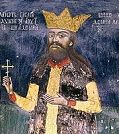
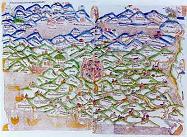

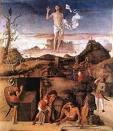

1475 On Jan. 10 after the Ottomans invaded Moldavia last Dec. and advanced onto scorched earth and poisoned waters, the Battle of Vaslui (Racova) (Podul Inalt) on a foggy morning is a big V for Moldavian prince (since 1457) Stephen III the Great (1433-1504) and his 45K Christian troops and 5K troops from Hungary and Poland plus 30K peasants armed with homemade weapons against 120K Ottomans under Hadan Suleiman Pasha, who sustain 40K casualties (30K killed) by the time they hightail it out of Bessarabia, becoming the greatest V ever secured by the Christians against Islam, and the worse defeat ever for the Ottomans, saving the Christian world from Islam and causing Pope Sixtus IV to award Stephen the title of Athleta Christi (champion of Christ), and call him "Verus christiane fidei aletha" (the true defender of the Christian faith); like a true athlete of Christ, Stephen doesn't celebrate his V like some pagan Roman, but fasts for 40 days on bread and water and gives credit only to the Lord, and orders monasteries built and decorated with colorful frescoes, incl. the Church of St. George of Voronet Monastery (1488), whose exterior walls are painted in 1547 with a Last Judgment scene in vivid cerulean blue (later known as Voronet blue), becoming known as "the Sistine Chapel of the East"; in 1490 he builds the Monastery of the Beheading of St. John the Baptist; after getting over the shock, the Big D pisses-off Sultan Mehmed II, who vows here-comes-Johnny-again revenge; meanwhile Vlad III Dracula's younger brother Radu cel Frumos (the Handsome) (b. 1435) (who converted to Islam) dies, and Basarab Laiota cel Batran (the Elder) of the Danesti clan is installed by the Ottomans as prince of Wallachia, causing Vlad III Dracula, who was officially released from imprisonment in Hungary last year by Hungarian king (1458-90) Matthias Corvinus (1443-90) to invade Wallachia with Stephen V Bathory of Ecsed (1430-93) with a mixed force from Transylvania that includes some Moldavian troops sent by Vlad's cousin Stephen III of Moldavia, causing Basarab to flee to the protection of the Turks, after which Bathory places Dracula on the throne of Wallachia then returns to Transylvania, leaving Vlad with a force of only 4K men, which he fails to increase after the boyars and peasants alike tell the vamp to shove it? In the summer the Portuguese under Afonso V siege and take Toro, after which Afonso V refuses to fight the Castilian relief army under Ferdinand II of Aragon, and Ferdinand's army disperses, but the Portuguese are kept cooped up in Toro by other supporters of Isabella I. In the summer George "the Rich" of Bavaria-Landshut (1455-1503) marries princess Jadwiga (Hedwig) Jagiellon (1457-1502) (pinup girl of the Middle Ages?), daughter of Casimir IV Jagiellon of Poland and Archduchess Elisabeth of Austria in one of the most celebrated weddings of the Middle Ages, starting the tradition of the Landshut Wedding (Landshuter Hochzeit), held every four years in modern times and attended by 2K+ participants in medieval costumes, who joust, feast, and you know what all night long. On Aug. 29 after Edward IV arrives in France with a large army to make war on Louis XI, and Edward IV's ally the Duke Charles III the Bold of Burgundy proves too busy fighting the Germans to aid him, the Treaty of Picquigny is signed, giving Edward IV 75K crowns plus 50K crowns a year to return to England and give up his claims to the French throne; Louis IX also agrees to ransom Queen Margaret of Anjou with 50K crowns to exile in Anjou, and pay pensions to many of Edward's other lords; Duke Richard of Glouchester (later Richard III) opposes the treaty and turns the picayune pension down; the new source of dough frees Edward IV from reliance on Parliament for money and leaves him free to concentrate on domestic affairs, particularly his bank account, confiscating Yorkist estates, extorting benevolences (free forced gifts), pumping up the wool trade and raking in customs duties. In Oct. James III of Scotland summons John MacDonald (John of Islay), Earl of Ross (1434-1503), 4th and last lord of the isles (since 1449) to appear in parliament on Dec. 1 to answer charges of treason stretching back to 1452, and when he doesn't show up parliament passes a sentence of forfeiture, and on Dec. 4 commissions his rival Colin Campbell, 1st Earl of Argyll, 2nd Lord Campbell (1433-93) to do the dirty work, which he does next spring, with help from Robert Colquhoun, bishop of Argyll (1475-93), Earl John Stewart of Atholl, and Earl George of Huntly. The Ottoman Turks annex the Crimea, continue their attack on Venice, and become masters of the Aegean Sea. Dayan ("Great Yuan") Khan (Batumongke) (1464-1517) reunites the Mongols in Mongolia, becoming the Khalka Mongols, the largest subgroup of Mongols in Mongolia since the 15th cent. (modern-day pop. 3M). German astronomer Regiomantanus (Johann Muller) (1436-76) is called to Rome by Pope Sixtus IV to help the reform of the pokey Julian Calendar, which was started in -44 and is now eight days behind, with the vernal equinox falling on Mar. 12 instead of Mar. 20; too bad, Regiomontanus dies of the plague next year before doing it, and nothing is done until the Council of Trent in 1545. After coffee arrives in Turkey in 1453, Kiva Han, the world's first coffee shop opens in Constantinople (Istanbul) - Crescentbucks? Architecture: Porta del Popolo in Rome is built by Pope Sixtus IV for the Jubilee Year of 1475 on the site of the partially-buried Roman Porta Flaminia gate, becoming a gate of the Aurelian Walls. St. Olaf's Castle (Olavinlinna) in Savonlinna, Finland is built, becoming the site of an annual opera festival in 1912. Inventions: Majolica glazed pottery, first manufactured in this cent. in Majorca, "pearl of the Mediterranean" begins to be manufactured in Urbino, Italy. About this time the muzzle-loaded rifle is developed in Italy and Germany - who's the best shot? Nonfiction: Lucas Brandis pub. the first two printed maps; wouldn't you know, they're of the Holy Land and Jerusalem? The fechtbuch Gladiatoria is pub. about this time in Germany. Art: Giovanni Bellini (1428-1507), The Resurrection (1475-9). Andrea del Verrocchio (1435-88), Madonna, St. John the Baptist and St. Donatus (1475-83). Births: Italian duchess of Milan (1494-7) Beatrice d'Este (d. 1497) on June 29 in Ferrara; daughter of Ercole I d'Este (1431-1505) and Leonora of Naples; sister of Isabella d'Este (1474-1539) and Alfonso d'Este (1476-1534); wife (1491-) of Lodovico Sforza (1452-1508). Spanish humanist scholar Hernan Nunez de Toledo y Guzman (Hernán Núńez de Toledo y Guzmán) (d. 1553) in Valladolid. Italian Mannerist Fontainebleau architect Sebastiano Serlio (d. 1554) on Sept. 6 in Bologna. Italian soldier-cardinal Cesare Borgia, Duke of Valentino (d. 1507) on Sept. 13 in Rome; illegitimate son of Rodrigo Borgia (Pope Alexander VI), and subject of Machiavelli's "The Prince". German satirist Thomas Murner (d. 1537) on Dec. 24 in Oberehnheim, Alsace. English poet Stephen Hawes (d. 1511). Spanish explorer Lucas Vazquez de Ayllon (Lucas Vázquez de Ayllón ) (d. 1526) in Castile. English cardinal (1515-), statesman and lord chancellor (1515-29) Thomas Wolsey (d. 1530) (b. 1474?) in Ipswich; son of a butcher; educated at Magdalen College, Oxford U. Italian painter Bernardino Luini (Bernardino de Scapis) (d. 1532) in Runo (Luino?), Dumenza (near Lake Maggiore); son of Giovanni Lutero; pupil of Leonardo da Vinci; known for painting females with slightly squinted "Luinesque" eyes. Italian engraver Marcantonio Raimondi (d. 1534) (b. 1470?) in Bologna; pupil of Francia of Bologna; pirates about 70 engravings by rival Albrecht Durer (1471-1528), counterfeiting his signature - you complete me? English Yorkist imposter Lambert (John) Simnel (d. 1535); claims to be the earl of Warwick. Spanish conquistador Diego de Almagro the Elder (El Viejo) (El Adelantado) (d. 1538) in Amalgro (near Ciudad Real), Castile; father of Diego de Almagro the Younger; partner then enemy of Francisco Pizarro. Spanish novelist Fernando de Rojas (d. 1538) in Toledo. Italian "The Last Judgment" #1 artist-sculptor (lefty) Michelangelo di Lodovico Buonarroti Simoni (d. 1564) in Caprese; student of Bertoldo di Giovanni (1435-91), student of Donatello (1386-1466); only Renaissance artist to adopt Neoplatonism in its entirety? Deaths: Italian Florentine painter Paolo Uccello (b. 1397) on Dec. 10 in Florence. Italian humanist historian Matteo Palmieri (b. 1406); declared a heretic by the Church, his body is removed from the Church of San Pier Maggiore and his effigy burned for writing the unpub. 3-vol. poem The City of Life in imitation of Dante's "Divine Comedy", claiming that the world was divinely ordained to test human virtue in action. Dutch Flemish painter Dirk Bouts (b. 1410). French theologian Alanus de Rupe (b. 1428) in Zwolle, Netherlands. Wallachian prince (1462-75) Radu the Handsome (b. 1437). Poruguese infanta Juana (Joana) (b. 1439) on June 13 in Madria; dies in a convent.
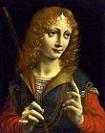



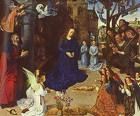
1476 In Feb. after the Castilians under Ferdinand V siege Portuguese-held Zamora, Alfonso V comes to Zamora's relief, then withdraws towards Toro in Castile-Leon; Ferdinand and his 8K men and 2.5K3K horsemen pursues and catches them on Mar. 1 only 5 mi. from Toro as they negotiate a narrow pass beside the Duero River, and fight the Battle of Toro; 1K of 8K Portuguese footmen and 3.5K horsemen are KIA, but the rest escape to fight again, despite Isabella I and Ferdinand II beginning to assume the Spanish throne; next Nov. Afonso V flirts with making his son John II co-king before retiring to a monastery in Sintra and remaining king until his 1481 death. On Mar. 2 after hanging dead Swiss 10-to-20 per bough on trees, pissing them off, Charles III the Bold of Burgundy is outwitted and defeated by the Swiss at the Battle of Grandson, who don't have the calvary need to chase them but take a large amount of booty incl. bling, then decisively defeated on June 22 at the Battle of Morat (Murten), which ends in a rout with their backs up against a lake, allowing the Swiss to drive them into it and drown them, with 6K-10K Burgundian casualties out of 12K-20K vs. 410 out of 25K for the Swiss, who capture yet more booty and bling, incl. three capes of the Order of the Golden Fleece, after which Charles III the Bold holes-up in Morges, followed by Pontarlier, licking his wounds and knowing that his Duchy of Burgundy is on its last legs. On Mar. 24 street drummer Hans Bohm claims to have a vision of the Virgin Mary in the village of Nikleshausen, Germany, then burns his drum in a Bonfire of the Vanities, and proclaims the village the landing pad for the Second Coming of Christ, telling his followers to become Christian communists and not pay rent; after tens of thousands of peasants flock to him from all over Germany, causing a peasant revolt in May, the authorities crack down, and Drummer Boy Bohm is burned at the stake on July 19. In June 150K Ottomans under Sultan Mehmed II invade Bessarabia to get even for last year's big D, and are joined by 10K Wallachians and 30K Tartars from the Crimea, who are repelled at the cost of dispersing the Moldavian forces of Stephen III, leaving him with only 12K-20K men, who are defeated on July 26 at the Battle of Valea Alba (Razboieni) (Akdere), destroying almost the entire army, causing the battlefield to become known as White Valley for the carpet of bones, after which Stephen (who has to be dragged from the battle because he won't give up?) retreats to the NW and recruits another army, while the Ottomans fail to capture any Moldavian strongholds and begin suffering from plague and starvation, causing them to retreat in Aug.; meanwhile the Wallachians under Laiota are chased back to Wallachia by Vlad III Dracula and Stephen Bathory of Transylvania and their 30K-man army (which arrives too late to help Stephen III at Valea Alba, then joins him on Aug. 18), causing Stephen III to regroup and invade Wallachia from the N with 15K men, while Dracula and Bathory invade from the W (S Transylvania) with 35K men, defeating Laiota and his 18K men in Nov. at the Battle of Rucar (15 mi. from Bran at the Transylvanian-Wallachian border) with casualties of 10K on each side, then capturing Bucharest on Nov. 16, after which Dracula is reinstalled on the Wallachian throne on Nov. 26, with 200 loyal knights given to him by Stephen as bodyguards; too bad, after Stephen and Bathory leave, Prince Basarab Laiota *returns in Dec. and catches Vlad III Dracula (b. 1431) with his 4K-man mini-army, killing him near Bucharest (assassinated by his own boyars?), then takes his head *preserved in perfume and honey to Constantinople to please the sultan; he is really just scalped then buried by his grandfather Radu Florescu? On July 10 chastened law-unto-himself John Macdonald appears before a packed Scottish parliament in Edinburgh and is stripped of the earldom of Ross, which is reserved for James III's 2nd son; after Queen Margaret intervenes, he is given the landless title of lord of the Isles to work as an agent of the crown and keep the other pesky rebels down (until 1499). On Dec. 26 widely-hated Milan duke (since 1466) Galeazzo Maria Sforza (b. 1444) is assassinated by three Milan court officials in the Church of Santo Stefano, and his 7-y.-o. son Gian Galeazzo Sforza (1469-94) becomes duke of Milan under the regency of his mother Bona of Savoy, Duchess of Milan (1449-1503), marrying his first cousin Isabella of Aragon (Naples) (1470-1524), daughter of Alphonse II of Naples (duchess of Milan from 1499-1524), who is later alleged to be the model for Leonardo da Vinci's "Mona Lisa", and to even have secretly married the boy-friendly dude; the Pazzi Plot (Conspiracy) (Congiura dei Pazzi) to knock off the Medici is hatched by the Sforza, along with the Medicis' Florentine rivals the Pazzis and Pope Sixtus IV; Federico III da Montefeltro, duke of Urbino, who pretends to be Lorenzo de' Medici's friend is secretly in on it? Ferdinand V organizes the Santa Hermandad (Holy Brotherhood), a nat. military police enforcing religious conformity, centered in Castile. Mehmed II defeats the Christians and Mongols in the Balkans, and seizes Moldavia from the Christians. Margaret of Anjou is ransomed by Louis IX of France for 50K crowns in return for surrendering to him her rights to the Anjou lands, and she returns to France for life (until 1482). The Chimu-Inca War (begun 1462) ends with the Chimu state defeated and the pop. resettled in the city of Cuzco as slaves. William Caxton returns from Germany to England and sets up a printing press at Westminister Abbey under the patronage of Edward IV. Art: Hugo van der Goes (1440-82), Portinari Alterpiece (Triptych); the Adoration of the Shepherds, commissioned by Bruges Medici agent Tommaso Portinari and donated to the Hospital of Santa Maria Nuova in Florence, becoming a favorite of the Italian masters. Births: Italian Roman pope (1555-9) ("Father of the Roman Inquisition") Paul IV (Giovanni Pietro Carafa) (d. 1559) on June 28 in Capriglia Irpina (near Avellino); big fan of Thomas Aquinas; a stint as papal nuncio in Spain causes him to develop a lifelong hate for the Spanish - this one's for Paul? Italian duke of Ferrara (1505-34) Alfonso I d'Este (d. 1534) on July 21 in Ferrara; eldest son of Ercole I d'Este (1431-1505) and Leonora of Naples (1450-93) (daughter of Ferdinand I of Naples); brother of fellow art patron Cardinal Ippolito I d'Este, Isabella d'Este (1474-1539), and Beatrice d'Este (1475-97); husband of Anna Sforza and Lucrezia Borgia. Italian noblewoman Anna Sforza (d. ?) on July 21 in Milan; daughter of Duke Galeazzo Maria Sforza (1444-75); wife (1491-) of Alfonso I d'Este (1476-1534). Korean Joseon king #10 (1494-1506) Yeonsan-gun (Yosan Gun) (d. 1506); eldest son of Seongjong and 2nd wife Lady Yoon; worst tyrant in Joseon Dynasty history? Scottish poet Gavin Douglas (d. 1522). Spanish (Basque) round-the-world explorer Juan Sebastian del Elcano (del Cano) (d. 1526) in Getaria, Gipuzoa, Castile. English knight Sir William Kingston (d. 1540). Italian explorer-cartographer Sebastian Cabot (d. 1557) (b. 1474?) in Venice; son of explorer John Cabot (1450-1498). Japanese court painter Kano Motonobu (d. 1559) in Kyoto. Deaths: English jurist Sir John Fortescue (b. 1394); leaves On the Governance of the Kingdom of England, and De Laudibus Legum Angliae, favorably comparing English common law to French and ancient Roman, with the soundbyte "One would much rather that twenty guilty persons should escape the punishment of death, than that one innocent person should be condemned and suffer capitally"; he writes that the English king should be the richest man in the kingdom in order to rule well. Romanian blood lite lover Vlad III Dracula the Impaler (b. 1431) in Dec. in Snagov ("snow") ("corpse"?) 15 mi. N of Bucharest; killed and beheaded by boyars, the perfumed head sent to the sultan as a gift; buried in Snagov Monastery on Lake Snagov; his body is never found?; in 2005 Matei Cazacu (1946-) opens his grave in Snagov Monastery for British documentary film crew David Paradine Productions, and his remains turn to dust in a few min., showing a cloth placed over his face (proving he was faceless not headless?). English archbishop of Canterbury (1465-76) George Neville (b. 1432) on June 8. German scientist Regiomontanus (b. 1436) on July 6 in Rome (plague); leaves De Triangulus, which becomes the std. textbook on trigonometry. Italian duke of Milan (1466-76) Galeazzo Maria Sforza (b. 1444) on Dec. 26 in Milan (murdered in the Church of Santo Stefano).




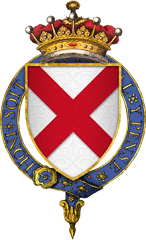


1477 On Jan. 5 Charles III the Bold (b. 1433), last duke of Burgundy is defeated and KIA at the Battle of Nancy by troops of Duke Rene II of Lorraine and Guise (1451-1508) and the Swiss army, after which Spanish courtier Diego de Guevara (1450-1520) throws himself over the dead body; days later his naked animal-eaten body is discovered, with a physician needed to ID him; Louis XI seizes Burgundy and Picardy and prepares to annex the Low Countries, Artois, Luxembourg, and Franche-Comte, while in Feb. Charles III the Bold's daughter Mary of Burgundy (1457-82), heiress to Burgundy, the Netherland provinces, and Luxembourg grants the Great Privilege, restoring the liberties of the provincial estates in order to fight Louis XI; Charles III the Bold's death begins a slide towards division between France and the Hapsburgs, becoming a major factor in most W Euro wars for the next two cents.; in May after HRE Frederick III arranges it, she marries his son Archduke Maximilian of Austria (1459-1519) (later HRE Maximilian I) in order to gain his support against Louis XI, and the Hapsburgs acquire the Netherlands, which doesn't look bad in their asset sheets; the first time a diamond engagement ring is given, starting a fashion?; Diego de Guevara becomes Mary's esquire, continuing after her 1482 death in the service of her son Duke Philip the Handsome, and after his 1506 death becoming councillor-chamberlain to HRE Charles V; Maximilian extends the Order of the Golden Fleece (founded in 1430 by Philip III the Good) to Austria. On Feb. 14 Margery Brews sends a letter to John Paston in Norfolk, England, addressed "To my right wellbelovyd Voluntyne", becoming the world's first known Valentine. On Mar. 25 Irish lord chancellor of Ireland Thomas FitzGerald, 7th Earl of Kildare (b. 1421) dies, and his eldest son Gerald FitzGerald, 8th Earl of Kildare (1456-1513) (AKA Garret the Great Earl) becomes lord deputy of Ireland (until 1494, then 1496-1513), becoming so powerful that he is called "the uncrowned king of Ireland", with the common saying: "Since all Ireland cannot control the Earl of Kildare, then Kildare must control all of Ireland"; after he dies a legend arises that he slumbers in a cave beneath the Currah of Kildare, and awakens every seven years on May Day, riding around the Curragh on his seed; when his horse's shoes are worn down to the thickness of a cat's ear, he will allgedly lead the Irish army to drive the stankin' English out and reign as king for 40 years. On Nov. 18 William Claxton prints the first dated book in English, Dictes & Sayengis of the Phylosophers by Earl Rivers (tr. from the French); he also prints Chaucer's Canterbury Tales for the first time ever. Matthias Corvinus starts a war against HRE Frederick III. The Ottomans expand their control over virtually all of Albania, and take S Montenegro (1477-8), outflanking the Venetians and causing them to cry uncle? In Nov. after returning to Portugal, defeated Afonso V retires for a few days in favor of his son John (Joao) II, then returns and retires again to a a monastery in Sintra, dying on Aug. 28, 1481. Fra Alonzo de Hojeda, prior of the Convent of San Pablo launches a virulent Easter campaign against the city's Marranos (Sp. "swine") (conversos), Jews who feign conversion to Catholicism. The Onin War in Japan (begun 1467) ends after rival warlords die of natural causes, leaving Shogun Yoshimasa in control. The Burgundian Order of the Golden Fleece (founded 1430) becomes a Hapsburg order. The U. of Mainz, whose papal approval was begun by Mainz archbishop Adolf II of Nassau is donated to the city by his successor (since Nov. 1475) Mainz archbishop Diether von Isenburg (1412-82). The U. of Tubingen (Tübingen) is founded in Tubingen, Baden-Wurttemberg, Germany by Renaissance-loving Eberhard I, 1st Duke of Wurttemberg (1445-96), becoming one of the five classical univ. towns in Germany (incl. Freiburg, Gottingen, Heidelberg, and Marburg), and the #1 German univ. for the study of theology and religion. Uppsala U. in Uppsala, Sweden is founded via a bull by Pope Sixtus IV, who grants it the same freedoms and privileges as the U. of Bologna, becoming the oldest univ. in Scandinavia, not counting the Academy of Lund (founded in 1425). Sports: Edward IV bans cricket because it distracts the royal army from archery practice. Architecture: Ming Emperor Xian Zong builds Xi Chang. Nonfiction: Antonio Bettini (1396-1487), Monte Santo di Dio (Florence); how a good Roman Catholic can use science and virtue to become closer to God; printed by Nicolaus Lorentii; first printed work to contain copperplate engravings, by Baccio Baldini, based on designs by Sandro Botticelli. Ludolph the Carthusian, Life of Christ (Cologne); claims to reprint a letter by 1st cent. Judaean govt. Publius Lentulus witnessing to the fact of Jesus Christ, incl. his appearance; a forgery? Art: Sandro Botticelli (1445-1510), La Primavera (1477-8); filled with humanist and pagan ideas, showing Venus celebrating the arrival of spring, a metaphor for the rebirth of Florence under his Medici patrons; elaborates the theme of Arcadia and the underground stream. Michael Pacher begins painting the Altar at St. Wolfgang in Austria (finished 1481). Veit Stoss begins the carved Altar at St. Mary's in Cracow (finished in 1489). Poetry: Blind Harry (1440-92), The Wallace (The Actes and Deidis of the Illustre and Vallyeant Campioun Schir William Wallace); a verse history of Scottish hero Sir William Wallace (1272-1305), which becomes the Scottish nat. epic., the #2 most popular book in Scotland after the Bible; too bad, it's full of inaccuracies; the earliest known copy is made in 1488 by John Ramsay, 1st Lord Bothwell. Births: French queen consort (1491-1514) Anne (Anna) of Brittany (d. 1514) on Jan. 25 in Nantes, Brittany; daughter of Duke Francis II of Brittany (1433-88) and Margaret of Foix (1453-86); maternal granddaughter of Eleanor of Navarre (1425-79). Venetian painter Il Giorgione (Giorgione da Castelfranco) (Giorgio Barbarelli) (d. 1511) in Castelfranco; raised in Venice, where he is apprenticed to Giovanni Bellini; his works are so similar to those of Titian that they get confused - Giorgione was from Venice, Giotto was from Florence? Italian painter Galeazzo Campi (d. 1536) in Cremona; father of Giulio Campi (1502-72), Antonio Campi (-1591) and Vincenzo Campi (1536-91). English diplomat-politician and stud horse Thomas Boleyn, 1st Earl of Wiltshire and Ormonde (d. 1539) in Hever Castle; husband of Elizabeth Howard (1480-1538), daughter of Thomas Howard, 2nd duke of Norfolk (1443-1524); father of Anne Boleyn (1507-36), Mary Boleyn (1499-1543), and George, viscount Rochford (1504-36); maternal grandfather of Elizabeth I. Italian High Renaissance Mannerist painter (sodomite?) Il Sodoma (Giovanni Antonio Bazzi) (d. 1549) in Vercelli, Lombardy; pupil of Leonardo da Vinci from 1498-1500, causing their paintings to later be confused; dresses gaudily, keeps a Noah's Ark of a house, and becomes known as "Il Mattaccio" (the Madcap); marries and separates young, leaving a daughter who marries Bartolomeo Neroni; a sodomite? Italian (Venetian) painter and #1 portraitist Titian (Tiziano Vecellio) (Tiziano Vecelli) (d. 1576) (b/ 1488?) in Pieve di Cadore; #1 painter of the Venetian School; pupil of Gentile and Giovanni Bellini; known for the reddish yellow or auburn (titian) hair in his portraits, as well as rich effects in red, green, yellow, and blue; pioneers atmospheric perspective and impressionism; the #1 landscape painter until Nicolas Poussin (b. 1593); one of the first three Venetian rock stars, along with writer Pietro Aretino and architect Jacopo Sansovino? Deaths: Irish statesman Thomas FitzGerald, 7th earl of Kildare (b. 1421) on Mar. 25. French duke of Burgundy (1467-77) Charles the Bold (b. 1433) on Jan. 5 in Nancy (KIA).







1478 On Feb. 11 after Patrick Graham is excommunicated and deposed, James III's puppet (who used to sew his shirts) William (bringing in the?) Scheves becomes archbishop of St. Andrews. On Feb. 18 after the English Parliament condemns for treason and imprisons Edward IV's brother George Plantagenet, 1st Duke of Clarence (b. 1449) ("false, fleeting, perjur'd Clarence") in the Devereux Tower (part of the Tower of London), he "disappears privately", rumored to having been drowned in a butt (large cask) of malmsey (strong sweet white Madeira, as opposed to claret, which is dry red) wine (blamed by Shakespeare on his scheming brother Richard?); on Feb. 21 Duke Richard of Gloucester gains Clarence's share of Warwick's lands, along with the title of Great Chamberlain; the news of his bro's death causes the grievously ill king's death, according to Shakespeare - so much for Sir John Fortescue? On Apr. 7 John Macdonald, ex-earl of Ros is summoned before the Scottish parliament again on charges of resisting royal authority in the W highlands, but this time it's his pesky bastard son Angus Og of Islay, so Macdonald gets off and is a broken horse now, allowing Earl Colin Campbell of Argyll to become big boss in the Kilted West? The original patsy was a lone knifeman but there is a conspiracy? On Apr. 26 (Easter Sunday) after the Riorios and Pazzis plot against them, Giuliano de' Medici (b. 1453), brother of Lorenzo the Magnificent and co-ruler of Florence is murdered (stabbed 19x) in the Duomo of Santa Maria del Fiore Cathedral in Florence during Mass by Bernardo Bandini and Francesco de' Pazzi (b. 1444), who also attempts to kill Lorenzo, and wounds him, but stabs himself in the thigh as he has Giuliano on the ground; Medici supporters get violent and exact revenge, and the same day Pazzi is thrown naked with a noose around his neck from a window in the Palazzo Vecchio, along with the archbishop, who locks his teeth in his flesh?; Lorenzo then hears that the pope had been behind the plot, and has sent troops to wipe the Medicis out, and travels alone to Naples and buys the troops off, then returns to Florence where he is hailed as "il Magnifico" ("virtuous spender of one's wealth"?), and adopts the illegitimate son of his dead bro', then consolidates his power and almost exterminates the Pazzi family; Medici man Sandro Botticelli paints the execution scene on the wall of the Bargello prison for 40 florins - see Thomas Harris' 1999 novel "Hannibal", Ch. 17? There's no business like show business? At the request of Ferdinand II and Isabella I the Catholics of Spain, Pope Sixtus IV pub. the bull Exigit Sinceras Devotionis Affectus authorizing Christian kings and queens to appoint inquisitors to deal with offenders against the Church, esp. Marranos (Sp. "swine") (swine-eaters?), Christian converts still secretly practicing Judaism; the Spanish Inquisition begins (ends 1834), initially concentrating on conversos, but soon expanding its deadly gaze to anybody who gets in the Church's way (see 1615)? On June 14 Federico I Gonzaga (1444-84), husband of Margaret of Bavaria (daughter of Duke Albert III of Bavaria) becomes marquis of Mantua in Lombardy (until 1484). 4-y.-o. Richard of Shrewsbury, 1st duke of York, son of Edward IV of England is married to 6-y.-o. Anne de Mowbray, 8th Countess of Norfolk (1472-81), who becomes duchess of Norfolk; too bad, she dies in Greenwich, London in 1481, two years before her hubby disappears into the Tower of London with older brother Edward V; luckily, Edward IV has Parliament pass an act stating that should Anne die before Richard, her dukedoms would go to Richard and not to her other relatives. The civil war in Bohemia ends with both Ladislaus II and Matthias Corvinus keeping the title of king. The Turks under Mehmed II siege Kruje for the first 4th time, and capture it after promising safe passage to the defenders, then reneging and killing the men and enslaving the women and children, taking the younger women as wives; having resisted the Ottomans since 1474, Shkodra (Shkoder) in N Albania finally falls to Mehmed II after a heroic struggle, the peace treaty with the Venetians next Jan. 25 permitting the defenders to leave unharmed for real, after which many flee to Italy, Greece, Egypt and other countries, leaging the Turks a free hand to Muslimize Albania. White Sheep Turks (Aq-Qoyunlu) ruler (since 1452) Uzun Hasan dies after defeating the Black Sheep and occupying Iraq, Azerbaijan and W Iran, leaving a kingdom plagued by wars of succession until the Safavids end the dynasty in 1508; his son Ya'qub (d. 1490) becomes ruler of the White Sheep Turks (until Dec. 14, 1490), beginning to fear the growing Safavid order and plot to kills its leader Haydar. Ivan III of Moscow subdues Novgorod, annexing it and acquiring all of N Russia from Lapland to the Urals. The Spanish Christians and the Muslim Granadans agree to a truce - which must mean that the Muslims need to buy time? Italian poet Matteo Maria Boiardo, Conte di Scandiano (1440-94) is appointed gov. of Reggio Emilia by his patron Duke Ercole d'Este. Art: Sandro Botticelli (1445-1510), Portrait of Giuliano de' Medici. Il Perugino (1445-1523), St. Sebastian (Castel Cerqueto, Perugia). Martin Schongauer (1448-91), Jungen Frau. Andrea del Verrocchio (1435-88), Winged Cherubim with Dolphin (scultpure) (Careggi Villa). Leonardo da Vinci (1452-1519) gets his own studio in Florence (until 1482), and is now independent of his master Verrochio; he makes a famous sketch, then in Oct. begins Madonna and Child with Flowers (Benois Madonna), known for her toothless smile, which is lost until 1909, when architect Leon Benois exhibits it in St. Petersburg and wows everybody, causing it to be called the "Benois Madonna". Nonfiction: Luca di Pacioli (1445-1517), Tractatus Mathematicus ad Discipulos Perusinmos; 600-page textbook on merchant artithmetic, dedicated to his students at the U. of Perugia. The first printed book on mathematics, L'Arte dell' Abaco is pub. in Treviso, Italy. Aulus Cornelius Celsus' 1st cent. C.E. book De Medicina is printed in Florence, Italy, spurring research in surgery. Births: English traitor Edward Stafford, 3rd Duke of Buckingham (d. 1521) on Feb. 3 in Breconshire, Wales; eldest son of Henry Stafford, 2nd Duke of Buckingham (1454-83). English "Utopia" humanist statesman-writer (Roman Catholic) Sir (St.) Thomas More (d. 1535) on Feb. 7 in London; educated at Canterbury Hall (Christ Church), Oxford U.; knighted in 1521; beatified on Dec. 29, 1886 by Pope Leo XIII, and canonized on May 19, 1935 by Pope Pius XI; on Oct. 31, 2000 Pope John Paul II declares More the "heavenly Patron of Statesmen and Politicians"; feast day: July 9; likes to wear an itchy-scratchy goat hair shirt. Italian Renaissance humanist poet-playwright-diplomat Gian Giorgio Trissino (d. 1550) on July 8 in Vicenza; inventor of Italian blank verse. Spanish historian Gonzalo Fernandez de Ovieto y Valdes (d. 1557) in Aug. in Madrid. Italian "The Book of the Courtier" Neoplatonist Renaissance writer-diplomat-soldier-courtier Conte Baldassare (Baldesar) Castiglione, Count of Casatico (d. 1529) on Dec. 6 in Casatico (near Mantua), Lombardy; friend of Raphael (1483-1520); initiates the sprezzatura style, where a gentleman dresses elegantly but with intentional nonchalance. Spanish Infante John (Don Juan) of the Asturias (d. 1497); son of Ferdinand II and Isabella I. Spanish Hapbsburg king (1504-6) Philip I (the Handsome) of Castile, Duke of Burgundy (d. 1506) in Bruges, Flanders (Belgium); son of HRE Maximilian I and Mary of Burgundy; husband of Mad Juana, daughter of Ferdinand II and Isabella I; father of HRE Charles V (1500-58) and HRE Ferdinand I (1503-64); founder of the Hapsburg Dynasty in Spain - Buck Rogers comes to Wine Town? Algerian Battle of Lepanto pirate corsair and Ottoman fleet adm. Barbarossa (Redbeard) II Hayreddin (Arab. "best of the religion") Pasha (d. 1546) in Lesbos; Muslim Turkish father Yakup Aga and Christian Greek mother Katerina; has three brothers and two sisters; brother Oruc is called Baba Oruc, causing the Spanish to hear "Barbarossa" and confuse him (real name Hizir) with his red-bearded bro'? English queen's mother Margery Wentworth (d. 1550); wife of Sir John Seymour (1474-1535); mother of Queen Jane Seymour (1508-37) (3rd wife of Henry VIII); grandmother of Edward VI (1537-53). Italian physician-poet Hieronymus Fracastorius (Girolamo Fracastoro) (d. 1553) in Verona; educated at the U. of Padua; coiner of the term "syphilis". Indian poet-saint Surdas (d. 1584) in Braj (near Mathura). Deaths: English Wars of the Roses player George Plantagenet, Duke of Clarence (b. 1449) on Feb. 18 in the Tower of London (drowned in a vat of Malmsey wine?). Florentine co-ruler Guiliano de' Medici (b. 1453) on Apr. 26 in Florence (murdered). French celeb Tristan l'Hermite (b. ?); provost of the marshals of Louis XI's household.

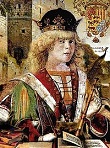


1479 On Jan. 20 John II the Great (b. 1397) dies after having a few years enjoy having his cataracts couched by Jewish physician-astrologer Abiathar Crescas, and his lucky lucky son (by his 2nd wife Juana Enriquez) Ferdinand V of Castile is crowned king Ferdinand II of Aragon, Sicily, Valencia and Majorca, finally uniting the thrones of Castile and Aragon in Spic and Span Spain, giving him the grate powah he needs to finish kicking infidel Muslim Moor butt back to Africa; his son (by Maria of Aragon, daughter of Ferdinand I of Aragon) ? On Jan. 25 Venice signs a peace treaty with the Ottomans, acknowledging defeat in the Third Ottoman-Venetian War (begun 1463), recognizing Ottoman rule in Albania and giving up most of its territories in the Aegean Sea, making it a Muslim lake; its commercial privileges are restored in return for an annual 10K ducat tribute. On Jan. 28 John II of Aragon's daughter Eleanor of Aragon (1426-79) is crowned queen of Navarre (whose crown John II had been withholding from Charles IV and Blanche II since 1441), then dies on Feb. 12, and her grandson Francis Phoebus of Foix becomes Francis I of Navarre (1469-83) (until Jan. 30, 1483), with his mother Magdalena de Valois as regent; Navarre is divided between Aragon and France, with Ferdinand II the Catholic of Castile exercising military protection over it to prevent a French invasion. On Apr. 2 the Treaty (Peace) of Olomouc allows both Vladislav II and Matthias Corvinus of Hungary to use the title of king of Bohemia, with Bohemia going to Vladislav, and Moravia, Silesia, and the two Lusatias going to Corvinus, and Corvinus' lands going to Vladislav at his death upon payment of an indemnity; happy-as-a-crow Corvinus now starts a 2nd war against HRE Frederick III - I lead a very active life, despite being bloated? On Aug. 7 Archduke Maximilian wins a V against Louis XI of France at the Battle of Guinegate, but the Low Countries remain in turmoil. On Sept. 4 after Pope Sixtus IV annuls his marriage with Juana la Beltrana as incestuous, and Louis XI refuses an offer of alliance, Afonso V of Portugal gives up and signs the Treaty (Peace) of Alcacovas (Alcáçovas) (Alcacovas-Toledo), with Alfonso V renouncing the throne of the Catholic monarchs of Castile and Aragon, and the Catholic monarchs renouncing the Portuguese throne, ending the War of the Castilian Succession (begun 1474), becoming a V for the Spanish on land and a V for the Portuguese on the sea, with the Atlantic Ocean and its territories divided into two zones of influence; Spain agrees to allow the Portuguese to monopolize trade along Africa's W coast, and Portugal acknowledges Spain's rights in the Canary Islands; Juana la Beltrana is sent by her aunt Isabella I to a convent, where she spends the rest of her life feeling cheated, signing letters "La Reina" (the Queen). In Sept. painter Gentile Bellini is sent by Venice to Constantinople to work for Sultan Mehmed II, painting his portrait. On Oct. 13 the Battle of Breadfield on the Breadfield Zsibod (Sibot) near the Maros River in Transylvania sees 12K-15K Hungarians and Transylvanians led by Stephen V Bathory, Basarab Laiota cel Batran et al. decisively defeat 10K-20K Ottomans and 1K-2K Wallachians in the biggest battle in Transylvanian history to date, with 3K Christians vs. 10K-15K Muslims KIA. Naples defeats Florence at the Battle of Poggio; after duke Gian Galeazzo Sforza supports Florence, his dark-complected uncle Ludovico Sforza the Moor (il Moro) (1452-1508) usurps control of the duchy of Milan, becoming regent (until 1494); "The perfect type of the despot" (Jakob Burckhardt); an artist, man of letters, economist, and scientific dabbler, he begins the Golden Age of the Renaissance in rich Milan, the self-sufficient (in food) capital of the Lombard Plain, master of the important Alps passes of Brenner, Splugen (Splügen), and St. Gothard, and home of the Certosa (Certósa) (Charterhouse) and Duomo (Cathedral), going on to become the patron of Bramante and Leonardo da Vinci - just in case this is the only world there is? Arras is destroyed, allowing Brussels to succeed it as the center of the European tapestry industry. James III ignores a plea from the Scottish parliament to get off his royal ass in Edinburgh and tour the country to curb local feuding, which is racking Ayrshire (Cunninghams vs. Montgomerys), Strathearn (Drummonds v. Murrays), and NE Scotland (Huntlys vs. Rosses). The U. of Copenhagen is founded by Christian I of Denmark, becoming the 2nd oldest univ. in Scandinavia after Uppsala U. (1477). Nonfiction: Rudolf Agricola (1444-85), De Inventione Dialectica; how he taught a deaf child to communicate orally and in writing in 1470; stimulates the study of dialectic to go with rhetoric, the art of finding "whatever can be said with any degree of probability on any subject"; turns on Erasmus, who gets many of his posth. works printed. Art: Gentile Bellini (1429-1507), Portrait of Mehmed II [1432-81]; Italian artist visits Constantinople and paints a portrait of the sultan, which later ends up in the Nat. Gallery in London. Births: Italian "Mona Lisa" model Lisa del Giocondo (nee Gherardini) (d. 1542) on June 25 in Florence. Italian humanist astronomer-diplomat Celio Calcagnini (d. 1541) on Sept. 17 in Ferrara. Castilian queen Joanna (Juana) the Mad (d. 1555) on Nov. 6 in Toledo; 2nd daughter of Ferdinand II (1452-1516) and Isabella I (1451-1504); mother of HRE Charles V (1500-58). Aztec emperor (1502-20) Montezuma (Moctezuma) II (d. 1520) in Tenochtitlan. Indian Brahmin swami Shri Vallabha Acharya Ji (d. 1531) in Champaran, Chhattisgarh India. Italian painter Giovanni (Dosso) Dossi (d. 1542). Spanish conquistador (of the Mayans) Francisco de Montejo y Alverez (d. 1553) in Salamanca; father of Francisco de Montejo, El Mozo (1502-1565); goes to Cuba in 1514. Jewish chief rabbi Radbaz (David ben Solomon ibn Zimra (d. 1573) in Spain; emigrates to Safed, Palestine at age 13. Deaths: Spanish king of Aragon (1458-79) and Navarre (1425-79) John II the Great (b. 1398) on Jan. 20 in Barcelona. Scottish politician James Hamilton, 1st Lord Hamilton (b. 1415) on Nov. 6. Bavarian duke (1450-79) Ludwig IX the Rich (b. 1450) on Jan. 18 in Landshut. Spanish queen of Navarre (1479) Eleanor of Aragon (b. 1426) on Feb. 12 in Tudela, Navarre. Spanish poet Jorge Manrique (b. 1440); leaves Coplas de la Muerte de Su Padre, an elegy on his father's death, expressing Christian acceptance.

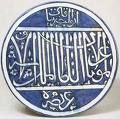






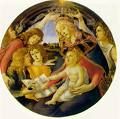

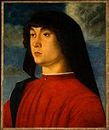
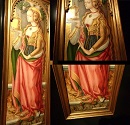
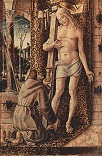

1480 I find that only stupid people are breeding? The Ottomans literally scare the Christians into getting over their fear of falling off the edge of the Earth and discovering America? In May-Aug. the Ottomans siege Rhodes, the last major Aegean island not under their control, but the Knights of St. John fight them off after causing heavy losses; on Aug. 11 after sieging them since July, the Ottomans surprise-attack and sack Otranto in Apulia, S Italy, killing 12K of 22K inhabitants and hauling away 5K in chains, then on Aug. 14 ritually decapitate 800 Christians who refuse to accept Islam in the Valley of the Martyrs in Otranto, sawing archbishop Stephen Pendinelli and garrison cmdr. Count Francesco Largo in half, threatening Italy with conquest, and causing Western navigators to begin turning around, "Seeking the East by Way of the West", i.e., finding a westward passage to the Indies; meanwhile the pope calls for a guess what, a Crusade; on Feb. 28, 2013 Pope Benedict XVI canonizes 800 of the Italian martyrs. In Nov. after grand prince (since 1462) Ivan III the Great (1440-1505) of Moscow tells the Tartar Great Horde Khan Akhmat to stuff it and refuses the customary tribute payment, causing Akhmat to pass through the Lithuanian territories of his ally Casimir IV to the Muscovite border on the Ugra River, Ivan II makes use of artillery to defeat his horseback archers and turn them back, ending Moscow's subservience to the Tartars. The last Norse Greenland colony becomes extinct. James III of Scotland, known for requesting frequent taxation so that he can hoard the money issues a debased copper currency, which becomes known as the "black money"; meanwhile his brother Earl John of Mar criticizes James III, and is forfeited then killed under suspicious circumstances, while his other brother (2nd son of James II and Mary of Gueldres) Alexander Stewart, 1st Duke of Albany (1454-85), who also criticized him flees into exile in France, and plots a comeback, becoming the leader of a planned coup; meanwhile James III forces his elder sister Mary to marry old fart Lord Hamilton, pissing her off, causing his younger sister Margaret to have a love baby with Scottish chancellor William Crichton, 3rd Lord Crichton (-1493) (who maintains cool Crichton Castle in Midlothian S of Edinburgh) to avoid another forced marriage to another old fart, getting exiled to Tain; too bad, Crichton causes his lordship (begun 1443) to become forfeited in 1484. The Maravi Kingdom is founded in the Shir River Valley in Malawi, Africa. Inca emperor #10 (1471-93) Topa Inca Yupanqui and his army make a 10-mo. voyage over the Pacific in a fleet of balsa wood rafts about this time? Egyptian Mamluk Sultan Qaitbay constructs a fort on the site of the Alexandrian Lighthouse, using fallen stone and marble from it. The port of Gijon (Gijón) in NW Spain is rebuilt to handle oceangoing traffic. Prince Henry the Navigator founds a school for navigation in Portugal. Yolande (Iolande) de Bar, Duchess of Lorraine (1428-83) succeeds her father Rene I of Anjou as grandmaster of the Priory of Sion (until 1483), which is expanded to 27 commanderies :). Architecture: Donato Bramante d'Agnolo (Lazzari) (1444-1514), who spent from 1472-77 painting works in Milan and Bergamo devotes himself to architecture, beginning with the Church of Santa Maria Presso di San Satiro in Milan (S of the Duomo) (finished 1488). Rosslyn Chapel S of Edinburgh in Scotland (begun in the 1440s) is finished in this decade by Oliver Sinclair; his grandson Oliver Sinclair III goes on to command the Scottish army at Solway Moss in 1542. Science: Arculanus (1412-84), prof. of medicine in Bologna and Padua describes a method of filling decayed teeth with gold foil. Nonfiction: Cardinal Pierre d'Ailly, Imago Mundi; quotes Roger Bacon's "Opus Maius" (1267), Pt. IV: ("The sea between the end of Spain on the west and the beginning of India on the east is navigable in a very few days if the wind is favorable"), later cited by Columbus in 1498 in a letter to Ferdinand II and Isabella I. Hans Folz (1437-1513), Baderbuchlein; begins reforming the songs of the Meistersingers to incl. worldy subjects. Giovanni Pico della Mirandola (1463-94), Heptaplus: Discourse on the Seven Days of Creation. Art: Gentile Bellini (1427-1507), Sultan Mehmed II. Giovanni Bellini (1430-1516), Portrait of a Young Man in Red. Sandro Botticelli (1445-1510), St. Augustine; Madonna of the Magnificat (1480-1). Piero di Cosimo (1462-1521), Simonetta Vespucci. Carlo Crivelli (1430-95), Mary Magdalene; ends up in the Rijksmuseum in Amsterdam; St. Francis with the Blood of Christ (1480-6). Domenico Ghirlandaio (1449-94), The Last Supper; Old Man With a Young Boy. Martin Schongauer (1448-91), The Temptation of St. Anthony (engraving) (1480-80). Births: Italian Roman Catholic cardinal Girolamo (Hieronymus) (Jerome) Aleandro (Aleander) (d. 1542) on Feb. 13 in Motta (near Venice); first cardinal appointed "in pectore" (close to the breast, i.e., in secret). Italian conspiracy queen and patroness of the arts (duchess of Ferrara) Lucrezia Borgia (d. 1519) on Apr. 18 in Rome; illegitimate daughter of Rodrigo Borgia (Pope Alexander VI) (1431-1503) and Vanozza Catanei (1442-1518); sister of Cesare Borgia (1476-1507). Portuguese explorer-writer Duarte Barbosa (d. 15221) in Lisbon; brother-in-law of Ferdinand Magellan. Portuguese navigator-explorer Ferdinand Magellan (Fernao de Magalhaes) (d. 1521) in Sabrosa, Tras-os-Montes e Alto Douro; studies in the Portuguese royal court as a child, where he learns mapmaking, astronomy, and navigation. Italian painter (gay) (lover of Leonardo da Vinci) Gian Giacomo Caprotti da Oreno (d. 1524) (AKA Andrea Salai and Il Salaino = "Little Unclean One") in Oreno (near Monza), Vimercate; student of Leonardo da Vinci. Italian painter Palma Vecchio (Jacopo Palma) (Jacopo Nigreti) (d. 1528) in Serina (near Bergamo); granduncle of Palma Giovane (1544-1628); known for his golden glow. Spanish explorer Diego de Ordaz (Ordás) (d. 1532) in Castroverde de Campos, Zamora. German painter-printmaker-architect Albrecht Altdorfer (d. 1538) near Regensburg. Italian metallurgist ("Father of the Foundry Industry") Vannoccio (Vannocio) Biringuccio (d. 1539) in Siena. French portrait painter Jean (Janet) Clouet (d. 1541); of Flemish descent; father of painter Francois Clouet (1510-72). Spanish sculptor Damia (Damiŕ) Forment (d. 1540) in Valencia. German magician Johann Georg Faust (John Faustus) (d. 1541); the real Faust? Lithuanian grand hetman (1531-41) Jerzy Radziwill (d. 1541). Turkish Alevi Sufi ashik (minstrel-composer) Pir Sultan Abdal (d. 1550). Italian painter Lorenzo Lotto (d. 1556) in Venice. Italian fairy tale writer Giovanni Francesco "Gianfrancesco" Straparola (d. 1557) in Caravaggio. Franco-Flemish Renaisance singer-composer Benedictus Appenzeller (d. 1559) in S Netherlands. Irish king of Tir Eogain Conn O'Neill, 1st Earl of Tyrone (d. 1559); father of Shane O'Neill (1530-67); grandfather of Hugh O'Neill (1550-1616). French publisher and type designer Claude Garamond (d. 1561). German knight Gotz (Götz) von Berlichingen (d. 1562) in Berlichingen, Wurttemberg. Deaths: French "Good King" of Naples (1438-42) and duke of Anjou (1434-80) Rene I of Anjou (b. 1409) on July 10 in Aix-en-Provence. French painter Jean Fouquet (b. 1416).





1481 On May 3 sultan (since Feb. 3, 1451) Mehmed II the Conqueror (b. 1432) dies suddenly, and on May 22 his son Bayezid (Bajazet) II (the Just) (1447-1512) becomes Ottoman sultan #8 (until Apr. 24, 1512) after his pretender younger brother Cem (Jem) (Zizim) (1459-95) (gov. of Karaman in Konya since Dec. 1474) has grand vizier Karamanli Mehmet Pasha transport Mehmed II's body to Constantinople and let it lie in state for three days in violation of Islamic law so that he can get there first and become sultan, only to see his vizier lynched by the Janissaries after they find out and break into the capital, after which Bayezid II arrives on May 21 and is declared sultan on May 22, but on May 27 Cem captures Inegol with a 4K-man army, then on May 28 defeats an army sent by Bayezid II under new vizier Ayas Pasha and declares himself sultan of Anatolia, with capital at Bursa, proposing to divide the empire and give the Euro side to Bayezid II, pissing him off and causing him to utter the soundbyte: "Between rulers there is no kinship"; on June 20 Cem is defeated near Yenishehir in Bursa opposite Constantinople and flees with his family to Mamluk Cairo, seeking protection from the Knights of St. John in Rhodes, who hand him over to Pope Innocent VIII, who tries to use him as a figurehead for a new papal crusade that fails to materialize, and ends up dying in a prison in Naples where Bayezid II pays them to keep him imprisoned; meanwhile on Sept. 11 the Ottoman forces in the Otranto Strait between Albania and Italy surrender to the Christian Aragonese, leaving the Ottoman Empire in disorder while Bayezid II enters a rebuilding period and tries to free himself of the Janissaries, campaigning against the Venetian possesssions in Morea and gaining control of the whole Peloponnese in 1501, facing rebellions in the east by the pesky Qizilbash and their backer Shah Ismail of Persia. On May 21 Christian I (b. 1426) dies after paying his debts and solidfying his reign, and his son Hans (Johannes) (John) (1455-1513) becomes king of Denmark, followed by Norway in 1483; too bad, Sweden holds out, and regent Sten Sture stays in power (until 1497). In the summer the Venetians invade Florence, and are defeated at the Battle of Cento. On Aug. 28 king (since Sept. 13, 1438) Alfonso V (b. 1432) dies in a monastery in Sintra, and his son Joao (John) II "the Perfect Prince" (1455-95) becomes lucky king #13 of Portugal, going on to reestablish the power of the Portuguese monarchy, reinvigorate the economy, and renew exploration of Africa and the East, also becoming the one to snub Columbus then get smart and work to get Portugal's hands on the dark Christless New World and perfect it? On Dec. 26 the Granadans under Emir Abu Hasan surprise the Castilian garrison of Zahara on a stormy night, and enslave the pop. A Crusader force led by Ferdinand I of Naples allied with Matthias Corvinus of Hungary kicks Turk butt and recaptures Otranto, although it is now kaput and never recovers its importance. The last fort in Hercegovina falls to the Turks. Solothurn NE of Lake Neuchatel joins the Swiss Confederation. Provence passes from the House of Anjou (since 1246) to the French crown. Axayacatl dies, and his younger brother Tizoc (Tizocic) (Tizocicatzin) (-1486) becomes king #7 of Tenochtitlan in Mexico (until 1486). The Galatasaray Lycee in Constantinople opens as a palace school to train young men for Ottoman service. Nonfiction: Herbarium of Apuleius (Rome). Art: Sandro Botticelli (1445-1510), The Temptation of Christ (Sistine Chapel) (1481-2). Leonardo da Vinci begins work on the pen-and-ink altarpiece The Adoration of the Magi for the monastery of San Donato a Scopeto in Florence (his first large painting, which he leaves unfinished in 1482); he writes a letter to Duke Ludovico Sforza the Moor of Milan claiming that he could construct various war machines as well as sculpt in marble, bronze and clay, causing the duke to hire him, and he leaves Florence for Milan (until 1499). Verocchio, Bartholomeo Colleoni (statue) (Venice). The original Frescomania? Sandro Botticelli (1445-1510), Ghirlandaio (1449-94), Signorelli, Perugino and his asst. Pinturicchio (Bernardino di Betti) (1454-1513) begin painting Scriptural Frescoes in the Sistine Chapel in Rome (until 1482), incl. Perugino's Christ Giving the Keys to St. Peter. Births: German knight Franz von Sickingen (d. 1523) on Mar. 2 in Ebernburg (Bad Munster am Stein-Ebernburg) (near Bad Kreuznach). Italian architect-painter Baldassare Tommaso Peruzzi (d. 1536) on Mar. 7 near Siena; father of Giovanni Sallustio Peruzzi (1511-73). German Wittelsbach bishop of Freising (1495-8) Count Ruprecht of the Palatinate (d. 1504) on May 14 in Heidelberg; husband (1499-) of Elisabeth of Bavaria-Landshut (1478-1504), daughter of Duke George the Rich of Bavaria-Landshut; father of Otto Henry (1502-59) and Philip the Contentious (1503-48). Danish-Norwegian (1513-23) and Swedish (1520-21) king Christian II (the Tyrant) (d. 1559) on July 1 at Nyborg Castle; son of John of Denmark and Christina of Saxony. Italian painter Benvenuto (Tisi) (Tisio) da Garofalo (d. 1559) in Garofalo (near Ferrara); pupil of Lorenzo Costa and Dosso Dossi. Spanish Franciscan historian-moralist (court historian to HRE Charles V) Antonio de Guevara (d. 1545) in Treceno, Cantabria; cousin of Diego de Guevara (1450-1520). Deaths: Italian humanist scholar Francesco Filelfo (b. 1398) on July 31 in Milan (plague). Italian painter Sano di Pietro (b. 1406). Gujarat singer Narsi Mehta (b. 1414). Portuguese explorer Afonso Goncalves Baldaia (b. 1415) in Praia da Vitoria, Azores. Italian Vatican librarian Bartolomeo Platina (b. 1421) on Sept. 21 in Rome. Danish-Norwegian-Swedish king Christian I (b. 1426) on May 21 in Copenhagen. Portuguese king (1438-81) Alfonso V (b. 1432) on Aug. 28 in Lisbon. Ottoman sultan #7 (1444-6, 1451-81) Mehmed II the Conqueror (b. 1432) on May 3 in Hunkarcayiri (near Gebze).




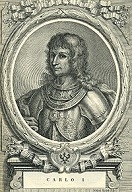




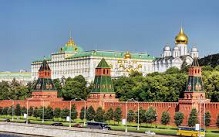
1482 On Jan. 6 the Feast of Fools in Paris is a big day for foundling bellringer Quasimodo, the Hunchback of Notre Dame, archbishop Charles II of Bourbon (1434-88) of Lyons, et al. :) On Feb. 25 Spanish forces under Rodrigo Ponce de Leon, the Marquis of Cadiz gather at Marchena, march to Antequera, cross the Sierra Alzerifa, and seize Granadan Alhama on Feb. 28; Abu Hasan attempts to retake it by siege on Mar. 5-19, then withdraws to Granada; Muslim troops from Ronda raid the Arcos area in an attempt to tempt the marquis out of Alhama; in support of his men at Alhama, King Ferdinand of Aragon marches to Lucena, sends reinforcements into Alhama on Apr. 30, withdraws to Cordoba to organize a major force, and then formally takes over Alhama on May 14. On Mar. 27 Mary of Burgundy (b. 1457) dies after falling off a horse (on her little arras?), and her husband Archduke Maximilian of Austria is forced to accept the Treaty of Arras with Louis XI and the Low Countries, giving Louis XI the duchy of Burgundy, while Maximilian gets a good sized chunk, incl. Brabant, Limburg, and Namur, which eventually (1512) become known as the Circle of Burgundy; Mary's 4-y.-o. son Philip I of Castile (b. 1478) becomes duke of Burgundy, and is held prisoner by the govt. of the city of Ghent, which objects to Maximilian's claim to be regent for him and claims it's only an excuse to claim control of the Low Countries. Ivan III officially renounces the Mongol khanate rule over Russia. Jem tries to set up his own sultanate in Anatolia again, and this time goes into exile in Europe where he is used as a pawn by the Catholic rulers until his death in 1495. In May after relations between James III and Edward IV deteriorate, Duke Alexander of Albany, backed by James III's enemies returns from exile in France, concludes the Treaty of Fotheringhay with Edward IV in June, and leads a revolt against his brother James III, along with James' three half-uncles (sons of Joan Beaufort by her second husband James Stewart of Lorne) Earl John of Atholl, Earl James of Buchanan, and Bishop Andrew of Moray, his elder sister Mary, and his own wife Margaret of Denmark; in July an English army of 20K led by Duke Richard of Gloucester invades Scotland (first time since 1400) to support the revolt, and seizes James III at Lauder, while the Scottish army is dispersed by its leaders Colin Campbell, 1st earl of Argyll and Earl Archibald of Angus after executing some of its members, gaining them the epithets "bell the cat" and "low-born"; Albany at first claims to be king Alexander IV, then settles with the title of lt.-gen. of Scotland, with backing from the queen. In the summer Portuguese navigator Diogo Cao (Diego Cam) (1452-86) becomes the first European to sight and enter the Congo River, discovering Angola (1482-4). On July 1 King Ferdinand of Aragon attacks the Granadan city of Loja; the city is defended by the octogenarian father-in-law of Muhammad XII, Ibrahim Ali al-Attar; Ferdinand returns to Cordoba; Abu Hasan marches on Loja and sweeps the Rio Frio in mid-July. On Sept. 10 Federico III da Montefeltro (b. 1422) dies, and his 10-y.-o. son Guidobaldo I da Montefeltro (1472-1508) becomes duke of Urbino in Italy (until 1508), turning his court into a center of art and lit., home of historian Polydore Vergil (1470-1557), Baldassare Castiglione et al. The Spanish endgame in Granada begins (ends 1492)? Moorish Sultan Muhammad XI (d. 1538) (AKA Boabdil by the Spanish, a corruption of the name Abu-Abdullah) (AKA El Chico or "the Little" by the Moors) seizes the throne of Granada from his father Muley Abu'l Hassan, and plunges Granada into civil war at the time the Christians of Castile and Aragon are beginning their attack on the kingdom. Girolamo Savonarola (1452-98) starts his preaching work against the pagan (Platonic, not Aristotelian - that was Milan) life of the Renaissance at the court of the Medicis in Florence, trying to "keep the Devil off his shoulder"; decadent Lorenzo de' Medici becomes his focus of all that is sinful, and he succeeds in splitting Florence down the middle? Matthias Corvinus of Hungary begins a 3rd War Against HRE Frederick III. Muhammad III (b. 1454) dies at age 28 of alcoholism and remorse after killing his best minister Mahmud Gavan, builder of the quadrangular College of Bihar; Muhammad's incompetent son Mahmud (-1518) becomes ruler of Bidar in Deccan, India, becoming the prisoner of his minister Kasim Barid. Duke William III (younger brother of Elector Frederick II) dies, and Saxony annexes Thuringia. After childless Queen Charlotte surrenders her rights to her nearest legitimate heir Charles I (the Warrior) (1468-90), son of Duke Amadeus IX of Savoy and Yolanda of Valois, daughter of Charles VII of France, he becomes duke of Savoy (until Mar. 13, 1490), although the Repub. of Venice holds it under protest of the House of Savoy; in 1485-90 he becomes titular king of Cyprus, Jerusalem, and Armenia. The town of Accra ("ants") on the N coast of the Gold Coast (Gulf of Guinea) is founded by the Portuguese as a fort and trading post. Berwick-upon-Tweed, which for cents. was considered the E end of the boundary between England and Scotland and part of neither (a "county of itself") is finally claimed decisively by the English. Swiss Dominican scholar Felix Fabri (1441-1502) visits Jerusalem, describing it as "a collection of all manner of abominations", incl. Saracens, Greeks, Syrians, Jacobites, Abyssianians, Nestorians, Armenians, Gregorians, Maronites, Turcomans, Bedouins, Assassins, a sect (Druzes?), Mamluks, and "the most accursed of all", Jews, whom the Muslims treat like merde, along with Latin Christians, who "long with all their hearts for Christian princes to come and subject all the country to the authority of the Church of Rome"; when/if they make it to the Holy Sepulchure the Christians go apeshit, making "such bitter heartfelt groans, such sweet wailings, and such deep sighs, such sorrow, such sobs from the inmost breast, such peace and gladsome solace" that he gags, finding the pilgrimage around the holy sites, with mandatory kneeling and prostration a drag, with the soundbyte: "To struggle after mental abstraction while boldly walking from place to place is exceedingly toilsome", also questioning the historicity of the Tomb of David and other sites. Leonardo da Vinci moves to the Sforza court in Milan, where he stays for 18 years, playing his lyre for the duke while compiling his Notebooks (finished 1510); the duke commissions him to make an equine statue that will be the largest in the world; a clay cast is made over the next 16 years but the bronze is appropriated for cannons and the clay cast destroyed when the duke's castle falls to French invaders. Florentine painter Cosmo di Lorenzo Filippi Rosselli (1439-1507) and his boiled-egg-loving pupil Piero di Cosimo (1462-1521) go to Rome and begin painting frescoes in the Vatican's Sistine Chapel; later Cosimo returns to Florence and develops a rep for originality. Architecture: Elmina Castle (originally Castelo de Sao Jorge da Mina) (St. George of the Mine Castle) in Ghana, Africa is built by Portuguese traders, going on to become the #1 slave-trading post in the world. The Ginkaku Temple (Silver Pavilion) in Kyoto, Japan is built; the shogun who builds it dies before its completion, so there really is no silver? The Moscow Kremlin (Russ. "fortress inside a city") in Moscow, Russia is begun (finished 1495). Nonfiction: The earliest printed Latin ed. of Euclid appears in Venice. Hyginus, Poeticon Astrononomicon de Mundi et Sphaera (Venice). Ptolemy's Map of the World is pub. in Ulm. The Poeticon Astronomicon, a map of the constellations is pub. in Venice. An Italian ed. of John Peckham's Perspectiva Communis is pub., influencing Leonardo da Vinci to study Greek geometry in an attempt to improve his theory of lenses and the eye incl. the camera obscura. Art: Sandro Botticelli (1445-1510), Adoration of the Magi (Sistine Chapel). Births: German Protestant theologian Johannes Oecolampadius (Oekolampad) (Huessgen) (Hussgen) (Hausschein) (d. 1531) in Weinsberg. Hungarian Roman Catholic cardinal-statesman George (Gyorgi) Martinuzzi (AKA Frater Georgius) (d. 1551) in Kamicac, Dalmatia; real name is George Utjesenovich, but he changes it to his Venetian-born mother's name; educated in the Pauline Monastery of St. Laurentius near Ofen. Deaths: Italian cartographer Paolo Toscanelli (b. 1397) on May 15; his mistranslated Muslim maps showing Asia 3K mi. W of Europe get Christopher Columbus started. Italian sculptor Luca della Robbia (b. 1399) in Florence. Italian duke Federico III da Montefeltro (b. 1422) on Sept. 10 in Ferrara. English queen consort Margaret of Anjou (b. 1429) on Aug. 25 in Anjou, France; bured in Anjou. Flemish painter Hugo van der Goes (b. 1440). French Renaissance supermodel Mary of Burgundy (b. 1457) on Mar. 27.







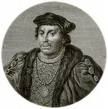

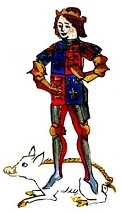

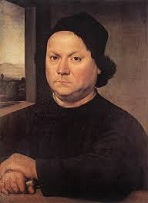
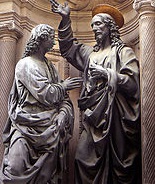

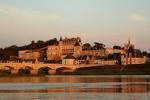

1483 On Mar. 19 after a fast-moving Castilian force under Alonso de Cardenas, master of Santiago and Don Pedro Henriquez, marquis of Cadiz raid the mountainous sierra of Axarquia, Granadan horsemen from Malaga under Abd-Allah al-Zagal (the future Muhammad XIII) ambush the Castilian rear guard, after which the Battle of Axarquia sees elements of the Castilian main body under the marquis of Cadiz attempt to rescue them, losing 800 KIA and 1.6K captured, becoming the last Muslim V in Spain; on Apr. 8 King Ferdinand II ravages the area around Illora, then Tajar on Apr. 14, and resupplies the Alhama garrison on Apr. 16; meanwhile 10K Granadans under Muhammad XI (Boabdil) siege Lucena, after which a 1.5K-man relief force under the count of Cabra marches from Baena and surprises the Granadan camp on Apr. 20, and the Granadan horses are Tolkiened (like the Nazgul in "Fellowship of the Ring") when they reach the rain-swollen river Xenil, and 5K Granadans are killed or captured; Ibrahim Ali al-Attar, Muhammad's father-in-law is killed on Apr. 21; Boabdil becomes the first king of Granada to be captured by the Christians; he is released on condition that he hold Granada as a tributary kingdom under Ferdinand II. A bush in the hand is better than a bird in the cradle? On Apr. 9 after Maximilian of Austria accepts the acquisition of Burgundy by France, and ailing French King Louis XI (b. 1423) decides that 3-y.-o. Margaret of Austria (1480-1530), daughter of Maximilian I and Mary of Burgundy would be a better wife for the dauphin than 17-y.-o. Elizabeth of York (1466-1503), eldest daughter of Edward IV and Elizabeth Woodville, to whom he was previously engaged, because she brings as dowry Franche-Comte and Artois, pissing him off to see his daughter jilted, causing him to declare war on France, English king (since Mar. 4, 1461) Edward IV (b. 1442) dies suddenly a few days short of his 41st birthday (Apr. 28), leaving behind two sons, Edward V (b. 1470) and Duke Richard of York (b. 1473), and five daughters; on Apr. 9 12-y.-o. Edward V (1470-83) is declared the 37th monarch of England (until June 25), but before the Woodville clan (who has him in their care) can get him crowned, Edward IV's brother Duke Richard of Gloucester, who had been named protector by the deceased king seizes him at Stony Stratford on Watling St. near Northampton on Apr. 30, and imprisons him with his guardian (maternal uncle) Anthony Woodville, 2nd Earl Rivers (1442-83) in the Tower of London, forcing the latter to acknowledge him as protector, with Edward's coronation postponed until June 22; on June 10 after Edward IV's loyal soldier (baron since 1470) John Howard, 1st Duke of Norfolk (1425-85) and his only son Thomas Howard, 2nd Duke of Norfolk (1443-1524) flop and supports Duke Richard, he leads his troops to London, and on June 17 young Richard is taken from sanctuary in Westminster Abbey to join his brother in the Tower, with survivor Canterbury archbishop Thomas Bouchier talking mommy into it; on June 25 Gloucester get his father's marriage to Elizabeth Woodville annulled on the grounds that Edward IV had been betrothed to the daughter of the earl of Shrewsbury, and Edward V declared illegitimate and barred from the throne; on June 25 pesky Earl Rivers is beheaded at Pontefract; Edward V becomes the 2nd English monarch never to be crowned (1st Matilda) (next Jane, Edward VIII), and the shortest-lived male English monarch; on June 26 after ' Duke Richard packs Parliament with his men, he gets them to acknowledge him as king, and on July 6 he is crowned as (ever-misunderstood?) Richard III (1452-85) (Britain's 38th monarch) (until Aug. 22, 1485) at Westminster Abbey with Parliament's blessing (first time since 1066 that England has three kings in the same year - next 1936); Richard III creates Sir John Howard as the 1st duke of Norfolk and earl marshal of England, and his son Sir Thomas Howard as earl of Surrey; Earl Marshal becomes #8 of the Great Officers of State, with the Lord High Constable above and only the Lord High Admiral beneath, both earl marshal and high constable functioning as officers of the king's horses and stables until 1673, when the earl marshal becomes head of the College of Arms - is Howard a coward, or is Howard no coward? In June after taking advantage of the death of Edward IV, James III of Scotland gets back in power, getting his brother Duke Alexander of Albany forfeited by parliament in July, which only causes him to plot another comeback. The handicapped now have one of their own on the throne, but too bad? In the summer Prince Edward V and his brother Richard, duke of York die under mysterious circumstances in the Bloody Tower of London (smothered by soldiers with a pillow according to the Tudor theory, or killed by Richmond instead of Gloucester according to the York theory); in 1647 two boy skeletons, ages 12-13 and 10 are unearthed in the Tower); on Sept. 8 Edward Plantagenet of Middleham (1473-84), son of Richard III and Anne is created prince of Wales in York Minster; the murder of royal brats could cause Yorkists and Lancastrians alike to turn on the hunchbacked cripple, so it is kept secret?; nevertheless, in Oct. Henry Stafford, 2nd Duke of Buckingham (b. 1455), richest landowner in England shocks Richard III by rebelling against him, with a plot conceived by bishop of Ely (since 1479) (archbishop of Canterbury since Oct. 6, 1486) John Morton (1420-1500), intending to place Henry Tudor, 2nd Earl of Richmond (1457-1509), nearest male rep. of the Lancastrian line (an illegitimate grandson of Edward III, excluded from the succession, currently in exile in Brittany) on the throne; too bad, there is good news for Richard when Buckingham's army is prevented from crossing the Wye and Severn Rivers by floods on Oct. 15 and disbands, after which his ships are scattered by high winds, and he is betrayed by a servant, captured and executed on Nov. 2 in Salisbury near the Bull's Head Inn; Richard III goes to Exeter, causing Richmond to flee to France on Nov. 8; on Dec. 25 he promises to marry Elizabeth of York, heiress to the throne (eldest daughter of Edward IV, sister of the murdered princes, and Richard's niece) and unite the two houses of England if he gains the throne, which proves to be the winning move - for Doom, Rated R? On Aug. 3 Louis XI the Spider (b. 1423) dies, and on Aug. 30 his only surviving son ("the Fly"?) Charles VIII (the Affable) (1470-98) (a teenie) becomes Valois king #7 of France (until Apr. 7, 1498) under the regency of his elder sister Anne de Beaujeu (1461-1522) ("the last insane woman in France") and her hubby, future duke Peter II of Bourbon (1438-1503) (until 1492); Amboise in WC France on the Loire River 14 mi. E of Tours becomes the site of the royal residence (until 1560), with Chateau d'Amboise becoming the place to be; Clos Luce (Lucé) Manor is later the residence of Leonardo da Vinci (where he dies). On Aug. 9 the first Mass is celebrated by Pope Sixtus IV in the Sistine Chapel (named after him) in the Apostolic Palace in Rome. In early Sept. a large force of men from Malaga and Ronda (Al-Zagal) raid Ubera; the infantry are left to hold the pass homeward, and a cavalry ambush is stationed on Lopera River; the remaining cavalry head for Ubera but are driven off by a Christian force; the Christians attack the Moorish infantry, are ambushed, but defeat both Muslim threats by Sept. 17; in Oct. the Casilians under Rodrigo Ponce de Leon, duke of Cadiz take Zahara de la Sierra. The Borgs, er, Ottomans complete the absorption of Herzegovina, and it, along with Bosnia become Turkish provinces for the next 4 cents. Mahmud I of Gujarat conquers Champanir (near Baroda) this year and next; 700 Hindu Rajputs choose ritual death (jauhar) to Islam; his conquering of Girnar and Champanir causes Mahmud to be called Begharha (Two Forts); he goes on to build the Great Mosque of Champanir, the Sarkhej Palace, and the Adalaj Step Well. The Barid Shahi Dynasty is founded in Bidar in SW India (ends 1619). The Russians begin to explore the lovely "Sleeping Land" of Siberia. King John II of Portugal refuses to finance Columbus' voyage, causing him to go through denial, guilt, and acceptance, then resolve to seek financing down the road in Ferdinandland Spain. The royal Heralds' College (College of Arms) in England is appointed by Edward IV to supervise armorial bearings. Sandro Botticelli (Filipepi) (1445-1510) (whose patron Georges Antoine Vespucci is tutor to her son Rene de Bar, duke of Lorraine) succeeds Iolande de Bar as grandmaster of the Priory of Sion (until 1510) :). Architecture: Dante's Tomb, for Dante Alighieri (d. 1321) in Ravenna is completed. Inventions: Leonardo da Vinci invents the Parachute - works on both flat and round worlds, and might be useful if the edge of the Earth is reached? Science: Theodore of Baza trans. Theophrastus' Historia Plantarum into Latin, which establishes the first rudiments of plant nomenclature and describes the fertilization of the date palm and caprification of the fig. Art: Filippino Lippi (1457-1504), Saints Benedict and Apollonia (panel). Andrea del Verrocchio (1435-88), Christ and Doubting Thomas (1467-83) (statue) (Orsanmichele, Florence). Leonardo da Vinci begins painting the religiously shocking Virgin (Madonna) of the Rocks (So Dark the Con of Man?) (finished 1486) (showing infant John blessing infant Jesus, who submits to his authority, while Mary and Uriel seem to be beheading John?), and a 2nd more PC version, commissioned by the Confraternity of the Immaculate Conception as a centerpiece of an altar triptych in the Church of San Francesco in Milan; his earliest major work to survive to modern times? Births: Italian Renaissance artist Ridolfo Ghirlandaio (Ghirlandajo) (d. 1561) on Feb. 14 in Florence; son of Domenico Ghirlandaio (1449-94). Italian "The History of Italy" Renaissance statesman-historian Francesco Guicciardini (d. 1540) on Mar. 6 in Florence; friend of Niccolo Machiavelli. Italian "Prince of Painters" Raphael Santi (Raffaello Sanzio da Urbino) (d. 1520) on Apr. 6 (Good Friday) (Mar. 28?) in Urbino; son of artist Giovanni Santi; his mother dies when he is 9, and his father when he is 11, and he is raised by various uncles; relative of Donato Bramante (1444-1514). German Roman Catholic monk turned Protestant Reformation founder Martin Luther (Luder) (d. 1546) on Nov. 10 [Scorpio] in Eisleben, Thuringia. Indian Mogul (Mughal (Mogul) emperor #1 (1526-30) Babar (Babur) (Zahir ud-din Muhammad Babur) (Baber) ("Tiger") ("Beaver"?) (Zahir ud-Din Muhammad) (d. 1530) on Feb. 23 (Feb. 14 Old Style) in Andijan, Farghana Valley; claims descent from Genghis Khan. Italian painter Dosso Dossi (d. 1542). Italian physician-poet-astronomer Girolamo Fracastoro (d. 1553); coins the term "syphilis"; as an infant in his mother's arms she is struck by lightning and dies, but he is unhurt - the destructive one-stage syph cure? English bishop of Winchester (1531-51) and lord chancellor (1553-5) Stephen Gardiner (d. 1555) in Bury St. Edmunds; educated at Trinity Hall, Cambridge U. French composer Jachet da Mantua (Jaquet da Mantua) (Jachet de Mantoue) (d. 1559) in Vitre, France. English longevity champ Thomas "Old Tom" Parr (d. 1635) in Winington, Alderbury, Shropshire. Deaths: French king (1461-83) Louis XI the Spider (b. 1423) on Aug. 3. French noblewoman Iolande de Bar (b. 1428). Italian explorer Alvise Cadamosto (b. 1432) on July 16 in Venice. English king #37 (1461-83, except 1470-1) Edward IV (b. 1442) on Apr. 9. English Lancastrian traitor Henry Stafford, 2nd duke of Buckingham (b. 1455) on Nov. 2 in Salisbury (executed).


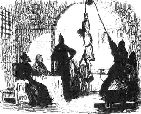

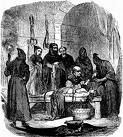


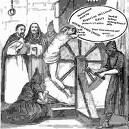
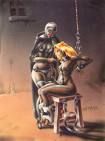
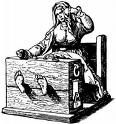




1484 There is a severe plague in Milan this year and next. On Jan. 23 Richard III holds his only Parliament. In the spring the Spanish army under King Ferdinand assembles at Antequera, marches to Alora, raids Coin, Cazabonela, Almjia, Cartama, Pupiana, Alhendrin and the Vega of Malaga before returning to Antequera; on June 10 the Spanish capture Alora; the Spanish raid Vega of Granada in Sept.; some Spanish troops remain to support Boabdil of Granada; on Sept. 20 Spanish troops capture Senetil. On Apr. 9 Richard III's son and heir apparent Edward of Middleham, Prince of Wales (b. 1473) dies suddenly, leaving his daddy without an heir, opening the way for Henry Tudor. On July 5 Richard III's wife Anne Neville grants lands to Queen's College in Cambridge. On July 6 Portuguese navigator Diego Cam discovers and explores the mouth of the Congo River; later Nzinga Myemba, king of Congo (who later takes the name Dom Alfonso) invites the Portuguese to Christianize and Europeanize his kingdom. On July 14 Federico I Gonzaga (b. 1444) dies, and his short, pop-eyed, snub-nosed (but fine soldier) son Francesco II (IV) Gonzaga (1466-1519) becomes marquis of Mantua (until Mar. 29, 1519). On July 22 a 500-man English force led by Duke Alexander of Albany and exiled James, 9th earl of Douglas is defeated by the Scottish royalist army in the Battle of Lochmaben Fair in SW Scotland; Douglas is captured, and Albany flees back to England to plot yet another comeback; meanwhile James III gets a draconian Treasons Act passed. Justice for victims begins with Innocent VIII? Bad time to be a natural redhead? On Aug. 12 Pope (since 1471) Sixtus IV (b. 1414) dies after issuing a bull allowing local bishops to give the bodies of executed criminals and unidentified corpses to physicians and artists for dissection, allowing Vesalius et al. to advance the science of anatomy, and on Aug. 29 Giovanni Battista Cibo (Cybo) is elected Pope (#213) Innocent VIII (1432-92), issuing a fruitless call for yet another Crusade against the Ottomans; the Spanish Inquisition (established Nov. 1, 1478) gets off to a roaring start under joint church-state direction after never-doubting Tomas (Tomás) de Torquemada (1420-98) (the original Punisher?), prior of a Dominican monastery in Segovia persuades Ferdinand II and Isabella I to get Pope Innocent VIII to appoint the Holy Office of the Inquisition, with himself as grand inquisitor for Castile and Aragon in 1487, with the Mission: Imposible of rooting out heresy among converted Jews, where his wanton torqued-up mad (sexually-gratifying?) (the Catholic teaching on sexuality hits the fan?) torture of his 2K victims by 1498 is later uncovered (3 cents. late) by the Spanish Inquisition's gen. secy. (1789-) Juan Antonio Llorente (1756-1823) and Spanish Jesuit historian Juan de Mariana (1536-1624) from an examination of the archives, and spawns tons of gory horror lit.; unlike the original Rome-based Catholic Inquisition (est. 1231), the Spanish Inquisitors are appointed by the sovereigns, and are free of responsibility to the Church, giving them a 007 license to build and operate fun B&D dens, and they end up executing up to 30K during the next 3.5 cents. (2 per week avg.), incl. whole families and towns for offenses such as heresy, freethinking, seduction, smuggling, impersonation, and usury, freely torturing witnesses as well as defendants - zoom zoom zoom? On Sept. 14 Richard III of England concludes a 3-year truce with Scotland. On Sept. 15 Spanish Inquisitor (since 1483) Pedro de Arbues (Arbués) (b. 1441) (known for forcibly converting Jews) is assaulted while praying in the cathedral in Saragossa while wearing a helmet and chain mail; after he dies on Sept. 17, his assassination is blamed on the Jews, causing nine to be executed, two to commit suicide, 13 to be burned at the stake, and four more to be punished for complicity, after which he ends up canonized as a saint by Pope Pius IX in 1867 with the soundbyte "The divine wisdom has arranged that in these sad days, when Jews help the enemies of the Church with their books and money, this decree of sanctity has been brought to fulfillment"; meanwhile Tomas de Torquemada's little ole Inquisition is pumped up, and on Dec. 5 new Pope Innocent VIII issues the bull Summis Desiderantes against witchcraft and sorcery, and orders the Inquisition, led by German theology profs. Heinrich Kramer (1430-1505) and Jacob Sprenger (1436-94) to begin hunting heretics and witches in Germany. In Nov. Charles VIII of France agrees to support the claim of Henry Tudor, earl of Richmond to the British throne and grants funds for his army; a rebellion against Charles VIII is joined by Francis II, duke of Brittany. The Ottomans capture the strategic Moldovan Black Sea ports of Kilia (Chilia) and Akkerman (Cetatea Alba) from Stephen III the Great of Moldova, incorporating the area under the name Budjak ("corner", "triangle"), and expanding up between the Prut River to the W, Danube River, and Black Sea to the S, and Dniester River to the N and E, giving them mastery of the Black Sea as well as control of the trade, and making Moldavia a landlocked principality; the Turkish triangle becomes known as Bessarabia after the Basarab dynasty of Wallachia; Poland and Lithuania become vulnerable to Tartar attacks. Cetinje, near Mt. Lovcen (Black Mountain, from which Montenegro gets its name) becomes the Orthodox Serb capital of mountainous Montenegro under Prince Ivo the Black, which continues to fend off attacks by Muslim Turks. Ottoman-free Otranto passes to the Venetians. Zakynthos Island, 3rd largest of the Ionian Islands (named after the son of legendary Arcadian chief Dardanus) is occupied by the Venetians (until 1797), who nickname it "the Flower of the Levant". Richard III reforms law, trade, and tax collection, and stinks himself up by executing "a poore gentleman called Collingborne for making a small rime of three of his councellors, Lord Louell, Sir Richard Ratcliffe and Sir William Catesbi: The Cat, the Rat, and Louell our dog, Rule all England under an hog. Meaning by the hog, the wild boare, which was the Kings cognisance [coat of arms]." (Holinshed Chronicles III.746, 1586). Joao II of Portugal appoints a commission of mathematicians to produce tables of latitude for seamen. Austria forms its first cuirassier units (mounted cavalry with cuirass breastplate armor and firearms). The first sugar mill begins operation in Gran Canaria, Canary Islands. Nonfiction: William Caxton (1422-92) (tr.), Aesop's Fables (Mar. 26). Joannes de Tinctoris (1436-1511), De Inventione et Usu Musicae. Art: Albrecht Durer (1471-1528), Self-Portrait. Andrea Mantegna (1431-1506), The Triumphs of Caesar (1484-92) (Mantua); the fullest expression of Italian Renaissance art? Pinturicchio of Perugia begins painting Frescoes in the Chapels of Santa Maria del Popolo in Rome (until 1492). Leonardo da Vinci (1452-1519), Cecilia Gallerani; mistress of his patron Lodovico Sforza; she cradles his heraldic figure the ermine as a symbol of her virtue? Births: Swiss humanist Protestant REformation leader Ulrich (Huldrych) (Huldreich) Zwingli (d. 1531) on Jan. 1 in Wildaus, St. Gallen; his doctrine is that the body of Christ doesn't do a Svengali (Zwingli?) act in the Eucharist but that the ceremony is merely commemorative. German Protestant leader George Spalatin (Georg Burkhardt) (d. 1545) on Jan. 17 in Spalt (near Nuremberg); known for translating the works of Martin Luther. German Hohenzollern prince-elector #5 Brandenburg (1499-1535) (Roman Catholic) Joachim I Nestor (d. 1535) on Feb. 21 in Colln; eldest son of John II Cicero (1455-99); brother of Archbishop Albert; father of Joachim II Hector (1505-71). German Protestant margrave of Brandenburg-Ansbach (1536-43) George Hohenzollern (the Pious) (d. 1543) on Mar. 4 in Ansbach; son of Frederick I the Elder (1460-1536) and Sophie Jagiello (daughter of Casimir IV of Poland); brother of Margrave Casimir of Bayreuth (1481-1527) and Duke Albert of Prussia (1490-1568). Italian architect Antonio da Sangallo the Younger (Cordiani) (d. 1536) on Apr. 12 in Florence; nephew of Giuliano da Sangallo (1443-1516). Italian physician and classical scholar (Aristotle expert) Julius Caesar Scaliger (d. 1558) on Apr. 23 in Rocca di Riva, Sermione; father of Joseph Justus Scaliger (1540-1609); soldier for his kinsman HRE Maximilian I from 1496-1514, then studies medicine in Bologne and eventually moves to Agen, France where he becomes the most learned man of his time, until his own son bests him; the scholarly Scaliger family has a cool castle in Sermione (Sirmio) in N Italy at the S end of Lago Di Garda, Italy's largest lake. Spanish Dominican bishop missionary-historian and crusader for social justice ("Apostle of the Indians") Bartolome (Bartolomé) de Las Casas (d. 1566) on Aug. 24 in Seville; emigrates to Hispanola in 1502. Swiss humanist reformer Joachim Vadian (von Watt) (d. 1551) on Nov. 29 in St. Gallen; friend of Huldrych Zwingli. Portuguese (Spanish) explorer Diego Garcia de Moguer (d. 1544) (b. 1496?) in Moguer, Spain (Lisbon, Portugal?). Danish peasant rebellion leader Capt. Klemen Anderson "Skipper" Clement (d. 1536) in Vendysyssel, North Jutland. English soldier Charles Brandon, 1st Duke of Suffolk (d. 1545); son of Sir William Brandon (1426-85); husband of Mary Rose Tudor (1496-1533) (sister of Henry VIII). German "Trinity and Mystic Pieta" painter Hans Baldung Grien (Grün) ("green") (d. 1545) in Schwabisch Gmund. Icelandic Roman Catholic bishop (last) Jon Arason (d. 1550) in Gryta. Deaths: Ottoman historian Ashikpashazade (b. 1400); leaves Tevarih-i Al-i Osman (Histories of the House of Osman) - a long string of #1 hits on the Muslim pop charts? Scottish Rosslyn Chapel builder William Sinclair, 1st earl of Caithness (b. 1410). Italian anatomist Arculanus (b. 1412). Italian pope (1471-84) Sixtus IV (b. 1414) on Aug. 12 in Rome. Italian sculptor Mino da Fiesole (b. 1429) on July 11. Florentine poet Luigi Pulci (b. 1432) on Nov. 11 in Padua; leaves the epic poem Morgante Maggiore, about a giant who is converted to Christianity by the knight Orlando. Spanish inquisitor St. Pedro de Arbues (b. 1441) on Sept. 17 in Saragossa (assassinated). Italian marquis of Mantua (1478-84) Federico I Gonzaga (b. 1444) on July 14 in Mantua. Polish-Lithuanian prince St. Casimor Jagiellon (b. 1458) on Mar. 4 in Hrodna, Belarus (TB); canonized in 1522. English prince of Wales (1483-4) Edward Plantagenet of Middleham (b. 1473) on Apr. 9 (Mar. 31?); buried in the parish church of Sheriff Hutton, becoming the first prince of Wales buried in a parish church (until ?).


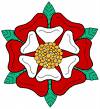
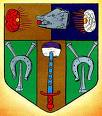








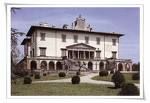
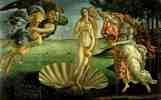
1485 Early in the year Al-Zagal drives Muhammad XII from Almeria, and he flees to King Ferdinand in Cordoba; on Apr. 27 Ferdinand takes Coin, followed on Apr. 28 by Cartama; meanwhile the garrison of Ronda raids Medina Sidonia but returns to find its city sieged by King Ferdinand in early May; Abu Hasan of Granada dies, and Al-Zagal becomes emir in late May, defeating a Christian foraging party from Alhama on his way to Granada; three groups of Spanish troops march toward Moclin in late Aug., and Al-Zagal ambushes and defeats the 1st group, which is rescued by the 2nd group in early Sept.; Al-Zagal enters Moclin, after which the 3rd group under Ferdinand joins the other two and they take the castles of Cimbil and Albahar on Sept. 23; the Spanish of Alhama take the castle of Zalea in Sept. It's handsome Richmond vs. ugly hunchback cripple Richard, kicking his butt and getting the babe? Sounds like a setup? On Mar. 16 Richard III's queen Anne Neville (b. 1456) one year after the death of their only son Edward (poisoned by Richard III so that he can scandalously marry his niece Elizabeth of York, daughter of the late Edward IV before Henry Tudor can get her?), and Richard III names his nephew John de la Pole, 1st Earl of Lincoln (1462-87) as his heir; meanwhile Henry Tudor, earl of Richmond, who had been waiting in the wings in refuge in Brittany for many years, secures troops and money from Charles VIII of France and duke Francis II of Brittany (only 400 of his 2K troops are English), and sails from Harfleur on July 31-Aug. 1 with Edward Courtenay and Edward Woodville, then reaches Mill Bay (Nanjizal) (near Land's End Walking, Cornwall) on Aug. 2, and lands at Milford Haven in Pembrokshire, SW Wale) on Aug. 7 (evening), reciting Psalm 26:1 ("Judge me Lord") and kissing the sand, the news causing widespread defections among Richard's supporters, incl. the Stanley family; after Sir William Stanley (1435-95) allows him passage across N Wales, and Sir Gilbert Talbot of Grafton (1452-1518) and 500 of Lord Shrewsbury's retainers from Shropshire join with him, and he gathers his forces at Lichfield and threatens to cut Richard III off from London, on Aug. 17 he marches to Tamworth, where he is joined by John Savage and his Welsh levies, staying overnight at the Three Tuns in Tamworth; on Aug. 20 he joins up with Lord Stanley and his brother William Stanley in Atherstone, and after being guided by John Hardwick stays overnight on Aug. 21-22 at White Moors on the Tweed River; meanwhile Richard III, who dispatched Francis Lovell, 1st Viscount Lovell (1456-89) and his fleet to guard the English Channel, and left his HQ at Nottingham Castle to muster his army on Aug. 16 at the Nottingham marketplace, is greeted by the pop. of Leicester on Aug. 17, stays overnight at the Blue Boar, then reaches Elmesthorpe on Aug. 18, followed by Bosworth on Aug. 22, where he declares "I will not budge a foot; I will die king of England." In Mar. Vladislav II of Bohemia loses his power to his nobles in the Kutna Hora Pact. In the spring Duke Alexander Stewart of Albany (b. 1454) leads another small English force into Scotland, is captured and imprisoned in Edinburgh Castle, then escapes to France, where he is killed in a tournament in Paris with the Duke of Orleans by a splinter from his lance on Aug. 7. On June 1 Matthew Corvinus of Hungary captures Vienna from HRE Frederick III, and makes it his capital. On Aug. 5-7 the first outbreak of English sweating sickness (English sweate) in England begins; really hantavirus? On Aug. 22 after Sir Simon Digby (-1519) of Coleshill deserts Richard III and gives Henry Tudor details of his position, the Wars of the Roses (begun 1455) between the White Rose (Rosa Alba) of York and the Red Rose (Apothecary's Rose) (Old Red Damask) (Rose of Provins) of Lancaster (White Peppermint Patty of York and Bloody Red Rose of Lancaster?) ends after 32 years and 26 days with the doglike death of Yorkist hunchback cripple king (since 1483) Richard III (Gloucester) (b. 1452) at the Battle of Bosworth (Redemore) (Dadlington) Field 2 mi. SW of Albion Hill in Leicestershire near the market town of Market Bosworth 12 mi. W of Leicester after his horse loses a nail in his shoe in a bog and goes down (with lame Richard crying "A horse! A horse! My kingdom for a horse!", according to William Shakespeare's Richard III, 5.4.7); Ben Franklin in his "Poor Richard's Almanac" of 1758 issues the soundbyte "For want of a Nail the Shoe was lost; for want of a Shoe the Horse was lost; and for want of a Horse the Rider was lost, being overtaken and slain by the Enemy, all for want of Care about a Horse-shoe Nail"; Richmond's army numbers 5K vs. 15K for Richard; actually, Richard's army attacks first, but Henry's army forms itself into a V shape, then Richard leads a charge of his heavily-armed household knights and comes to within an inch of Henry, but Henry's foot soldiers defend him and run him through, and Richard III becomes the last English king to die on the battlefield, and the first since Harold II at the Battle of Hastings in 1066; only 100 of Henry's vs. several hundred of Richard's soldiers are lost, because Yorkist turncoat Sir William Stanley leads his troops in an attack on Richard as he closes in on Henry, then, after Richard falls (he kills him?), finds the royal crown (which fell from his helmet) on a er, rose bush, and places it on Tudor's head, proclaiming him king and stopping the hostilities?; Henry's standard bearer William Brandon is killed, along with Richard's men John Howard and Robert Brackenbury; Thomas Howard is captured and imprisoned in the Tower of London (until 1488), along with Yorkist heir (the last Pantagenet) Earl Edward of Clarence (Warwick). On Aug. 24 after being displayed for two days, the body of Richard III is buried in Greyfriars Church in Leicester; he is later immortalized by Sir Thomas More in his 1548 history, even though his body is actually cast out of the grave to become dog food. On Sept. 12 the Muscovites take Tver. On Oct. 30 after securing parliamentary ratification, Henry Tudor is crowned Henry VII (1457-1509) (Britain's 39th monarch) (until Apr. 21, 1509) in Westminster Abbey by Canterbury archbishop (since 1454) cardinal Thomas Bourchier (1404-86) (same dude who crowned Richard III in 1483), founding the House of Tudor (two-door, or two-tone?), becoming the first (only) British king to be crowned on the field of battle first; next Jan. 17 the White Rose of York and the Red Rose of Lancaster are united in the combined Red-White Tudor Rose with Henry VII's marriage to Elizabeth of York, daughter of Edward IV (who is declared legitimate) (also performed by Thomas Bourchier, who soon dies one pooped-out prelate) (a little too nicely timed, to let Henry VII's longtime ally the bishop of Ely have his job?); the pesky Welsh are appeased by the promise of assimilation on an equal basis; Henry brings French ideas of royalty with him, and Richard's death marks the end of the feudal period in England along with the Plantagenet line, since the nobles are too weak now to challenge the Tudors?; on Oct. 27 Thomas Stanley is created 1st earl of Derby for his services. On Nov. 7 the English Parliament convenes in London, with the Commons having 296 members representing 37 counties and 111 boroughs. On Nov. 11 the Treaty (Partition) of Leipzig causes the possessions of the House of Wettin ruling family of Saxony to be redistributed, with one part (Meissen) becoming a duchy with capital at Dresden under Duke Albert III "the Bold" of Saxony (1443-1500), who founds the Albertine branch of the Wettin family, ruling ducal Saxony, and the rest remaining an electorate under his older brother Elector Ernest of Saxony (1441-86), with capital at Wittenberg, who founds the Ernestine branch of the Wettin family; Ernst also receives an area around Wittenberg incl. S Thuringia, the Vogtland, and parts of Pleissnerland; the partition prevents the formation of a C German power, allowing Brandenburg-Prussia to rise. On Nov. 16 the Ottomans invade Moldavia again, and are defeated by Stephen III the Great at the Battle of Catlabuga Lake. On Dec. 16 Jasper Tudor is created the 3rd duke of Bedford, and the De Vere family (named after Ver in Lower Normandy, France) is restored to their title of earl of Oxford (insuring the future of Shakespeare's plays?); Sir William Stanley is appointed lord chamberlain; in Dec. Elizabeth Woodville is stripped of her lands and exiled; Sir Richard Howard, who dies at Bosworth Field has his titles attained, along with his son Thomas Howard, who is wounded and imprisoned until 1489; although Ireland supported the Yorkist cause, Henry VII leaves Gerald FitzGerald, 8th Earl of Kildare ("Garret the Great") (1456-1513) of the powerful Geraldine family as viceroy (1477-94, 1496-1513), Ireland's premier peer. Archduke Maximilian of Austria secures the release of his son Philip I from captivity in Ghent, but does not establish control over the Low Countries until 1493. King Ferdinand I Ferrante of Naples massacres his nobles after they had surrendered on terms of amnesty. Marco Barbarigo (1413-86) becomes doge #73 of Venice (until 1486). Duke Charles I the Warrior of Savoy inherits the titles of king of Cyprus, Jerusalem and Armenia after his father's first cousin (uncle's widow), childless queen Charlotte de Lusignan of Cyprus (1442-87) (king of John II of Cyprus), who had been exiled from her inherited kingdom in 1463 surrenders her rights to him; the kingdom itself is held by the repub. of Venice. The First Ottoman-Mamluk War (ends 1491) begins over the buffer principality of Dulkadir (Dulkadiroglu) in S Anatolia, ending in inconclusive campaigns in S Anatolia and Ottoman failure to take the Cilician towns of Adana and Tarsus. Portuguese sailors first appear in Benin. Indian environmentalist saint Guru Jambheshwar (1451-) founds the Bishnois ("Twenty-niner") religion that considers trees and animals sacred, and protects them. By this year English justices of the peace have absorbed most of the functions of the sheriffs, and are chosen from the local gentry under royal commission, constituting an amateur admin. body for local govt. until the 19th cent. The term "House of Lords" comes into use in England during Henry VIII's reign. The Yeoman Warders (Yeomen of the Guard) (Beefeaters) are founded by new king Henry VII to guard the Tower of London and act as his bodyguard, going on to get scarlet-gold dress uniforms in 1552 and accompany the king into battle until 1743; in 1848 civilians are prohibited from purchasing appointments, and only army and marine veterans can serve; plain jane Queen Victoria gives them blue undress uniforms in 1858. The Kronen Brewery in the Hanseatic town of Luneburg (Lüneburg), Lower Saxony, Germany (31 mi. SE of Hamburg) is one of 80 brewers in town. Architecture: Tudor Placentia Palace in Greenwich is begun by Henry VII. Villa Medici in Poggio a Caiano, the first great Renaissance villa is begun for Lorenzo de' Medici by Giuliano da Sangallo (1443-1516) (who was named for restoring an Augustinian monastery outside the Florentine gate of San Gallo). Nonfiction: Leon Battista Alberti (1404-72), De Re Aedificatora (posth.). Johann Wonnecke of Kaub (1430-1504), Gart der Gesundheit; a herbal pub. for Mainz canon Bernhard von Breidenbach (1440-97) containing 382 plants, 28 minerals, and 435 chapters. Art: Giovanni Bellini (1428-1516), Madonna and Child with Saints (1485-90). Sandro Botticelli (1445-1510), Venus and Mars; The Birth of Venus (1485-6); modeled by Simonetta Vespucci. Domenico Ghirlandaio (1449-94), The Adoration of the Shepherds. Novels: England invents its own Mystery Man Island Christ, complete with its own gospel? Sir Thomas Malory (1405-71), Le Morte d'Arthur (Le Morte Arthure) (The Book of King Arthur and His Noble Knights of the Round Table) (21 vols.) (posth.); printed by William Caxton, becoming the first book in poetic prose, and the first novel in the English language; written while rotting in prison on trumped-up charges after calling for reform during the Wars of the Roses; based on an anon. early 13th cent. La Mort le Roi Artu (1237); Malory puts bits of his own life in Arthur's tale; after Arthur is mortally wounded, Sir Bedivere throws Excalibur in the lake so that it will not see him dead, and "there came an arm and an hand [the Lady of the Lake] above the water and met it, and caught it, and so shook it thrice and brandished, and then vanished away the hand with the sword in the water"; Arthur then goes to the "Vale of Avilion (Avalon), to heal me of my grievous wound"; "Yet some men say in many parts of England that King Arthur is not dead, but taken by the will of our Lord Jesu into another place; and men say that he shall come again, and he shall win the holy cross"; "Here lies Arthur, once and future king" becomes the dream of all English kings, who want to claim that they're him, whether or not they are of Celtic heritage?; the Winchester Manuscript is unearthed in 1934 - there's a kind of hush all over the world, or, sentimental fool am I, but the melody keeps haunting me? Births: German Lutheran reformer Johannes Bugenhagen (Doctor Pomeranus) (d. 1558) on June 24 in Wollin, E Pomerania. Italian (Venetian) geographer Giambattista (Giovanni Battista) Ramusio (d. 1557) on July 20 in Treviso. English queen (1509-33) Catherine of Aragon (d. 1536) (baptismal name Catalina) on Dec. 16 in Laredo Palace, Alcala de Henares; 4th daughter of Ferdinand II of Aragon (1452-1516) and Isabella I of Castile (1451-1504); 1st wife (1509-33) of Henry VIII (1491-1547). Italian navigator (discoverer of New York harbor) Giovanni da Verrazano (Verrazzano) (d. 1527) in Val di Greve (near Florence). English soldier-statesman Thomas Cromwell (OE "winding stream"), 1st Earl of Essex (d. 1540) in Putney (near London); born of humble parentage; uncle of Oliver Cromwell's great-grandfather Richard Williams, who changes his name to Cromwell; created baron in 1536 and earl in 1540. Italian Renaissance composer Costanzo Festa (d. 1545) near Turin. Spanish conquistador Hernan Cortes (Hernán Cortés) de Monroy y Pizarro, Marquis of the Oaxaca Valley (d. 1547) in Medellin. Italian painter Sebastiano del Piombo (d. 1547). French madrigal composer Philippe Verdelot (Deslouges) (d. 1550). English #1 Protestant preacher-martyr Hugh Latimer (d. 1555) in Thurcaston, Leicestershire. Portuguese poet-dramatist Francisco de Sade Miranda (d. 1558) in Coimbra. French Renaissance composer-priest Clement Janequin (Jannequin) (d. 1559) in Chatelleraut (near Poitiers). Ottoman Greek adm. Dragut (Turgut) Reis (d. 1565) near Bodrum. Italian humanist bishop-poet Marcus Hieronymus (Marco Girolamo) Vida (d. 1566) in Cremona. Deaths: Tibetan saint Thangto Gyalpo (b. 1385) (d. 1464?). Welsh bard Dafydd Nanmor (b. 1420). English soldier John Howard, 1st duke of Norfolk (b. 1430) on Aug. 22 in Bosworth Field (KIA). German humanist scholar Rudolf Agricola (b. 1444) on Oct. 27/28 in Heidelberg; gets sick on a journey to Rome as ambassador of John of Dahlberg, bishop of Worms. English king (1483-5) Richard III (b. 1452) on Aug. 22 in Bosworth Field (KIA); in 2013 his remains are discovered under a parking lot in Leicester at the site of Grey Friars Church; he is found to be suffering with roundworms. English queen (1483-5) Anne Neville (b. 1456) on Mar. 16 in Westminster (TB).






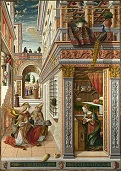
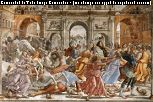
1486 On Jan. 18 Richmond, er, Henry VII marries Elizabeth of York, eldest daughter of Elizabeth Woodville and granddaughter of Duke Richard of York, uniting the English houses of York and Lancaster - tonight all over the world you can hear the sound of lalala what? Do you have any hobbies or interests, such as reading or sports? On Feb. 15 Archduke Maximilian of Austria, son of AEIOU Frederick III (d. 1493) is elected king Maximilian I (1459-1519) of the Romans in Frankfurt am Main, and his daddy resigns and settles in Linz, devoting himself to the study of the pseudo-sciences while remaining HRE, a job he delegates (good time to be running a metaphysical supply store?); on Apr. 9 the journey to Rome being too risky to be crowned by the pope, Maximilian I is crowned in Aachen, after which he joins with Brittany against France; the Hapsburgs control the HRE until 1806. On Mar. 11 Brandenburg prince-elector #3 (since 1470) Albert II Achilles (b. 1414) dies, and the Hohenzollern Franconian possessions pass to his younger brothers Frederick I (1460-1536) and Siegmund (1468-95), while the prince-electorship of Brandenburg passes to his eldest son John II Cicero (1455-99) (until Jan. 8, 1499). On Mar. 30 Thomas Bourchier (b. 1404) dies after marrying Henry VIII and Elizabeth of York, and on Oct. 6 John Morton (1420-1500) (mentor of Sir Thomas More, who was a page in his house) becomes archbishop of Canterbury (until 1500). In Mar. Stephen III of Moldavia defeats the Ottomans again at the Battle of Scheia on the Siret River, and concludes a treaty with Sultan Beyazid II recognizing Moldavian autonomy on the condition of an annual tribute. The first entrepreneur giving a hotel pitch to a potential angel? On May 1 Christopher Columbus meets with Queen Isabella to try and convince her to fund his expedition to the West Indies; he tempts her with a pledge to use any profits to finance the recapture of Jerusalem from the Muslims, after which the Great Temple would be rebuilt - and Christ finally return? On July 16 Henry VII finally announces the murder of the princes in the Tower by their dead uncle Richard; the delay makes some suspect that it was he not Richard who had them murdered, since the only way he could get the crown was to marry Elizabeth, while declaring her legitimate, but that would make the princes legitimate also, barring him from the crown - but the hunchback cripple is always the bad guy, right? Marco Barbarigo (b. 1413) dies, and his brother Agostino Barbarigo (1420-1501) becomes doge #74 of Venice (until 1501). Tizoc dies (poisoned?), and his brother Ahuitzotl (-1502) becomes king #8 of Tenochtitlan in Mexico (until 1502), quelling a rebellion of the Matlatzincans of the Toluca Valley, then going on to double the size of the Aztec empire after conquering the Mixtecs, Zapotecs et al. as far as W Guatemala. Italian Renaissance wunderkind philosopher Count Giovanni Pico della Mirandola (1463-94) gets in trouble when he settles in Rome and pub. Oration on the Dignity of Man (De Hominis Dignitate) ("the Manifesto of the Renaissance"), in which he proposes 900 theses and offers to defend them against all comers, and Pope Innocent VIII deems 13 of them dealing with cabalistic magic heretical, esp. "A mortal sin of finite duration is not deserving of eternal but only of temporal punishment", and forbids him to discuss them; the oration becomes a key Renaissance humanist text and helps launch the Hermetic Rev.; "Human vocation is a mystical vocation that has to be realized following a three stage way, which comprehends necessarily moral transformation, intellectual research and final perfection in the identity with the absolute reality. This paradigm is universal, because it can be retraced in every tradition" - if only he had said 800 or 850? Il Perugino moves to Florence (until 1499). After pumping up the silver mines in Tirol, Archduke Sigismund of Austria, AKA der Munzreiche (Ger. "rich in coin") begins minting the guldengroschen, Europe's first heavy silver coin, which later becomes the thaler, spawning many Euro coin denominations; when the Spanish begin pumping up their silver mines in Am. in the early 16th cent., Europe becomes a land of heavy silver coins? - we don't have any silverware, all we have is this? Nonfiction: Anon., St. Albans Book; earliest example of color block printing in England; starts the fad for "nouns of multitude", e.g., plague of locusts, pride of lions, litter of pups. John Alcock (1430-1500), Sponsage of a Virgin to Christ. Bernhard von Breydenbach, Map of the Holy Land. Conradus Celtis (Conrad Celtes) (1459-1508), Ars Versificandi et Carminum (The Art of Writing Verses and Poems). Follow your heart? Without love where would you be right now? Keinrich Kramer (1430-1505) and James Sprenger (1436-94), Malleus Maleficarum (Hammer of Witches); approved by the Vatican, even though the U. of Cologne condemns it; the #1 guidebook for Inquisitors; incl. instructions to remove hair from every part of the body "even... the most secret parts" to search for hidden objects and the Devil's mark (Satan's nipple), and for due process requires a witch to confess before being condemned to death, authorizing torture to obtain a first confession, followed by another "free and open confession"; condemned witches are to be handed over to the civil authorities swiftly for execution, and if they renounce Satan they get treated with quick easy strangulation before the pyres are lit; the Church and lay authorities then get to split the heretic's property - see you in court? Giovanni Pico della Mirandola (1463-94), Conclusiones Cabbalisticae (72 Conclusions on the Kabbalah); #14 argues that Jesus' real name Yeheshuah consists of the Tetragrammaton YHWH plus the Hebrew leter shin, showing the descent of the Holy Spirit into the fourfold realm of matter, i.e., the incarnation of God, and makes the unpronounceable YHWH pronounceable, giving the new name by which miracles can be performed. Antoine de la Sale (1385-1462), Cent Nouvelles Nouvelles. Art: Sandro Botticelli (1445-1510), Madonna of the Pomegranate. Carlo Crivelli (1430-95), The Annunciation, with St. Emidius. Domenico Ghirlandaio (1449-94), The Massacre of the Innocents (1486-90) (Santa Maria Novella, Florence). Births: German Renaissance composer Martin Agricola (Sohr) (Sore) (d. 1556) on Jan. 6 in Schwiebus, Lower Selesia. Italian sculptor-architect Jacopo d'Antonio Sansovino (Tatti) (d. 1570) on July 2 in Florence; student of Andrea Sansovino. Italian painter Andrea del Sarto (Andrea Domenico d'Agnolo di Francesco) (d. 1531) on July 16 in Florence. German diplomat-historian Baron Sigismund (Siegmund) von Herberstein (d. 1566) on Aug. 23 in Wippach, Carniola (Vipava, Slovenia); expert on Russia; educated at the U. of Vienna. German occult feminist scholar Henricus (Heinrich) Cornelius Agrippa von Nettesheim (d. 1535) on Sept. 14 in Nettesheim (near Cologne); educated at the U. of Cologne; student of Johannes Trithemius (1462-1516). English prince of Wales (redhead) Arthur Tudor (d. 1502) on Sept. 19/20 in Winchester, Hampshire; eldest son of Henry VII (1457-1509) and Elizabeth of York (daughter of Edward IV); named after Malory's "Le Morte d'Arthur", pub. last year, with Henry VII claiming descent back to Cadwallader, also claiming that Winchester is Camelot; godfathers are John de Vere, 13th earl of Oxford and John Stanley, 1st earl of Derby; godmother is Elizabeth Woodville; born 1 mo. premature? Italian duke of Savoy (1504-53) Charles III (d. 1553) on Oct. 10; younger son of Philip the Landless (1438-97) and Claudine de Brosse, whose family unsuccessfully claims the duchy of Brittany; first cousin of Charles I of Savoy; husband of Beatrice of Portugal (1504-38) (daughter of Manuel I). Spanish conquistador Pedro de Alvarado (d. 1541) in Badajoz. German Protestant Reformation leader Andreas Rudolph Bodenstein von Karlstadt (Carlstadt) (AKA Brother Andrew) (d. 1541) in Karlstadt, Franconia; educated at the U. of Wittenberg. Swiss composer Ludwig Senfl (d. 1542). German Roman Catholic theologian and mystic (opponent of Lutheranism) Johann Maier (Mayer) von Eck (d. 1543) in Eck, Swabia (S Germany); educated at the U. of Heidelberg, U. of Tubingen, and U. of Cologne; prof. of theology at Ingolstadt (1510-40). Indian Suri emperor #1 (1538-45) Sher Shah Suri (d. 1545) in Sasaram (modern-day Bihar). Italian Renaissance painter Francesco Torbido (d. 1562). Deaths: English lord chancellor (1456-60) William Waynflete (b. 1398) on Aug. 11 in Bishop's Waltham, Hampshire; founder of Magdalen College in Oxford. English archbishop of Canterbury (1454-86) cardinal Thomas Bourchier (b. 1404) on Mar. 30 near Sevenoaks. German prince-elector of Brandenburg (1470-86) Albert II Achilles (b. 1414) on Mar. 11 in Frankfurt am Main. Japanese samurai Ota Dokan (b. 1432) on Aug. 25. German elector Ernst of Saxony (b. 1441) on Aug. 26 in Colditz (fell from a horse). Portuguese explorer Diogo Cao (b. 1452). Scottish queen Margaret of Denmark (b. 1456) on July 14 in Stirling Castle.
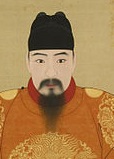

1487 In Mar. Hapsburg Archduke Sigismund of Austria "the Rich in Coin" declares war on the Repub. of Venice in order to seize its silver mines in the Valsugana Valley, beginning the War of Rovereto in N Italy; in Apr. Sigismund imprisons 130 Venetian merchants en route to the fair in Bolzano, confiscating their goods, after which his troops from Tirol storm the Pass of Calliano, then siege Rovereto Castle, becoming one of the first uses of the massive bombard cannon; the war fizzles out by fall, causing the pop. of Tirol to begin turning against him; on Aug. 10 the Battle of Calliano in Trentino, Italy is a decisive V for the bishopric of Trent and the county of Tyrol over Venice, becoming the first deployment of Landsknechte troops, German (Tyrolean or Swabian) troops trained the Swiss way. On May 4 a Yorkist fleet carrying Richard III's disgruntled nephew and heir John de la Pole arrives in Dublin, soon recruiting 4.5K Irish mercenaries with the help of lord chancellor Sir Thomas Fitzgerald; on May 24 teenie Yorkist imposter Lambert Simnel (1475-1535) (claiming to be Earl Edward of Warwick, son of Duke George of Clarence, who is actually imprisoned in the Tower of London) is crowned as king Edward VI of England in Christchurch Cathedral, Dublin, with de la Pole using him as his front, with aid from Frances Lovell, 1st viscount Lovell, landing in Lancashire on June 4, beefing up to 8K men, then covering 200 mi. in 5 days via forced marches, defeating 400 Lancastrians on June 10 (night) at the Battle of Bramham Moor near Tadcaster, then staging a diversionary attack on June 12 at Bootham Bar in York in order to take Henry VII's northern army under Henry Percy, earl of Northumberland out of the action; too bad, the Lancastrian cavalry under Lord Scales slows down the main Yorkist army for 3 days in the Sherwood Forest, allowing Henry VII to receive reinforcements under Lord Strange on June 14; on June 16 the Battle of Stoke Field (Stoke-on-Trent) outside Newark is a V for Henry VII's 12K troops over de la Pole's 8K men after the Irish mercenaries, who lack body armor fall in large numbers, with 4K casualties for de la Pole vs. 3K casualties for Henry VIII; de la Pole is KIA, along with all of the Yorkist cmdrs.; Simnel is captured, pardoned, and given a job in the king's kitchens - Hell's Kitchen? On July 29 Lorenzo de' Medici's wife Clarice dies suddenly of TB at 34 - Hannibal the Cannibal mourns? In early Aug. Portuguese explorer Bartholomeu Dias (b. 1450) leaves Lisbon to sail down the coast of Africa. On Sept. 9 emperor (since Feb. 28, 1464) Chenghua (b. 1447) dies, and on Sept. 22 his son becomes Hongzhi ("great government") (Zhu Youcheng) (1470-1505), Ming emperor #9 of China (until June 8, 1505), becoming an ascetic with only one wife and no concubines, who lets affairs of state slide, which is later called the Hongzhi Silver Age. On Nov. 17 Pope Innocent VIII issues a bull prescribing universal censorship of books, especially irreligious ones. The Spanish reconquer Malaga from the Arabs, and the churchbuilders set to work. Duke Albert of Saxony leads an expedition against Matthias Corvinus of Hungary, but he gives up after the HRE fails to support him. Bavarian duke (1465-1508) Albert (Albrecht) IV "the Wise" (1447-1508) requires all brewers in Munich to take an oath of allegiance to the 1447 beer purity law, and introduces price controls (a one liter beer costs 1 silver pfennig in winter, 2 in summer). Christopher Columbus goes before the Council of Salamanca in an unsuccessful attempt to convince Spanish king Ferdinand II's council to support his proposed voyage to find a new route to India, but they do grant him a living allowance. Henry VII of England establishes the Court of Star Chamber, showing that he means to be an autocratic king. Joao II of Portugal sends an overland expedition led by Pedro (Pero) da Covilha (1460-1527) to India and the E coast of Africa - keep trying and you might get lucky? 21-y.-o. Desiderius Erasmus (b. 1466), student at the Augustinian Steyn Monastery near Gouda begins writing love letters to fellow monk Servatius Rogerius, whom he calls "half my soul", with the soundbyte "I have wooed you both unhappily and relentlessly"; he ends up taking priestly vows to eat, but never works as a priest, and spends his life attacking monasticism. The Cheng Hua Period of Chinese Porcelain (begun 1406) ends. Architecture: The Aztecs are the Nazis of America, complete with mass extermination centers and peop-eating cannibal priests? Aztec emperor Ahuitzotl dedicates the 114-step Great Temple (Templo Mayor) of Tenochtitlan by sacrificing four 2-mi.-long lines of people (40K-80K total) (captured enemies?) from sunup to sundown for four straight days; "May he savor the fragrance, the sweetness of death by the obsidian blade" chant the skull mask-wearing priests, who give a swift and merciful death, cutting out the beating heart (yollotl), then decapitating and chopping up the lucky victim and cooking a bowl of yummy sacred tlacatlaolli stew containing dried maize and spices, and partying hearty; meanwhile, the victim's "flowery" blood feeds the gods, who require payback for having sacrificed theirs to make the Earth, and the lucky plucker transforms into an eagle man who ascends into the heavenly company of the Sun? Inventions: Leonardo da Vinci invents the tank, "which will enter the closed ranks of the enemy with their artillery, and no company of soldiers is so great that it will not break through them. And behind these our infantry will be able to follow quite unharmed and without any opposition"; no real tanks are fielded until WWI. On Jan. 30 bell chimes are invented by Christina Petty in ? The modern slide trombone (sacbut) is invented by ?. Art: Leonardo da Vinci (1452-1519), The Vitruvian Man; a study of human proportions based on the statement of 1st cent. B.C.E. Roman architect Marcus Vitruvius Pollio that the "well-shaped man" fits into the perfect shapes of the square and circle, and that the parts of the body are related to one another in whole number ratios - yes, that incl. the johnson; and the missing circumscribing circle is a vagina? Births: Hungarian king (1526-40) John (Janos) Zapolya (Zápolya) (Szapolyai) (d. 1540) on Feb. 2 in Spis Castle; son of Stephen Zapolya, palatine (regent) of Hungary; father of John II Sigismund Zapolya (1540-71). Persian Safavid shah #1 (1502-24) (Shia Muslim) Ismail I (d. 1524) on July 17 in Ardabil. Italian pope (1550-5) Julius III (Giovanni Maria Ciochhi del Monte) (d. 1555) on Sept. 10 in Rome. German celeb Anna Reinhard (d. 1538); wife (1522-) of Ulrich Zwingli. Italian Renaissance painter Bonifazio Veronese (Bonifazio di Pitati) (Bonifazio Veneziano) (d. 1553) in Verona; student of Jacopo Palma; paints a number of religious "Sante Conversazioni" paintings in his early years. German humanist doctor Johannes Gunther (Johannes Winter von Andernach) (d. 1574) in Andernach (ancient Roman city of Antunnacum) (between Bonn and Koblenz on the Rhine River); teacher of Vesalius, Servetus, and Rondelet in Paris. Deaths: Italian clergyman Antonio Bettini (b. 1396) on Oct. 22 in Siena. Byzantine humanist scholar John Argyropoulos (b. 1415) on June 26 in Italy. Swiss mystic St. Niklaus von Flue (b. 1417) on Mar. 21 in Sachseln; canonized in 1947 by Pope Pius XII.


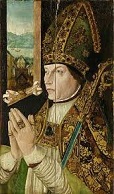




1488 On Jan. 8 Maximilian I of Austria orders the creation of the Royal Netherlands Navy, which grows into one of the world's most powerful naval forces during the Dutch Repub. of 1581-1795. Sounds like a hot night with a high class hooker? On Feb. 4 after reaching Walvis Bay in Dec., discovering the Westerlies and exploring Table Bay at the N end of the Cape Peninsula, then rounding the Horn, becoming the first European to reach the Indian Ocean from the Atlantic Ocean, reaching a record S latitude for a European then turning NE and sailing for 30 days, discovering and mapping discovering Angra Pequena (Port. "small bay") (AKA Angra de Sao Christovao) in modern-day Namibia, Portuguese explorer Bartholomeu (Bartolomeo) Dias (Diaz) (1450-1500) discovers Mossel Bay, then turns back after reaching the mouth of Bushman's River on Mar. 12; in May on his return he discovers the Cape of Good Hope, which he calls the Cabo Tormentoso (Cape of Storms) before returning to Lisbon in Dec.; King John II later renames it in the spirit of Erik the Red to keep his sailors from bolting; he discovers Robben Island in Table Bay in South Africa, then returns to Lisbon in Dec. On Feb. 5 the Flemish pop. of Bruges in Belgium captures HRE Maximilian I after his surprise attack is discovered in advance, and he is forced to g rant the General States a number of concessions; Duke Albert of Saxony is appointed Stattholder of the Netherlands (until 1493), and marches to Bruges and frees him; after Maxy leaves, manly knight Albert stays behind to subdue the rebels in Flanders, Brabant and Holland. On Feb. 28 Korean official Ch'oe Pu (Choe Bu) (1454-1504) shipwrecks in Taizhou, Zhejian in SE China, after which he and his crew are hosted by the Chinese govt., traveling along the Grand Canal to Beijing, then across the Yalu River into Korea, after which he writes the valuable Diary of Ch'oe Pu. The Battle of Burning Sausage? In Feb. super-unpopular Scottish king (since 1460) James III (nice long bobbed hair, cute mouth and nose, nice ass and package?) replaces Colin Campbell, 1st earl of Argyll as chancellor with Aberdeen bishop William Elphinstone (1431-1514), triggering another revolt, this time led by his eldest son Duke James of Rothesay; on June 11 the Battle of Sauchieburn S of Stirling sees James III of Scotland (b. 1460) assassinated in a skirmish by a conspiracy of nobles outraged at his abuses (incl. open homosexuality?), becoming a decisive rebel V; on June 24 15-y.-o. Duke James of Rothesay is crowned James IV (1473-1513) of Scotland at Scone (until Sept. 9, 1513), staying a minor until 1495 so he can complete his education, assisted by learned tutors Archibald Whitelaw (1415-98) (royal secy.) and John Ireland (royal confessor), which incl. lessons in Latin, French, Danish, and Gaelic, after which he learns Italian, Spanish, Flemish, and German, along with the Bible and history, turning him into Scotland's first true Renaissance king, and the last to speak Scottish Gaelic, sending two children to be raised by a mute woman on Inchkeith Island to see if language is learned or innate, running his own alchemy workshop, and attempting to fly from the battlements of Stirling Castle; feeling guilt over his daddy's death, he takes to wearing an iron chain around his waist, adding one new weight to it each year, and makes a yearly pilgrimage to the Shrine of St. Ninian at Whithorn Cathedral in Dumfries and Galloway (where Robert I went for a cure for leprosy in 1329) - the original I've got ten pound balls? On Apr. 1 John II (b. 1426) dies, and his younger brother Charles II (1434-88) (who was elected arbishop of Lyon at age 10 and rose to cardinal) becomes duke of Bourbon, but on Apr. 10 his younger brother Peter II (1438-1503) and his wife Anne of Beaujeu (eldest daughter of Louis XI) expel him by force, and on Apr. 15 make him renounce his claims, after which he croaks on Sept. 13; meanwhile the new duke and duchess of Bourbon add Bourbon-Lancy to their domains in Dec., then trade l'Isle-en-Jordain for Carlades and Murat next June with the Armagnacs. On July 9 Azerbaijan Safavid ruler (since 1460) Sheikh Haydar, son of Junayd and father of Shah Ismail I (b. 1487) is KIA at the Battle of Tabarsaran in Shirvan against White Sheep ruler Ya'qub in alliance with the ruler of Shirvan, and the White Sheep then begin a crackdown on the Safavid Redheads, which only makes them redder, leading his 1-y.-o. son to later plan a final takeover in perfect hair color Persia? On July 28 a French army under Louis II de La Tremoille (Trémoille) (1460-1525) defeats Duke Francis II of Brittany at the Battle of Saint-Aubin du Cormier in Brittany (who suffers 6K casualties), and secures his promise that his 11-y.-o. daughter Anne of Brittany (1477-1514) will marry only with the consent of the French crown; on Sept. 9 Duke Francis II (b. 1433) falls off his horse and dies, making Anne the duchess of Brittany, triggering the Mad War (La Guerre Folle) (ends 1489), and a coalition of Maximilian I of Austria, Henry VII of England and Ferdinand II of Aragon is formed to prevent France from swallowing Brittany. The Swabian League is formed in SW Germany (ends 1534). The African kingdom of Mali falls to Moroccan invaders; the European discovery of a coastal route destroys its Saharan trade, giving once thriving Timbuktu its rep as the ultimate out-of-the-way hole in the sand? Rao Bika (son of Jodhpur founder Rao Jodha) founds the city of Bikaner in Rajasthan, W India (modern pop. 500K). Henry VII's man-of-war Great Harry is constructed, becoming the first large ship built in England. The first dispensary (apothecary) is founded in Berlin. Lorenzo de' Medici establishes the first art school in history in Florence, and sees 13-y.-o. Michelangelo Buonarroti (1475-1564) sculpting a bust of an old man, telling him that he shouldn't have a full set of teeth, causing him to knock out a tooth and ask him to look at it again, pleasing Lorenzo so much that he adopts him and moves him into the Medici palace in Florence, and starts his apprenticeship in the workshop of Domenico Ghirlandaio (1449-94), while schooling him in Medici Renaissance humanism at the dinner table, which causes an inner conflict with his Christian upbringing? - the original curious case of Benjamin Button? Architecture: Pavia Cathedral in Italy beguns construction under architect Cristoforo Rocchi, followed by Giovanni Antonio Amadeo (1447-1522) and Gian Giacomo Dolcebuono (1445-1504); it houses the remains of St. Sirus, first bishop of Pavia. Nonfiction: Anon., Dracule (Nuremburg); pamphlet prepared under the influence of Matthias Corvinas of Hungary describes his enemy Vlad III the Impaler (1431-76) as a vampire - blood everywhere and not a drop to drink? The first trans. of the complete Bible into Czech (Bohemian) is pub. in Prague; next year an ed. with illustrations is pub. in Kutna Hora. Art: Domenico Ghilandaio, Giovanna Tornabuoni. Births: German Lutheran "Letters of Obscure Men" humanist knight Ulrich von Hutten (d. 1523) on Apr. 21. Spanish explorer-scholar Ferdinand Columbus (d. 1539) on Aug. 15 in Cordoba; 2nd son of Christopher Columbus (1451-1506); brother of Diego Colon (1474-1526). Italian prince Ferdinand, Duke of Calabria (d. 1550) on Dec. 15 in Andria, Apulia; son of Frederick IV of Naples (1452-1504) and 2nd wife Isabella del Balzo (1465-1533); husband (1526-38) of Germaine de Foix (1438-1538), and (1541-50) Mencia de Mendoza (1508-54). Italian painter (in Rome) Giovanni Francesco Penni "il Fattore" (the Maker) (d. 1528) in Florence. German botanist-theologian Otto Brunfels (Braunfels) (Brunsfels) (d. 1534) near Mainz. French queen consort of Aragon, Naples, Sardinia and Sicily (1505-16) Germaine of Foix (d. 1538) in Foix; daughter of John of Foix, viscount of Narbonne, and Marie of Orleans; wife (1505-16) of Ferdinand II of Aragon, (1519-25) Johann of Brandenburg-Ansbach (1493-1525), and (1526-38) Duke Ferdinand of Calabria. Swiss Protestant theologian Oswald Myconius (Molitoris = Lat. "miller") (d. 1552) in Lucerne; given the name Myconius by Erasmus, alluding to the expression "bald-headed Myconian". Spanish Augustinian friar (St.) Thomas of Villanova (Villanueva) (Tomas Garcia Martinez) (d. 1555) in Cuidad Real. Spanish Dominican Cardinal Juan Alvarez (Álvarez) de Toledo (d. 1557) on July 15; son of Fadrique Alvarez de Toledo, 2nd duke of Alba; brother of Pedro Alvarez de Toledo, marquis of Villafranca. Spanish "Salome" Mannerist painter-sculptor-architect Alonso Berruguete (d. 1561) in Paredes de Nava; pupil of Michelangelo. Polish-Luthuanian hetman (1527-61) Jan Amor Tarnowski (d. 1561) in Tarnow, Poland; founder of Tarnopol. Ottoman grand vizier (1539-41) Lutfi Pasha (d. 1563). English Bible scholar (Protestant) Myles (Miles) Coverdale (d. 1569) in North Riding of Yorkshire; educated at Cambridge U. Jewish legal scholar ("HaMechaber" = "The Author") ("Maran" = "Our Master") Rabbi Joseph (Yosef) ben Ephraim Caro (Karo) (d. 1575) in Toledo, Spain; emigrates to Portugal in 1492, Nikopolis, Bulgaria in 1497, Adrianapole in 1520, Salonica and Istanbul in 1533, and Safed, Palestine in 1535. Deaths: French duke of Bourbon (1456-88) John II (b. 1426) on Apr. 1 in Chateau de Moulins. French duke Francis II of Brittany (b. 1433) on Sept. 9 (fall from a horse). French cardinal-archbishop Charles II of Bourbon (b. 1434) on Sept. 13 in Lyons. Italian artist Andrea del Verrocchio (b. 1435) on Oct. 10 in Venice; leaves his masterpiece, Equestrian Statue of Colleoni (-1475) (begun 1478) unfinished (a breakthrough because one of the horse's legs doesn't touch the base). Scottish king (1460-88) James II (b. 1452) on June 11 in Sauchieburn (assassinated). Moroccan sultan (1435-89) Abu Amr Uthman.











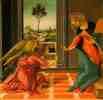
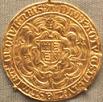
1489 The first known typhus epidemic in Europe starts in Spain - it's getting too full of shit? The plague ravages the Netherlands this year and next. On Feb. 14 queen (since 1474) Caterina (Catherine) Cornaro (1454-1510) of Cyprus is forced to sell her kingdom to Venice, leaving Nicosia dressed in black accompanied by her barons and ladies, her eyes filled with tears, after which on May 14 she sails away to Asolo County in Italian Veneto, where she is allowed to retain her title of queen, setting up a court known for patronizing art and lit. - anchors aweigh, baby? On Mar. 26 the 2nd Treaty of Medina del Campo between England Spain (first in 1431 between Portugal and Castile) provides for the marriage of Spanish princess Catherine of Aragon to Henry VII's eldest son Arthur Tudor (b. 1486), who on Nov. 29 is named prince of Wales. On Oct. 11 a revolt against new Scottish king James IV, led by Robert Lyle, 2nd Lord Lyle (-1497) and John Stewart, 1st Earl of Lennox (1429-95) (AKA Lord Darnely) (mad at being excluded from the govt. after helping James IV win) is defeated at the Battle of the Field of the Moss near the source of the Forth River; next Feb. the parliament annuls their forfeitures and placates them, and they support the govt., which gives seats in the royal council to the Angus, Argyll, Hepburn, Hume, and Huntly families - a full house? On Dec. 4 the Spanish capture Baza in Granada from the Moors after a 1-year siege. On Dec. 11 Jeannetto de Tassis is appointed postmaster of Innsbruck, going on to found the Thurn and Taxis dynasty that runs much of Europe's postal system. Her situation perilous, Anne of Brittany appeals to Maximilian I of Austria for protection - it's always wise to use protection? Former slave Yusuf Adil Shah (1459-1511) becomes ruler of Bijapur, India, founding the Adil Shahi Dynasty, which rules for almost two cents. Zurich mayor (since 1483) Hans Waldmann (b. 1435) is executed as a dictator. Abu Zikriya Yahya of Tunisia is overthrown by Abdul Mu'min (Abul Mumin). An embassy from Congo visits the king of Portugal. Sir Thomas Howard is released from prison and his earldom restored, and he is placed in command of the Scottish border defenses. The Bremen Brewers' Society is formed, becoming Germany's first brewing guild. Pope Innocent VIII suppresses the Order of the Holy Sepulchre and merges it with the Knights Hospitaler (Knights of St. John of Jerusalem) under grandmaster Pierre d'Aubusson (1423-1503); in 1496 Pope Alexander VI restores the order, with a new grandmaster taking the place of the old Franciscan custodian of the Holy Land, who continues to act as ex-officio Latin patriarch of Jerusalem until 1830 - let me upgrade you? 58-y.-o. Spanish-born Italian Cardinal Rodrigo Lanzol y Borgia (1431-1503) (Pope Alexander VI in 1492) takes gorgeous blonde 15-y.-o. bimbo Giulia Farnese (1474-1524) as his mistress; her hubby Orsino Orsini is "a good husband; he was blind in one eye, he knew how to wink with the other" (E.R. Chamberlin). The town of Vyatka in Russia comes under control of Moscow. Henry VII of England issues a charter to the city of Southwold. Peter Vischer the Elder (1460-1529) of Nuremberg becomes a guild master, going on to build up the family bronze foundry to #1 in Germany for the next half-cent. Henry VII of England authorizes the Gold Sovereign Coin to be minted, showing him seated on a throne on the obverse, with the royal coat of arms on a shield surrounded by the red-white rose of Tudor on the reverse; although it has no official markings of value, it is nominally worth one pound sterling (20 shillings or bob); even after Britain switches to decimal currency in 1971, it continues to be minted. Architecture: Palazzo Strozzi in Florence, designed on classic Roman principles by Benedetto da Majano (1442-98) is begun (finished 1507). Nonfiction: In 1489-91 Nuremberg, Germany-born geographer-cartograper (in Florence) Henricus Martellus Germanus (Heinrich Hammer) composes a World Map, showing a passage to the S of Africa along with a huge new peninsula E of the Golden Chersonese (Malaysia); shows no knowledge of the existence of the American continent. Johann Widmann (1462-98), Book on Arithmetic; the first use of the addition (+) and subtraction (-) symbols in mathematics. Art: Sandro Botticelli (1445-1510), The Cestello Annunciation. Hans Memling (1430-94), St. Ursula Shrine; gilden wooden reliquary with oil panel inserts, commissioned by the Hospital of St. John in Bruges. Births: French noble Charles of Bourbon-La Manche (d. 1537) on June 2 in Chateau de Vendome, Paris; son of Count Francois of Vendome (1470-95) and Marie de Luxembourg (1472-1547). French duke of Lorraine (1508-44) Antoine the Good (d. 1544) on June 4; son of Rene II (1451-1508) and Philippa of Guelders. Scottish queen (1502-13) Margaret Tudor (d. 1541) on Nov. 28 in Richmond Palace; eldest daughter of Henry VII (1457-1509) and Elizabeth of York (1466-1503); wife (1503-13) of James IV of Scotland (1473-1513) and Archibald Douglas, 6th earl of Angus (1489-1557); mother of James V of Scotland (1512-42), father of Mary Stewart, Queen of Scots (1542-87); the breed mare through whom James VI of Scotland (1566-1625) derives his claim to the English throne, ascending in 1603 as James I of England. French gen. ("the Thunderbolt of Italy") Faston de Foix, Duke of Nemoirs (d. 1512 on Dec. 10 in Mazres, Foix; only son of John of Foix, viscount of Narbonne and Marie d'Orleans; brother of Germaine of Foix, queen consort of Aragon, 2nd wife of Ferdinand II; paternal grandson of Gaston IV of Foix-Graily and Queen Eleanor of Navarre; maternal grandson of Duke Charles of Orleans and Marie of Cleves; maternal nephew of Louis XII. German Anabaptist leader Thomas Muntzer (Müntzer) (Münzer) (d. 1525) on Dec. 21 in Stolberg, modern-day Saxony-Anhalt. German humanist writer Johannes Cochlaeus (Lat. "spiral") (Dobneck) (d. 1552) in Wendelstein (near Nuremberg); educated at the U. of Cologne. English Protestant reformer-theologian-martyr (archbishop of Canterbury in 1533-55) Thomas Cranmer (d. 1556) on July 2 in Aslacton, Nottinghamshire; educated at Cambridge U. German Protestant statesman-reformer Jacob (Jakob) Sturm von Sturmeck (d. 1553) on Aug. 10 in Strasbourg; educated at the U. of Heidelberg, and U. of Freiburg. Italian Renaissance painter (Parma School) Antonio Allegri da Correggio (d. 1534) in Aug. in Correggio (near Reggio Emilia); nephew of painter Lorenzo Allegri; student of Lorenzo Costa. German Welf duke of Brunswick-Wolfenbuttel (1514-68) Heinrich (Henry) V (the Younger) (d. 1568) on Nov. 10 in Wolfenbuttel Castle; son of Duke Henry IV the Elder and Catherine, daughter of Duke Eric II of Pomerania. French duke Charles IV, Duc d'Alencon (d. 1525); son of Rene of Alencon and Margaret of Vaudemont; husband (1509-25) of Margaret of Angouleme (Navarre) (1492-1549), sister of Francis I. Italian condottiero Fernando Francesco d'Avalos (d. 1525) in Naples; of Spanish Aragonese origin. Spanish conquistador Juan de Grivalva (d. 1527) in Cuellar, Castile. Scottish stud Archibald Douglas, 6th Earl of Angus (d. 1557) in Douglasdale, Lanarkshire; grandson of Archibald Douglas, 5th earl of Douglas; 2nd husband (1514-) of Henry VIII's sister Margaret Tudor (1489-1541), with whom he has Margaret Stewart (1515-78), grandmother of James VI/I. French Protestant reformer William (Guillaume) (Guilhem) Farel (d. 1565) in Gap, Hautes-Alpes; student of Jacques Lefevre d'Etaples (1455-1536). French treasurer-gen. and bibliophile Jean Grolier de Servieres (Servičres), Viscount d'Aguisy (d. 1565) (b. 1490?) in Lyon; inventor of Grolier-style bookbinding (gilt ornamentation with geometric patterns); motto: "Of or belonging to Jean Grolier and his friends". Ottoman chief architect (1538-88) Koca Mimar Sinan Aga (d. 1588) in Agirnas (Mimarsinankoy) (near Kayseri); born to a Christian family and christened Joseph. Deaths: Dutch reformer-scholar Wessel Gansfort (b. 1419) on Oct. 4 in Groningen; his writings, later praised by Luther are later suppressed by the Church, and the 1st ed. of the remnant is not pub. until 1520: "Studious boy, you will live to see the day when the teachings of... quarrelsome theologians will be rejected by all true Christians."






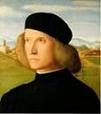

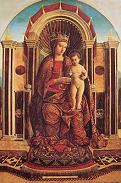

1490 On Feb. 12 Marquis Francesco II Gonzaga of Mantua marries brainy glam babe Isabella d'Este (1474-1539), "First Lady of the Renaissance", who governs during his many military absences, and turns Mantua into a cultural showplace with artists Raphael and Andrea Mantegna (1431-1506), composers Bartolomeo Troncino and Marchetto Cara, and sculptor Pier Jacopo Alari Bonacolsi (AKA L'Antico), building the Palace of St. Sebastian, complete with Mantegna's Triumph of Caesar, and getting her portrait done by Leonardo da Vinci and Titian (twice); next year she instructs her agent to get her a black girl age 4-8, "shapely and as black as possible", adding "We shall make her very happy and shall have great fun with her". On Mar. 13 Charles I the Warrior (b. 1468) dies, and his infant son Cahrles John Amadeus becomes Duke Charles II (1489-96) of Savoy, Jerusalem, Cyprus and Armenia (until 1496), with his mother Blanche of Montferrat (1472-1519) as regent. On Apr. 6 after capturing and occupying Vienna, king Matthias Corvinus (b. 1443) of Hungary and Bohemia dies, and Bohemian king (since 1471) Ladislav (Vladislas) (Uladislaus) II Jagiello (1456-1516) of Bohemia, son of Casimir IV of Poland and Anne of Bohemia becomes king of Hungary, moving the royal residence to Ofen (Budapest). On Dec. 19 Maximilian I of Austria marries 13-y.-o. heiress Anne of Brittany (1477-1514) (daughter of Duke Francis I of Brittany) by proxy, giving her the title of queen of the Romans, pissing-off Charles VIII since he is supposed to give his approval first via the Treaty of Verger, plus it gives Brittany to an enemy of France. Frederick III resigns most of his duties as HRE to his son Maximilian I of Austria, who acquires the Tirol from Archduke Sigismund of Austria after the pop. turns against him; Frederick III names Linz as the capital of the province of Upper Austria. Charles VIII of France repudiates the Treaty of Arras along with his betrothal to 10-y.-o. Margaret of Austria, daughter of Maximilian I. Abdul Mu'min (Mumin) is overthrown by Abu Zikirya Yahya in Tunisia. Portuguese missionaries and artisans go to the Congo, where they convert King Mani-Kongo. Civil war begins in Monomotapa (Monomutapa) (AKA Mokaranga) in E Africa (modern-day Zimbabwe), stretching from the Zambesi River to the mouth of the Fish River; in early 1561 Jesuit priest Goncalo da Silveira Christianizes the king and many of his people, but some Muslim refugees from Mozambique cause kingy to flop and strangle him on Mar. 16. The Shilluk Kingdom (ends 1865) on the banks of the White Nile River in modern-day S Soudan is founded as a sacred monarchy by Nyikango, in which the king (reth) is also the chief priest, worshipping Juok; the kingdom reaches its zenith under king Dhokoth in 1670-90, after which King Tugo establishes Fashoda (modern-day Kodok or Kothok) as the capital, living on a homestead mound in four huts. The fortified island of Saint-Malo in NW Brittany at the mouth of the Rance River declares itself an independent repub., with the motto "Not French, not Breton, but Malouins"; explorer Jacques Cartier is born there in 1491. Out of Rome's pop. of 100K, about 6.8K are "respectable courtesans" (legal prostitutes) catering to the pilgrim and tourist trade. Ferdinand II of Castile and Aragon sends Pope Innocent VII a gift of 100 Moorish slaves, which he shares with cardinals and close friends. Yoshimasa disinherits his brother, and makes his son Yoshitane shogun. A revolt in Bidar, India against incompetent ruler Mahmud causes the secession of Berar (until 1574), Ahmadnagar (until 1633) and Bijapur (until 1686). Royal confessor John Ireland presents Scottish king James IV with The Meroure of Wyssdome, his manual of kingship. Permanent ambassadors come into existence in Europe during this decade. A wave of meteorites impacts Qingyang, Shangxi China with such ferocity that stones fall like rain, killing tens of thousands? In this decade the fierce cannibal Caribe (Canibal) (Caníbal) (Sp. for cannibal) tribe, originally from the Orinoco River Valley expels the Arawaks from the coast of Venezuela, and spreads to the Lesser and Greater Antilles, Bahamas, and the Atlantic coastline from Fla. to S Brazil; their canoes make use of sails, and they run fleets of as many as 100 at a time. The first orphanages open in Italy and Holland. Spanish drama begins its unique development. Ballet is born in the courts of Italy. Where is the love? In this decade the profession of book publisher (type founder, printer, bookseller) emerges just in time to receive mss. from explorers telling about nude women running around in exotic lands?; Greek and Latin scholar Aldus Manutius (1449-1515) and his family found the Aldine Press in Venice (later Rome) to pub. Greek and Latin classics in small low-cost "pocket book" format with financial help from Prince Alberto Pio of Carpi (until 1597), starting with a 5-vol. folio Aristotle (1494-98), and later Euripides, Plato, and Plutarch, using noted classical scholars in their production and becoming the first printer to use small capitals and italics in an Italian ed. of Vergil (1501), turning Venice into the printing capital of Europe, issuing 130 works (incl. 30 in Greek) by 1515; the Aldine Logois an anchor and dolphin. Sports: En passant is introduced in chess. Architecture: In this decade Knole House in Sevenoaks, W Kent (SE of London), England is built, becoming one of England's largest houses, helping the village grow. Science: Italian brain man Leonardo da Vinci (1452-1519) describes Capillary Action after Veronese anatomist Marc Antonia Della Torre dies and he dissects 10 human bodies in the cellar of the Santa Spirito by candlelight to fulfill a vow to him. In this decade Saccharomyces eubayanus yeast is brought back from the beech trees in Patagonia in South Am., making it possible for Bavarians to brew the first clear cold-fermented lager beer after fusing it with their yeast. Art: Gentile Bellini (1427-1507), Madonna and Child Enthroned; shows an Islamic prayer rug at the Virgin Mary's feet. Giovanni Bellini (1430-1516), Portrait of a Young Man in Black. Vittore Carpaccio (1460-1526), Life of St. Ursula (9 scenes) (1490-); incl. Dismissal of the Ambassadors, The Departure of the Betrothed Pair, St. Ursula's Dream; best Venice pageant series of the cent.? Albrecht Durer (1471-1528), Portrait of Artist's Father; makes another one in 1497. Domenico Ghirlandaio (1449-94), The Birth of Mary. Quentin Massys, St. Christopher (sometime in this decade?) Plays: The first Corpus Christi Play is performed in Eger, Bohemia. Poetry: The anon. Scottish poem Lancelot of the Laik is written in this decade. Births: French traitor gen. (constable of France) Charles III de Montpensier and de Bourbon, Duke de Chatellerault, Viceroy of Languedoc and Milan (AKA Constable de Bourbon) (d. 1527) on Feb. 17 in Montpensier; son of Count Gilbert of Montpensier and Claire de Gonzaga; his sister is the wife of the duke of Lorraine, grandson of Iolande de Bar and great-grandson of Rene I of Anjou; marries the only daughter of the duke of Bourbon, uniting the only branches of the Bourbon family to retain the old feudal power, along with vast estates, making him the most powerful man in France at the start of the 16th cent. Italian duke of Urbino (1508-16) Francesco Maria I della Rovere (d. 1538) on Mar. 22 in Senigallia; son of Giovanni della Rovere and Giovanna da Montefeltro (daughter of Federico III da Montefeltro); nephew of Guiliano della Rovere (Pope Julius II) (1443-1513) and Guidobaldo I of Urbino (1472-1508); father of Guidobaldo II della Rovere (1514-74). Italian poet (member of the Spirituali) Vittoria Colonna (d. 1547) in Apr.; daughter of Fabrizio Colonna (1450-1520); friend of Michelangelo. Prussian duke #1 (1525-68) (elector-archbishop of Mainz in 1514-45) (archbishop of Magdeburg in 1513-45) (37th grandmaster of the Teutonic Knights in 1511-25) Albrecht (Albert) I of Hohenzollern (Brandenburg) (d. 1568) on May 16 in Ansbach, Franconia; 3rd son of Frederick I of Brandenburg-Ansbach and Sophia Jagiellon; maternal nephew of Sigismund I the Old of Lithuania-Poland. German duke of Cleves (1521-38) John III (the Peaceful) (d. 1538) on Nov. 10; son of John II the Babymaker of Cleves (1458-1521) and Matilda of Hesse; great-great-grandson of Duke John the Fearless of Burgundy; father of Anne of Cleves (1515-57). German Lutheran theologian Friedrich Myconius (Mykonius) (Mekum) (d. 1546) on Dec. 26 in Lichtenfels am Main; asst. of Martin Luther. Ottoman Sunni Hanafi legal scholar and grand mufti (sheik ul-islam) (1545-74) Mehmed Ebussuud Efendi (d. 1574) on Dec. 30 in Imadiyye. German Franconian Protestant rebel leader Florian Geyer (Geier) of Giebelstadt (d. 1525) in Giebelstadt, Lower Franconia. Italian Renaissance painter (in Rome) Maturino da Firenze (d. 1528) in Florence; collaborator of Polido da Caravaggio (1495-1543). German papal nuncio (Roman Catholic) Karl von Miltitz (d. 1529) in Rabenau (near Dresden). German Anabaptist reformer-rebel Michael Gaismair (d. 1532) in Sterzing, Tyrol. Jewish mystery man David Reubeni (Reuveni) (d. 1541) in Khaybar? Belgian (Flemish) painter and tapestry designer Bernard (Barend) van Orley (d. 1542) in Brussels. English composer-organist John Taverner (d. 1545). Spanish viceroy #1 of Peru (1544-6) Blasco Nunez (Nuńez) de Vela y Villalba (d. 1546) (b. 1490?) in Avila. Scottish poet Sir David Lindsay (d. 1555). Italian physician-botanist Luca Ghini (d. 1556) in Casalfiumanese; educated at the U. of Bologna. Spanish conquistador Alvar Nunez (Álvar Núńez) Cabeza de Vaca (Sp. "cow head") (d. 1557) (b. 1488?) (b. 1492?) in Jerez de la Frontera. English surgeon-physician-anatomist Thomas Vicary (d. 1561) in Kent. Dutch (Flemish) composer Adrian Willaert (d. 1562) in Bruges (Roulers); pupil of Jean Moulin (pupil of Josquin Depres). French composer Claudin de Sermisy (d. 1562). German archbishop, Teutonic Knights grandmaster (1511-25) and Prussian duke #1 (1525-68) Albert (Hohenzollern) of Brandenburg (d. 1568); father of Albert Frederick; father-in-law of John Sigismund. Deaths: Hungarian-Bohemian king Matthias Corvinus (b. 1443) on Apr. 6 in Vienna.




1491 In Jan. Ludovico Sforza "the Moor" of Milan marries glam babe Beatrice d'Este (1475-97) (sister of glam babe Isabella d'Este), and in the same ceremony her brother Alfonso I d'Este (1476-1534) (future duke of Ferrara) marries Anna Sforza (1476-97), sister of Gian Galeazzo Sforza; Leonardo da Vinci orchestrates the wedding celebration; Beatrice goes on to turn Milan into a showplace with poets and artists incl. Leonardo (who does her portrait as a wedding gift), Bramante, Bernardo Castiglione and Niccola da Gorreggio; too bad, she dies in childbirth at age 22 in 1497, while Anna dies the same year the same way at age 21. In Apr. Boabdil repudiates his agreement with the Castilians and refuses to pay tribute, and they siege Granada in the spring, destroying their own camp by an accidental fire then rebuilding it in stone in the form of a white cross called Santa Fe (Holy Faith) - his jig is aboabdil up? In May the First Ottoman-Mamluk War (begun 1485) ends with a peace treaty, leaving the pre-war status quo. In the summer Henry VII leads English forces to fight France (ends 1492). On Nov. 7 the Peace (Treaty) of Pressburg (Bratislava) is signed by HRE Maximilian I and Vladislaus II of Bohemia-Hungary in front of 63 dignitaries, ending the Austrian-Hungarian War of 1477-88; Vladislaus II renounces his claim to Lower Austria and acknowledges the Hapsburg right of succession if he leaves no male heir; too bad, he has a son in 1506, nullifying this condition. In Nov. Perkin Warbeck (1474-99) lands in Ireland, claiming to be Richard of Shrewsbury, Duke of York, 2nd son of Edward IV, younger brother of Edward V, and one of the Princes in the Tower, gaining supporters to overthrow Henry VII incl. Hugh Roe O'Donnell, king of Tyrconnell, while Henry VII declares him an imposter; in 1497 after making several unsuccessful landings in England with his small armies, he surrenders in Hampshire, and confesses to being a Fleming born in Tournai; his revolt costs Henry VII Ł13K, straining his financial resources. On Dec. 6 after sieging and capturing Rennes and capturing her while her hubby Maximilian I fails to show up, then forcing her to engage him in the Vault of the Jacobins, and having her travel escorted by her army to Langeais to prove she's not being coerced, Charles VIII of France marries Anne of Brittany (1477-1514) at Langeais Castle, uniting Brittany to the French crown, ignoring her marriage to Max Headroom I and his own betrothal to Max's daughter Margaret of Austria, then frees himself from the regency of his sister Anne of Beaujeu and takes control of French affairs (although she becomes regent again when he's out of France), turning his eyes to Naples; Anne is prohibited from using the title of duchess of Britanny, but the marriage contract provides that the spouse who outlives the other will retain it; it also states that if Charles dies without male heirs, Anne will marry her successor in order to allow the French kings a second chance to permanently annex Brittany; Pope Innocent VIII validates the marriage next Feb. 15, a week after she is crowned queen of France in Saint-Denis on Feb. 8; she brings two beds with her when moving in with the prick, and they usually sleep apart, but she goes on to have four children, all of whom die before age four. On Dec. 21 the 5-year Truce of Coldstream is signed between England and Scotland. Dresden, the capital of Saxony burns down - wait till 1945? Jivaraj Papdiwal installs thousands of Jainist idols in temples throughout India; incl. 100K Jain images; Buddhism is virtually extinguished in India. Alsatian-born Roman Catholic priest Johann (Johannes) Burchard (Burchart) (Burkhart) (1450-1506), the pope's master of ceremonies writes in his diary: "From the greatest to the least, they [the church's top officials] took on concubines in the fashion of marriage, and indeed they did this publicly... Unless God provides, this corruption will spread to monks and those in religious orders, although the convents of Rome have almost become all brothels even now, since no one forbids it." Copper and silver are discovered in Komi, causing Russia to annex it in ?. A paper mill is founded in Cracow. 18-y.-o. Nicolaus Copernicus (b. 1473) begins studying at Cracow U. Sports: James IV of Scotland signs a law prohibiting the playing of Golf (along with soccer and other worthless amusements taking Scots away from military preparations), then repeals it after trying it himself? Nonfiction: John Alcock (1430-1500), Hill of Perfection; Sermons upon the Eighth Chapter of Luke. Art: Domenico Ghirlandaio (1449-94), La Visitation Entre Marie Jacobie et Marie Salome. Martin Schongauer (1448-91), The Last Judgment (mural) (Breisach). Births: English king (1509-47) Henry VIII (d. 1547) on June 28 [Cancer] in Greenwich at Placentia Palace; 2nd son of Henry VII (1457-1509) and Elizabeth of York (1466-1503); his nurse is Anne Luke; husband of (1509-33) Catherine of Aragon (1485-1536), (1533-6) Anne Boleyn (1507-36), (1536-7) Jane Seymour (1508-37), (1540) Anne of Cleves (1515-57), (1540-2) Catherine Howard (1521-42), and (1543-7) Catherine Parr (1512-48); father of Mary I (1516-58) (by Catherine of Aragon), Elizabeth I (1533-1603) (by Anne Boleyn), and Edward VI (1537-53) (by Jane Seymour). Spanish Basque Roman Catholic priest and mystic theologian (Jesuit Order founder) (St.) Ignatius of Loyola (Inigo de Onez y Loyola) (d. 1556) on Oct. 23 in Loyola, Guipuzcoa Province, Basque Country, Castile; canonized on Mar. 16, 1622 by Pope Gregory XV; feast day: July 31. Chinese Ming emperor (1505-21) Ming Zhengde (Chengde) Di (Wu Zong) (Wu Tsung) (Zhu Houzhao) (d. 1536) on Oct. 26; eldest son of Hongzhi (1470-1505); cousin of Jiajing (1507-67). Italian poet Teofilo Folengo (AKA Merlino Coccajo or Coccaius) (d. 1544) on Nov. 8 in Cipdada (near Mantua). German Protestant reformer Martin Bucer (Butzer) (d. 1551) on Nov. 11 in Selestat (Schlettstadt), Alsace. French explorer (of Canada) Jacques Cartier (d. 1557) on Dec. 31 in Saint-Malo, Brittany; discoverer of the St. Lawrence River. French humanist diplomat-scholar Guillaume (William) du Bellay, Lord of Langey (d. 1543) in Chateau Glatigny (near Souday); born of a notable Angevin family; patron of Francois Rabelais. German prince-bishop of Munster, Osnabruck, and Minden Count Franz von Waldeck (d. 1553). German Ascanian prince (1508-66) Wolfgang of Anhalt-Kothen (Anhalt-Köthen) (d. 1566) on Aug. 1 in Kothen; eldest son of Waldemar VI and Margarete; educated at the U. of Leipzig. Deaths: French statesman-cardinal Jean Balue (b. 1421) on Oct. 5 in Ancona, Italy. English printer William Caxton (b. 1415) in Mar. German artist Martin Schongauer (b. 1448) on Feb. 2 in Colmar; leaves 115 engravings. Italian sculptor Bertoldo di Giovanni (b. 1435) on Dec. 28. English "Trimming Duke" John de la Pole, 2nd duke of Suffolk (d. 1442). German artist Fritz Herlen (b. 1448) on Oct. 12 in Nordlingen.




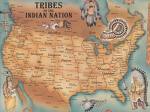


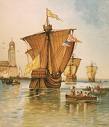








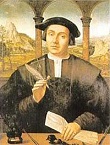








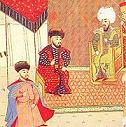




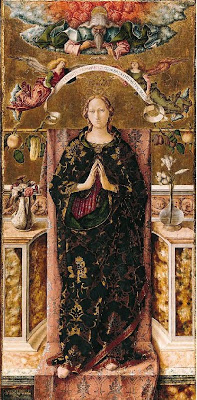
1492 The first day of the Jewish Passover falls during a blood-red moon; next 1948, 1967, 2014, 2015. Just what they need, illegal immigrants from Europe? The pop. of North Am., which peaked in 3,000 B.C.E. and stayed constant until this year suddenly halves, then soon rebounds?; pop. of the American Continent (North and South America): 15M-100M, incl. 7M-45M in South America, 7M-30M in Mexico and the Caribbean islands, and 1M-18M in the U.S. and Canada; they speak 1K+ languages, and are organized into 500+ tribes, ranging from the Inca in Peru, the Arawakan-speaking tribes around the Caribbean Sea, incl. the Taino (AKA Lucayans in the Bahamas) in the West Indies and Fla., the Mayans in Central America (Mesoamerica), the Aztecs in Mexico, ruled by emperor Ahuizotl (-1502), the Zapotecs in the Oaxaca Valley of SE Mexico, the Chichimeca tribes in the Gran Chichimeca plateau in NC Mexico, the Cumbia, Panteca and Coixcas in Cihuatlan (modern-day Zihuatanejo) in SW Mexico, the S Athabaskan-speaking Navajo (Navaho) ("great fields [of Tewa]"), Apache, and Quechan (Yuma) (pr. kwuh-tsan) in the SW U.S., the Lakota Sioux (Teton) ("adder", "enemy") and their enemies the Crow (Apsaaalooke) (Absaroka), the Tanoan-speaking Kiowas ("grizzly bear") on the Great American Plains, the Shoshone, Flathead (Salish) (the people"), Bannock, Ute, Arapahoe (Arapaho), Blackfoot, Dakota E of Detroit, Mich., and Sioux-speaking Mandan around the Missouri River; the Algonquian-speaking tribes in North America (known for the birch-bark canoe, and the tomahawk, from the Algonqian words "cutting utensil"), incl. the potlach-loving Kwakiutl in SW Canada, the Algonquian-speaking Anishinabe, Cheyenne (Suhtai) (Sutaio) (Tsitsistas) of the Great Plains, Anishinaabe (Algonquian)-speaking Chippewa (Ojibwe) (Ojibwa) around Lake Superior, Delaware (Lenape), ("real men") along the Delaware River, Iroquois-speaking Erie around Lake Erie, Sac (Sauk) and Fox around Lake Huron and Lake Michigan, Iroquois-speaking Huron (Wyandot) (Wendat), Iroquois (Haudenosaunee) ("people of the long house"), Iroquoian-speaking Tuscarora ("hemp gatherers") (Va.-N.C.), Algonquian-speaking Kickapoo ("stands here and there") (C and S Wisc.), Iroquois-speaking Mohawk ("people of the flint place") in the Mohawk Valley of upstate N.Y., Algonquian-speaking Narragansett ("on a small cape") in Rhode Island, Ottawa (Odawa) ("traders") on the Ottawa River in Ontario and Quebec, Alongquian-speaking Shawnee (AKA Savannah Indians), Iroquoian-speaking Susquehannock (Conestoga), and Wampanoag (Wopanaak) (Massasoit) ("eastern people") in E North America, the Athabascans, Eskimo (Inuit) ("eaters of raw flesh") ("the people"), Aleut (Unangan) (islands off the Alaskan Peninsula), Haida, and Tlingit in N Canada and Alaska; the Bella Coola (Nuxalk) in British Columbia (known for a religion with two heavens and two hells, and a female creator called Qama'itsa); in SE North America the 7-clan Iroquoian-speaking Cherokees of the Allegheny and Appalachian mountains in N.C., S.C., Tenn., Ga. and Ala., the Muskogean-speaking Creeks (Muskogee) (Muscogee) of Ala. and Ga. (#2 most powerful tribe S of New York after the Cherokees), the chickee-building Seminoles in Fla. (offshoot of the Creeks), the Yamasees, Chocktaws (Choctaws), Chickasaws, Natchez, and Houmas; the Siouan-speaking Yuchis (Uchees) (Euchees), and Catawbas ("people of the river"). 781 years, and it was more than worth it? On Jan. 2 the keys of Granada are surrendered to the forces of "Los Reyes Catolicos" (the Catholic Kings) Ferdinand II (1452-1516) and Isabella I (1451-1504) of Aragon and Castile by Boabdil (Muhammad XII) (1460-1533), who flees to Fez in N Africa, ending a 10-year effort by the Catholic kings, and becoming the final defeat of the Muslims in Spain, who invaded way back in 711, and were on the loser's team since the 1212 Battle of Las Navas de Tolosa, ending the Christian Reconquista (Sp. "reconquest") of Spain (begun 722); as Boabdil and his family leave the city, they pause at El Ultimo Suspiro del Moro (The Moor's Last Sigh) Bridge to look back at the glorious Alhambra ("red fortress"), and his mother tells him, "Weep like a woman for what you could not defend like a man"; meanwhile, wasting no time, after pulling strings with wealthy Marranos (closet Jews) Luis de Santangel(o), Gabriel Sanchez, and Juan Cabrero, auburn-haired (Marrano?) (front man for a Jewish conspiracy?) Christopher Columbus (1451-1506) meets with Ferdinand II and Isabella I in the Alhambra in Granada to beg for support for his proposed expedition to Cathay via the new improved westward ho route, promising to bring back gold and silver to finance an expedition to reclaim the Holy Land for Dear Christ, but they don't go for it, and he finally gives up and starts back for France to give their king the chance to become the next rich and admired Christian hero, but Isabella she-ain't-called-the-Catholic-for-nothing changes her mind at the last minute and sends messengers to stop him at the Bridge of Pinos, and they sign an agreement on Apr. 17, and the rest is, er, history - now America's ass is grass and whitey's got the lawnmower? Columbus was probably a secret Jew, a front man like English actor Sir Ben Kingsley (1943-) in the 1993 Steven Spielberg flick "Schindler's List", or maybe a Christian Jewish sympathizer like Oskar Schindler (1908-74) himself. Two, two, two expulsions in one, or, You must really try these strawberries and blueberries, we can take care of you wandering Jews? On Feb. 1 Spanish inquisitor-gen. Tomas de Torquemada (1420-98) gives Spanish Jews 3 mo. to accept Roman Catholic Christinsanity, er, Christinanity, er, Christianity or leave the country, and when they prove stiff-necked like always, on May 1 (Omer 19) Catholic Kings Ferdinand II and Isabella I order the Expulsion of the Spanish Jews, incl. all 250K non-converted Swine from Spain (50K families); after frantically trying to get something of value for their possessions (exchanging a house for an ass, a vineyard for a piece of cloth, etc.), and swallowing their gold and silver coins before going through custom posts, the last boatload leaves on Aug. 3; the ban on Jews is not lifted until 1968; Portuguese-born Jewish royal adviser Isaac Abravanel (1437-1508) is expelled; a massive number of Sephardic Jews migrate to N Africa, where they find themselves more educated, connected, and sophisticated than the Muslims, finding toleration and moving into govt. positions, which ends up stretching Muslim tolerance; many emigrate to the Ottoman Empire, where Sultan Beyazid II welcomes them into Constantinople, Izmir, Salonika, and other cities in Anatolia, the Balkans and Arab lands; others emigrate to England and Am. - no shortage of bankers, doctors, and lawyers now? On Apr. 26 Lorenzo the Magnificent de' Medici (b. 1449) dies after he falls ill and his physician gives him a potion containing ground pearls, and then calls "little friar" Girolamo Savonarola to his deathbed, only to be damned?; the Golden Age of Florence ends; he misses the New World by 6 blinkin' mo.?; his son Piero di Lorenzo de' Medici (1471-1503) becomes ruler of Florence (until 1503), and proves to not be so magnificent, becoming easy meat for Savonarola; Sandro Botticelli sees the light and becomes a good Christian again, becoming a follower of Savonarola by 1497 and turning his religious paintings mystical? Ouch, it just stinks? On May 31 Pope (since 1484) Innocent VIII (b. 1432) solemnly receives the Holy Lance, which Sultan (Grand Seignior) Bajazet II had surrendered to the Crusaders (it now sits in St. Peter's?), then dies on July 25, and on Aug. 11 his nephew Rodrigo (Roderigo) Borgia (Borja y Borja), a Catalan Spaniard from Valencia (father of Lucrezia Borgia) bribes enough cardinals to be elected Pope (#214) Alexander VI (1431-1503); on Aug. 26 he is invested in the Lateran after the most sumptuous ceremony in papal history; he committed his first murder at age 12; by this time he is father of at least seven children out of wedlock, four by longtime mistress Vannozza (Giovanna) dei Cattanei (1442-1518), which he advances unashamedly; his mistress since 1489, 18-y.-o. Giulia Farnese (1474-1524), whose long golden hair reaches to the floor is dubbed La Bella and the Bride of Christ; "Ten papacies wouldn't have sufficed to satisfy all his cousins" as he hands out lucrative posts to them. On June 7 king (since June 25, 1447) Casimir IV (b. 1427) dies, and his eldest son John Albert becomes Jan I Olbracht (John I Albert) (1459-1501), king of Poland (until June 17, 1501), while his 2nd son Alexander I Jagiellon (1461-1506) becomes grand duke of Lithuania (until Aug. 19, 1506); meanwhile Ivan III of Moscow forms an alliance with Crimean khan (since 1466) Menli I Girai (Giray) (1445-1515) and invades S Lithuania in an attempt to increase his domains, starting the First Russian (Muscovite)-Lithuanian War (ends 1494). How to lose 93 million friends in ten days, or, When he started out he didn't know where he was going, when he got there he didn't know where he was, and when he got back he didn't know where he'd been, until he looked between his legs? The biggest TV reality show without teleprompter or cue cards? On Aug. 3 (same day the Jews are expelled from Spain by Ferdinand II and Isabella I) after receiving 17K ducats from baptized Jewish finance minister Luis de Santangel (-1498) (who talked the monarchs into it), and allegedly receiving a vision from the Holy Spirit to bear Christ to the West Indies (or a vision from the Devil to carry his Catholic Church there?), writing "I could feel his hand upon me to sail to the Indies... There was no question that the inspiration was from the Holy Spirit", 41-y.-o. Christopher (Gr. "Christ-bearer") Columbus (Lat. "dove") (1451-1506) (who is really working for the Illuminati, since his real name is Cristobal, i.e. "anointed of Baal or Satan", plus Colombo (It.) = Colom (Catalan) = Colon (Sp.) = anus?, and Lat. "paloma" = dove = penis?) (mixed up with Genoese peasant weaver Cristoforo Colombo?), and who has never been farther E than the Aegean Sea begins his First Voyage for Asia by going W instead of E, setting sail from Paloma, er, Palos, Spain for the island of La Gomera in the Canary Islands to pick up wine and water, getting into a romance with gov. Beatriz de Bobadilla y Ossorio (1462-1501) and staying for 1 mo. (returning in 1493 and 1498, when she marries somebody else), who gives him sugar cane cuttings, after which he sails for the "West Indies" (West Asia), thinking that his voyage will lead him to Cathay (China), Cipango (Japan), the Spice Islands (the Moluccas), then India in three ships with a total crew of 88, incl. five Marranos (converted Jews), incl. interpreter Luis de Torres, surgeon Marco, physician Bernal, and sailors Alonzo de la Calle and Gabriel Sanchez (who later sells Columbus on the idea of capturing 500 Indians to sell as slaves in Seville, becoming the beginning of Am. slavery); the crew is really Catalonian?; the ships incl. the caravel Pinta (Sp. "pint, spotted one") (the fastest), piloted by Martin Alonzo Pinzon (Pinzón) (1441-93), the caravel Nina (Nińa) (Sp. "girl") (real name Santa Clara) (Columbus' favorite ship), piloted by his brother Vincente Yanez Pinzon (Yáńez Pinzón) (1461-1515) (who ends up going on all five of Columbus' voyages), and the 235-ton carack (nao) Santa Maria (real name Mariagallante = Gay Mary), Columbus' flagship (crew of 70) (Columbus calls it "La Capitana") (the Santa Maria was used in the 3rd voyage, but Christopher's son Ferdinand writes a history which starts the confusion going); since there are no watches yet to determine longitude at sea, Columbus sails first into the latitude of Cipango (Japan) (the Tropic of Cancer) and proceeds straight W, being helped greatly by the trade winds, which he discovers as he goes. On Aug. 31 German humanist scholar Conradus Celtis (Conrad Celtes) (1459-1508), whom HRE Frederick III had appointed poet laureate at the urging of Frederick of Saxony gives a famous speech to students in Ingolstadt, calling on Germans to rival the Italians in letters and learning. The Ultimate Thank God It's Friday? On Oct. 10 Columbus' crew nearly mutinies, and makes Columbus promise to return home if land isn't sighted in two days (sounds like a fairy tale concocted later to make them seem to enjoy divine favor?); on Oct. 11 (10 p.m.) a UFO is sighted, consisting of "a light glimmering at a great distance", which disappears and reappears several times, moving up and down "in sudden and passing gleams" - let me guess, a welcome signal from ETs? On Oct. 12 (Oct. 22 Gregorian) (Fri.) (2:00 a.m.) (after 36 days and 2.6K mi.), Pinta's crow's nest sailor Rodrigo de Triana (Juan Rodrigo Bermejo) (1469-?) does guess what, you guessed it, sights land (and later gets so pissed-off at not being given a reward that he moves to Africa and converts to Islam?), and Christopher Columbus (1451-1506) and his crew anchor at San Salvador (Sp. "Holy Savior") (Watlings) Island (called Guanahani by the aborigines) in the Bahamas just N of the Tropic of Cancer, at 23.5 deg. N 75 deg. W (the log books say 24 deg. N 75.5 deg. W) (named after pious pirate Watling, who forbade pillaging on Sundays, the residents renaming it San Salvador in 1926 to claim it as the place of Columbus' first landfall after 434 years of controversy, but it is never conclusively decided, with Cat Island and Samana Cay proposed), and Columbus dresses in full admiral's regalia to take possession of the new land in the name of Ferdinand and Isabella; having never seen a ship, the natives don't see them until a shaman convinces them that they're real, after which they greet Columbus with warm hospitality, causing him to write "They willingly traded everything they owned... They do not bear arms... They would make fine servants... They could easily be made Christians... With fifty men we could subjugate them all and make them do whatever we want"; after the natives present them with tobacco leaves, which they discard, they sail SW through the Great Bahama Bank, landing on Cuba on Oct. 17, thinking it is the Chinese continent, searching in vain for the magnificent cities described by Marco Polo; on Oct. 20 Columbus writes "I shall set sail for another very large island which I believe to be Cipango, according to the indications I receive from the Indians on board", which proves to be Hispaniola, and he finally lands on Haiti on Dec. 5. On Nov. 3 after invading France to punish it for supporting Perkin Warbeck, Henry VII of England forces them to agree to the Peace (Treaty) of Etaples (Étaples) (official end of the Hundred Years' War), in which France expels Warbeck and pays England an indemnity of Ł159K. On Nov. 7 a 250-lb. meteorite lands in the village of Ensisheim, France in NE France, becoming the oldest meteorite with a known date of impact; it is housed in the town's museum La Musee de la Regence, becoming a tourist trap. In Nov. a gift of tobacco leaves from the Arawaks (Aruacans) is kept this time after Santa Maria crewman Rodrigo de Jerez learns to smoke from the natives, and brings back the habit to his hometown of Ayamonte, causing his wife to denounce him as a man who "swallows fire, exhales smoke, and is surely possessed by the devil", after which he is imprisoned by the Spanish Inquisition for seven years, by which time the super-addictive habit of smoking has caught on. On Dec. 21 (St. Thomas' Day) Columbus discovers Port St. Thomas in Haiti, and on Dec. 22 he has his first meeting with Marien chief (cacique) Guacanagaric (Guacanagarix) (Guacanagari), who allows him to found the settlement of La Navidad; too bad, the settlers are killed by a rival tribe before Columbus returns on his 2nd voyage. On Dec. 24 (Dec. 15 Old Style) Columbus writes in his journal that he is very impressed by the aborigines, who are of "pleasing appearance with fine features and medium height with muscular bodies", adding, "A better race there cannot be, and both the people and the lands are in such quantity that I know not how to write it... All here have a loving manner and gentle speech". On Dec. 25 the Santa Maria sinks off Hispaniola (La Espanola) (Haiti); it was first shot with a cannonball by Columbus' flagship to disable it on Caracol Beach, and rechristened Ft. Natividad, housing the men Columbus left behind until the natives attacked and burned it?; he left the men behind to force Isabella into financing a 2nd voyage?; her overseers, the fleet's master at arms, comptroller, and secy. were left behind to avoid being contradicted when he told Isabella he had discovered India? - she had to leave to give birth to Santa Claus? On Dec. 26 Columbus writes in his journal that he had been hoping to find gold "in so great quantity that the Sovereigns within three years would undertake and prepare to go and conquer the Holy Places [Holy Land]"; chickens and rats are introduced to America; smallpox is also introduced to native Ams. as a get-unwell card by 1518; Jews are also introduced next year, with Portuguese Jews settling in St. Thomas Island, later becoming the first large plantation owners, running sugar factories with 3K African slaves; too bad, when the new discovery doesn't fulfill the original mission of furnishing a route to India and China, desperation sets in, causing the need to milk the New World for plunder and profit to take over, resulting in a mean cold systematic mass murder machine that goes on for cents. and reduces the native pop. to almost nil; Columbus hangs natives 13 at a time in honor of Christ and the 12 Apostles? Vasco da Gama (1460-1524) directs the defense of the Portuguese colonies from the French on the coast of Guinea. Duke Albert of Bavaria joins the Swabian League, undertaking to uphold the authority of the Holy Roman Empire. The Ottomans under Bajazet II of Turkey invade Hungary, and defeat them at the Battle of the Save River. Sikander II Lodi, sultan of Delhi annexes Bihar in NE India (capital Patna). The 11K-man army Duchy of Courland in modern-day Latvia is forced to pay half its profits to the Teutonic Order, causing it to secretly parley with King John Albert of Poland for help in exchanging for helping them acquire the order's Baltic territories. King (since 1471) Dhammazedi (b. 1409) dies, and his eldest son Binnya Ran II (1469-1526) becomes Hanthawaddy king #17 of Burma (until 1526), immediately putting all royal offspring to death then becoming revered for his gentle rule. A papal letter says that Greenland no longer has any priests, and that believers are reduced to venerating the altar cloth; the colony is never mentioned again, and all contact is lost in the same year that America, a Greenlander discovery is rediscovered. The expulsion of the Sephardic Jews from Spain causes their influence in Jewry to wane, permitting the Qabala (Kabbalah) to begin to replace the Hakirah (Mishna Torah) in mainstream Jewish theology? A bunch of Jews hike from Spain to Salonica, Greece; in 1943 the Nazis deport them all to Auschwitz. German Black Forest humanist Johann Reuchlin (1455-1522) begins the study of Hebrew, incl. the Torah and Talmud, which pisses off Jews and Catholic Dominicans alike, causing him to attack the Roman Catholic Church, although he never goes for that Reformation thang of his nephew Melanchthon? - it's important to me that you know you are free, cause I never wanna make you change for me? Antoine de Ville, lord of Domjulien and Beaupre leads a team that becomes the first to ascend 2,085m Mont Aiguille in SW France 36 mi. S of Grenoble, using ladders and ropes, launching the sport of mountaineering? Henry VII issues a license to Flemish brewer John Merchant to export large quantities of an "ale called beere", requiring it to be of good quality, with inspection by Geffrey Gate, owner of the Red Lion Brewery in East Smithfield, London on the Thames River between the Tower of London and Wapping; Gates goes on to destroy the brewhouses twice due to weak beer; in 1615 the brewery is leased by John Parsons for $44/year for 31 years, after which it stays in the family for three more generations, with their beer becoming known as Parson's Black Champagne; in 1694 the Red Lion Brewery is assessed as the most valuable brewery in London; his son Sir John Parsons Jr. (1639-1717) is elected lord mayor of London in 1703; in 1717-41 his Jacobite son Sir Humphrey Parsons (1676-1741) becomes mgr., going on to be elected lord mayor of London in 1730 and 1740, and obtain a privilege of supplying the French court in 1730; in 1779 the brewery is acquired by Henry Goodwyn, followed in 1802-1933 by the Hoare banking family, who run Hoare's Bank at the sign of the Golden Bottle in Fleet St. Architecture: Bramante starts building the choir and cupola of St. Maria delle Grazie in Milan, becoming his masterpiece, and the first time candelabrum shafts are used as an exterior decoration to pilasters (finished 1498). German sculptor Veit Stoss (1438-1533) sculpts the red marble Tomb of Casimir IV in Crakow Cathedral; it is opened by 12 researchers on Friday the 13th of April, 1973, and 10 die from fungi. Inventions: German geographer Martin Behaim (1459-1507), who accompanied Diogo Cao in his 2nd expedition to West Africa in 1485-6, then was knighted by king John II of Portugal builds the Erdapfel (Earth Apple), the first globe of the Earth in Nuremberg, using the same sources as Christopher Columbus, showing Japan 1.5K mi. E of Europe - looking pretty good to Spanish Jews? Nonfiction: Anon., Apicius Culinaris (Milan); 4th-5th cent. C.E. Roman cookbook, printed by Blasius Lancilotus; a rev. ed. is printed in 1498 by Guiliermus de Signerre Rothomagensis. Elio Antonio Nebrija, Latin-Spanish Dictionary. Art: Sandro Botticelli (1445-1510), 96 Illustrations for Dante's "Divine Comedy" (1492-5). Carlo Crivelli (1430-95), The Immaculate Conception. Ghirlandaio (1449-94), La Visitation Entre Marie Jacobie et Marie Salome. Novels: Diego de San Pedro (1437-98), La Carcel de Amor (The Prison of Love); one of the first Spanish novels of courtly love - Courtney Love in Nirvana? Births: Spanish humanist scholar Juan Louis Vives (d. 1540) on Mar. 6 in Valencia. French queen ("the First Modern Woman" - Samuel Putnam) Margaret of Navarre (Marguerite d'Angouleme) (d. 1549) on Apr. 11 in Angouleme; sister of Francis I of France; wife (1509-25) of Charles IV d'Alencon (1489-1525) and (1525-49) Henry II of Navarre (-1555); mother of Jeanne III of Navarre (1528-75) (mother of Henry IV); writer and patron of lit., and protector of Protestantism. Italian satirical writer Pietro Aretino (d. 1556) on Apr. 20 in Arezzo; illegitimate; the first Euro journalist; inventor of modern literate porno? German-Danish statesman-gen. (Protestant) Johan (Johann) Rantzau (d. 1565) on Nov. 12 in Steinburg (near Itzehoe); father of Heinrich Rantzau (1526-98) and Paul Rantzau; great-grandfather of Josias von Rantzau (1609-50). Swedish regent (1513-20) Sten Sture the Younger (d. 1520); son of Svante Sture. Swiss-German composer Ludwig Senfl (d. 1543). German composer and Protestant cleric Benedictus Ducis (d. 1544). Italian Renaissance Mannerist painter-architect Giulio Romano (Giulio Pippi de' Giannuzzi) (d. 1546) in Rome; Raphael's chief pupil and heir. English physician-naturalist Edward Wotton (d. 1555) in Oxford. German arithmetician Adam Riese (Ries) (d. 1559) in Staffelstein, Franconia; writes in German not Latin. English cloth merchant (lord mayor of London in 1553) Sir Thomas White (d. 1567) in Reading, Berkshire; knighted in 1553. Ottoman naval officer-artist Nigari (Reis Haydar) (Haydar Ra'is) (d. 1572). Spanish soldier-historian Diaz del Castillo Bernal (d. 1581). Deaths: Burmese king (1471-92) Dhammazedi (b. 1409) in Pegu. Persian poet Jami (b. 1414). Italian painter Piero della Francesca (b. 1420). Polish king (1447-92) Casimir IV Jagiellon (b. 1427) on June 7 in Hrodna (Belarus). English queen (1464-83) Elizabeth Woodville (b. 1437) on June 7/8 in Bermondsey Abbey. Scottish poet Blind Harry (b. 1440). Spanish nobleman Beltran de la Cueva, 1st duke of Albuquerque (b. 1443) on Nov. 2 in Cueva. Florence godfather Lorenzo de' Medici (b. 1449) on Apr. 8. French-Flemish composer Antoine Busnoys (Busnois) (b. ?). Songhai ruler Sonni Ali (b. ?).





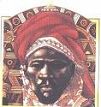

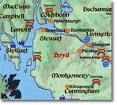
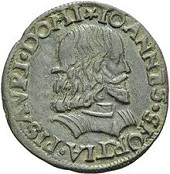
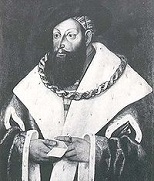




1493 Veni vidi vici? On Jan. 16 Christopher Columbus departs from Hispaniola for Spain, first seeking the latitude of Palos to catch the westerly winds; his voyage path has a big bend caused by his compass beginning to point east of north instead of west of north?; he arrives at Lisbon on Mar. 4, returns to Spain from his first voyage to the Western Hemisphere on Mar. 15 (the Ides of March), and is hailed as a hero (like Caesar?); he brings 10 live aborigines with him, parading them along with parrots through the streets during his triumphal procession to see Ferdinand II and Isabella I in Barcelona (thus becoming the New World's first slave trader); in Apr. the big news is announced in the banquet hall of Barcelona; four of the Indians get sick so Columbus leaves them in the care of his Florentine backer Gianetto Berardi (-1495) in Seville (who is letting Amerigo Vespucci live with him at the time); the gold he brings back is used to gild the ceiling of the Church of Santa Maria Maggiore in Rome. On Mar. 4 the debut issue of the Spanish magazine Internat. Press Release pub. Colon's First Letter in Lisbon, Portugal, a letter sent to Luis de Santangel, clerk of the Racion de la Corona de Aragon by Don Cristobal Colon, new Adm. of the Ocean Sea, Viceroy and Gov. of the Indies, containing the soundbyte: "Sir, Since I know that you will rejoice with the glorious success that our Lord has given me in my voyage, I write this to tell you that in 33 days I sailed to the Indies"; the letter was interepted by Barcelona printer Pedro Posta, who mispells his name as Colom, after which it is translated by Aliander de Cosco into Latin and pub. in Rome on Apr. 29, changing his name to Columbo, causing that name to spread over Europe after 11 eds. are pub. in 1493 and six more by 1497. On May 4 (June 28 Gregorian) Pope Alexander VI issues the bull Inter Caetera Divina ("Among other works"), dividing the New World between Portugal and Spain along a N-S line 100 leagues W of the Cape Verde islands, giving Portugal Africa and the E side of South America, but since they didn't realize yet that most of South America lies way E of North America, Spain ended up with most of the New World in both North and South America. On May 23 to restore Margaret of Burgundy's dowry after Charles VIII married Anne of Brittany instead of Margaret of Austria, Maximilian I forces him to agree to the Treaty of Senlis, which restores Artois and Franche-Comte to Mary of Burgundy's 15-y.-o. handsome son Philip I the Handsome of Castile, although Burgundy and Picardy remain French. On Aug. 19 HRE (since 1452) Frederick III of Hapsburg (b. 1415) dies, and his son Maximilian I (1459-1519) becomes the first to take the title of HRE-elect. On Sept. 9 the Battle of Krbava Field near modern-day Udbina in C Croatia sees Bosnian Sanjak Bey Hadim Yakup-Pasa with 8K Akincis (Ottoman light cavalry) returning from a pillage expedition to Styria and Croatian Zagorje smash a Croatian feudal army of 2K cavalry and 8K infantry under command of Ban Emerik (Mirko) Derencin (Imre Derencsenyi), killing 7K incl. virtually all the nobles, the rest along with Ban Derencin captured by the Turks and taken away for ransom; Croatia, which is a vassal of Hungary was broken militarily, causing many Croats to flee to Austria and Italy. On Sept. 24 Christopher Columbus begins his 33-mo. Second Voyage to the Caribbean in a grand fleet of 17 ships with 1.2K crew (incl. some free black Africans?), leaving the Canary Islands on Oct. 13, and arriving in the Bahamas in Nov., sighting Saint Martin Island on Nov. 11, becoming the first voyage to carry limes to prevent scurvy, planting the first sugar cane in the New World in Hispaniola, which has its first harvest in 1501, after which cane sugar mills are built in the 1520s in Cuba and Jamaica, along with hundreds in Brazil by 1540, causing a great need for African slaves to work the sugar cane fields, which leads to the Triangle Trade with Africa and Europe; he brings horses to the New World, albeit the West Indies only, leaving it to Cortez to bring them to the mainland in 1519; on Nov. 19 Columbus discovers Puerto Rico (Sp. "rich port") (Arawak name Boriquen), then reaches Espanola on Nov. 22, followed by La Navidad on Nov. 28, finding that 40 men previously left there are all dead, and on Dec. 7 founds the town of La Isabela on the N coast of Santo Domingo, becoming the first planned colonial town in the New World, which only lasts a few years after mismanagement, disease, hurricanes, and mutiny; he then sets off to the SE and discovers the Virgin Islands (almost 50 cays and islands), followed by St. Christopher (Kitts) (Liamuiga), Nevis, Antigua and Barbuda, and Montserrat (Sp. "saw-toothed mountain"), the twin butterfly-wing islands of Guadeloupe (Carib "Karukera" = island of beautiful waters) (and his first pineapples), Dominica (Lat. "Sunday") (discovered on Sun., Nov. 3) (home of Caribs who practice ritual cannibalism, which the Euros exaggerate to justify inhuman treatment of all Indians), and St. Thomas; he also discovers Jamaica, 90 mi. S of Cuba and 100 mi. W of Haiti, home to the unlucky Arawaks, and names it St. Iago (James); he first encounters the canoe (Sp. canoa) in use by Caribbean aborigines, whom he calls cannibals, because he observes the ferocious man-eating Caniba chowing down on tasty peop and hume? - stand by your man? Urged on by Duke Ludovico Sforza the Moor of Milan, the last patron of the relentlessly persecuted Renaissance, who is bothered by his isolation after the death of Lorenzo de' Medici, Charles VIII of France heeds the appeals of Neapolitan refugees and prepares an invasion of Italy to destroy Italian autonomy (begins 1494). The Turks invade Dalmatia and Croatia. The Jews are expelled from Magdeburg. The Statute of Piotrkow grants the Polish aristocracy privileges at the expense of burghers and peasants; the old town of Piotrkow (Petrokov) in Lodz Province near the Pilica River 90 mi. SW of Warsaw becomes the place Polish kings are elected through the 16th cent. The first Bundschuh peasant revolt (named after their tied working boots) begins in Alsace and SW Germany. It all happened in the kitchen? The proposed reforms of the Dominican Order in Tuscany by Dominican friar Girolamo Savonarola (1452-98) are accepted by Pope Alexander VI, and he is appointed vicar-gen., going on to have hos beaten and homos burned, and send gangs of militant youths out to enforce his reign of terror, er, kingdom of God on Earth; Pope Alexander VI absolves Giovanni Pico della Mirandola (1463-94) (last of the Schoolmen) of heresy, and appoints his 18-y.-o. son Cesare Borgia (1475-1507) as a cardinal, becoming notorious for licentious habits and violent temper; Mirandola visits Florence, and is turned on by religious reformer Girolamo Savonarola and his prophecies of the coming Antichrist and how Florence will soon become "the reformation of all Italy" and its people will become God's elect, promising to give away his possessions and become a promising to give away his possessions and become a wandering preacher, but dies next year before he can do it. Pope Alexander VI's 13-y.-o. probably virginal daughter Lucrezia Borgia (1480-1519) is married in the papal palace to Giovanni Sforza, lord of Pesaro in a long white gown whose train is borne by a black boy, followed by 150 women (incl. the pope's mistress Giulia Farnese) to the papal throne surrounded by 11 cardinals; the marriage is annulled in 1497 - the black boy got to her? wandering preacher, but dies next year before he can do it. Scottish king James IV's first important mistress Marion (Margaret) (Margot) Boyd, niece of Archibald Douglas, 5th earl of Angus bears him a son, Alexander, whom he makes archbishop of St. Andrews at age 11; she also bears daughter Catherine, who marries James Douglas, 3rd earl of Morton. Askia Mohammed Toure (1443-1538) becomes king of the Songhay (Songhai) Empire in W Sudan, growing it to the largest country in West African history (until ?), expanding trade with Europe and Asia, and establishing Islam as the official religion, spurring a cultural revival. Maximilian I makes Paul Hofhaimer (1459-1537) his court organist and Heinrich Isaak (1450-1517) his court composer. Dutch printer Gotfried van Os, who calls himself Gotfred of Ghemen begins pub. books in Copenhagen. There was a gypsy who had a brother who died, so which brother died? The first Hebrew printing press in Constantinople is founded by two Jewish exiles from guess where (Spain), Samuel ibn Nahmias and David ibn Nahmias, and another one is founded later in Salonika; too bad, there is a Muslim ban on printing in Arabic and Turkish until the 18th cent.? Duke George "the Rich" (1455-1503) of Bavaria-Landshut extends the 1447 Munich beer purity ordinance to the duchy of Landshut in C Bavaria. Architecture: The Cathedral of Toledo (begun 1226) is finished after the vaults of the central nave are finished. Nonfiction: Jacques Lefevre d'Etaples, Paraphrasis in Aristotelis Octo Physicos Libros. Henry Parker, Dialogue of Dives and Pauper; first dated book pub. by Richard Pynson. Vu Quynh, Linh Nam Chich Quai; treasury of Vietnamese folklore. Hartmann Schedel (1440-1514), The Nuremberg Chronicle; illustrated history of the world from Creation in Latin and German. Inventions: Leonardo da Vinci designs the Airscrew, the first flying machine, but never builds a working model - suggested by his sexual orientation? Art: Albrecht Durer (1471-1528), Self-Portrait Holding a Thistle; age 22; makes another later at age 28. Filippino Lippi (1457-1504), Saints Paul and Frediano (panel). Il Perugino (1445-1523), Pieta (Pietŕ) (1493-4) (Florence). Pinturicchio (1454-1513), Six Frescoes in the Vatican Library (1493-8). Tilman Riemenschneider (1460-1531), Madonna (sculpture) (Wurzburg Cathedral). Births: German viceroy of Valencia (1523-5) margrave Johann of Brandenburg-Ansbach (d. 1525) on Jan. 9 in Plassenburg; son of Margrave Frederick I and Sophia of Poland; 2nd husband of (1519-25) Germaine de Foix (1488-1538). French marshal-constable Anne de Montmorency (d. 1560) on Mar. 15 in Chantilly. Italian poet Agnolo Firenzuola (d. 1543) on Sept. 28 in Florence. Italian "Hercules and Cacus" Renaissance sculptor-painter Baccio (Bartolommeo) Bandinelli (Brandini) (d. 1560) on Oct. 17 in Florence; known for insane jealousy of Michelangelo and Benvenuto Cellini. German-Swiss Renaissance physician-philosopher-alchemist ("the Father of Toxicology") (grandfather of pharmacology) ("the Devil's Doctor") Philippus Paracelsus (Lat. "Greater than Celsus") (Aureolus Theophrastus Philippus Bombastus von Hohenheim) (d. 1541) on Nov. 11 (Dec. 17?) in Einsiedeln; student of Johannes Trithemius (1462-1516). German Bavarian pure beer-loving duke (1508-50) and co-duke (1516-45) William IV (d. 1550) on Nov. 13 in Munich; son of Albert IV and Kunigunde of Austria (daughter of HRE Frederick III); brother of Louis X (1495-1545). Scottish archbishop of St. Andrews (1504-13) Alexander Stewart (d. 1513); bastard son of James IV and Marion (Margaret) Boyd, niece of the 2nd wife of Archibald Dougls, 5th earl of Angus. Swedish "Swedish Chronicle" Reformation writer-reformer ("the Swedish Martin Luther") Olaus (Olavus) Petri (Persson) (Petersson) (d. 1552) in Orebro; educated at the U. of Leipzig, and U. of Wittenberg. German Renaissance painter Barthel Bruyn (the Elder) (d. 1555) in Wesel (Cologne?). Swiss Protestant patriot writer (former Cluniac monk) (hero of Byron's "Prisoner of Chillon") Francois Bonivard (d. 1570) in Seyssel; of an old Savoyard family; starts out Roman Catholic then after four years of imprisonment in the Castle of Chillon on Lake Geneva near Montreux goes Protestant. Dutch (Flemish) religious poet Anna Bijns (d. 1575) in Antwerp. Spanish physician-botanist Nicolas (Nicolás) Bautista Monardes (d. 1588) in Seville. Deaths: Austrian German king (1440-86), and HRE (1452-93) Frederick III of Hapsburg (b. 1415) on Aug. 19 in Linz - how is Austria going to rule the world when it has just doubled in size and they didn't get any of the new parts? Transylvanian prince (1479-93) Stephen V Bathory (b. 1430).




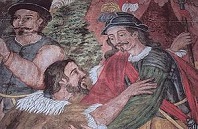


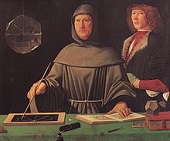
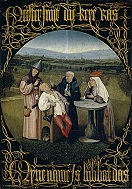



1494 The plague returns to Iceland, killing half its pop. As the year begins Italy is composed of the Kingdom of the Two Sicilies (Naples) in the S, the Papal States from Rome NE to Ravenna, the Repub. of Florence, the Repub. of Genoa (incl. Corsica), the Repub. of Siena, the Venetian Repub. (incl. Istria and Dalmatia on the E side of the Adriatic Sea), the Duchy of Ferrara, the Duchy of Milan, the Duchy of Modena, the Duchy of Savoy (bordering France), the Marquisate of Mantua (Mantova), and the Marquisate of Saluzzo. They're thinking of banning toy guns, but keeping the real ones? On Jan. 25 the Italian Wars, a power grab by France and Spain over the states of Italy begin (end 1559) when Ferdinand I Ferrante Ferdinand I Ferrante (b. 1423) dies, and his Renaissance-loving humanist eldest son Alfonso II (d'Aragon) (1448-95) becomes king of Naples (the Two Sicilies), which is bankrupt, and despite the pope coronating him on May 8, Charles VIII of France reasserts the Angevin claim to Naples and the title of king of Jerusalem which goes with it, and invades Italy in Sept. in the Valois Blitzkrieg of 1494 with a fast-moving force; "The French came upon all this like a sudden tempest that turns everything upside down" (Francesco Guicciardini); the news causes European states to shift into high gear in order to modernize? On May 31 the First Battle of Acentejo on Tenerife in the Canary Islands is a V by the native Guaranches over the Spanish under cruel Javier Alonso Luis Fernndez de Lugo (-1525), (who conquered La Palma Island in 1492-3), who lose 900-1K casualties, becoming the greatest Spanish D during their Atlantic expansion; after a rock knocks out most of his teeth, de Lugo escapes with his life by ditching his red Adelantado cape and dressing as a common soldier; on Nov. 14-15 after assembling a 1K-man army he defeats the Guaranches at the Battle of Aguere, followed on Dec. 25 at the decisive Second Battle of Acantejo; in 1496 de Lugo finishes conquering Tenerife, founding the town of Santa Cruz de Tenerife and ruling the natives like er, dogs. On June 7 Spain and Portugal sign the Treaty of Tordesillas, moving the pope's demarcation line 170 leagues to the W. On June 24 Italian explorers John Cabot (1450-98) and his son Sebastian Cabot (1476-1557) discover North Am.?; he is actually Italian sea captain Giovanni Caboto from Genoa, changing his name to an English one to be PC? On Oct. 21 Gian Galeazzo Sforza (b. 1469) dies in captivity, and his uncle-usurper (supposedly regent) Ludovico Maria Sforza the Moor (1452-1508) becomes duke of Milan; in Mar. HRE Maximilian I marries Gian Galeazzo Sforza's aunt Bianca Maria Sforza (1472-1510). On Nov. 17 Charles VIII of France enters Florence after expelling Piero de' Medici, then enters Rome, causing Pope Alexander VI to take refuge in Castel Sant'Angelo; the Medicis lose power in Florence and begin an 18-year exile caused by Girolamo Savonarola; Michelangelo begins traveling; "Little friar" Girolamo Savonarola sets up a theocracy in Florence, urging followers to burn their worldly goods in "the bonfire of the vanities", enjoying large public BBQs of hated Medici items such as books, figurines, wigs, cosmetics and jewels, with the clear intention of breaking with the classical pagan past dredged up by the Renaissance; Sandro Botticelli hurls his own paintings into the fire; Savonarola's fanaticism stirs up intense hatred by his opponents, incl. Pope Alexander VI, eventually threatening to drive Europe to the verge of collapse? HRE Maximilian I recognizes Richard, duke of York, er, Perkin Warbeck as king of England; meanwhile Henry VII sends soldier-diplomat Sir Edward Poynings (1459-1521) to Ireland as new English viceroy to replace pesky Earl Gerald of Kildare, who had been supporting Perkin Warbeck, making sure the new viceoy is purely English and will reestablish English control against the sell-out Irish-loving longtime Anglo-Norman residents; Poynings summons the Irish Parliament to Drogheda and informs them that they will be subservient to the English Parliament, and forces them to enact Poyning's Law (Statute of Drogheda) (repealed 1782) to Anglicize them, reducing the power of Anglo-Irish lords and providing for the defense of the English Pale while resurrecting and reconfirming the 1366 Statue of Kilkenny enforcing segregation and confirming the Irish as second class in their own country; the Irish Parliament is made subservient to the English king, requiring him to be informed of proposed legislation and then license Parliament to meet if he approves it; after a time Kildare, the most powerful of the Irish nobles is reinstated on a short leash, and the Pale prospers while those outside the Pale, ahem it takes until the 1800 Acts of Union to repeal it. Ivan III of Moscow closes the Hanseatic trading office in Novgorod. Aemilius Paulus of Verona is appointed historiographer royal to Charles VIII of France. Yet another boy Messiah appears on the scene, this time in Persia? 7-y.-o. Ismail (Ism'ail), son of Haydar becomes head of the persecuted Shiite Safavid order, fleeing from Ardabil to Gilan and finding asylum with a local Shiite ruler for five years, during which time he develops ideas regarding his divine leadership and messianic mission, and makes plans to kick White Sheep butt bigtime to prove it? The First Russian-Lithuanian War (begun 1492) ends with a truce and the marriage of Ivan III's daughter Elena to grand duke Alexander. The Pots of Luck goods lottery is introduced in Leipzig, Germany as a popular entertainment. The U. of Pisa revolts and moves to Florence. Christopher Columbus sends 500 Am. slaves to Spain for sale in Seville. Songjong II dies, and his eldest son Yeonsan-gun (Yonsan Gun) (1476-1506) becomes Yi king of Korea (until Nov. 20, 1506), going on to become the worst tyrant in Joseon Dynasty history, launching two bloody purges of the seonbi elite, forcing 1K woman from the provinces into palace prostitute, and seizing the Seonggyungwan study hall for use as a bordello. The Kingdom of Saloum (ends 1969) in modern-day Senegal is founded as a sister kingdom to the Kingdom of Sine, with capital at Kahone. German artist Albrecht Durer (Dürer) (1471-1528) returns to the studio of his teacher Michel Wohlgemuth after a tour of Europe (Colmar, Basel, Venice), and works there until 1497, when he establishes his own studio - somebody help me, I can't escape myself? The first mention of malted barley whiskey production in Scotland. Nonfiction: Jean Mauburnus, Rosetum Exercitiarum Spiritualium; first systematic study of musical instruments. Luca di Pacioli (1445-1517), Summa de Arithmetica, Geometria. Proportioni et Proportionalita (Venice); the first textbook on modern accounting theory, incl. double-entry bookkeeping, causing him to be called "the Father of Accounting and Bookkeeping"; first printed use of +/- symbols for arithmetic? Johann Reuchlin (1455-1522), De Verbo Mirifico. Girolamo Savonarola (1452-98), Psalms; disses the Roman Catholic Church for its acceptance of astrology; "I say that astrology, since it tries to divine the future, is the cause of much superstition and heresy." Art: Hieronymus Bosch (1450-1516), Cutting the Stone; a surgeon wearing a funnel hat extracts the Stone of Madness (keye) from a patient's head using trepanation. Sandro Botticelli (1445-1510), Calumny; The Last Communion of St. Jerome. Il Perugino (1445-1523), Portrait of Francesco dell' Opera (Florence). Pinturicchio (1454-1513), Resurrection (Apostolic Palace, Vatican); contains the first known depiction of Native Americans, naked wearing headdresses. Leonardo da Vinci, Madonna of the Rocks (begun in 1483). Poetry: Matteo Maria Boiardo (1434-94), Orlando Innamorato; first poem to combine Arthurian and Carolingian romances, giving new life to the chivalrous epic; left unfinished at his death. Sebastian Brant (1457-1521), The Ship of Fools (Das Narrenschiff); satirical poem about the gradual advances of Islam on "sleeping" Christendom"; big bestseller; tr. into English by Alexander Barclay in 1509, and Henry Watson in 1517; "Our faith was strong in the Orient./ It ruled in all of Asia/ In Moorish lands and Africa./ But now [since the seventh century] for us these lands are gone... /We perish sleeping one and all/ The wolf has come into the stall/ And steals the Holy Church’s sheep./ The while the shepherd lies asleep./ Four sisters of our Church you find/ They’re of the patriarchic kind/Constantinople, Alexandria, Jerusalem, Antioch./ But they’ve been forfeited and sacked/ And soon the head [Rome] will be attacked." Walter Hylton (1340-96), Ladder of Perfection (posth.); by an Augustinian canon of Thurgarton, Nottinghamshire, England; first exhaustive work of ascetic mystical theology in English. Births: German physician-scientist ("Founder of Mineralogy") Georgius Agricola (Georg Bauer) (d. 1555) (Ger. "bauer" = farmer) on Mar. 24 in Glauchau, Saxony; not to be confused with Johannes Agricola (1494-1566) or Michael Agricola (1510-57). French Valois king #9 (1515-47) Francis (Francois) I (d. 1547) on Sept. 12 in Cognac, Charente; son of Charles d'Angouleme (1459-96) (1st cousin of Louis XII) and Louise of Savoy (1476-1531). Ottoman sultan #10 (1520-66) Suleiman (Suleyman) I (the Magnificent) (the Law Giver) (d. 1566) on Nov. 6 in Trabzon; son of Selim I (1465-1520); father of Selim II (1524-74). Spanish explorer Alonso Alvarez (Álvarez) de Pineda (d. 1520) in Aldeacentenera, Extremadura. Dutch Renaissance painter-engraver Lucas van Leyden (Lucas Hugensz) (Lucas Jacobsz) (d. 1533) in Leyden. English reformer and Bible translator William Tyndale (d. 1536) in Gloucesterhisre; educated at Magdalen Hall, Oxford U. - hot pockets? Italian Mannerist painter Rosso Fiorentino (Jacopo di Rosso) (d. 1540) in Florence. Scottish last Roman Catholic cardinal David Beaton (b. 1546) in Fife; educated at St. Andrews U. and Glasgow U. Chinese artist Qiu Ying (d. 1552) in Taicang, Jiangsu. French "Gargantua and Pantagruel" Renaissance humanist, Greek scholar, monk, physician, and satirist-humorist Francois Rabelais (d. 1553) (b. 1483, 1484, 1490?) near Chinon; son of atty. Antoine Rabelais, lord of Lerne; has two brothers and one sister; becomes a student at the Benedictine abbey of Seuilly at age 10, then at La Baumette. Italian Mannerist painter Pontormo (Jacopo Carucci) (d. 1556). German preacher Johannes (Johann) Agricola (d. 1566) in Eisleben; not to be confused with Georgius Agricula (1494-1555) or Michael Agricola (1510-57). French Knights Hospitaler grandmaster (1557-68) Jean Parisot de la Valette (d. 1568) in Quercy. German cobbler, poet, dramatist (head of the Nuremberg Meistersinger School) Hans Sachs (d. 1576) in Nuremberg (Nurnberg). Deaths: Dutch Flemish composer Johannes Okeghem (b. 1420). Italian king Ferdinand I Ferrante of Naples (b. 1423) on Jan. 25. Italian painter Carlo Crivelli (b. 1430) in Camerino, Marche. German-Flemish painter Hans Memling (b. 1433). Italian humanist poet Matteo Maria Boiardo (b. 1434). Florentine painter Domenico Ghirlandaio (b. 1449) on Jan. 11. Italian humanist scholar Poliziano (b. 1454) on Sept. 24 in Florence. Italian humanist scholar superstar Giovanni Pico della Mirandola (b. 1463) on Nov. 17 in Florence (arsenic poisoning on the orders of Piero de' Medici); "Our dear Pico left us on the same day that Charles VIII was entering Florence, and the tears of men of letters compensated for the joy of the people. Without the light brought by the king of France, Florence might perhaps have never seen a more somber day than that which extinguished Mirandola's light" (Marsilio Ficino); his motto on his Pico della Mirandola Medal is "Beauty, Love and Pleasure" (Pulchritudo, Amor, Voluptas); leaves Oration on the Dignity of Man.
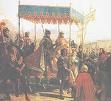



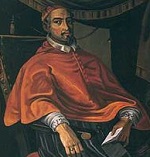



1495 In Jan. Charles VIII of France leads an army of 50K through Pavia, Florence, and Rome into Naples on Feb. 22, and is crowned king of Naples; on Jan. 23 as he is approaching Alfonso II of Naples, spooked by bad dreams he abdicates in favor of his son Ferdinand II (Ferrandino) (1469-96) (until Sept. 7, 1496), then flees to a monastery in Sicily and dies on Dec. 18, leaving his splendid Renaissance Poggio Reale and La Duchesca palaces, which Charles VIII calls "an earthly paradise"; on Mar. 31 fearing for France taking over all of Italy, Maximilian I, Spain, England, Milan, Doge Agostino Barbarigo of Venice and Pope Alexander VI form the Holy League (of Venice) against him, launching the Italian War of 1495 against him (ends 1498), sending an army under Duke Francesco II Gonzaga of Mantua, which forces Charles VIII to beat a hasty retreat from Naples on May 20, arriving in Pisa on June 20; they carry with them the yummy new disease of syphilis, brought by Columbus' men from the New World to Naples via the friendly hookers; responding to the Pisan pleas to expel the Florentines, Charles VIII loses his chance to escape from Italy, and the Holy League tries to block his retreat path to France, resulting in the July 6 Battle of Fornovo (forn for fornication?) 18 mi. SW of Parma (the start of gunpowder warfare?), after which the League of Venice temporarily expels the French from the Italian peninsula back to the Alps; the Albanian mercenaries loot the French baggage instead of keeping the French cut-off, allowing them to escape, and this defeat causes the Holy League to break up; Ferdinand II reconquers Naples, captures the French fleet at Rapallo, and causes the French army to capitulate at Novara on Sept. 24 (sieged since July 1). On Feb. 17 after experiencing the first recorded hurricane near Hispaniola and gathering 1.6K male and female slaves on Haiti, Christopher Columbus' expedition embarks with the healthiest 550, leaving the rest for sale; about 200 Indians die on the voyage and are thrown overboard. In the spring 22-y.-o. well-educated James IV of Scotland assumes personal rule, going on to rule for 18 years with only three parliaments. In Mar. the Imperial Diet of Worms is called by HRE Maximilian I, and proclaims Perpetual Peace, and attempts to modernize the medieval German empire with constitutional reform, setting up an imperial chamber (Reichskammergericht) at Frankfurt (later Speier, then Wetzlar in 1689) along with a court of appeal, also imposing a penny gen. tax. On Apr. 10 Ferdinand II and Isabella I of Spain issue a proclamation permitting all Spaniards to travel to the New World and settle Espaniola. On Oct. 25 king (since Aug. 28, 1481) Joao (John) II the Perfect Prince (b. 1455) dies, and since his son Infante Alfonso (1475-91) died in a horse-riding acceident near the Tagus River on July 13, 1491, his fortunate first cousin the duke of Beja becomes Emanuel (Manuel) I (the Great) (the Fortunate) (1469-1521), king #14 of Portugal (until Dec. 13, 1521), reigning over the country's golden era, when it becomes the first country in world history to acquire a global overseas empire. In Dec. Charles VIII of France disbands his army in Lyons, and his lusty men go on to spread syphilis all over Europe (the French call it the Neapolitan disease, and the Spaniards call it the French disease); Ludovico Sforza brokers a peace between France and the allies, becoming the beginning of the idea of balance of power in European politics; meanwhile Italian physician Jacopo Berengario da Carpi (1460-1530) makes a killing treating syphilis with mercury at hundreds of crowns per patient, paid in advance, getting him an invitation to work for the pope, which he declines in favor of an appointment to Bologna U., where he goes on to pub. "Anatoma Carpi" in 1535, becoming the #1 anatomist in Europe until Andreas Vesalius. Perkin Warbeck unsuccessfully tries to land at Deal, Kent, then moves to the court of James IV of Scotland, who receives him at Stirling and supports his claim to the English throne, and plans an invasion of England in order to force Henry VII to marry his daughter Margaret Tudor to him and make him a star. Otranto is occupied by the French. The Cape Verde Islands become part of the Portuguese empire. Neuchatel N of Lake Neuchatel joins the Swiss Confederation. Ottoman bad boy Jem (brother of Bayezid II) dies in Naples. Sir William Stanley, Henry VII's Lord Chamberlain is executed for complicity in the Warbeck conspiracy. Askia Mohammed goes on pilgrimage from Timbuktu to Mecca carrying 300K pieces of gold. The English Parliament frames a new statute of treasons and an act against vagabonds and beggars. A dry dock is built in Portsmouth, England. King's College in Aberdeen, Scotland (later the U. of Aberdeen) is founded under a papal bull by Bishop William Ephinstone; a royal charter is granted in 1498. Albrecht Durer opens a studio at Nuremberg, and travels to Italy. Desiderius Erasmus goes to the U. of Paris, enrolling in the College de Montaigu under ascetic Dutch priest Jan Standonck (1454-1504), where he becomes a humanist despite the horrible treatment Standonck gives the students, incl. starving them, forcing them to drink diseased water, and frequent whippings to destroy their pride; Standonck learned his stuff from ascetic St. Francis of Paola. U. of Santiago de Compostela in Santiago de Compostela, Galicia, Spain is founded, and approved in 1504 by Pope Julius II; it takes until 1526 for Pope Clement VII to issue a bull for it screation; in 1555 Dominican Cardinal Juan Alvarez de Toledo (1488-1557) begins separating it from purely religious instruction, adding scientific studies. French-Flemish composer Josquin des Pres (1450-1521) is appointed organist and choirmaster at Cambrai Cathedral, going on to become the Beethoven of his day. Nonfiction: Bartholomeus Angelicus, De Proprietatibus Rerum; trans. John de Travisa. Art: Jacopo de Barbari, Portrait of Luca Pacioli. Carlo Crivelli (1430-95), St. Francis with the Blood of Christ. Andrea Mantegna (1431-1506), Holy Family with St. Elizabeth and the Young St. John. Il Perugino (1445-1523), The Entombment. If the savior made her worthy, who indeed are you to reject her? San greal or Sang real? Leonardo da Vinci (1452-1519) begins painting the 15 ft. x 29 ft. chalice-challenged The Last Supper (Il Cenacolo) (L'Ultima Cena) (finished 1498) on the back wall of the refectory of Santa Maria delle Grazie in Milan at the request of Duke Ludovico Sforza and Duchess Beatrice d'Este, employing his unusual disastrous technique of tempera over pitch, gesso, and mastic, which begins to flake in 1517, and which Grigorio Vasari calls "ruined" in 1556; the opposite wall is covered by a Crucifixion fresco, done this year by Giovanni Donato da Montorfano (1450-1503), to which Leonardo adds figures of the Sforza family in tempera; the painting is based on John 13:21: "When Jesus had thus said, he was troubled in spirit, and testified, and said, Verily, verily, I say unto you, that one of you shall betray me"; the tablecloth has a knot in it; there is no cup visible, only dishes, but Christ's left hand points to some bread, and the right hand points to more bread, which is being grabbed by guess who Judas the Betrayer; his swooning "beloved disciple" on his right hand (Mary Magdalene or St. John?) looks like a red-haired woman with perky duckies, her clothes (red robe, blue tunic) are a mirror-image of his (blue robe, red tunic), and her outline fits neatly on his left in a lovey-dovey position, joined hip to hip; woman-hating St. Peter is next to Mary, and in his right hand he holds a mean knife, as if he's threatening her, although it is actually pointing at Bartholomew (leftmost, followed by James the Lesser and Andrew); Judas is 2nd after Mary, the only one to rest his elbow on the table, holding his money bag and getting ready to eat bread to fulfill Christ's prediction; too bad, in 1st cent. Judea people sat on the floor on pillows; too bad that everybody back then painted John as effeminate, incl. him in other paintings; still, the way he makes her a little too effeminate and mates him to Jesus might mean he's trying to fool the uninitiated and send a message, so true believers keep your faith; on Christ's left are TLW, er, Doubting Thomas, James the Greater and Philip, followed by Matthew, Jude Thaddeus and Simon the Zealot, giving four groups of three; in 1652 the monks allow a doorway to be cut in the wall through the center base (later bricked up), destroying the low middle portion; in 1768 a curtain is hung over it for protection, which traps moisture, rotting it faster, plus scratching it as it is being pulled back; after a bunch of damage is done to the painting by restorers, on Aug. 15, 1943 the refectory is bombed, but the painting is protected by sandbags; a modern restoration in 1978-99 by Pinin Brambilla Barcilon restores its original appearance, although some critics claim it was botched; Napoleon's soldiers later use the painting for target practice, throwing rocks and boots at the apostles and defacing Christ's head; luckily many copies are made, esp. the engraving by Raphael Sanzio Morghen (1758-1833) in 1800; a superimposed reverse image allegedly reveals a person holding a baby, while Mary Magdalene vanishes and a Knight Templar in red robe appears on both sides of the table. Peter Vischer the Elder, Gothic Memorial to Archbishop Ernest of Saxony in Magdeburg Cathedral; complete with statues of the Twelve Apostles. Plays: Peter Dorland van Diest, Elckerlijk; basis of the 1510 English morality play "Everyman". Novels: Matteo Mario Boiardo, Orlando Innamorato (posth.); romantic epic. Births: Italian poet-statesman Luigi Alamanni (Alemanni) (d. 1556) on Mar. 6 in Florence; ends up in the French court of Francis I after he plots against Giulio de' Medici of Florence and is forced to flee to Venice, then France after his enemy becomes the pope; inventor of the Italian epigram. English duchess and French queen consort (1514-5) Mary Tudor (d. 1533) on Mar. 18 in Sheen Palace, London; youngest child of Henry VII (1457-1509) and Elizabeth of York (1466-1503); brother of Henry VIII (1491-1547); wife of Louis XII of France, and Charles Brandon, 1st duke of Suffolk (1484-1545); not to be confused with Queen Mary I (1516-58). German humanist astronomer-cartographer Petrus Apianus (Peter Apian) (d. 1552) on Apr. 16 in Leisnig, Saxony; born Peter Bienewitz (Bennewitz), he translates "Biene" (bee) to Latin; educated at the U. of Leipzig. German Bavarian co-duke (1516-45) Louis X (d. 1545) on Sept. 18 in Grunwald; son of Albert IV and Kunigunde of Austria (daughter of HRE Frederick III); brother of William IV (1493-1550). German Lutheran theologian Erhard Schnepf (Schnepff) (d. 1558) on Nov. 1 in Heilbronn. English Protestant historian-playwright (bishop of Ossory, Ireland in 1552-) John Bale (d. 1563) on Nov. 21 in Cove (near Dunwich), Suffolk; educated at Jesus College, Cambridge U. English Lutheran martyr Robert Barnes (d. 1540) in King's Lynn, Norfolk; educated at Cambridge U., and U. of Leuven. Italian painter Polidoro (Caldara) da Caravaggio (d. 1543) (b. 1499?) in Caravaggio; pupil of Maturino of Florence (1490-1528) and Raphael (1483-1520); no relation to Michelangelo Merisi da Caravaggio (1565-1609). German Anabaptist leader Melchior Hoffman (Hofmann) "the Furrier" (d. 1543) in Schwabisch Hall. Spanish conquistador and witch-finder Pascual de Andagoya (d. 1548). Italian Franciscan priest Matteo Bassi (da Bascio) (Matteo Sarafini) (d. 1552) in Molino di Bascio, Montefeltro, Urbino. Spanish viceroy of New Spain #1 (1535-50) and viceroy #3 of Peru (1551-2) Antonio de Mendoza y Pacheco, 4th Count of Tendilla (d. 1552) in Alclala la Real (modern-day Jaen); son of Inigo Lopez de Mendoza y Quinones, 2nd count of Tendilla and Francisco Pacheco. English merchant-financier Sir John Gresham (d. 1556) in Holt, Norfolk; uncle of Sir Thomas Gresham (1519-79); of an old Norman family tracing back to Ralph de Braunche, a knight of William I the Conqueror; founder of Gresham's School. Ottoman scholar (greatest of Suleyman's reign) Ahmed Tashkopruluzade (d. 1561). Spanish architect Diego de Siloe (Siloé) (d. 1563) in Burgos. English cleric and composer William Whytbroke (d. 1568). Deaths: English breed mare Cecily Neville, duchess of York (b. 1415) on May 13 in Berkhamsted Castle, Hertfordshire. Italian painter Cosimo Tura (b. 1430). Italian king Alfonso II of Naples (b. 1448) on Dec. 18 in Messina, Sicily. Portuguese king (1481-95) John II the Perfect (b. 1455) on Oct. 25 in Alvor, Algarve. Ottoman pretender sultan Cem (b. 1459) in Capua, Naples, Italy.





1496 This is a big Millennium Fever (MF) year, with several prophets predicting the End of the World. On Mar. 10 Columbus departs La Isabela for Spain, reaching Portugal on June 8, ending his second voyage in 2 years 8.5 mo.; Romano Pane, a monk who went on the voyage becomes the first to describe the tobacco plant; Columbus writes to Ferdinand and Isabella: "We can send from here, in the name of the Holy Trinity, all the slaves and brazilwood which could be sold. If the information I have is correct, we can sell 4,000 slaves, who will be worth at least 20 millions, and 4,000 hundredweight of brazilwood, which will be worth just as much." In Mar. Henry VII of England commissions John Cabot (1450-98) and his sons Sebastian Cabot (1476-1557) et al. to search for a northerly route to China (Asia), and they leave in the summer on one ship, but run out of supplies and encounter bad weather, turning back. On Apr. 16 duke of Savoy (since 1490) Charles II (b. 1489) dies in Moncalieri after falling by/from his bed, and his granduncle Philip II the Landless (1438-97) unexpectedly inherits the duchy of Savoy (until 1497); too bad, several females in the line of succession dispute his titles to Cyprus and Jerusalem, and he counters by having his 16-y.-o. eldest son Philibert II marry Charles II's 9-y.-o. sister Yolande Louise (1487-99) and just Donald Trump, er, take what he wants - so much for that "landless" rap? On June 3 French Roman Catholic priest Jean Langlois, who had travelled in Europe and picked up humanist ideas interrupts a Mass in Notre Dame Cathedral in Paris, pushing the priest aside and scattering the sacred hosts from his chalice before stomping them and declaring that the idea of Christ's real presence in them is a superstition; after Dutch monk Jan Standonck tries to get him to repent, he is defrocked, the hand that offended the sacred chalice lopped off, and ridden backwards on a donkey to the pig market, where he is burned, allgedly repenting to Standonck in the flames, causing the latter to stay on a strict Lenten fast for life; meanwhile on Oct. 26 the Chapter of Notre Dame Cathedral orders all priests in the diocese to give up any women they are living with, which meets with violent opposition. On June 23 Pope Alexander VI rents out several bldgs. in Rome to be used as bordellos; they continue to operate for almost a cent., just in time to spread syphilis to holy pilgrims? On June 25 Michelangelo (1475-1564) arrives for the first time in Rome, and begins sculpting Bacchus (finished 1497); he stays in Rome until 1501. On Sept. 1 Venetian politician Marin Sanudo (Marino Sanuto) the Younger (1466-1536) begins a Diary for 1496-1535, which is pub. in 1879-1903 - talk about those miserable blues, oh yeah? In Sept. James IV of Scotland and Perkin Warbeck lead a Scottish force into Northumbria, destroying tower houses in the Tweed and Till River Valleys, pissing-off Henry VII and causing him to plan an invasion of Scotland for next year. The first Tomkat marriage wasn't in Hollyweird? On Oct. 20 Hapsburg heir Philip I the Handsome, Duke of Burgundy (1478-1506), son of HRE Maximilian I of Austria and Duchess Mary of Burgundy marries Princess Joanna (Juana) the Mad (1479-1555), heiress of Castile, the daughter of Ferdinand II/V and Isabella I in Lier N of Brussels, allying the Hapsburgs and Trastamaras against the French; they go on to have six children (two boys, four girls), all of whom grow up to be emperors or queens. In Oct. Ferdinand II of Naples dies after regaining control, and his uncle Frederick III of Altamura (-1501) becomes king of Naples (until 1501). On Dec. 25 a decree is signed as part of the betrothal of Manuel I and the Infanta Isabella of Spain, giving the Jews in Portugal until Oct. of next year to convert into "New Christians" or leave - Christian Portugal, love it or leave it? The Education Act requires Scottish nobles to send their sons to learn Latin and law - to be just like William Wallace? The English set up the line of The Pale around Dublin, Ireland, demarcating English rule - the limits of the dog pound? The city of Ciudad Trujillo, capital of La Espańola (modern-day Santo Domingo, capital of the Dominican Repub., pop. 955K/2.9M) is founded, with Columbus' son Diego as its first viceroy, becoming the oldest continuous European settlement in the Americas, the first seat of Spanish govt. in the West Indies, and the oldest cathedral and univ. in the New World. The zloty (pr. zwahty) (Polish "golden"), equal to 30 groszy (groschen) becomes the official currency of Poland. James IV of Scotland dumps mistress Marion Boyd for Margaret Drummond (1475-1502) (until 1497) of Drummond Castle, who bears him daughter Margaret, which James brings to Stirling after she dies. Jesus College at Cambridge U. is founded by Rochester bishop John Alcock (1430-1500) on the ruins of the 12th cent. Benedictine nunnery of St. Mary and St. Radegund; the logo is the cockerel; alumni incl. Canterbury archbishop Thomas Cranmer - he's bragging? John Colet begins lecturing at Oxford U. Nonfiction: Isaac Abravanel (1437-1508), Sources of Salvation. Franchino Gafori (1451-1522), Practica Musica; treatise on musical composition. Luca di Pacioli (1445-1517), De Viribus Quantatis (1496-1508); first printed reference to card tricks, along with instructions on how to juggle, eat fire, and make coins dance; first printed mention of Leonardo da Vinci's left-handedness; founds modern magic and math puzzlemaking?; lost until modern times. Regiomantanus finishes Peurbach's Epitome in Almagestum, based on Greek sources, and pub. it in Venice; it is later used by Nicolaus Copernicus as a source of data. The English word "mop" is first documented (spelled mappe). Art: Gentile Bellini (1427-1507), Procession of the True Cross in Piazza San Marco. Albrecht Durer (1471-1528), Apocalypse of St. John (series of 16 woodcuts) (1496-8). Il Perugino (1445-1523), The Madonna in Glory with the Child and Saints. Plays: Juan del Encina (1469-1529), Cancionero (Easter play). Johann Reuchlin (1455-1522), Sergius (Latin comedy). Births: French queen consort (1514-15) (Roman Catholic) Mary Rose Tudor, Duchess of Suffolk (d. 1533) on Mar. 18 in Richmond Palace; 5th child and 3rd daughter of Henry VII and Elizabeth of York; younger sister of Henry VIII, who names his daughter and warship after her; 3rd wife of Louis XII, and Charles Brandon, 1st duke of Suffolk. Swedish king (1523-60) ("Father of Modern Sweden") Gustav (Gustavus) I Eriksson Vasa (d. 1560) on May 12 in Rydboholm Castle, Uppland; son of Erik Johansson Vasa and Cecilia Mansdotter; founder of the House of Vasa. English lord chancellor Sir Richard Rich, 1st Baron Rich (d. 1567) in July in St. Lawrence Jewry, London; educated at Cambridge U.; knighted in 1533; created baron in 1548. French duke of Guise #1 (1528-50) Claude of Lorraine (d. 1550) on Oct. 20 in Chateau de Conde-sur-Moselle; 2nd son of Duke Rene II of Lorraine (1473-1508). French Renaissance poet Clement Marot (Clément) (d. 1544) on Nov. 23 in Cahors, Quercy; son of Jean Marot (Maris) (Marets) (des Mares) (1463-1523), of Norman descent, poet laureate to Queen Anne of Brittany. Flemish composer Lupus (Wulfard) Hellinck (d. 1541) (b. 1493/4?) in Axel, Terneuzen, Zeeland (Saint-Donatien, Bruges?). Spanish conquistador Hernando de Soto (d. 1542) (b. 1495?) in Jerez de los Caballeros, Badajoz, Extremadua, Castile. Irish lord deputy of Ireland (1540-) Sir Anthony St. Leger (Sellenger) (d. 1559); eldest son of Ralph II St. Leger; grandson of Ralph I St. Leger (-1470); educated at Cambridge U.; knighted in 1539. Dutch (Flemish) painter Lancelot Blondeel (d. 1561). Dutch Mennonite founder (ex-Catholic priest) Menno Simons (Simonszoon) (d. 1561) in Witmarsum, Friesland. Swiss patriot-historian-monk ("the Prisoner of Chillon") Francois Bonivard (Bonnivard) (d. 1570) in Seyssel; born into an old Savoy family; educated in Turin. German composer Johann Walther (d. 1570). English poet Sir Richard Maitland (d. 1586) of Lethington. Deaths: German-born French printer Johann Heynlin (b. 1425) on Mar. 12 in St. Margarethenthal, Germany; dies in a Carthusian monastery. Austrian archduke (1439-90) Sigismund of Austria (d. 1427) on Mar. 4. Portuguese queen Isabella (b. 1428) on Aug. 15. Italian painter Piero del Pollaiolo (b. 1443) in Rome. Italian psychic Milo Giacomo Rambaldi (b. 1444) :). Italian painter Ercole de'Roberti (b. 1451). Italian Naples king (1495-6) Ferdinand II of Naples (b. 1469) on Sept. 7.






1497 Early in the year after a severe famine in Florence, Girolamo Savonarola casts Ovid's Ars Amatoria, along with the works of Dante and several chess sets and other "vanities" into the "bonfire of the vanities", and gets excommunicated for attempting to depose Pope Alexander VI; in May his enemies break into the Santa Maria del Fiore, smear the pulpit with excrement, place the rancid carcass of a donkey on it, and drive nails under the book rest. On Apr. 3 after being rejected by the French dauphin, Margaret of Austria (1480-1530), marries the Infanta of Spain, John (Don Juan) of the Asturias (1478-97), son of Ferdinand II and Isabella I, who dies on Oct. 4; meanwhile Manuel I of Portugal marries Spanish Infanta Isabella (d. 1498). In Apr. the 11K-man army of the duchy of Courland invades the neighboring province of Memel, and after a large Polish force arrives from Polotsk and Welikia to help them, they chase the Teutonic Knights N, after which the Polish army captures Dorpat and gains control of Livonia, then heads S to meet an invasion of Hanseatic forces. On May 2 John Cabot leaves on his first voyage in the Matthew of Bristol, owned by English merchant (of Welsh descent) Richard Amerike (Ameryk) (1445-1503), trying a course far to the N of Columbus', and on June 24 (St. John the Baptist's Day) discovers Cape Breton Island and Newfoundland, becoming the first white Euros to rediscover the mainland of North Am., returning on Aug. 6 with news of fish not gold, so people are unimpressed; since Amerike backed earlier expeditions of Bristol sailors to Newfoundland as far back as 1479, and his family coat of arms is stars and stripes, some later argue that America was named for him not Amerigo Vespucci; the Chinese have a gold mining operaton on Cape Breton Island, that soon eats shoots and leaves? Perkin Warbeck arrives in Cork, Ireland from Scotland, fails to gain support, then lands in Cornwall during the Cornish Rebellion of 1497, led by atty. Thomas Flamank (son of a royal tax collector) and Michael Joseph (Myghal Josep), AKA An Gof (Gael. "blacksmith"), which starts after Parliament attempts to impose a tax for the proposed invasion of Scotland, causing 15K to march unopposed across the English countryside on London; on June 17 they meet the English army at Deptford Bridge at Blackheath, and are defeated, with 2K KIA and the leaders executed by July 22, becoming the last major revolt against Norman rule in Britain since their brazen 1066 takeover - way to go, Liberace? On July 8 Portuguese explorer Vasco da Gama (1460-1524) sails from Lisbon in four ships for a voyage around Africa to India, and rounds the Cape of Good Hope on Nov. 22; his voyage is long enough for scurvy to be discovered. In July James IV unsuccessfully sieges Norham Castle in England; on Sept. 30 after abandoning plans for an invasion, England signs a 7-year truce with Scotland, Henry VII still refusing to lower his daughter to marriage with a mere Scottish king (until 1502). In Sept. after the Poles under John I agree with Moldavian prince Stephen III (his tributary) to stage an expedition to the Black Sea to kick Ottoman butt and restore Moldavia's access to the sea, and Stephen gets incorrect reports that John is planning to replace him with his brother Sigismund I the Old, causing him to pillage Galicia, John I leads 80K freaked-out troops and sieges the Moldavian capital of Suczawa on Sept. 26-Oct. 26, only to run out of supplies after finding out about Stephen's scorched earth tactics; on Oct. 26 after Stephen allows them safe passage back provided they take the same route back (which would have kept them starving), they are ambushed during their retreat on a narrow road in the thickly wooded forest at the Battle of the Cosmin (Kozmin) Forest in N Moldavia (30 mi. N of Suceava), taking them apart for three days, and intercepting a Polish force sent to relieve them at Lentesti on Oct. 29; after Lithuanian grand duke Alexander Jagiello intervenes, the decimated Poles are allowed to escape - who's next on my hit list? On Oct. 14 Perkin Warbeck is captured by royalist troops at Beaulieu Abbey in Hampshire, and imprisoned in the Tower - I'm baack? On Nov. 7 Philip II (b. 1438) dies, and his eldest son Philibert II (the Handsome) (the Good) (1480-1504) becomes duke of Savoy (until Sept. 10, 1504); he and his wife Holande Louise take the titles of king-queen of Cyprus, Jerusalem, and Armenia. On Dec. 25 (Christmas day) Vasco da Gama sights and names the South African country of Natal (Birthday). King Hans of Denmark-Norway invades Sweden to claim his crown from regent Sten Sture, whose peasant army is defeated in two battles; in Nov. Hans is crowned king of Sweden; he then goofs up leads a German mercenary army along with Duke Frederik to subjugate the peasant Repub. of the Ditmarshes (Dithmarschen), but heavy rains and mud cause the heavy cavalry to slip and slide, and the two kings barely escape, humiliating them and causing Sweden to want its independence. The Castilians invade N Africa (until 1510), and take the port of Melilla in NE Morocco - this one's for 711? King John II of Denmark defeats the Swedish army at Brunkeberg, enters Stockholm, and revives the Scandinavian Union. Cesare Borgia's brother Giovanni, duke of Benevento and Gandia is assassinated, and guess who is suspected? Vietnamese emperor (since 1460) Le Thanh-Tong (b. 1442) dies, and a succession of civil and regional wars follows, with eight kings placed on the throne from 1505-27, and six of them assassinated. James IV of Scotland appoints his brother Duke James Stewart of Ross (1476-1504) as archbishop of St. Andrews (until 1504), causing whispers. The town of Sarzanello, Italy constructs the first Ravelin (originally called a Demi-Lune), a triangular fortification standing outside the castle, giving rise to the star fort system of fortifications. About this time the Aztecs under Ahuizotl have their last battle with the Zapotecs in SE Mexico, known for wearing cotton armor. The canton of Grisons (Graubunden) SE of the original nucleus of Uri-Schwyz-Unterwalden joins the Swiss Confederation. Lucrezia Borgia's marriage to Giovanni Sforza is annulled by her daddy the pope on grounds of impotence. A papal bull by Pope Alexander VI launches the Portuguese Inquisition of Marranos (Sp. "swine"), secret Jews forced to feign conversion to Roman Catholicism - to test them make them eat swine flesh? Conradus Celtis introduces humanism to Vienna. Nonfiction: Isaac Abravanel (1437-1508), Salvation of His Anointed. John Alcock (1430-1500), The Hill of Perfection. Art: Filippino Lippi (1457-1504), Meeting of Joachim and Anne at the Golden Gate. Luis Ramirez Lucena (1465-1530), Repeticion de Amores y Arte de Axedres. Michelangelo (1475-1564), The Manchester Madonna (Virgin and Child with St. John and Angels). Births: German Protestant humanist reformer Philip (Philipp) Melanchthon (Schwartzerdt (d. 1560) on Feb. 16 in Bretten (near Karlsruhe); educated at the U. of Heidelberg. Spanish gov. of Chile #1 (1540-7, 1549-53) (one of the least rapacious?) Pedro de Valdivia (d. 1553) on Apr. 17 in Villanueva de la Serena, Vegas Altas, Badajoz, Estremadura; serves under HRE Charles V during the Italian wars of 1527-30, then becomes an officer under Francisco Pizarro in 1535, going on to conquer Chile. Italian comic poet Francesco Berni (d. 1535) (b. 1498?) in Lamporecchio (near Florence), Tuscany; inventor of burlesque lit.? German portraitist-printmaker Hans Holbein the Younger (d. 1543) in Augsburg, Bavaria; son of Hans Holbein the Elder (1465-1524); known for his portraits of Henry VIII of England. English lawyer-historian Edward Halle (Hall) (d. 1547) in Shropshire; educated at Eton School, and King's College, Cambridge U. Italian Roman Catholic Counter-Reformation humanist scholar Agostino Steuco (Eugubinus Steuchus) (d. 1548) in Gubbio, Umbria; coiner of the term "perennial philosophy" (philosophia perennis). Swiss Protestant leader Hans Franz Nageli (Nägeli) (d. 1579) in Aigle. French physician (coiner of the term "physiology") Jean Francois Fernel (d. 1558) in Montdidier. English dramatist John Heywood (d. 1580) in Coventry; educated at Broadgates Hall, Oxford U.; grandfather of John Donne. Deaths: English organist-composer Henry Abyngdon (b. 1418). Italian "Dance of Salome" painter Benozzo Gozzoli (b. 1420). Italian Florentine painter Francesco Botticini (b. 1446) on July 22. Italian duchess of Milan (1494-7) Beatrice d'Este (b. 1475) on Jan. 2 (dies in childbirth). Italian almost-duchess (of Ferrara) Anna Sforza (b. 1476) Dec. 2 (dies in childbirth); her death ends the short bond between the Sforza and d'Este families. Spanish infante Don Juan of the Asturias (b. 1478) on Oct. 4.





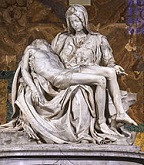
1498 Call or click Progressive.com today? On Apr. 7/8 king (since 1483) Charles VIII of France (b. 1470) dies childless after hitting his head on the lintel of a door at the Chateau d'Amboise, and the 2nd cousin of his father, Duke Louis of Orleans, son of poet Charles of Valois, Duke of Orleans (1394-1465) (who fathered him at age 71 after spending 25 years in captivity in the Tower of London following the 1415 Battle of Agincourt) becomes Louis XII (1462-1515), Valois king #8 of France (only king of the Valois-Orleans branch) (whose portrait bears a striking resemblance to Hollywood actor John Malkovich (1953-)?), his rule proving to be so mild that he gains the title "Father of the People" (Le Pere du Peuple); after being crowned at Rheims Cathedral on Dec. 17, Louis XII divorces his wife Jeanne de France (Charles VIII's sister) and next Jan. 8 marries childless 21-y.-o. Anne of Brittany, widow of Charles VIII, pissing off local know-it-all monk Jan Standonck, who preaches against divorce except in cases of adultery, which gets him two years of exile; Anne wears white at her wedding, creating a fad; the dukedom of Orleans merges into the crown (until 1626); Louis XII adds Milan to his Italian claims, and sets his sights on Duke Ludovico the Moor. Just what the Indians need? On May 20 Portuguese explorer Vasco da Gama (1460-1524) becomes the first European to sail around Africa to reach India as he arrives in Kappakadavu near Calicut (Calcutta) on the Malabar coast, finding that Arab merchants already live there; on Aug. 29 he departs for Portugal, sailing against the monsoon winds, taking 132 days to reach the Arab-run coastal town of Malindi (pop. 6K) next Jan. 7 (vs. 23 days the other way to India), during which time half of his crew dies, and the rest get scurvy; Game Vasco meets with the sheik of Malindi to sign a trade agreement, and hires a guide for his voyage to India, erecting a coral pillar, which survives to modern times; next year the Portuguese establish a trading post in Malinda, followed in 1509 by a custom house, which is abandoned in 1512, although Malindi remains the center of Portuguese activity in E Africa until 1593; the discovery of the sea route to India (bypassing the Muslim-infested Mediterranean) opens the Age of Global Imperialism, with round-trip distances longer than round-the-globe voyages along the equator. On May 23 after a plot to blow him to pieces in his cathedral fails, followed by an armed assault and siege on his Convent of San Marco supported by the govt., hated Dominican friar and demagogue Girolamo Savonarola (b. 1452) is hung along with two other friars, then burned at the stake in the Piazza Signoria in front of the Palazzo Vecchio in Florence before a capacity crowd, and his ashes scattered in the river to prevent the collection of holy relics. Pale Euros in search of the perfect tan? On May 30 Christopher Columbus leaves Sanlucar, Spain on his Third Voyage with six ships, arriving on July 31 on Trinidad (Sp. "Trinity") (named after three mountains on the SE side) (the Arawaks and Caribs call it "land of the hummingbird") off the coast of Venezuela, then discovering the sister island of Tobago (Indian name Tobaco, from the tobacco grown there) 20 mi. to the NE (later believed to be the site of Daniel Defoe's "Robinson Crusoe"), then the island of Grenada (not colonized); he then visits the coast of South Am., sighting the mouth of the Orinoco River, believing it to be flowing out of the Garden of Eden; he arrives at Hispaniola on Aug. 19. In May after receiving honors from Henry VII along with new letters patent in Feb., Venice-born London explorer John Cabot begins his Second Voyage with five ships, travelling hundreds of miles down the ragged E coast of North Am. incl. Labrador and Newfoundland, after which one ship returns damaged by a storm; he either wrecks near Grates Cove and dies, or returns in spring 1500 and dies 4 mo. later. In Aug. Cesare Borgia resigns as cardinal; in Nov. he is sent to France as papal legate to convey to Louis XII an annulment of his marriage to his consort Jeanne, causing Louis XII to reward him with the duchy of Valentinois, 20K livres a year, and a 100-man bodyguard; meanwhile Lucrezia Borgia, declared officially to still be a virgin marries 17-y.-o. Don Alfonso, Prince of Aragon (1481-1500), AKA the Duke of Bisceglie, illegitimate son of Alfonso II of Naples, as part of a plot by Cesare Borgia to marry Carlotta, daughter of King Frederick III of Naples; Cesare Borgia becomes gov. of Spoleto. Perkin Warbeck makes a public confession of treason, and is locked up in the Tower of London. Duke Albert of Saxony is rewarded for his services in the Netherlands by HRE Maximilian I by being created hereditary gov. (potestat) of Friesland, but after subduing most of it and returning to Saxony, only to be faced with another rebellion, he dies in 1500, leaving his subjects with the debt for it all. The Magdeburg Law (Rights) are passed, regulating the degree of internal autonomy within cities and villages granted by a local ruler, becoming the most important set of medieval Germanic city laws; it spurs the development of thousands and cities and villages incl. Biecz, Frysztak, Sandomierz, Krakow, Kurow, Minsk, Polotsk, Poznan, Ropczyce, Lodz, Wroclaw, Szczecin, Zlotoryja, Vilnius, Trakai, Kaunas, Hrodna, Kiev, Lviv, Czernowitz (modern-day Chernivtsi in Ukraine), Brody, Lutsk, Volodymyr-Volynskyi, Sanok, Sniatyn, Nizhyn, as well as Bardejov, Humenne (Humenné) and Krupina in modern-day Slovakia. Well-laid James IV of Scotland dumps mistress Margaret Drummond for Janet Kennedy (1479-1545), former mistress of Archibald, 5th earl of Angus, who is installed in Darnaway Castle, bearing illegitimate son James Stewart, 1st Earl of Moray (1500-44). The U. of Palermo in Italy is founded. Desiderius Erasmus visits England for the first time, and begins teaching at Oxford, meeting up with humanist churchman John Colet, who turns him on to Greek, which he spends three years mastering. The first German pawnshop opens in Nuremberg. Donato Bramante leaves Milan after 28 years (since 1472), and spends the rest of his life working in Rome (until 1514). Architecture: St. Mary the Virgin in Oxford (begun 1300) is completed. Ft. Mehrangarh in Jodhpur, India is built by Rao Jodha (1416-89). Inventions: Gun barrel rifling is invented in Germany. Nonfiction: Anon., Novo Receptario (Florence); the first pharmacopeia? Isaac Abravanel (1437-1508), Proclaiming Salvation (Feb. 26). Boethius (480-524), Opera; his ancient Roman treatise on music is pub. in Venice by Johannes and Gregorius de Gregoriis (1488-9). Philippe de Comines (1445-1509), Memoires; causes him to become known as the "French Macchiavelli". Polydore Vergil (1470-1557), Liber Proverbiorum (Proverbiorum Libellus) (Adagia) (Apr.) (Venice); first pub. collection of Latin proverbs; dedicated to Duke Guido Ubaldo of Urbino. Art: Michelangelo (1475-1564), Pieta (Pietŕ) (sculpture) (Rome); larger-than-life-sized; depicts the lifeless Christ in the lap of the mourning Virgin Mary; sculpts himself as Nicodemus; after hearing a group of sightseers erroneously attribute his work to another sculptor, he chisels his name into it, but regrets it later and never signs another work - I'll never be a cicerone? Plays: The Aldine Press of Venice pub. the comedies of Aristophanes. Johann Reuchlin (1455-1522), Henno (Latin comedy). Poetry: Hinrek van Alkmar, Reinke de Vos (Dutch animal epic). Births: French cardinal (1518-) Jean de Lorraine (d. 1550) on Apr. 9 in Bar-le-Duc, Lorraine; 3rd son of Rene II, duke of Lorraine (1451-1508); and Philipa of Guelders (1467-1547); uncle of Nicholas of Lorraine; friend of Francis I; richest prelate in France. Portuguese infante Miguel da Paz, Prince of Portugal and Asturias (d. 1500) on Aug. 23 in Zaragoza; son of Manuel I )1469-1521) and 1st wife Isabella of Aragon, princess of Asturias (1470-98). Spanish Augustian friar-explorer Andres (Andrés) de Urdaneta y Cerain (d. 1568) on Nov. 30 in Ordizia, Gipuzkoa, Castile. German Luthern theologian Andreas Osiander (Hosemann) (d. 1552) on Dec. 19 in Ansbach, Bavaria. Italian humanist physician Giovanni Battista Monte (Johannes Baptista Montanus) (d. 1551) in Verona; friend of Andreas Vesalius; teacher of John Caius and Valentinus Lublinus. Italian Renaissance painter Il Moretto (Alessandro Bonvicino) (d. 1554) in Brescia. Italian High Renaissance ms. illuminator and painter Giorgio Giulio Clovio (Juraj Julije Klovic) (d. 1578) in Grizane, Croatia; immigrates to Italy at age 18; friend of El Greco and Pieter Bruegel the Elder. Deaths: Spanish Grand Inquisitor Torquemada (b. 1420) on Sept. 16 in Avila - eyes wide shut, running to my brain? Italian artist Antonio del Pollaiuolo (d. 1429) on Feb. 4 in Rome; dies rich after finishing the mausoleum of Pope Innocent VII. Bavarian painter-woodcarver Michael Pacher (b. 1435). Italian architect-sculptor Benedetto da Majano (b. 1442) on May 24 in Florence. Italian religious reformer Girolamo Savonarola (b. 1452) on May 23 in Rome (executed). German plus-minus mathematician Johann Widmann (b. 1462). French king (1483-98) Charles VIII the Affable (b. 1470) on Apr. 6/7 in Amboise. Italian explorer (in England's service) John Cabot (b. 1474) near Grates Cove. Spanish Infanta Isabella (b. 1498) (dies during childbirth). Spanish finance minister (baptized Jew) Luis de Santangel (b. ?) in Avila; born in Valencia.
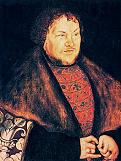



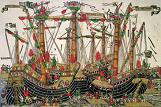




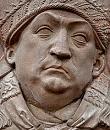
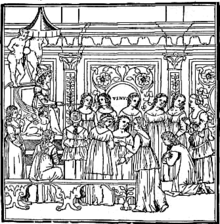

1499 A mathematician in Tubingen, Germany foretells a coming planetary alignment in 1524, claiming it will bring a worldwide flood. French marshal Gian-Jacopo Trivulzio utters the immortal soundbyte: "To wage war, three things are necessary: money, money, and yet more money." On Jan. 8 Louis XII marries Charles VIII's still-tight (22) widow Anne of Brittany, insuring the union of Brittany with France to keep it whole; he then asserts French claims in Italy and, backed by Venice, invades and captures Milan (Sept. 10) and Genoa, and expels Duke Ludovico Sforza from Milan, causing him to flee to the Tirol (Tyrol), and starting the Second Italian War (Louis XII's Italian War) (War Over Naples) (ends 1504); ex-cardinal Cesare Borgia marries the king of Navarre's sister and accompanies Louis XII to Italy, unsuccessfully attempting the conquest of Romagna for the Holy See; patronless Leonardo da Vinci makes friends with the French, and leaves Milan for Mantua, where he makes a Drawing of Isabella d'Este, wife of the duke of Mantua, then visits Venice briefly before returning to Florence by next spring; a colossal Bronze Statue of Ludovico Sforza's Late Father Astride a Horse is discontinued, and the 79 tons of bronze used for cannon; a full-scale clay model of the riderless horse is broken to pieces by French soldiers using it for archery practice. On Jan. 9 Brandenburg elector (since 1486) John II Cicero (b. 1455) dies, and his eldest son Joachim I Nestor (1484-1535) becomes prince-elector #5 of Brandenburg (until July 11, 1535), becoming known for high-pressure sales tactics for indulgences, causing Roman Catholic priest Martin Luther to launch his first attack against his brother Archbishop Albert first. In Jan. the fortress of Memel falls to the army of Courland, which is down to 8.6K men, during which time a 5K-man Teutonic Order sieges Riga, and after Courland raises the siege, they sign a peace in Dec. In Jan. their relations going downhill since 1492, Doge Agostino Barbarino and Ottoman sultan Bayezid II begin the Second (Fourth) Ottoman-Venetian War (ends 1503), causing Venetian merchants in Constantinople to be arrested while Bosnian troops invade Dalmatia and siege Zara, and Ottoman adm. Kemal Reis (1451-1511) (paternal uncle of Piri Reis) sets sail from Constantinople itching to try out the new expanded fleet; on Aug. 12-25 the naval Battle of Zonchio (Sapienza) (First Battle of Lepanto) (first naval battle in history where cannons are used on ships) in the Ionian Sea is a V for the 67-galley Ottoman force over the 47-galley Venetian force under Antonio Grimani (1434-1523), the tide turning when two Venetian carracks attempt to board the command ship of Burak Reis, and he sets all three afire, hurting Venetian morale, after which the Italian naval base of Lepanto surrenders; after the sultan gives 10 of the captured galleys to him, Kemal Reis stations his fleet on Cefalonia Island between Oct.-Dec., with the goal of taking the remaining bases of Modone and Corone; in Dec. the Venetians recapture Lepanto, and Reis sails right back and rerecaptures it. On Apr. 6 after being sent by Manuel I of Portugal, Italian explorer Amerigo Vespucci (1454-1512) allegedly reaches the South Am. mainland, then returns to Cadiz on Oct. 15. On May 16 Alonzo de Hojeda (Alonso de Ojeda) (1468-1515) (cmdr.), Amerigo Vespucci (1451-1512) (pilot), and Juan de la Cosa (the Biscayan) (1450-1510) (navigator and cartographer, co-discoverer of America with Columbus and owner of the Santa Maria) leave Cadiz, Spain, and sail to the mouth of the Amazon River, discovering Curacao (Curaçao) (40 mi. N of Venezuela) and Bonaire on July 29, and Lake Maracaibo on Aug. 9, naming Venezuela (Sp. "little Venice") for Venice because the inhabitants live in houses built over the water; they also explore the Arawak island of Aruba 18 mi. off the coast of Venezuela; Ojeda becomes the Neil Armstrong of (first white Euro to set foot on) the South Am. continent; after discovering the Amazon River, they sail to Cape de la Vela, then reach Espanola with slaves and pearls, only to be accused of trespassing on Columbus' turf; Vespucci observes Venezuelan natives chewing coca leaves, writing: "They kept this herb in their mouths to stave off thirst." In July John Macdonald of Islay, lord of the Isles in Scotland (since 1476) is hanged along with his sons by crown agent Archibald Campbell, 2nd Earl of Argyll (-1513) for failure to pay royal rents, causing a revolt led by Donald (Domhnall) Dubh (-1545), which causes Alexander Gordon, 3rd Earl of Huntly (1463-1524) to replace Archibald as royal lt. of the Highlands to simmer him down. On Sept. 22 after HRE Maximilian I attempts to abrogate Swiss govt. rights, causing the Swabian War between the Swabian League and the Swiss Confederation in Jan. in N and E Switzerland, which is won by the Swiss, the Treaty (Peace) of Basel is signed, establishing Swiss independence. In Sept. after two of his ships precede him in July-Aug., Vasco da Gama arrives in Lisbon, and is welcomed as a hero and awarded the title "Admiral of the Indian Seas" along with Dom (lord) by Manuel I, the latter title also being awarded to his siblings and their descendants; meanwhile Venice is shocked by news of a new sea route to India threatening its commercial supremacy, causing it to eventually begin building an inland empire (Padua, Verona, Cremona et al.) - I still got gama? In Oct. after sailing with Christopher Columbus on his 2nd Voyage and promising to give the Spanish crown one-fourth of his net profits, Spanish explorer Rodrigo de Bastidas (1460-1527) leaves Cadiz for the New World, going on to map the N coast of South Am., discover Panama, and found the city of Santa Marta - we can laugh even while having problems, amen? On Nov. 23 Perkin Warbeck (b. 1474) is executed for continuing to plot against Henry VII after capture and planning an escape from the Tower. In Dec. Columbus veteran Vicente Yanez Pinzon sails from Spain with four caravels for the New World. In Dec. after failing to convince them by reason, Spanish Franciscan inquisitor-gen. Cardinal Francisco Jimenez de Cisneros (1436-1517) (who reformed the Franciscan order in Spain, making them give up their concubines, causing 400 monks and friars to flee with them to Africa and convert to Islam, making him only more determined) begins forced mass conversions and baptisms of Mudejars (Moors remaining in Spain) in Granada, fomenting the First Rebellion of the Alpujarras (ends Apr. 1501) (2nd in 1568-70). Spanish soldier Francisco de Bobadilla (-1502) is appointed to replace Christopher Columbus as viceroy of the West Indies (which they still call the Indies). 12-y.-o. Yolande Louise of Savoy (b. 1487) dies childless, and her first cousin Princess Charlotte of Naples (1479-1506) (only child of Federigo IV of Naples and Anna of Savoy, eldest daughter of Duke Amadeus IX of Savoy and Yolande of Valis, daughter of Charles VII of France) claims Cyprus and Jerusalem, but Philibert II the Handsome of Savoy tells her to stuff it, and plots to marry his handsome self into the Hapsburg family. The Jews are expelled from Nuremberg. 12-y.-o. pre-teen messiah Ismail emerges from exile in Lanjan in Iran, and travels to the regional center of Ardabil in NW Iran to assemble an army of 7K badass Shiites from E Anatolia, Syria and Iraq, which become known as Qizilbash (Kizilbash) ("Red Heads") for their distinct red headwear with 12 points to indicate adherence to the Twelve Imans, then begins a campaign against his daddy's killers the bad White Sheep based in Tabriz. Gold mines are discovered in Santo Domingo, giving the Spaniards a reason not to slaughter the remaining natives like pigs, because they can be worked like mangy dogs to death instead? A bear is put on trial for ravishing some German villages; his defense atty. has the proceedings delayed for over a week arguing that it has a right to be tried by its peers, a jury of bears - bears have more rights than black people? The U. of Oxford begins issuing degrees in music. After Pope Alexander VI issues a papal bull on Apr. 13, Spanish Cardinal Francisco Jimenez (Ximenes) de Cisneros (1436-1517) founds the U. of Alcala (Alcalá) de Henares in Alcala de Henares, Spain on the Henares River E of Madrid as Completense U. (named after the 1st cent. B.C.E. town of Complutum), becoming the first city designed solely as the seat of a univ., where he and his scholars Hernan Nunez de Toledo y Guzman (Hernán Núńez de Toledo y Guzmán) (1475-1553), Diego Lopez de Zuniga et al. begin a big Bible trans. project in 1502, finishing the New Testament in 1514 and the Old Testament in 1517, after which bureaucratic machinery takes until 1520 for Pope Leo X to sanction it, and more foulups hold it up until 1522; Miguel de Cervantes is born there in 1547; the univ. moves to Madrid in 1836, then moves back in the 1970s. Hungary begins producing antimony (which, like water, expands as it cools, making it useful for making sharp-outlined castings) for export. The first political cartoons appear, about the French-Italian war. Ming the Clam is born, becoming the world's oldest living creature by 2006, when it is fished from an Icelandic seabed and killed by scientists trying to determine its age. Gatchina (Khotchino) 28 mi. of modern-day St. Petersburg is first mentioned as belonging to Novgorod the Great. Giggleswick School in Giggleswick (near Settle), North Yorkshire England is founded by Rev. James Carr. The famous beer hall U Fleku is founded in Prague, Czech. Architecture: Bath Abbey in England (begun 1405) is completed. Fiction: Francesco Colonna (1433-1527), The Dream of Poliphilus (Hypnerotomachia Poliphili) (Gk. "hypnos" + "eros" + "mache" = sleep + love + fight)(Poliphilo's Strife of Love in a Dream) (incunable) (Venice); a romance which describes a mythical world filled with fountains where Poliphilo pursues his love Polia, finally getting a kiss by the Fountain of Venus, only to wake up from his dream, causing grand fountains to become a rage in Italy in the 16th-17th cents. Willibald Pirckheimer (1470-1530), Bellum Helveticum. Johannes Trithemius (1462-1516), Steganographia (3 vols.); pub. in Frankfurt in 1606; too bad, its coverstory of magic and spirits causes it to be placed on the Roman Catholic Prohibited Index until 1900. Polydore Vergil (1470-1557), De Inventoribus Rerum (7 vols.) (Paris); internat. bestseller, making him a star; the origin of all things, incl. the gods, the world, marriage, and religion; dedicated to Ludovicus Odaxius of Urbino; vols. 3-7 are added to shut the Christian community up with origins of Christian institutions; vol. #8 is added in 1521; criticizes indulgences and scholasticism. Art: Albrecht Durer (1471-1528), Portrait of Oswald Krell. Giorgione (1477-1510), Portrait of a Young Man. Il Perugino (1445-1523), Audience Hall of the Cambio in Perugia. Luca Signorelli (1445-1523), Frescoes at Orvieto Cathedral (1499-1504). Veit Stoss (1438-1533), Last Supper; Christ on the Mount of Olives; Taking of Christ (stone reliefs in the Sebalduskirche in Nuremberg). Plays: Henry Medwall (1462-1522), Fulgens and Lucrece: the first purely secular English play. Novels: Fernando de Rojas (1475-1538), Celestina, or the Tragicomedy of Calisto and Melibea (verse novel); how noble lovers Caliso and Melibea carry on amid the night life of Spain with the help of the bawd Celestina, and all come to disaster; #2 Spanish novel of the 16th-17th cent. after Don Quixote. Births: Spanish mystic priest-preacher (Roman Catholic) ("the Apostle of Andalusia") (St.) John of (Juan de) Avila (Ávila) (d. 1569) on Jan. 6 in Almodovar del Campo, Ciudad Real; of Jewish converso descent; educated at the U. of Salamanca, and U. of Alcala de Henares; feast day: May 10. German freethinker-humanist writer Sebastian Franck (Franck von Word) (d. 1543) on Jan. 20 in Donauworth, Bavaria. German celeb ("die Lutherin") Katharina von Bora (d. 1552) near Pegau, Saxony; wife (1525-46) of Martin Luther (1483-1546). French queen and breed mare Claude, Duchess of Brittany (d. 1524) on Oct. 24 in Romorantin; eldest daughter of Louis XII and Anne of Brittany; 1st wife of Francis I; mother of Henry II. French noble mistress (of Henri II) Diane de Poitiers (d. 1566) on Sept. 3 in Saint-Vallier, Drome. Spanish (Portuguese?) explorer Juan Rodriguez Cabrillo (d. 1543) in Palma del Rio, Cordoba. English "Defence of Good Women" scholar-diplomat Sir Thomas Elyot (d. 1546); son of Sir Richard Elyot and 1st wife Alice de la Mare. Swiss humanist scholar Thomas Platter the Elder (d. 1582) on Feb. 10 in Grachen, Valais; father of Felix Platter (1536-1614) and Thomas Platter the Younger (1574-1628). German Protestant theologian-reformer Johann (Johannes) Brenz (d. 1570) on June 24 in Weil der Stadt (20 mi. W of Stuttgart); educated at the U. of Heidelbrg. Franciscan friar ("Father of Modern Ethnography") Bernardino de Sahagun (Sahagún) (Ribeira) (d. 1590) in Sahagun, Leon, Spain; educated at the U. of Salamanca. Deaths: Italian Neoplatonic philosopher Marsilio Ficino (b. 1433) on Oct. 1 in Careggi, Repub. of Florence; leaves Theologia Platonica de Immortalitate Animae (pub. 1525). German prince-elector #4 of Brandenburg (1486-99) John II Cicero (b. 1455) on Jan. 9 in Arneburg Castle.